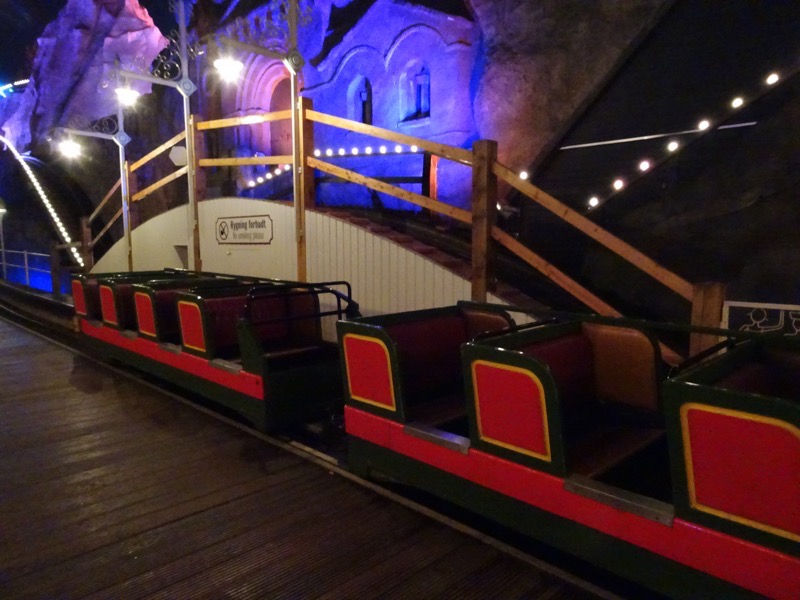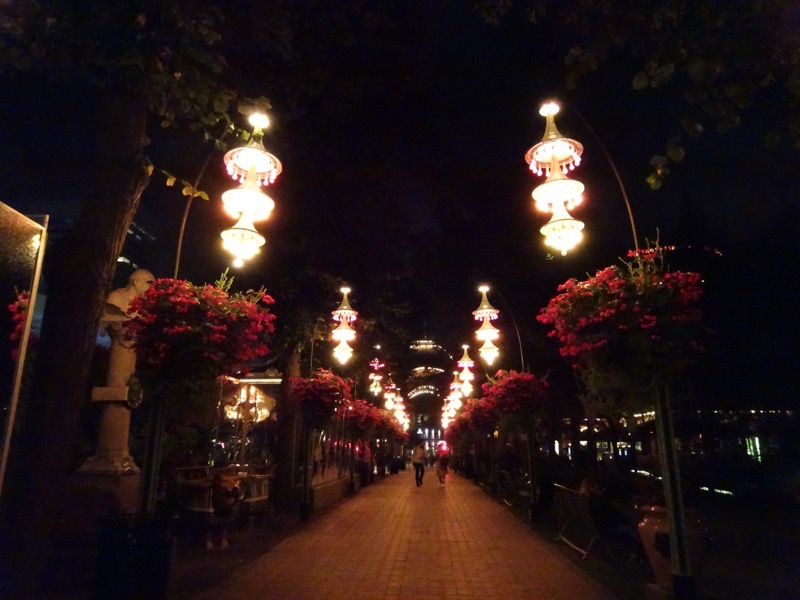This morning Copenhagen turned on another delightful summer’s day – overcast and dreary, with the promise of patchy light rain all day. So we jumped on a train for about 30 minutes, and head out of the city center to Roskilde to see the Vikingskibsmuseet.
The Viking Ship Museum in Roskilde is Denmarks’ national museum for ships, boat building and seafaring in the prehistoric and Medieval periods. The museum centers around a permanent exhibition of five extant Viking ships that were excavated not far from the museum site in the 1960s, and they conduct research and education in the fields of maritime archaeology.
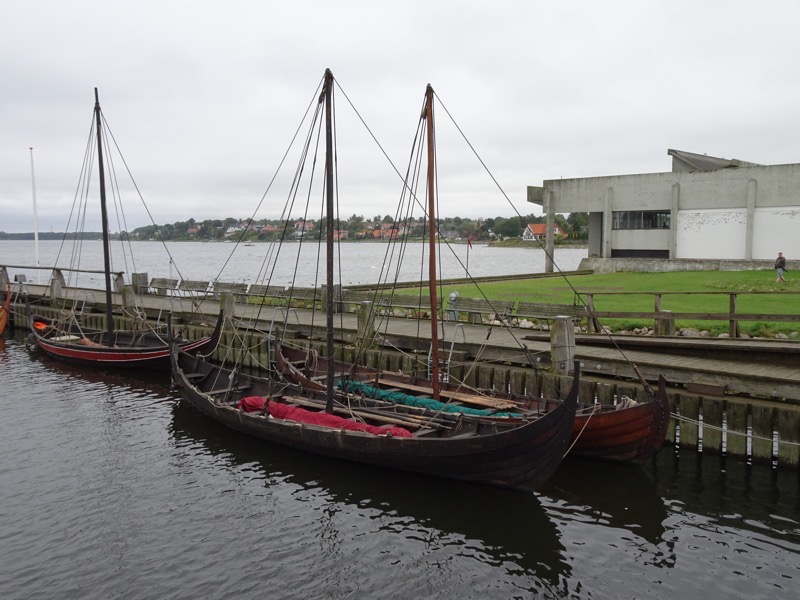 The Viking Ship Museum is an active experimental archaeology research centre, with over thirty years experience in building and sailing, reconstructions of archaeological ship finds. It is a multi-disciplinary working environment with a strong focus on research and education, where experts from many different fields collaborate in several different workshops towards reconstructions.
The Viking Ship Museum is an active experimental archaeology research centre, with over thirty years experience in building and sailing, reconstructions of archaeological ship finds. It is a multi-disciplinary working environment with a strong focus on research and education, where experts from many different fields collaborate in several different workshops towards reconstructions.
ROPE MAKING WORKSHOP
The first, most noticeable, aspect of the rope makers workshop is the smell – it has a distinctively strong woods/organic aroma from the various rope making materials. 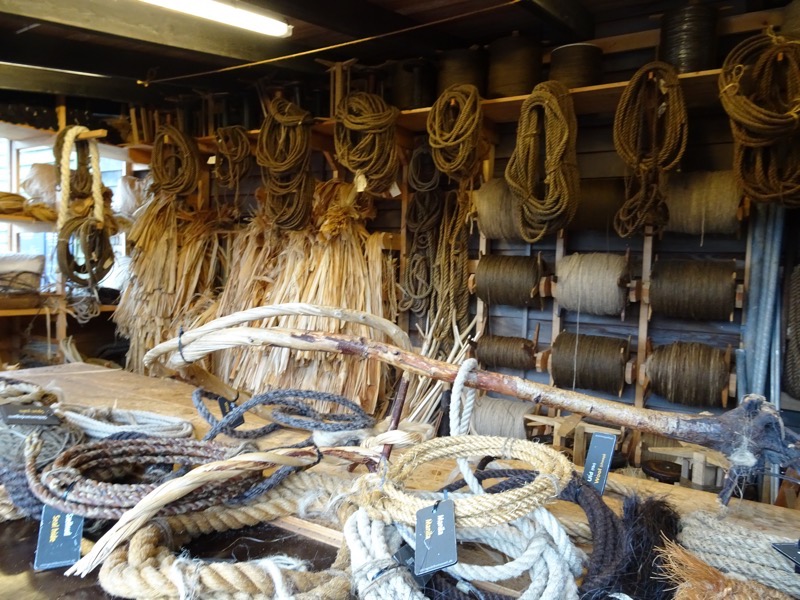 Flax hanging to dry.
Flax hanging to dry.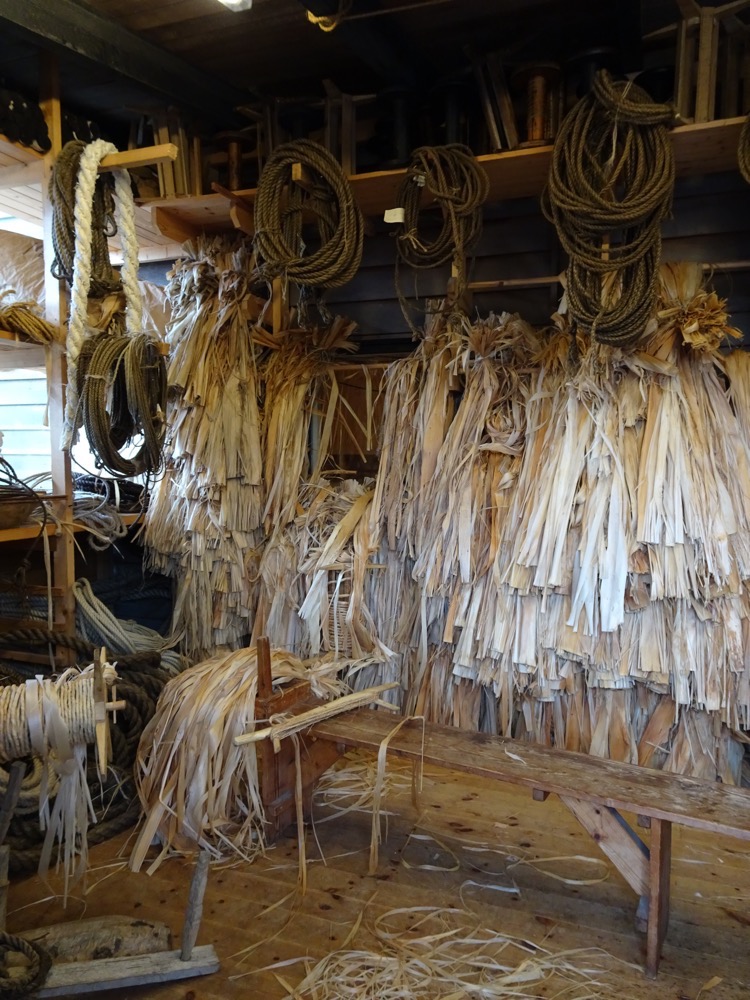 FInished rope lengths that will be used in Viking ship reconstructions.
FInished rope lengths that will be used in Viking ship reconstructions.
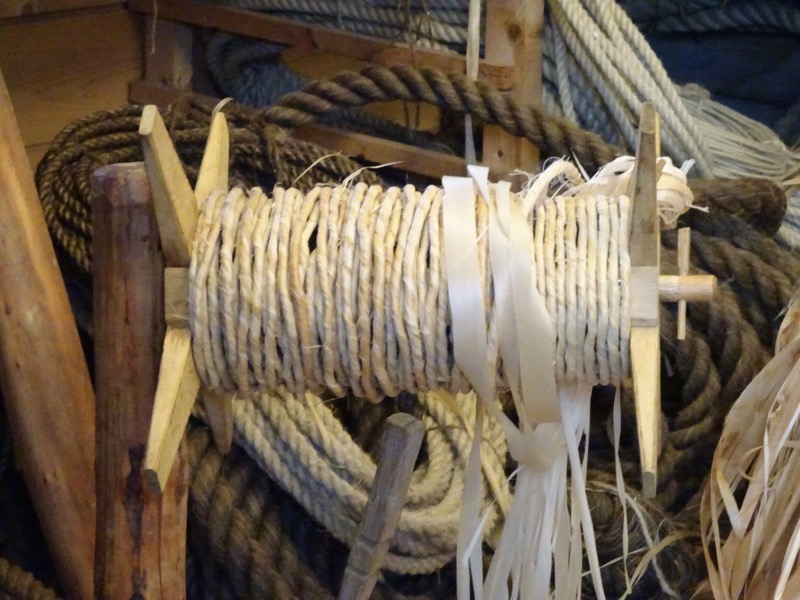 Rope making equipment.
Rope making equipment.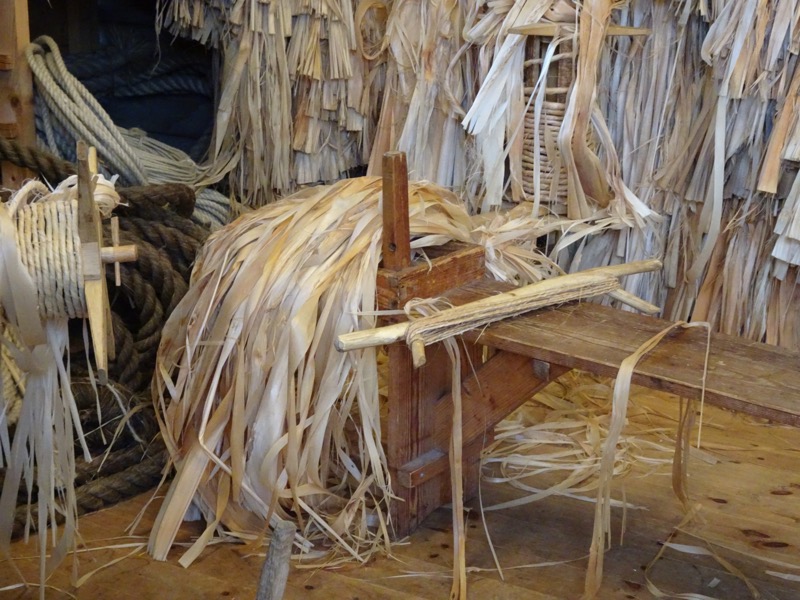 Ropes were made of many differing materials, from bull rushes and flax to elk and seal hides. Most ropes were tarred to retard fungus and bacteria and to protect from weather and deterioration.
Ropes were made of many differing materials, from bull rushes and flax to elk and seal hides. Most ropes were tarred to retard fungus and bacteria and to protect from weather and deterioration.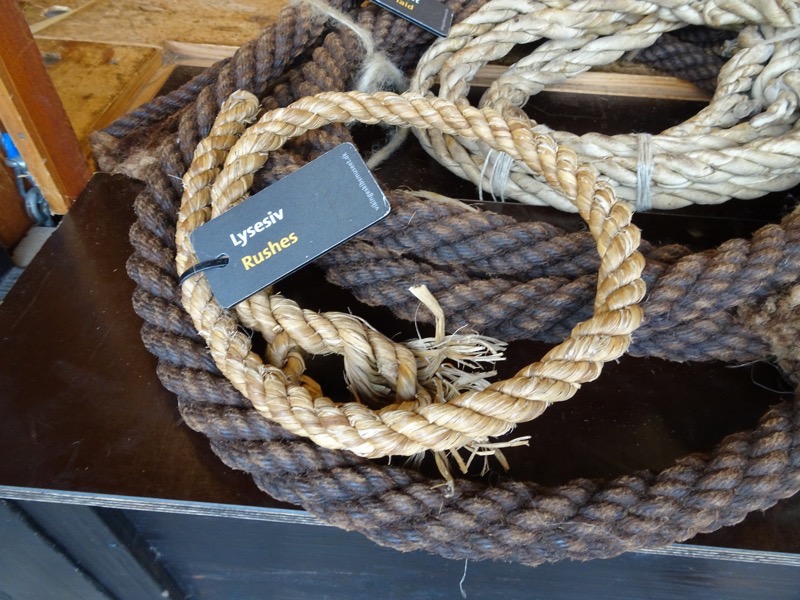
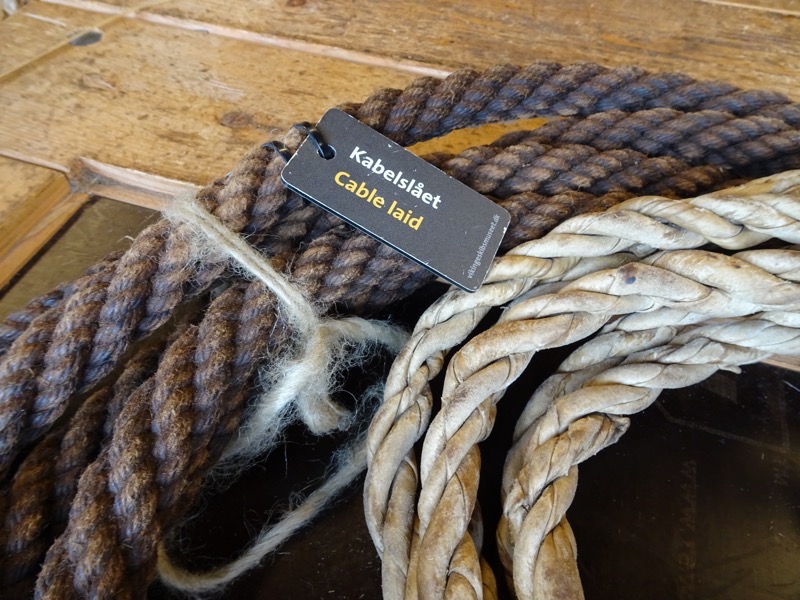 The elk and seal hide ropes had a natural waxy waterproof texture.
The elk and seal hide ropes had a natural waxy waterproof texture.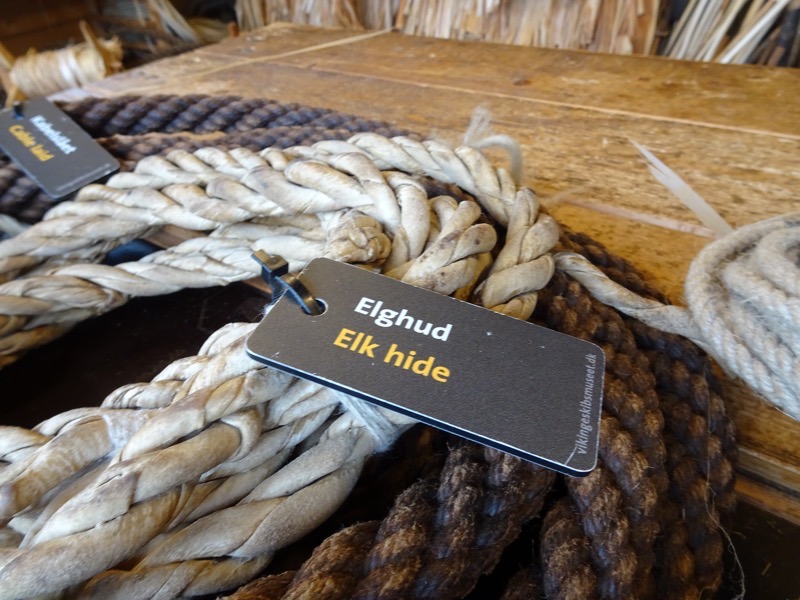
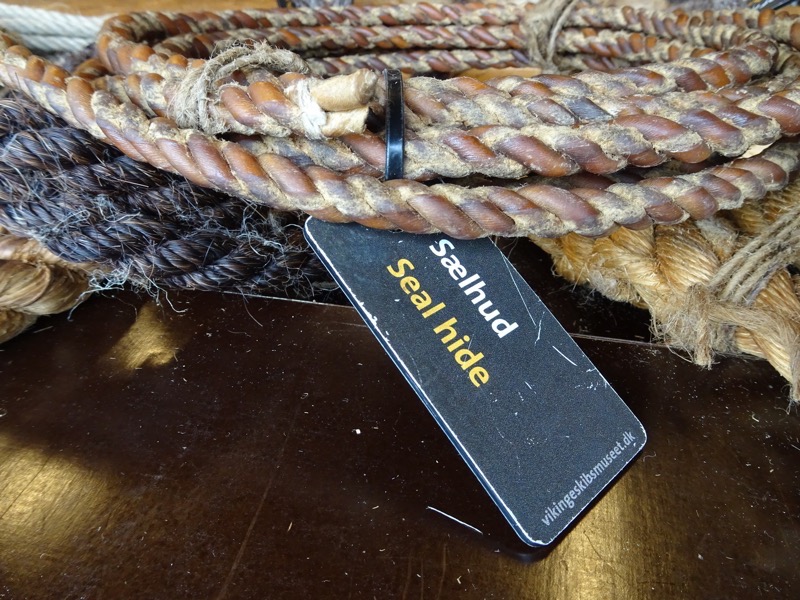
SHIPBUILDING WORKSHOP
A little further into the complex is a ship building workshop where the master ship builders are constantly working on recreating and perfecting another Viking ship.  Clamps to hold timbers during construction.
Clamps to hold timbers during construction.

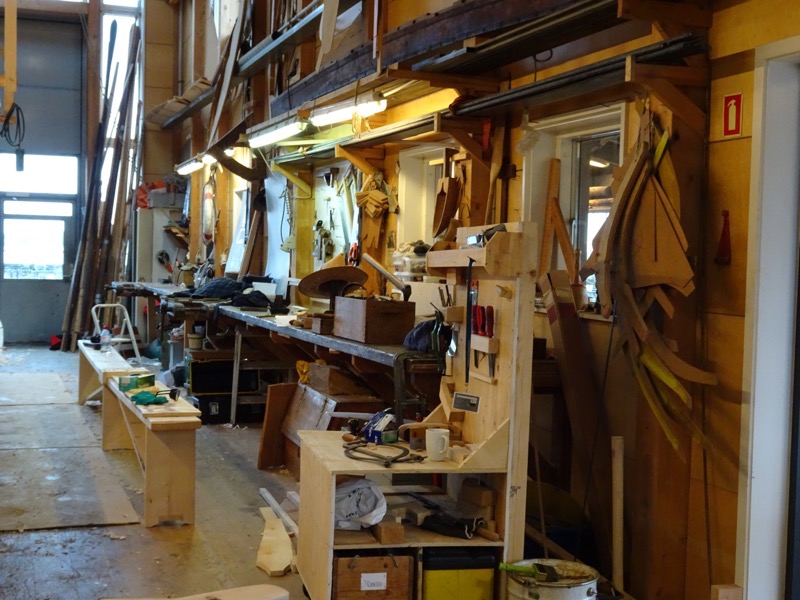
 The workshop may look reasonably modern with modern lighting in a modern building, but all the tools used are replicas of period tools that would have been used during the Viking age to build ships.
The workshop may look reasonably modern with modern lighting in a modern building, but all the tools used are replicas of period tools that would have been used during the Viking age to build ships.
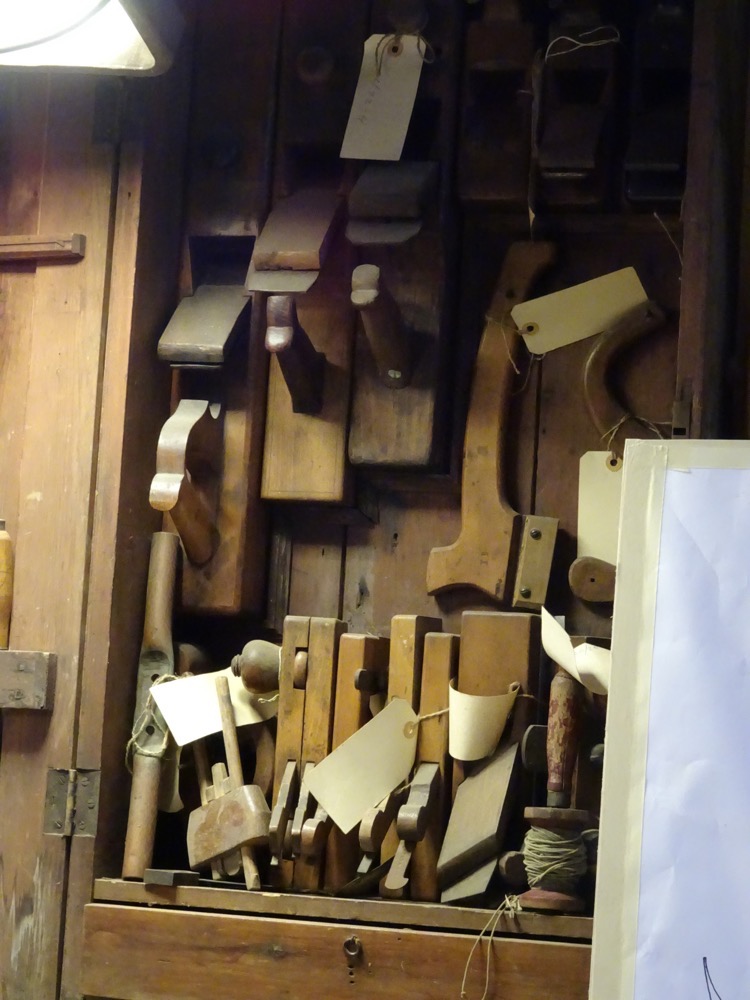
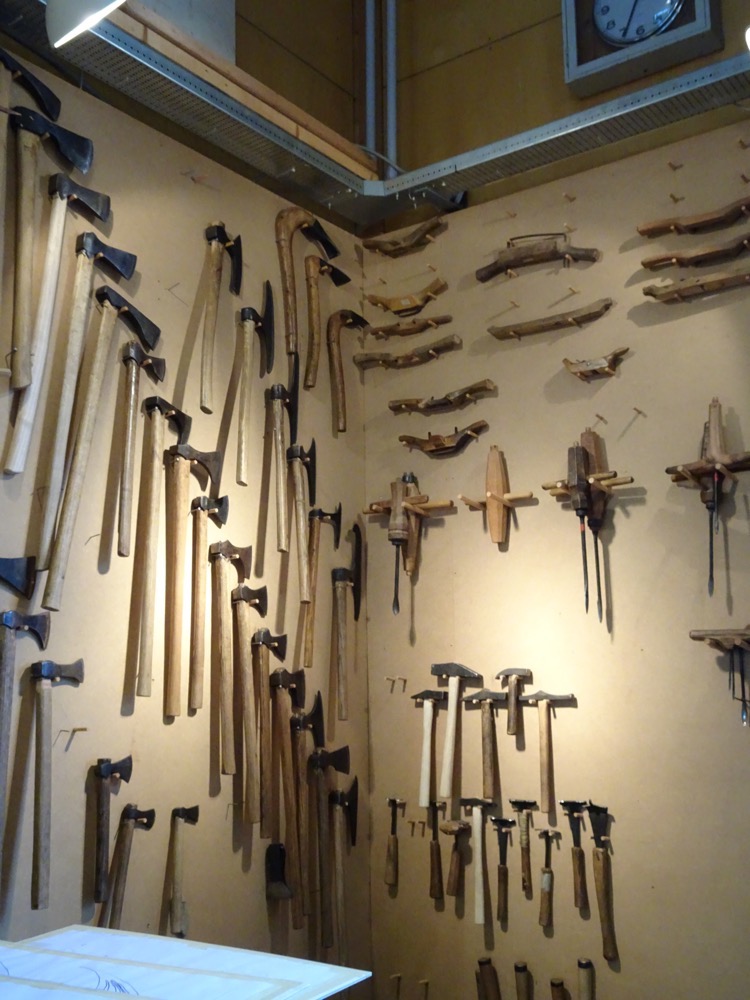

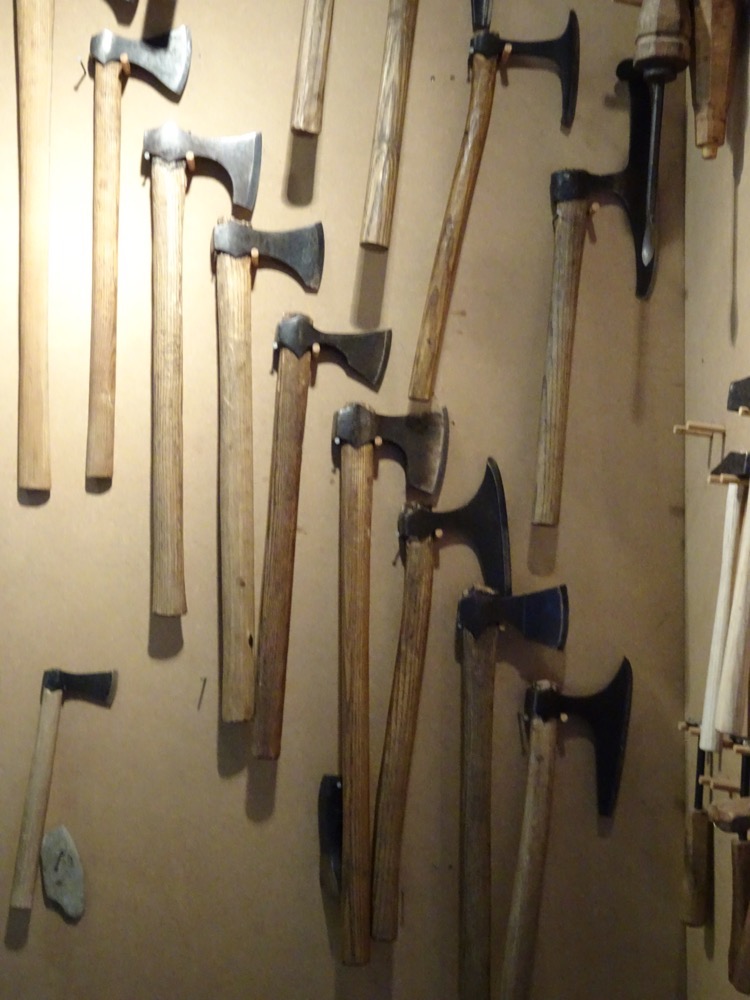
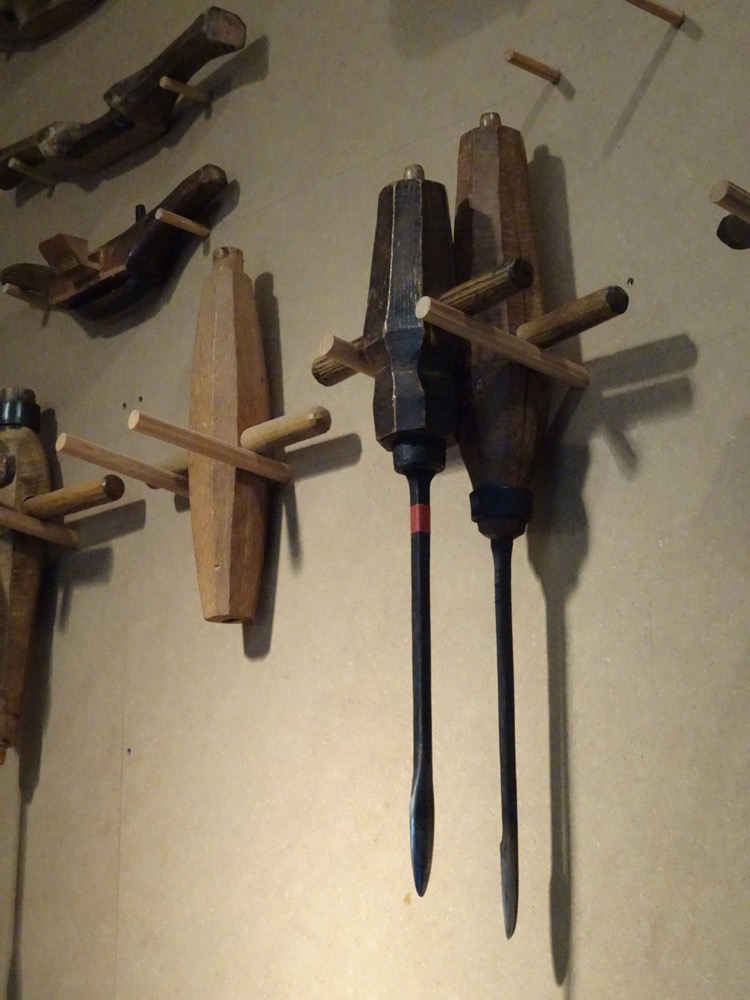
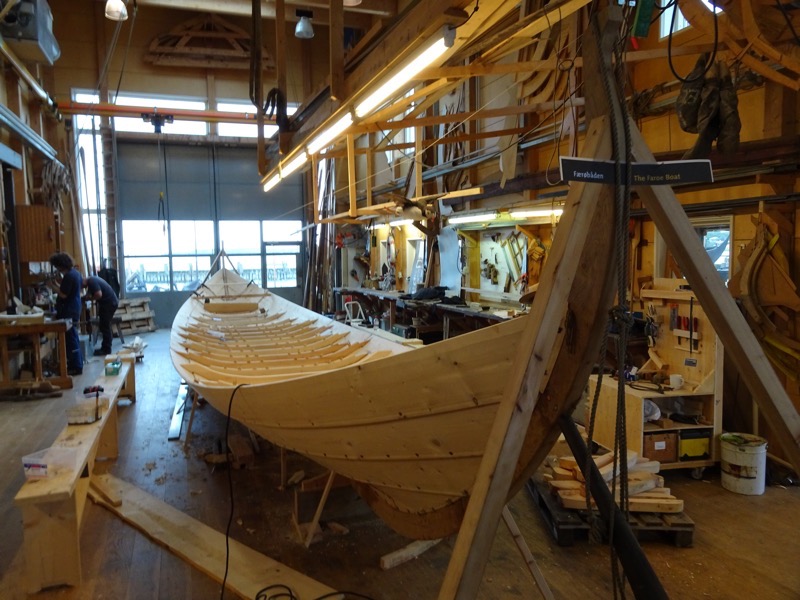 Larger reconstructions are done in the outside part of the shipyard.
Larger reconstructions are done in the outside part of the shipyard. 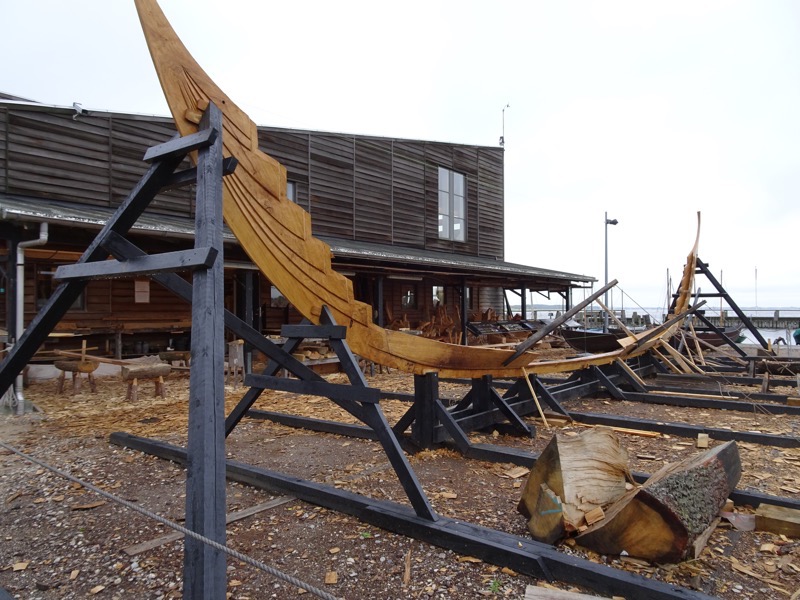
TIMBER YARD
Nearby is a timber yard, where timbers are being dried cut into planks using traditional wedging techniques. Large sections of tree are laying about earmarked for particular use in upcoming reconstruction projects.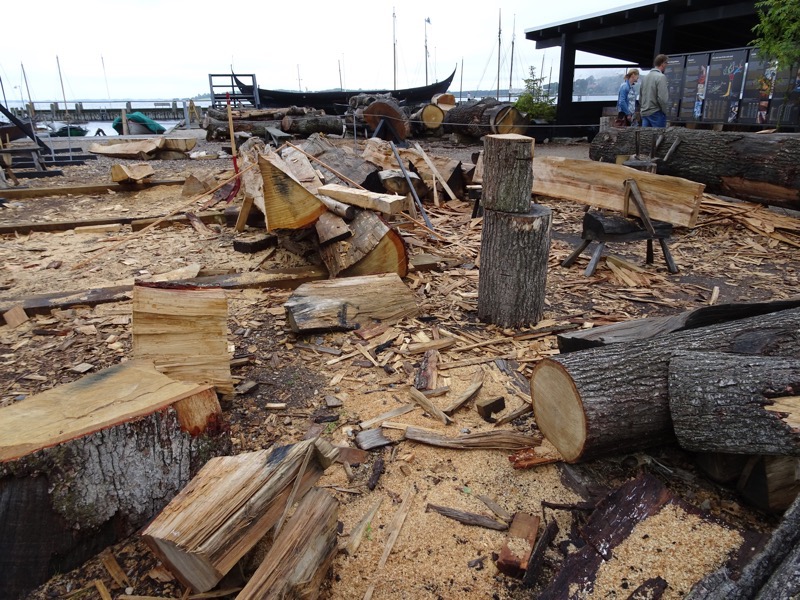
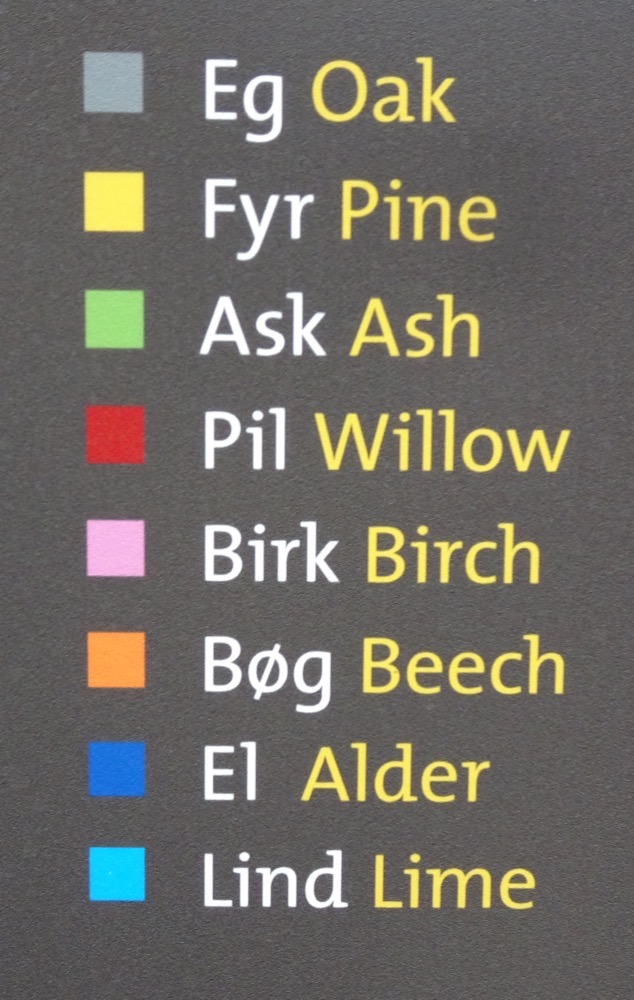
These diagrams demonstration how a single ship was often made using many differing timbers, each chosen for their particular characteristics, whether that is for strength, flexibility, durability or structure.
Different sections of these tree species have varying natural tensile properties, and the traditional Viking shipbuilders utilized these characteristics to good effect – choosing certain timber for certain ship parts, and certain sections from certain trees for their inherent natural properties that were most suitable for those parts.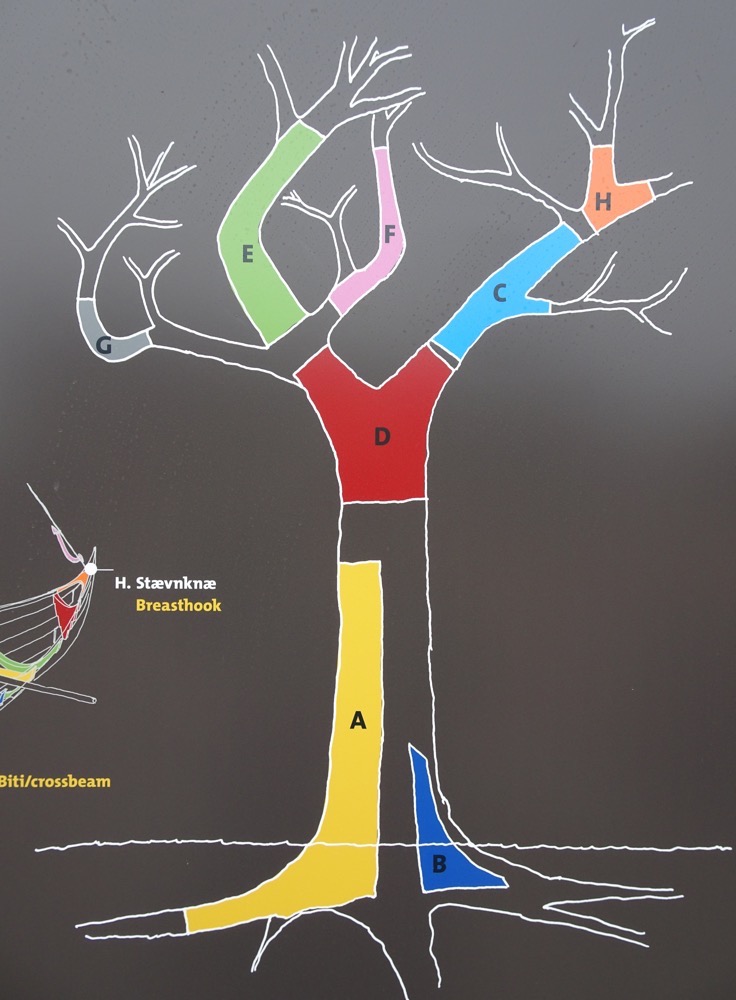
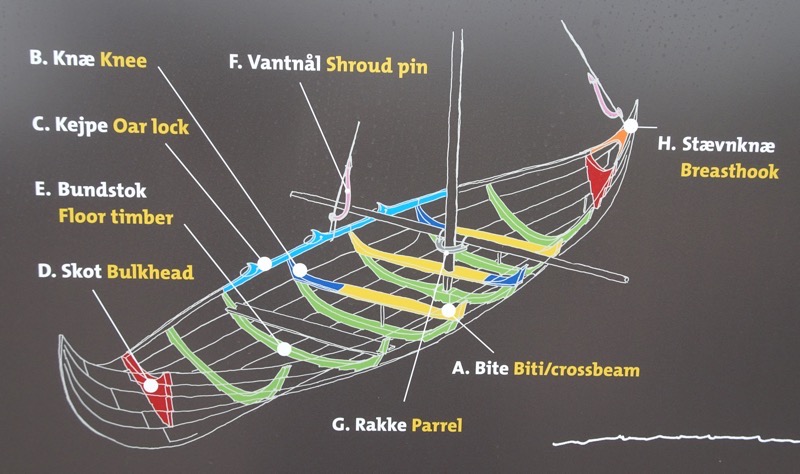
BLACKSMITH WORKSHOP
Next, we saw the blacksmithy. There was not supposed to be anyone working the smithy today, but happily, there was a guy there working the bellows and bashing away at some piece of iron while we were there, with a range of various period items made of iron in his forge.
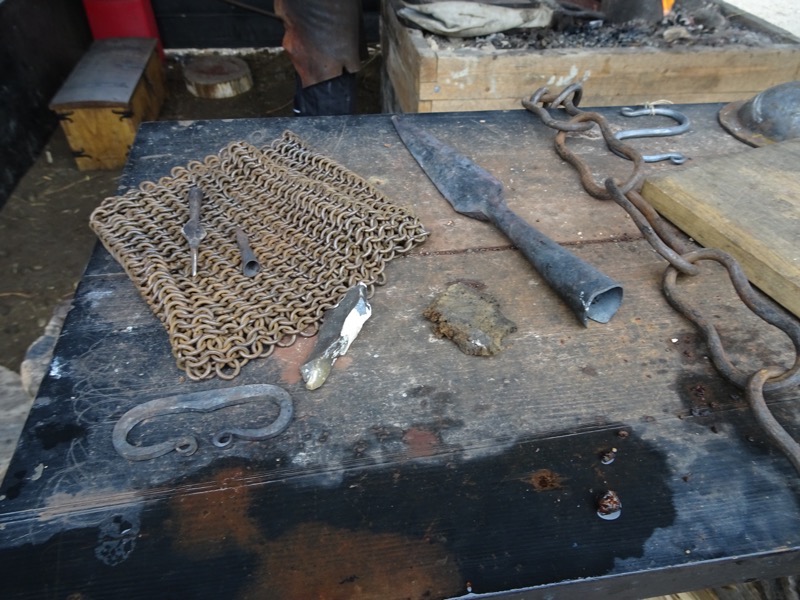
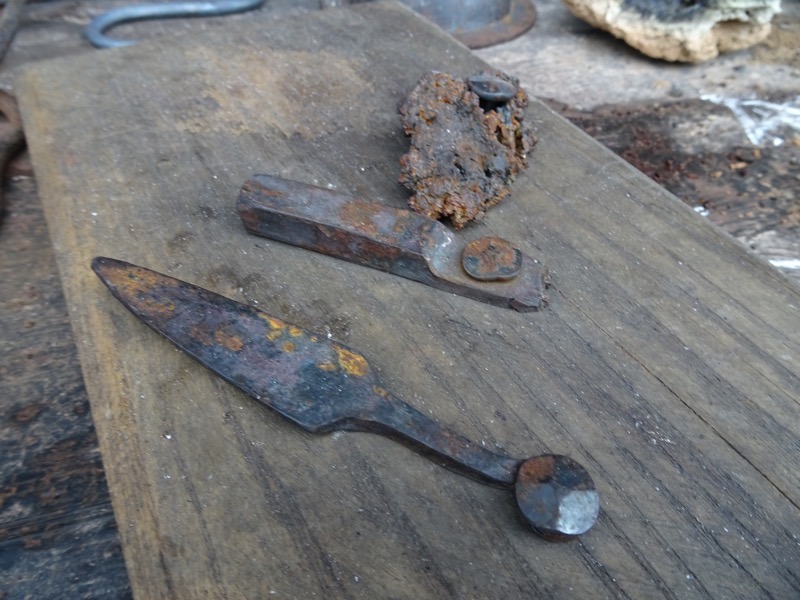 Nails. While it must be boring for the smith to make so many nails, they were integral to the ship building process.
Nails. While it must be boring for the smith to make so many nails, they were integral to the ship building process.
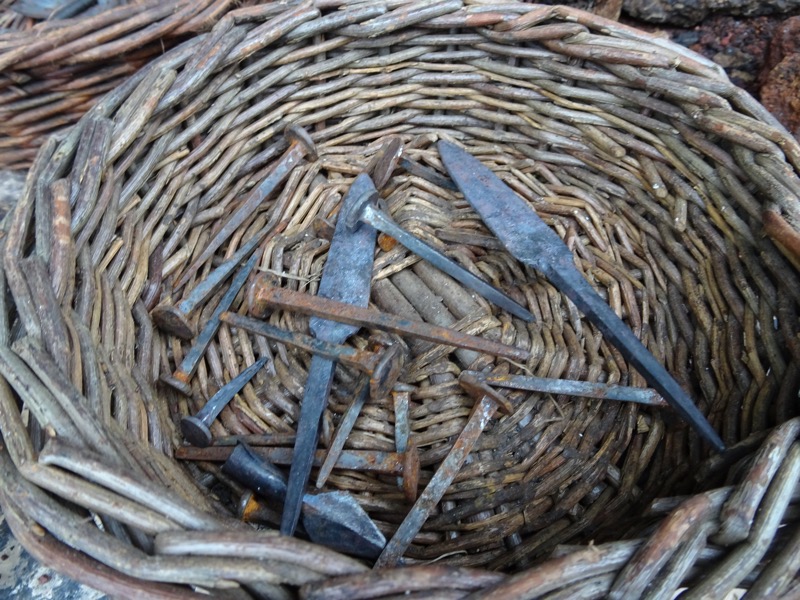
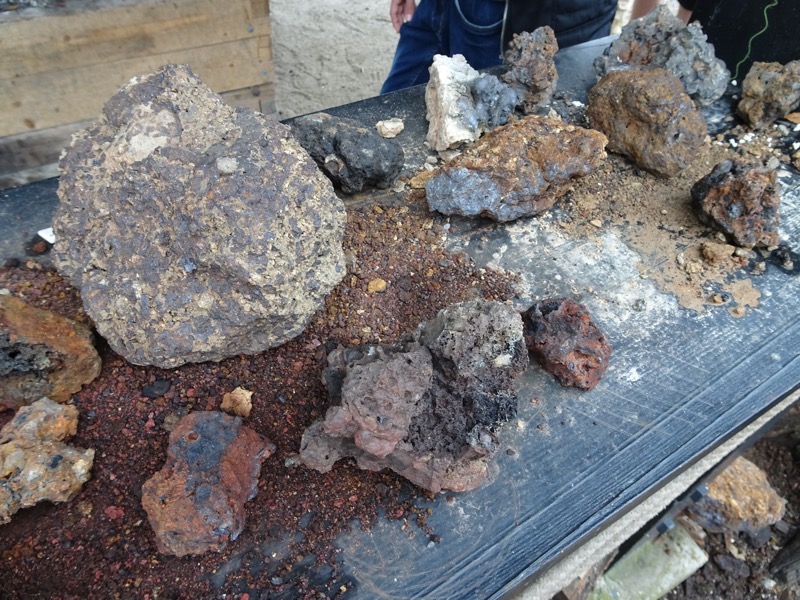
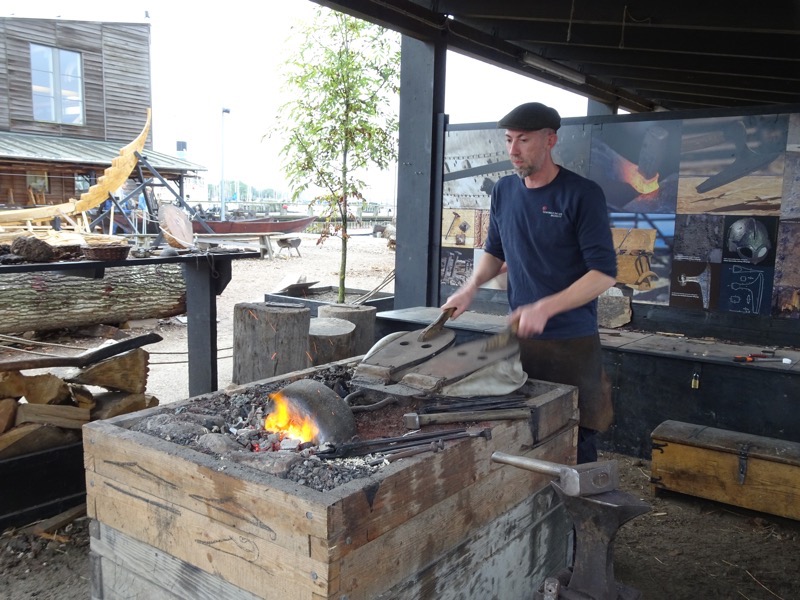

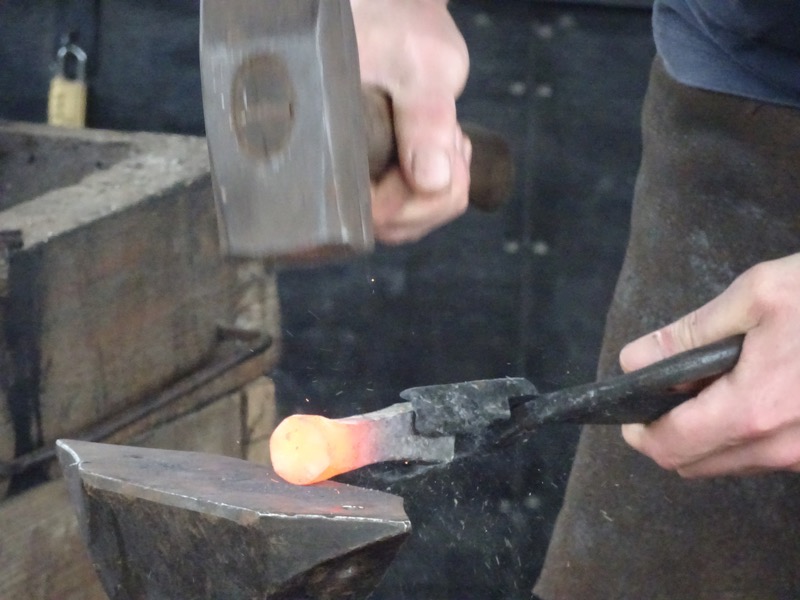
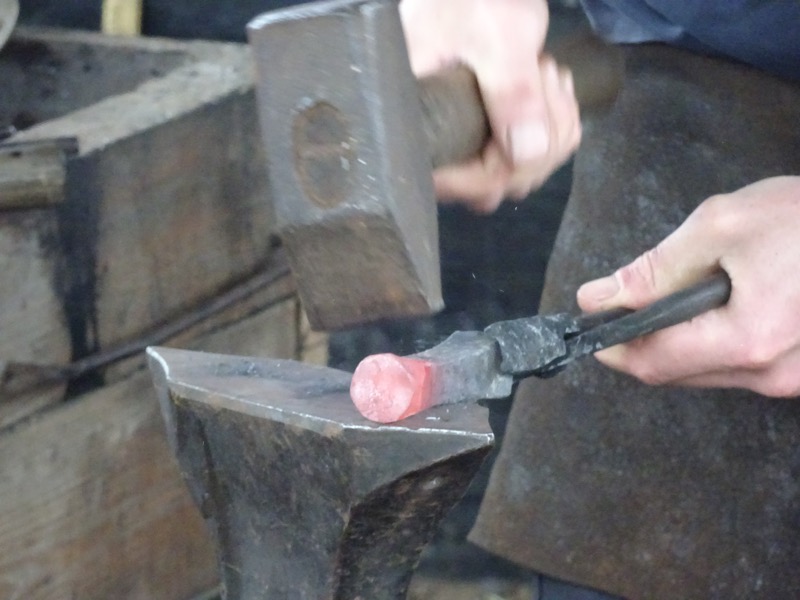
SAILMAKING
Flax has been used to produce textiles in Scandinavia since the Iron Age. Transforming the plant into fiber that can be spun, and then woven, is quite a long and complex process though. Sails on the reproduction ships have so far been made of linen and wool, which archeological evidence also demonstrates were used for sailmaking, but no flax sails have been made at the Roskilde shipyard yet. Sails are created of up to five long panels which are sewn together and then impregnated with fats, oils, tar or pitch to help prevent rot and to make them more windproof.
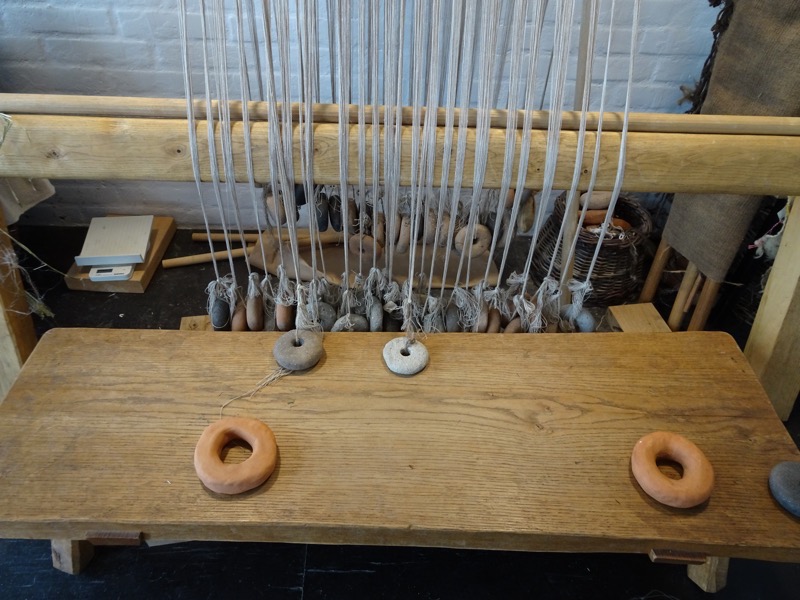
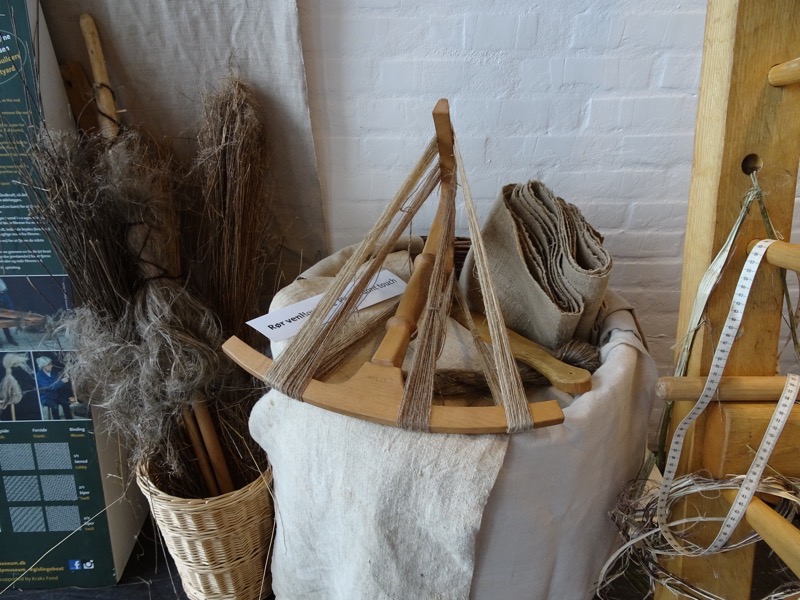
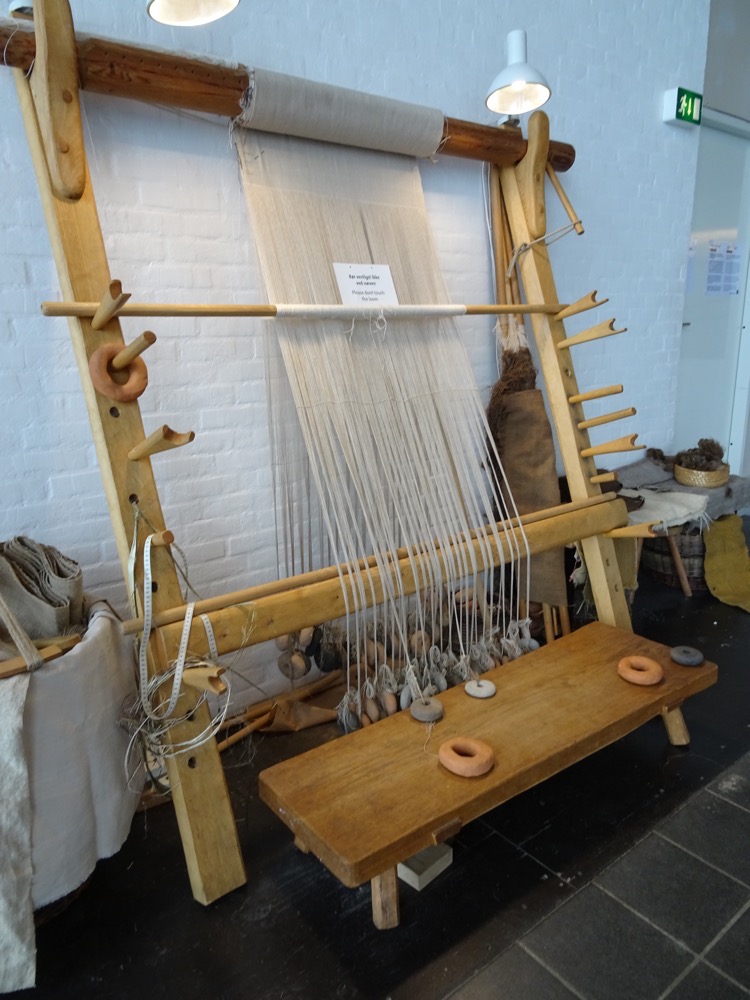
The Sea Stallion of Glendalough is the largest reconstruction ship made at the shipyard to date. In the summer of 2007 and 2008, the Sea Stallion from Glendalough sailed from Roskilde to Dublin and back. The Sea Stallion is a reconstruction of the 30 meter long warship, Skuldelev 2, which was originally built in Ireland in 1042 and which is on display in the Viking Ship Museum hall. It traversed the North Sea, the Irish Sea, and the English Channel. During the voyage, the ship passed through the very same landscapes which were part of Viking history 1000 years ago. (Photos by Werner Karrasch – photographer at the Viking Ship Museum).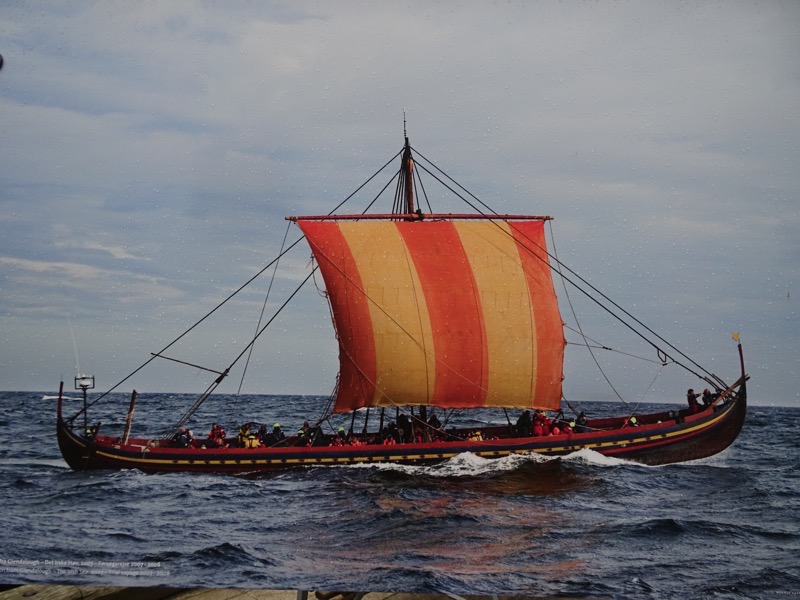
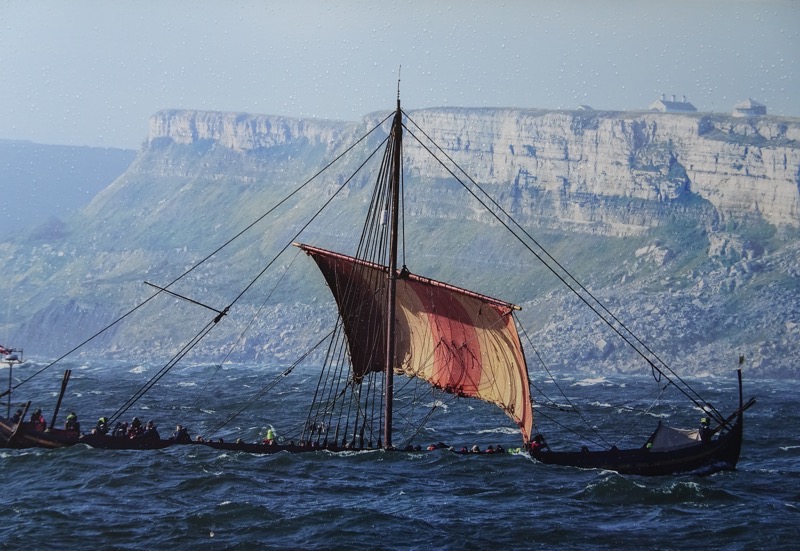
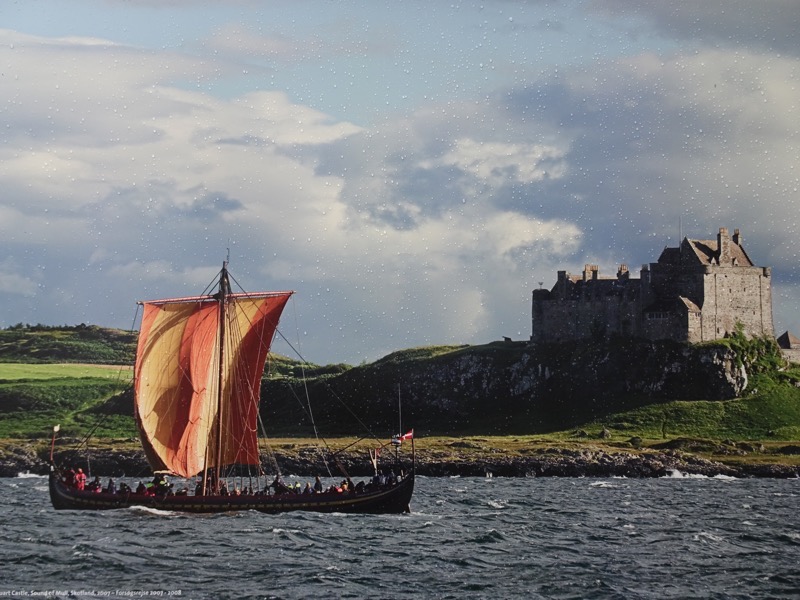 The summer 2007-2008 voyage:
The summer 2007-2008 voyage: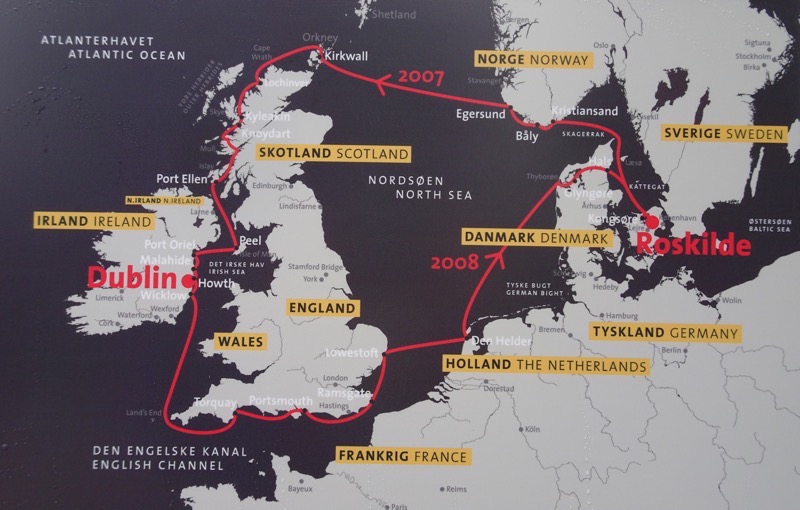
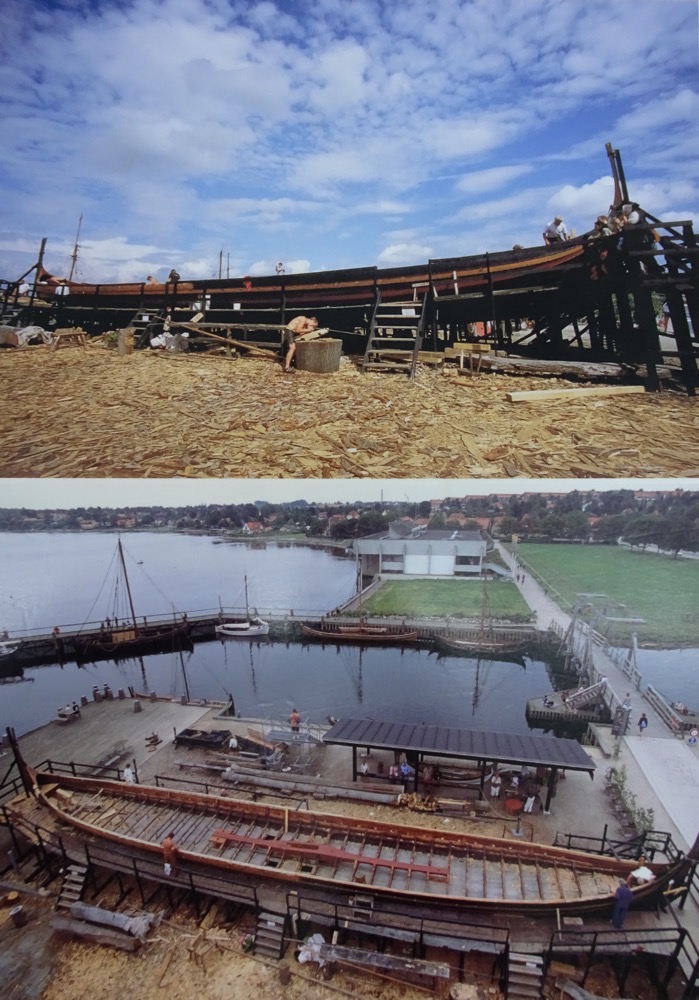 The Sea Stallion today.
The Sea Stallion today.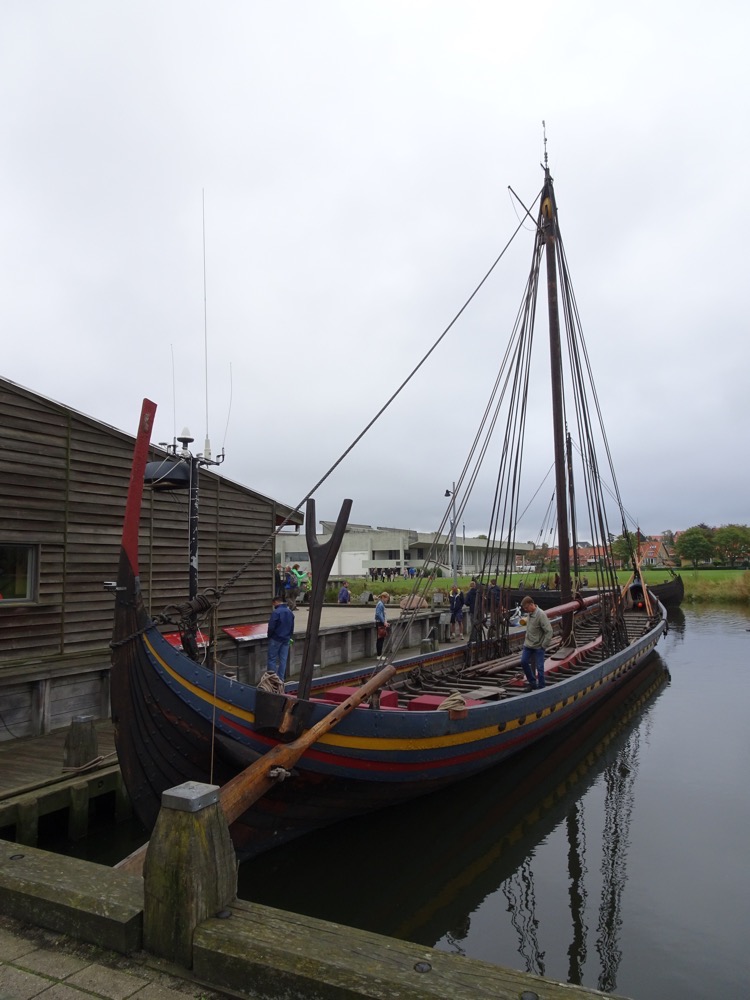
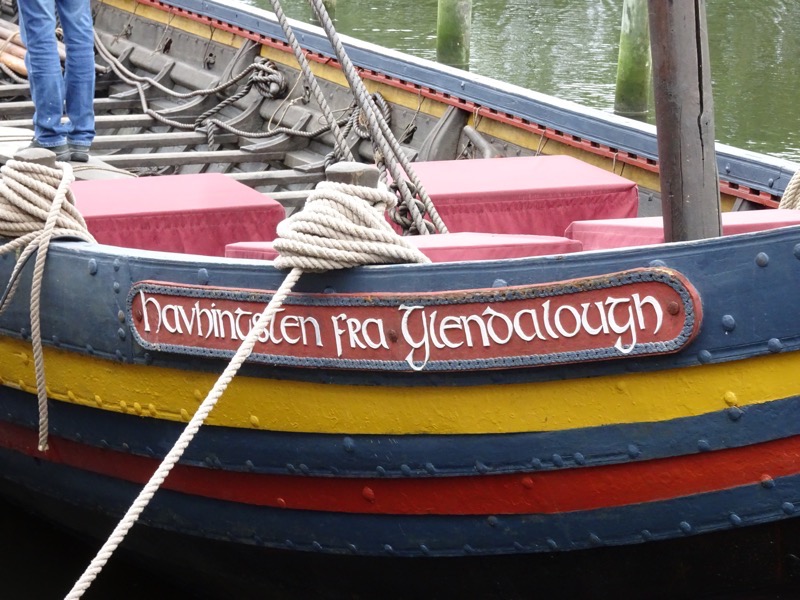
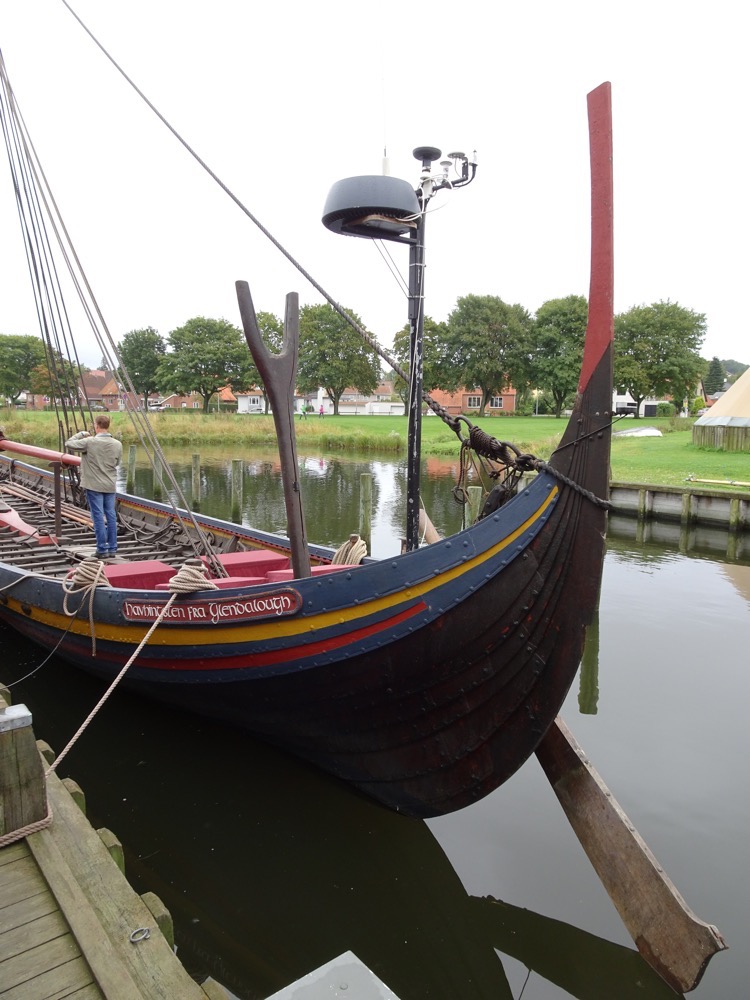
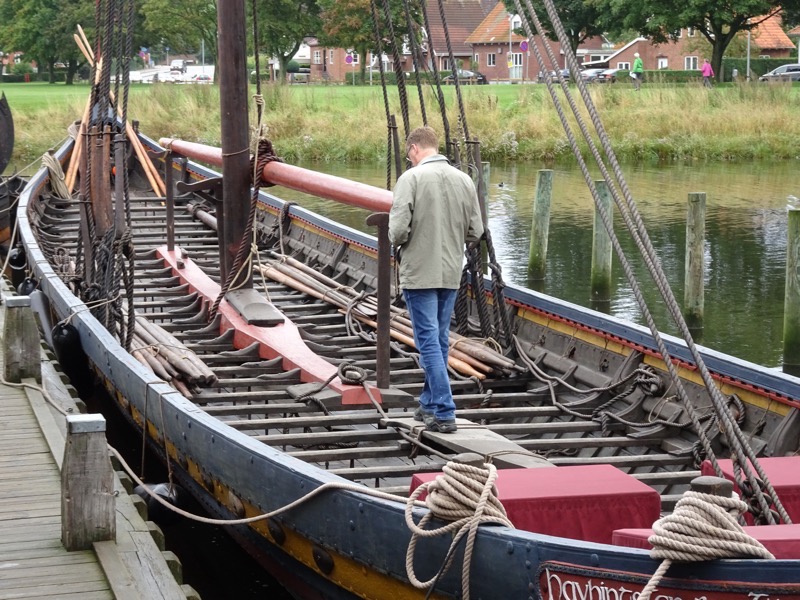
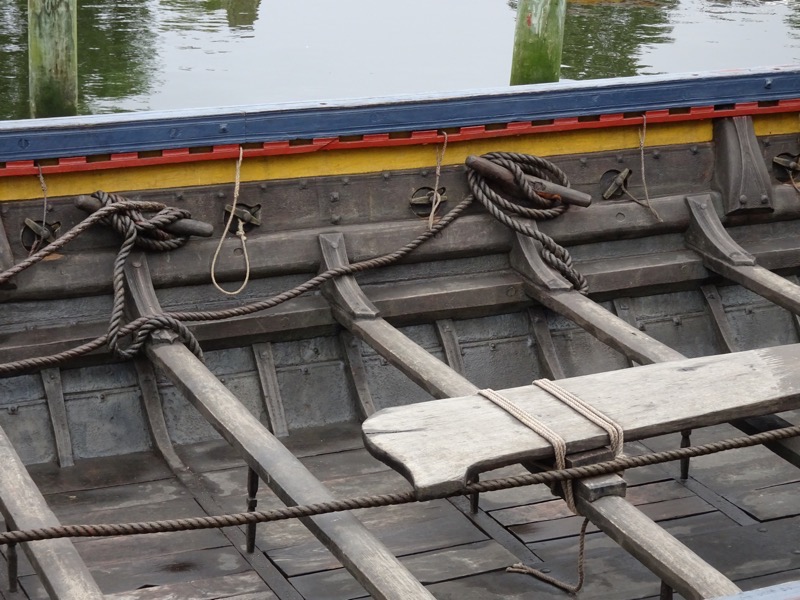

There are plenty of other replica ships about based on the other Skuldelev ships that are in the museum.
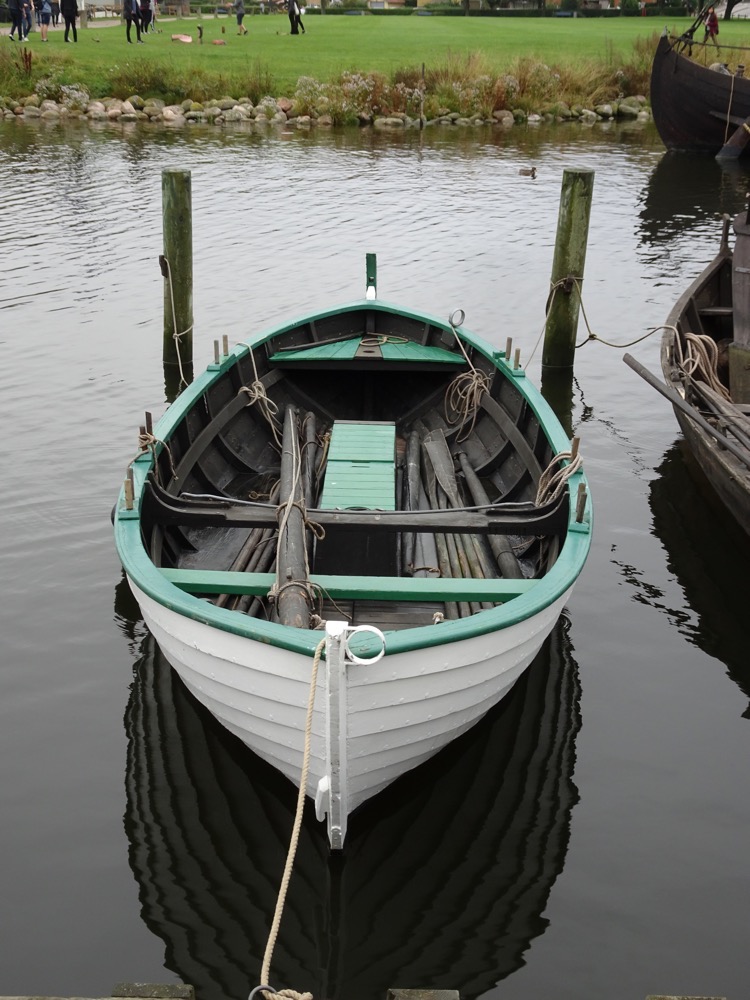 Replica of a 3-sail smack
Replica of a 3-sail smack
This replica was built by Tom Nicolajsen and his students in 1995 as a practice vessel for the students. The original smack was built of pin on oak in Assens for fishing in the southern Little Belt for eel, and cod and sometimes porpoises. The smack is rigged with tow or three spritsails on removalbe masts and is typical of south and west Funen.
Oars: 4
Length: 6.3m Breadth: 2.2m Draught: 0.8m
Total sail area: 25 sq m
Crew: 2 men
Max speed: at sail 6 knots, at oars, 3 knots.
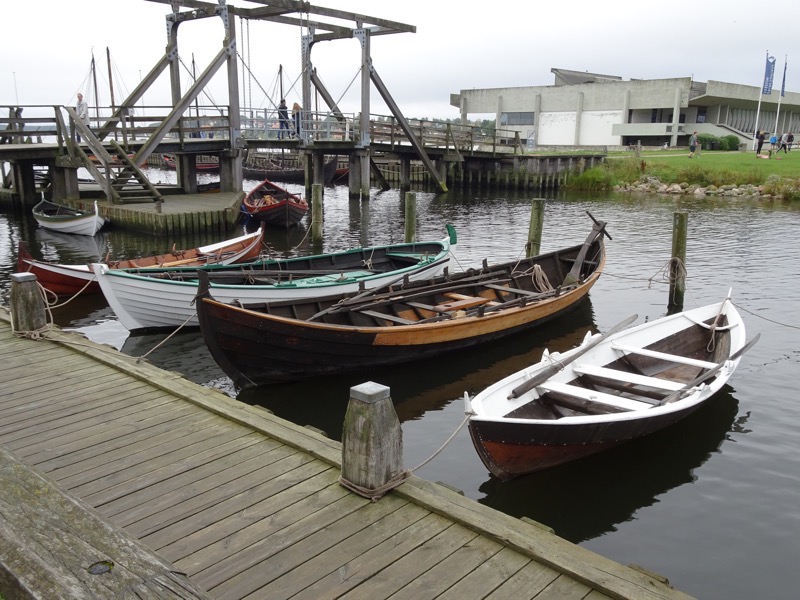 Attamannafar from the Faroe Islands (centre in the picture)
Attamannafar from the Faroe Islands (centre in the picture)
Built by Niclas i Koltri of pine construction. The turbulent and unforeseeable weather and strong currents between the islands required especially seaworthy boats that were also light enough to be hauled up onto the beach as required. The Attammanafar carries a lug mainsail and a small mizzen mast, both of which are easy to rig down and store in the bottom of the boat. The oars are the main source of propulsion in all kinds of weather.
Oars: 8
Length 7.8m Breadth 1.9m Draught: 0.3m
Sail area: 10sqm
Crew: 9 men
Max speed: sail 6 knots, oars: 5 knots. (pictured centre)
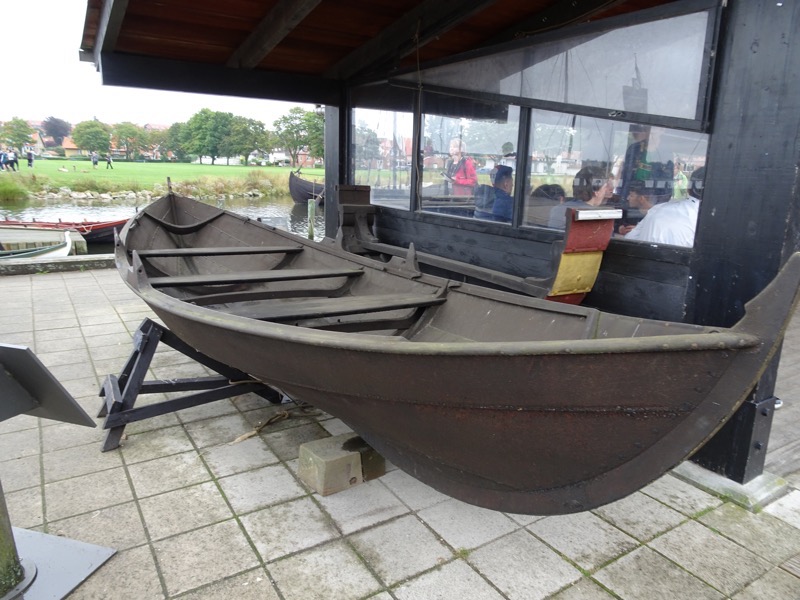
Oselver Faering, Norway, 1970.
Built of pine by Einar Killveit, at Hardanger in Norway. The very broad planking, only three strakes in each side, distinguishes this type of boat. Thanks to its particularly good rowing characteristics, it was used for traveling along the Norwegian skerries. It was also used as a ‘trader’ for transporting light cargo of farm produce and made an ideal fishing boat.
Oars: 4
Length: 5.5m Breadth: 1.55m Draught: 0.2m
Crew: 2-3 men
Max speed: 5 knots.
There are many other replica boats around also, most of which are based on the Skuldelev finds in the museum proper.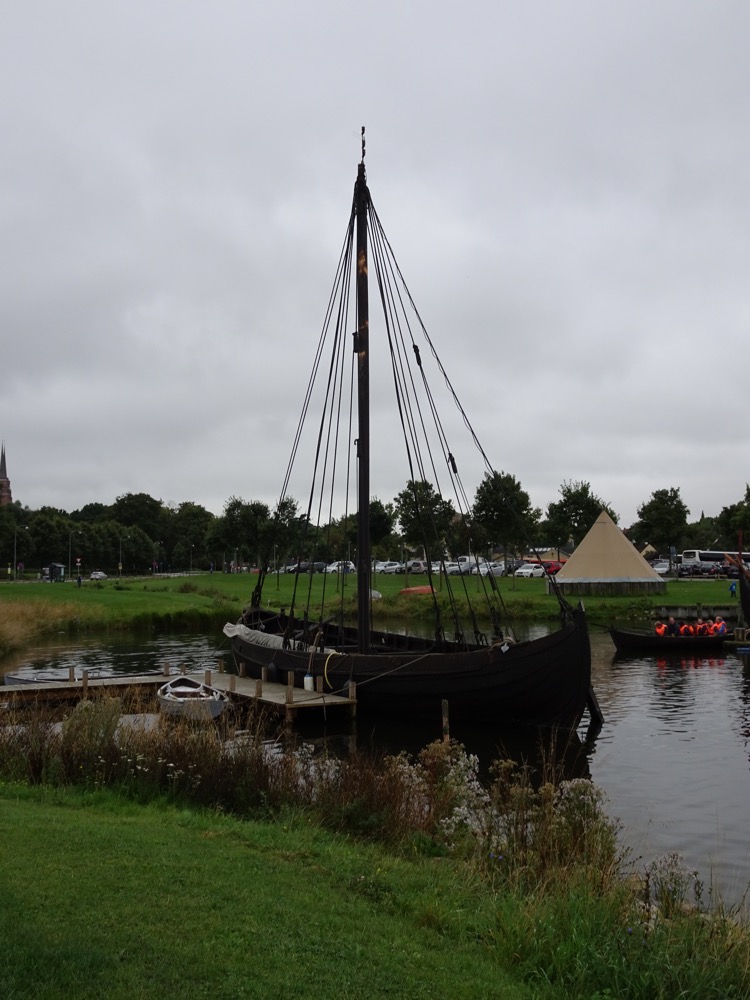
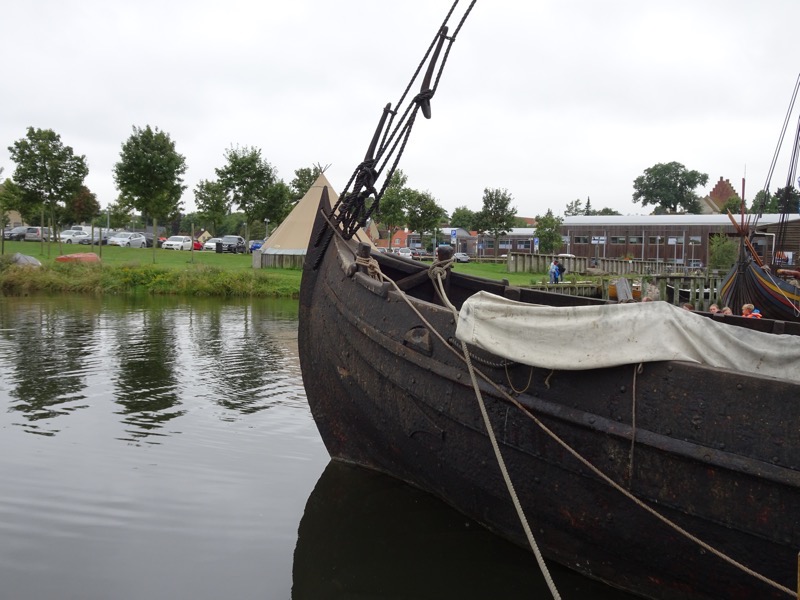

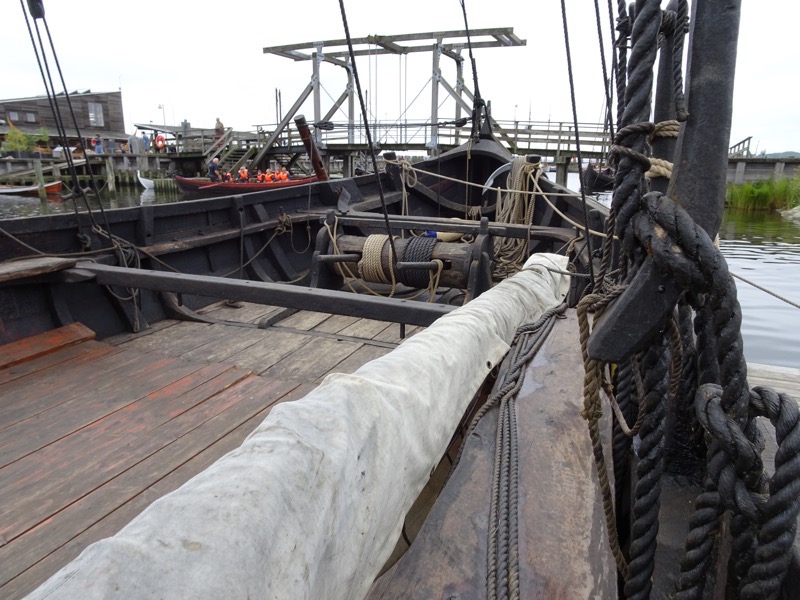

On the lawn outside the Viking Ship Museum is a recreation of a 9th century labyrinth that was found close to the ruins of the monastic settlement of Glendalough in Ireland. The site of Glendalough was an important place of pilgrimage for more than 1500 years. The labyrinth and the movement through its paths are often used as a form of meditation – it is apparently considered very bad luck to step through and cheat your way out!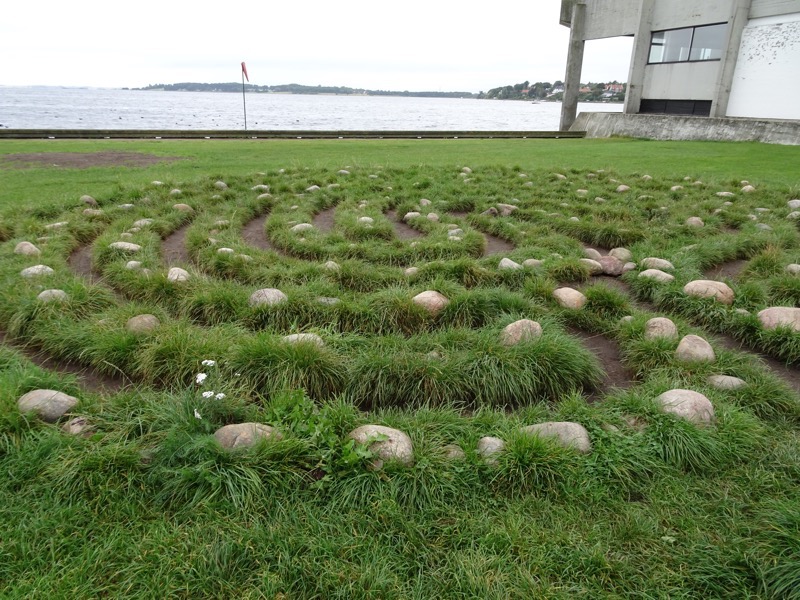

 Some other Viking games were also set out for visitors to try:
Some other Viking games were also set out for visitors to try:
Thor’s Hammer Throw:
Thor, the God of War and Thunder, used his hammer Mjolner in the battle against the giants. The hammer was the perfect weapon; always returning to Thor’s hand once it hit its target. Vikings didn’t actually use hammers as a combat weapon – they preferred swords, spears, axes and bows/arrows, but the myth about Thor and his hammer endures.
The aim of the Hammer Throw Game is to ‘hit a giant’. The statues (giants) are positioned on the ground at different distances, each player gets only three throws of a hammer attached to a rope, with a view to knocking over the giants. Whoever knocks over the most giants wins. Can be played with many giants at different distances.
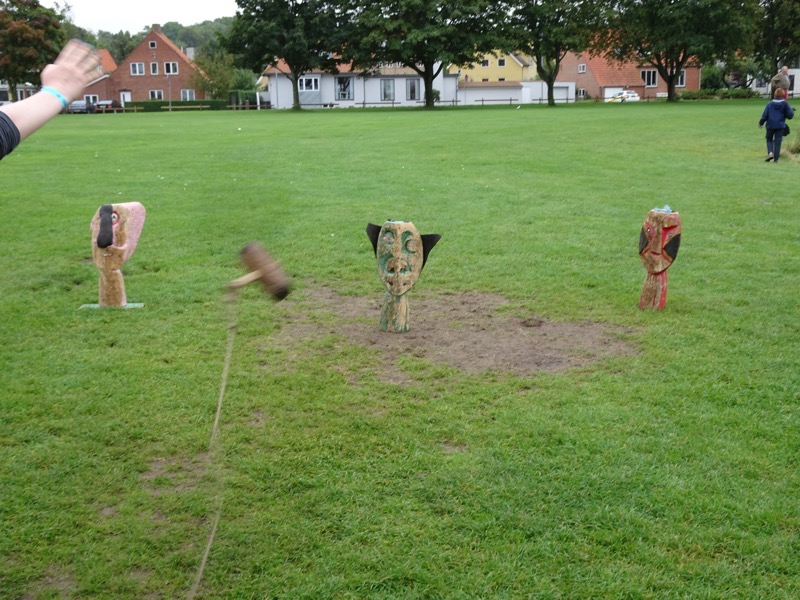 The ‘giants’ are around 45-60cm tall and have different weights and varying degrees of ugly.
The ‘giants’ are around 45-60cm tall and have different weights and varying degrees of ugly.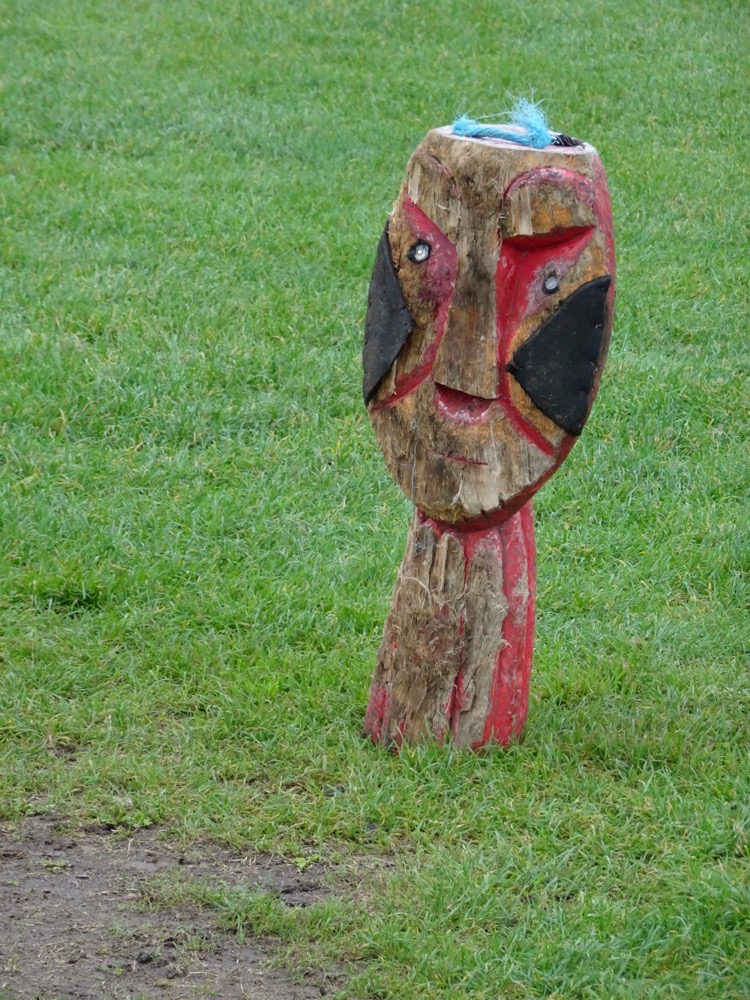

Casting the Mooring Line
Ships and seamanship were important aspects of Viking life. Good seamanship required robustness, nimble fingers and precision. Ability to gauge distances and good throwing technique were essential for casting mooring lines for ships.
The aim of Casting the Mooring Line is to hit the targets with the stone. Six stanchions (timber pegs) are sunk into the ground at varying distances apart, and mark the mooring posts you must hit. The thrower stands behind a marked point and gets three throws with a stone attached to a rope. Only the stone end should be thrown, while the other end of the rope (the ship end) must stay with the thrower (being held under the throwers foot, or pegged down). The best throws hit the space in between the stanchions on the course. Each thrower gets four throws for maximum points.
1pt 3pts 5pts 3pts 1pt
O————-O———O—–O———O————-O
 The Troll’s Head
The Troll’s Head
There are many different versions of tug-of-war. In a saga from the Middle Ages, Hasti has a tug-of-war competition against Hord. The contest takes place over a fire and the two contestants pull opposite ends of a skin. In ‘The Troll’s Head’ game, the aim is to force your opponent to step into the troll’s ferocious mouth.
A circle of rope or painted cloth is laid on the ground and forms the ‘troll’s head’. The players hold hands and form a circle around the troll’s head (remove any finger rings that might get in the way). Now you must run, pull and push to try and get others into/onto the troll’s head without losing your grip on one another. Those who step into the troll’s head are out of the game. The last man standing is the winner.
Also popular is a traditional coits game with a cross bar target and rope coits of varying ropes (which have different weights).
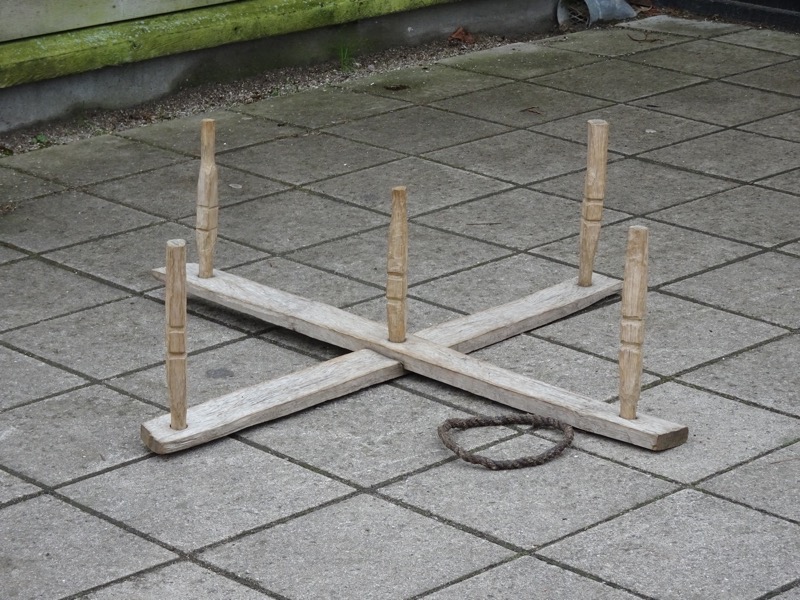 After playing around on the green for a while, it was time to go sailing on a historically accurate Viking ship that had been built by hand, using traditional techniques and tools, right here in the Roskilde Viking shipyard.
After playing around on the green for a while, it was time to go sailing on a historically accurate Viking ship that had been built by hand, using traditional techniques and tools, right here in the Roskilde Viking shipyard.
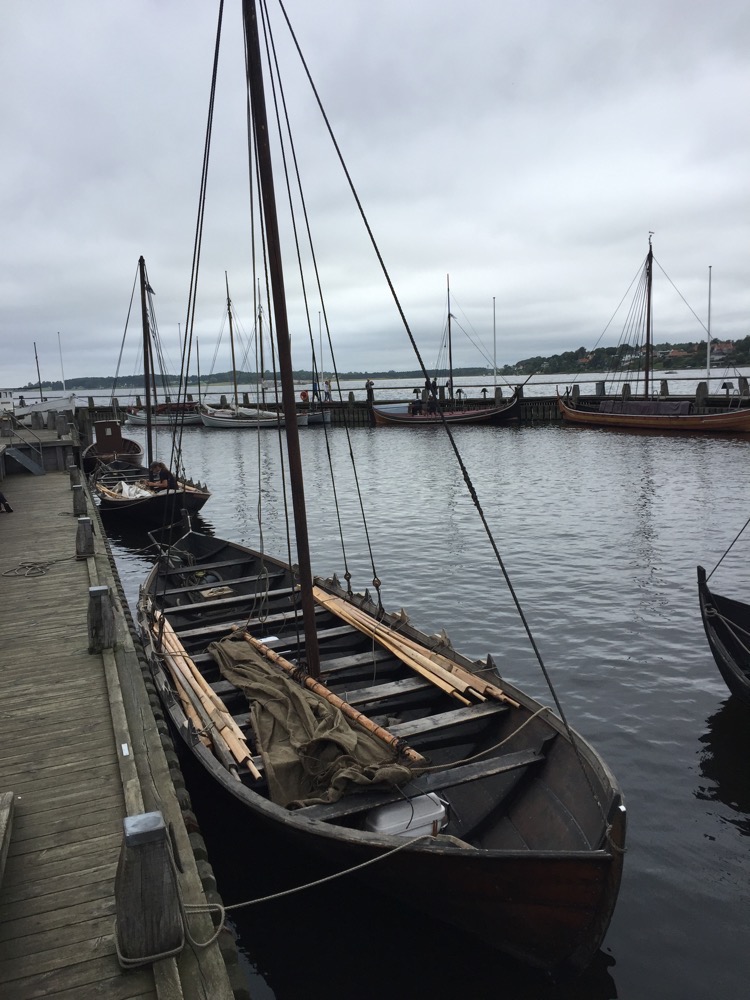 And we have perfect Viking weather for such things – grey, dismal, and constant light drizzly rain.
And we have perfect Viking weather for such things – grey, dismal, and constant light drizzly rain.
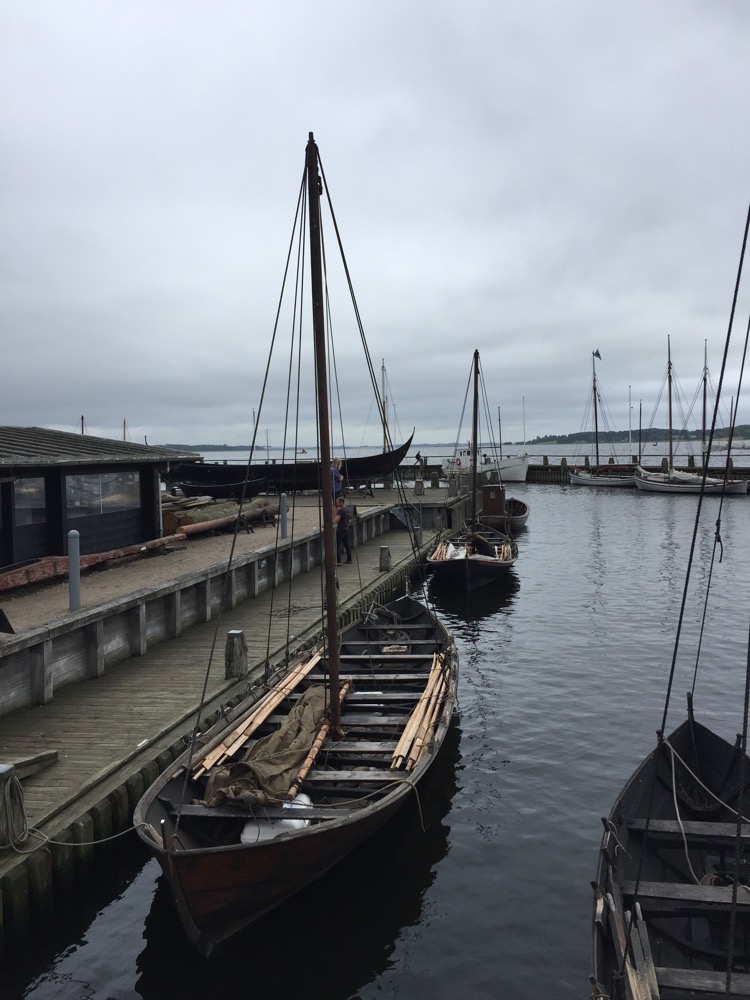 Getting instructions on the various oar commands we needed to use.
Getting instructions on the various oar commands we needed to use.
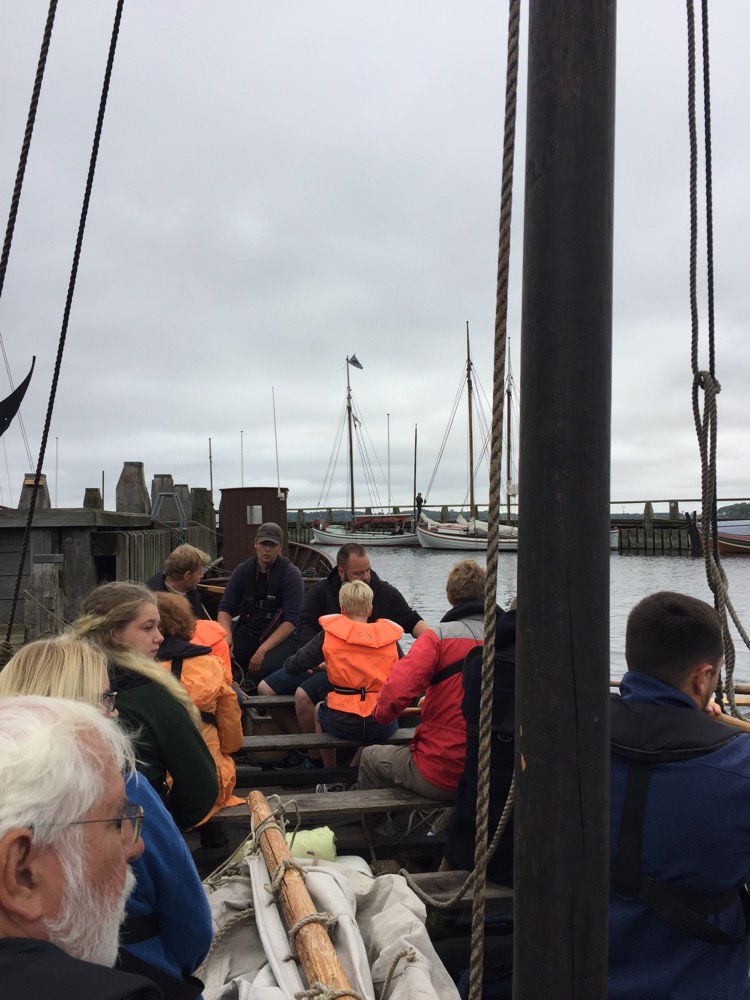
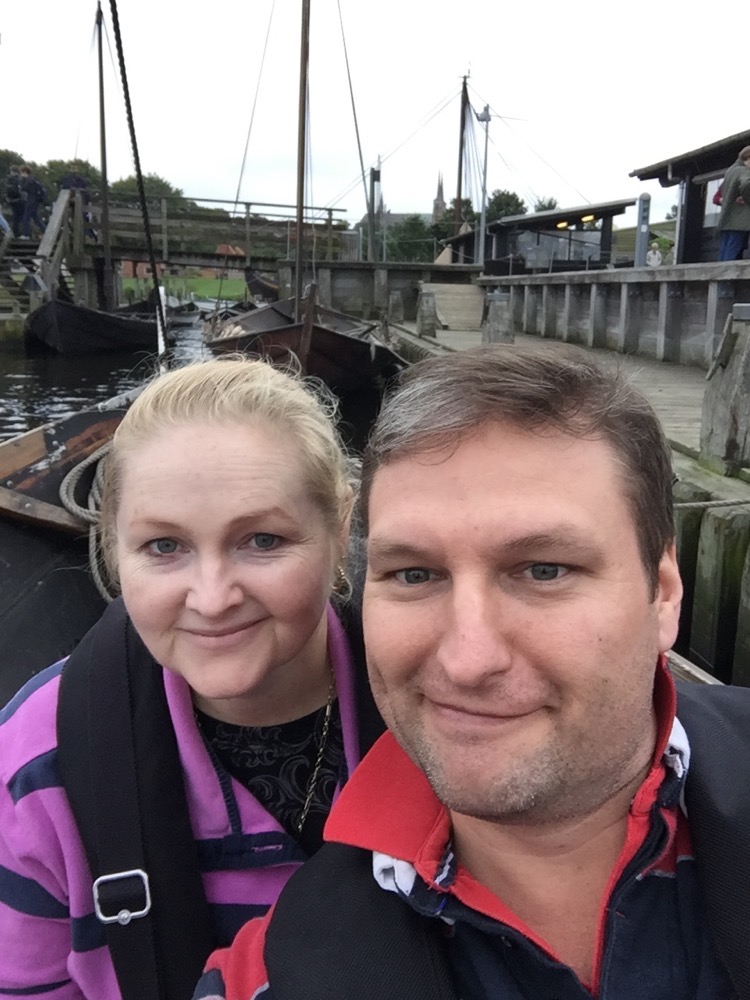 Captain never said, “Row ya bastards!”… not even once! 🙂 He just encouraged people to listen for the slap of the oars in the water and to try and get them in time. Have to admit we were pretty terrible rowers but we managed to manouevre our craft into the open harbour.
Captain never said, “Row ya bastards!”… not even once! 🙂 He just encouraged people to listen for the slap of the oars in the water and to try and get them in time. Have to admit we were pretty terrible rowers but we managed to manouevre our craft into the open harbour.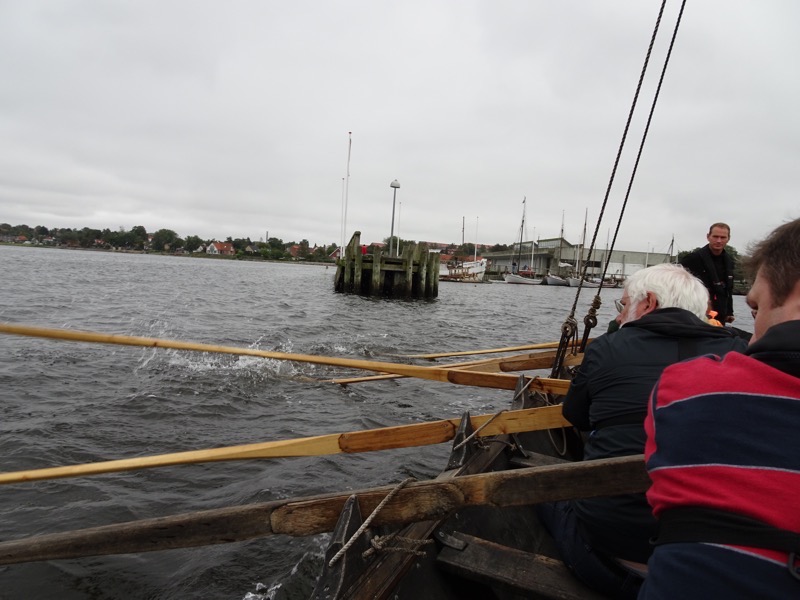
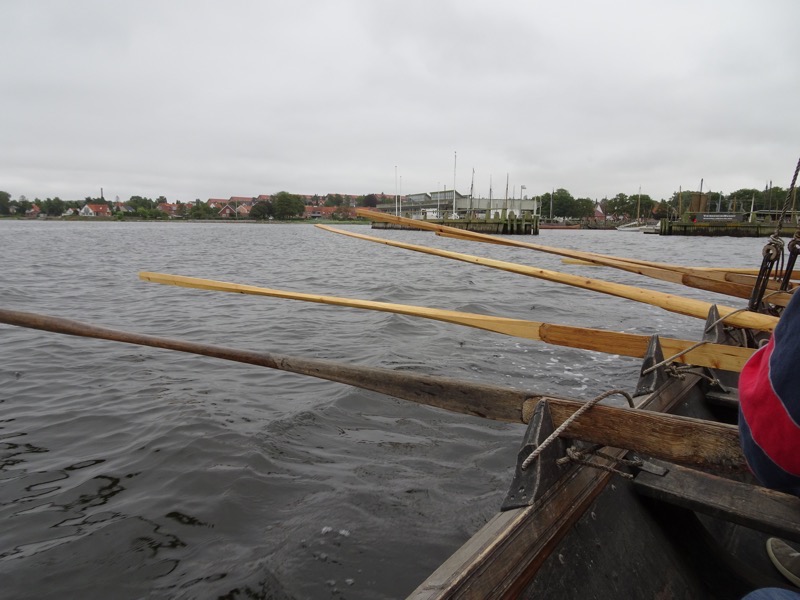 From here the sail was hoisted and we moved along with relative ease.
From here the sail was hoisted and we moved along with relative ease.
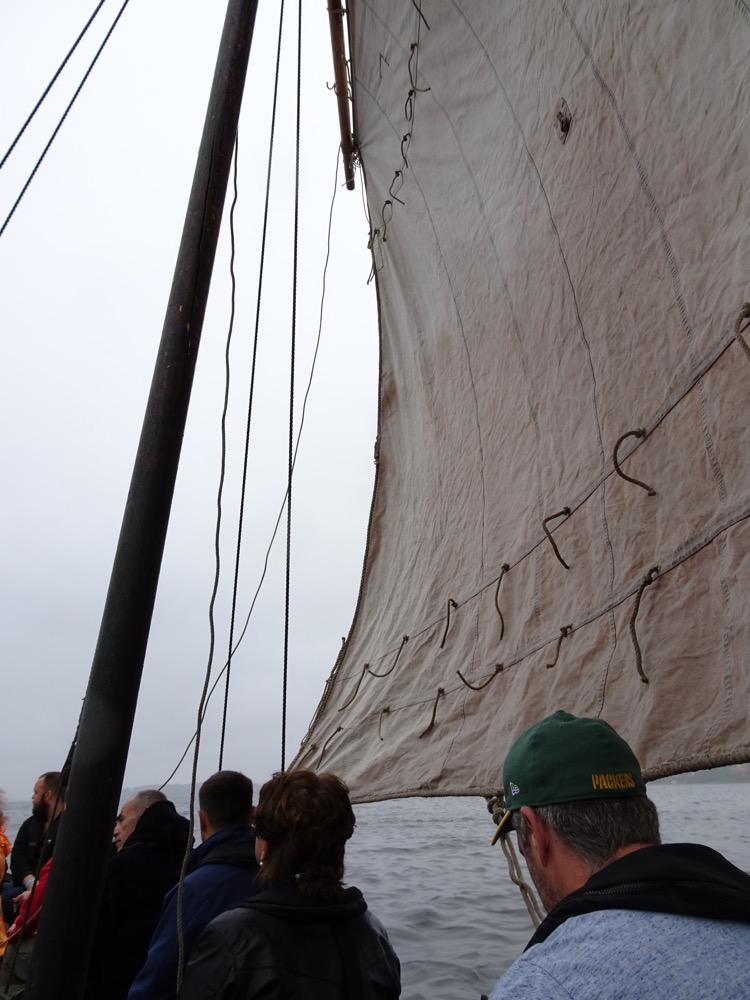 Ballast in the bottom of the boat.
Ballast in the bottom of the boat.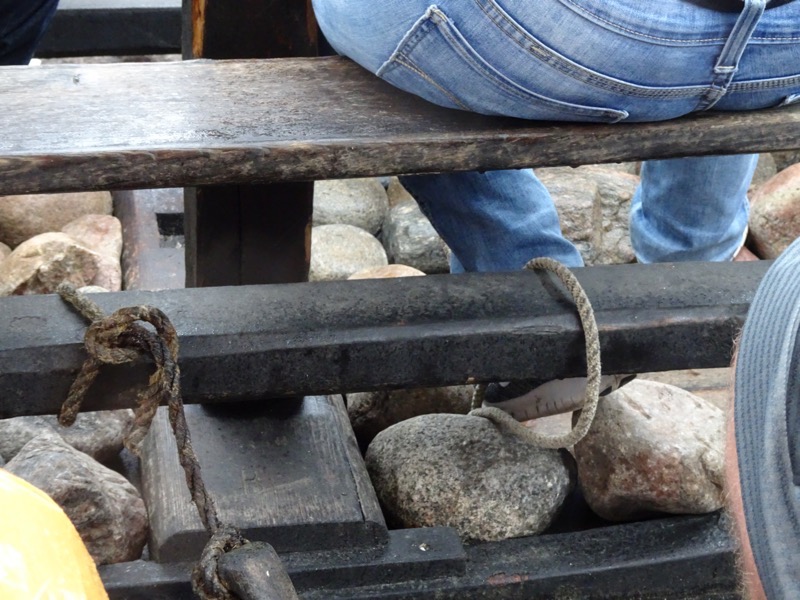 Nearly getting knocked in the head as we tacked.
Nearly getting knocked in the head as we tacked. After our bracing sail around the Roskilde harbour, we went over the Vikingskib Museet to see the remnants of some extant Viking ships that had been found in the Roskilde Fjord, and to hopefully warm up!
After our bracing sail around the Roskilde harbour, we went over the Vikingskib Museet to see the remnants of some extant Viking ships that had been found in the Roskilde Fjord, and to hopefully warm up!
The Viking Age (arguably) covers approximately from 750 to 1100AD and was characterized by large-scale trading and raiding expeditions, national unification, some urbanization and a wide scale conversion to Christianity. Around the year 1000, the power of the Danish realm was concentrated in Roskilde, as the new monarchical and ecclesiastical capital. The town was unfortified but naturally protected at the base of Roskilde Fjord. The town center was situated on a hilltop overlooking a wide landing place where ships could lay at anchor.
The towns primary protection from invaders relied on a system of signal fires (beacons) placed strategically down the fjord from the mouth of the fjord at Kattegat into Isefjord. Beacons would have been set on high ground with good visibility to the next beacon. The town’s secondary defense consisted of unseen sunken ships, piles of stone, driven posts and floating palisades near the island of Kolholm which allowed the three sailing channels to be blocked off when under attack. Five sunk ships have been recovered from the Peberrenden channel that was used for this purposes. They have been labeled Skuldelev 1 through to 5. Skuldelev 1, 3 and 5 were filled with stones and scuttled between 1060 and 1070. A few years later the barriers had partially disintegrated and two more ships Skuldelev 2 and 4 were also scuttled. The channel was still navigable but required local knowledge.
The town’s secondary defense consisted of unseen sunken ships, piles of stone, driven posts and floating palisades near the island of Kolholm which allowed the three sailing channels to be blocked off when under attack. Five sunk ships have been recovered from the Peberrenden channel that was used for this purposes. They have been labeled Skuldelev 1 through to 5. Skuldelev 1, 3 and 5 were filled with stones and scuttled between 1060 and 1070. A few years later the barriers had partially disintegrated and two more ships Skuldelev 2 and 4 were also scuttled. The channel was still navigable but required local knowledge.
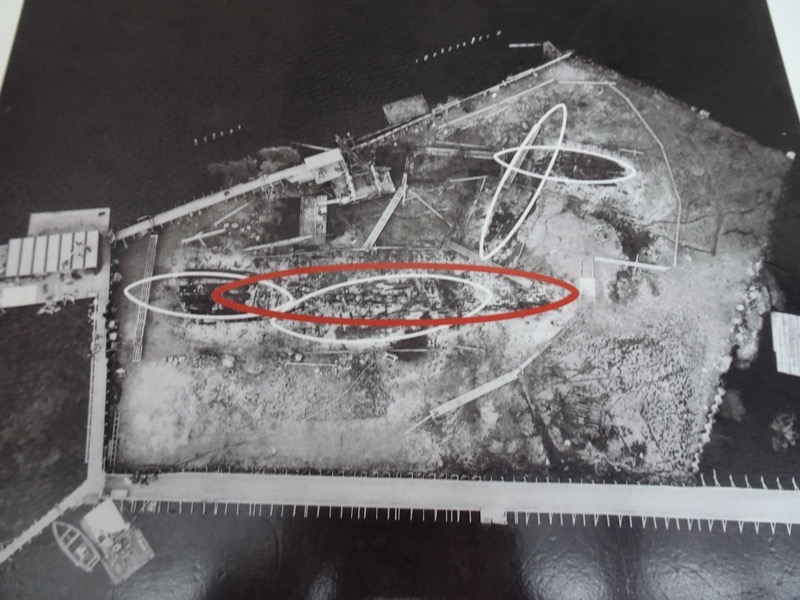
The ships were initially investigated underwater in the 1950s and not long after a cofferdam barrier was built in 1962 allowing the area to be drained and hundreds of thousands of ship parts to be excavated. There followed the worlds biggest jigsaw puzzle that took 25 years to complete, as the five Skuldelev collections of different ships, used for fishing, trading, defense, and warfare, were painstakingly pieced back together.
They provide a unique perspective on Viking Age maritime culture; shipbuilding, seamanship and the ability to journey far from their homes.
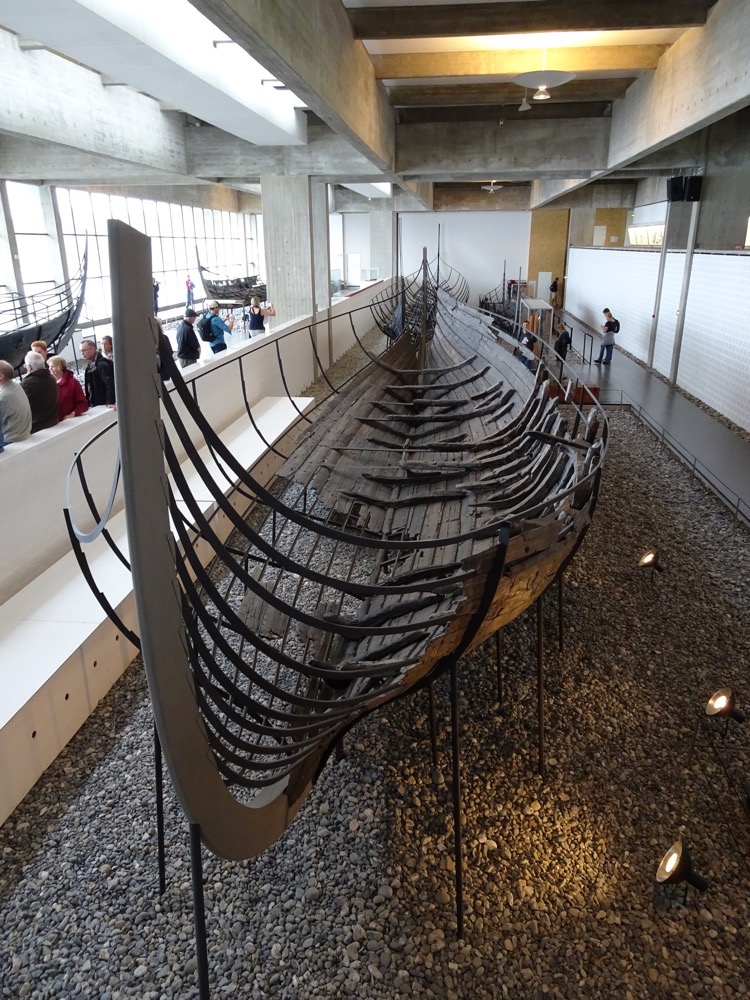 Coastal Trader ship – small elegant trading and transport vessel, of the byrding type. Made of Danish oak, it has decks of loose plans and an open hold for about 4 tons of cargo. The ship would have been crewed by 5-8 men.
Coastal Trader ship – small elegant trading and transport vessel, of the byrding type. Made of Danish oak, it has decks of loose plans and an open hold for about 4 tons of cargo. The ship would have been crewed by 5-8 men.
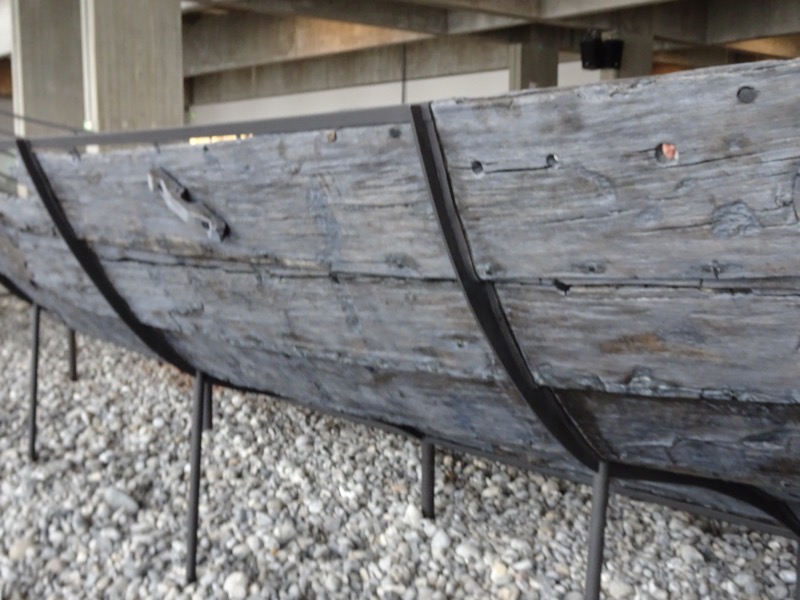
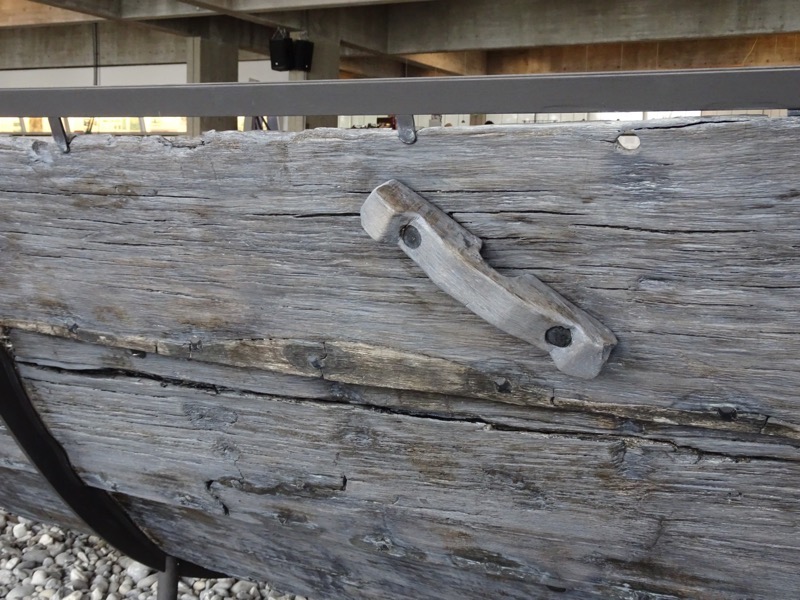

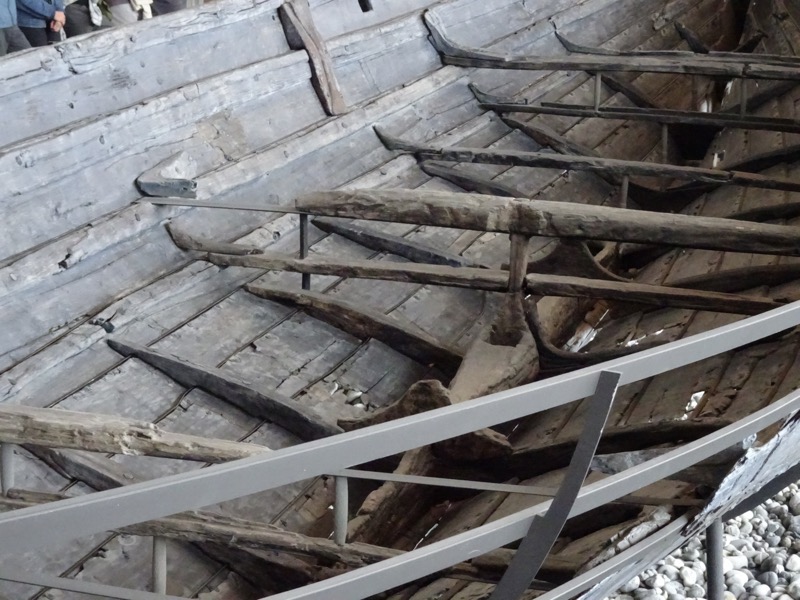
Wreck 5 is a small warship possibly of the snekke type. Built of Danish oak, ash and pine party by reusing timber from other ships. With 13 pairs of oars, and about 30 warriors, it is one of the smallest longships in a war fleet. Along the sheerstrake are remnants of a shield rack.
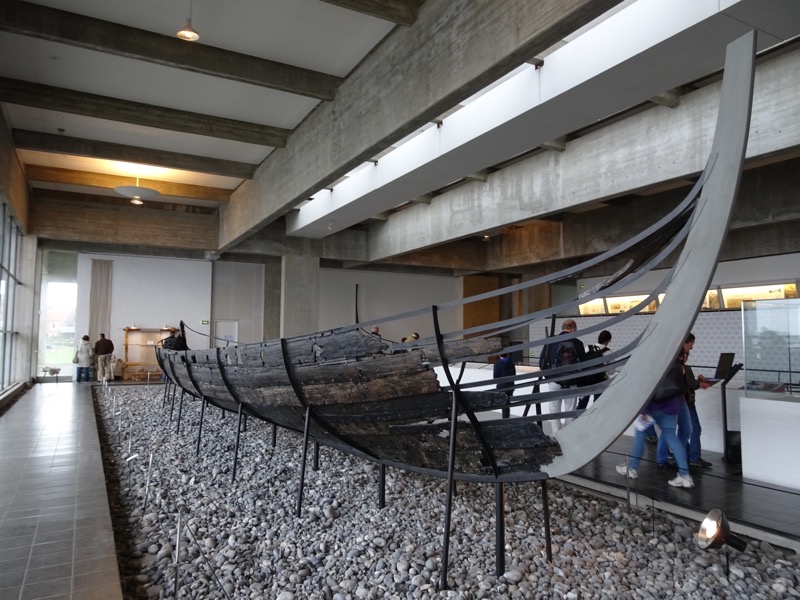
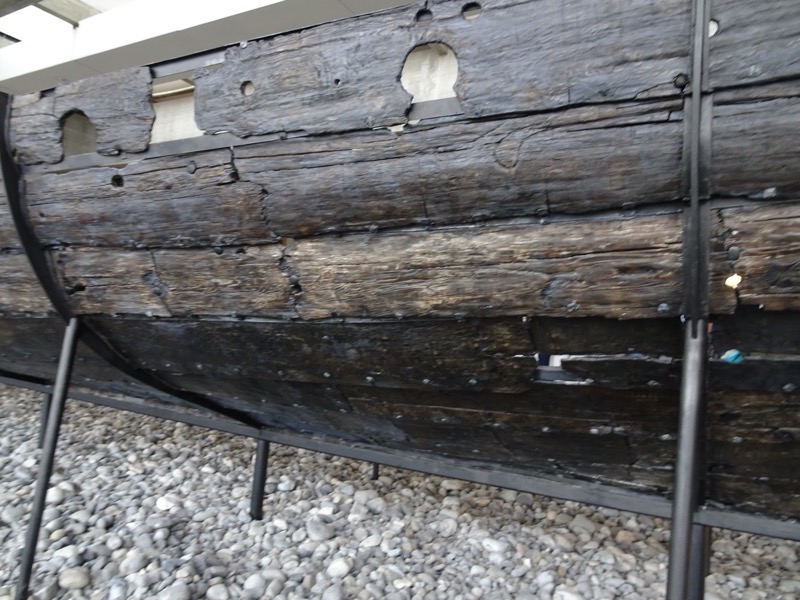
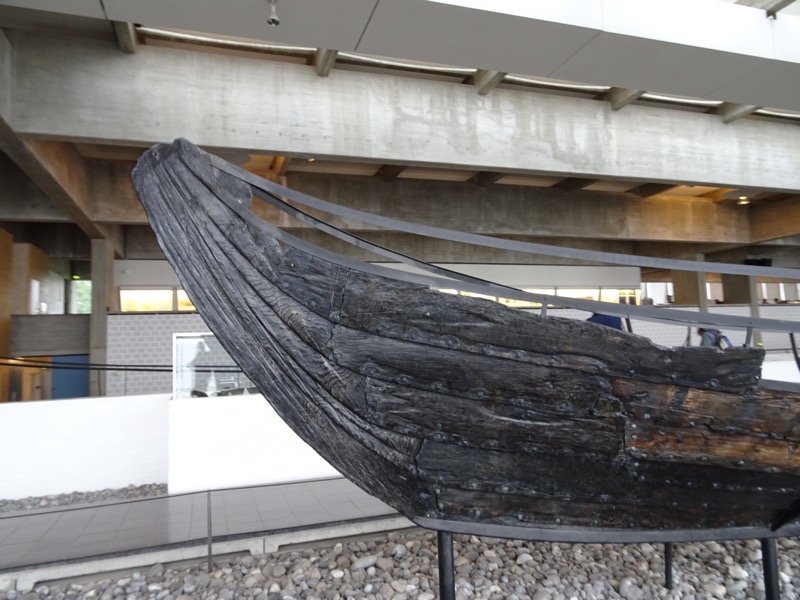
The Longship was an ocean going warship, possibly of the skeid type. With a crew of 65-70 warriors, it must have been the ship of a magnate, a vessel like those whose praises were sung in ancient skaldic verse and sagas. The ship was built of oak, and tree-ring analysis of the timber revels the ship was built in the Dublin area around 1042. Vikings had settled Ireland as early as 800AD and established several fortified bases along the Irish coast. The long narrow shape of the ship allowed for great speed and the manning of 60 oars would have allowed the ship to keep moving even without wind. The Sea Stallion from Glendalough is a reconstruction of this ship, and under sail, it has a top speed of 12 knots.
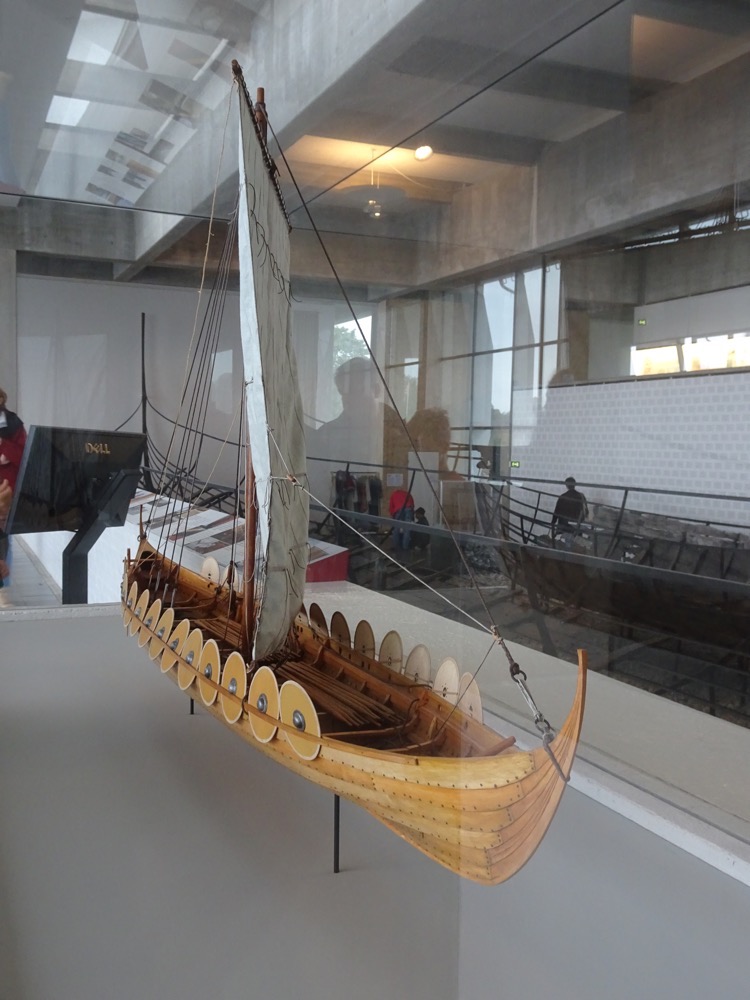
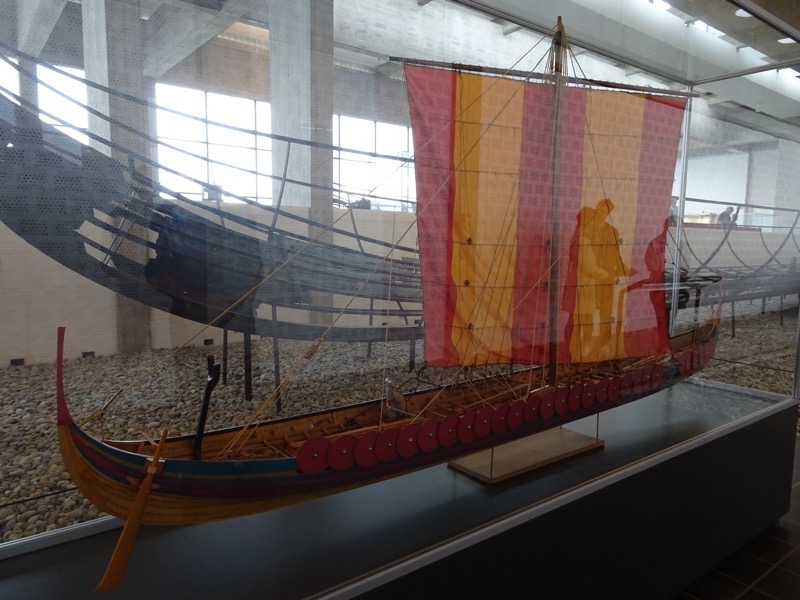
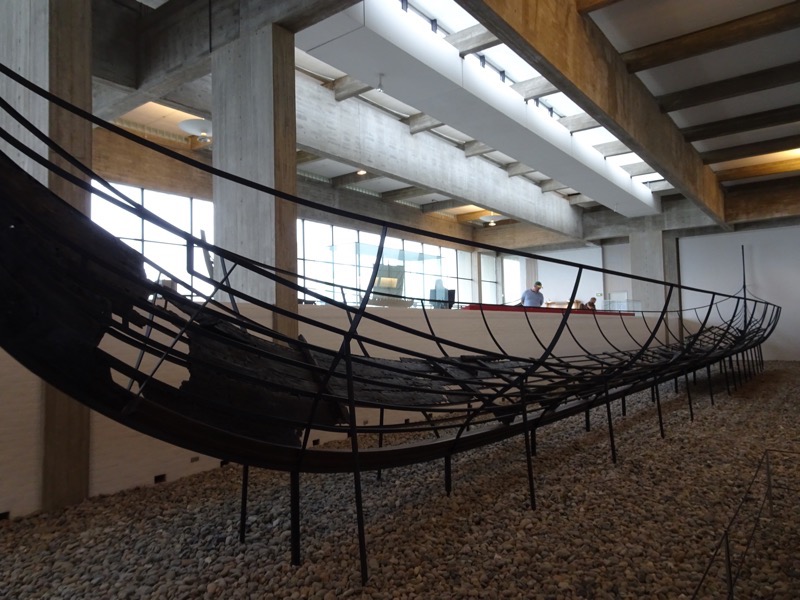 Small Fishing vessel – this ship is a combined rowing and sailing vessel probably built for fishing or seal hunting. It was built of pine planks near Sognefjord in Norway. Later an extra plank was added to increase the height of the side in order to transport more efficiently cargoes of livestock, trading goods or people. During the alterations, the rowlocks were removed and the number of oars reduced. The conversion suggests that the ship was probably used more for transport and less fishing, sailing with a smaller crew.
Small Fishing vessel – this ship is a combined rowing and sailing vessel probably built for fishing or seal hunting. It was built of pine planks near Sognefjord in Norway. Later an extra plank was added to increase the height of the side in order to transport more efficiently cargoes of livestock, trading goods or people. During the alterations, the rowlocks were removed and the number of oars reduced. The conversion suggests that the ship was probably used more for transport and less fishing, sailing with a smaller crew.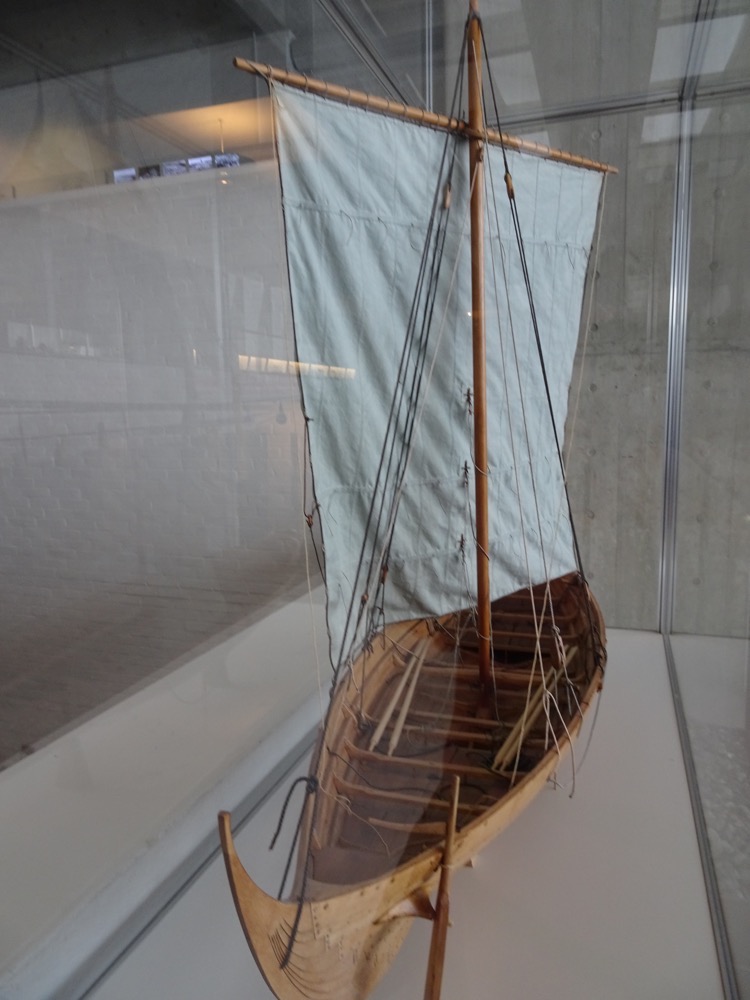
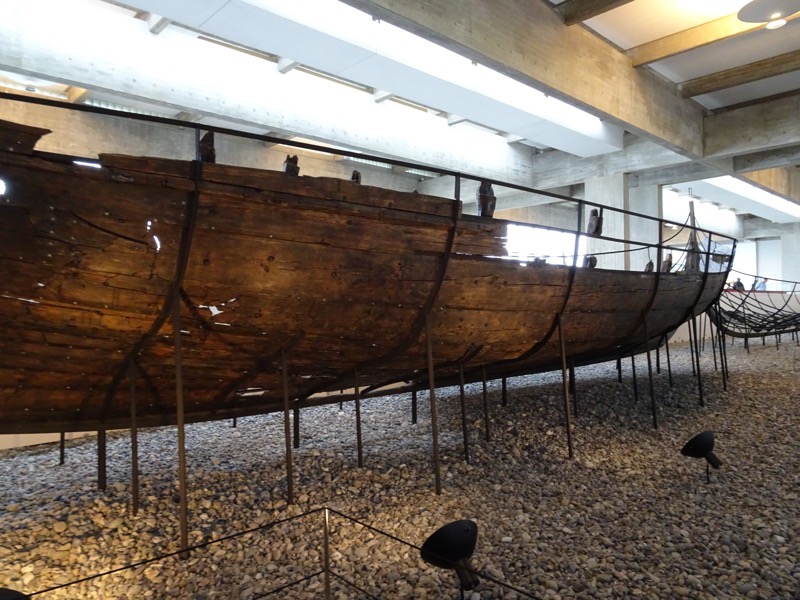
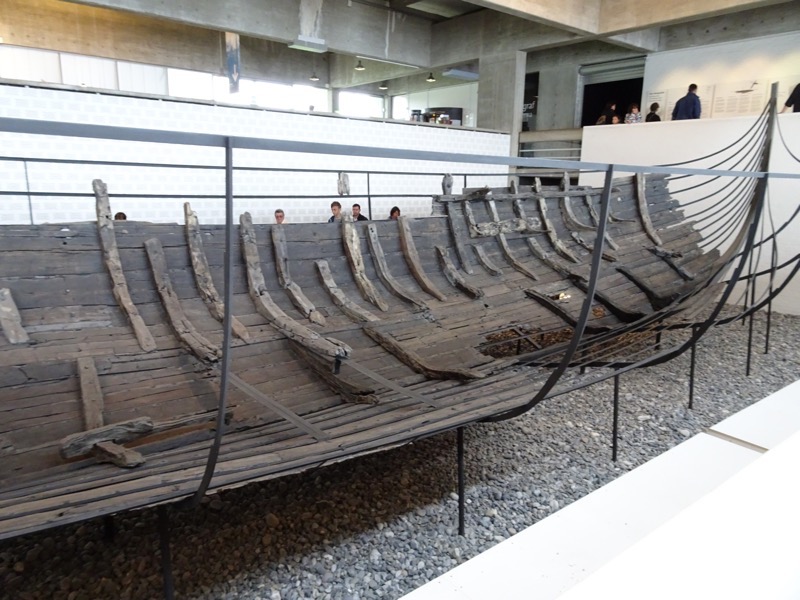
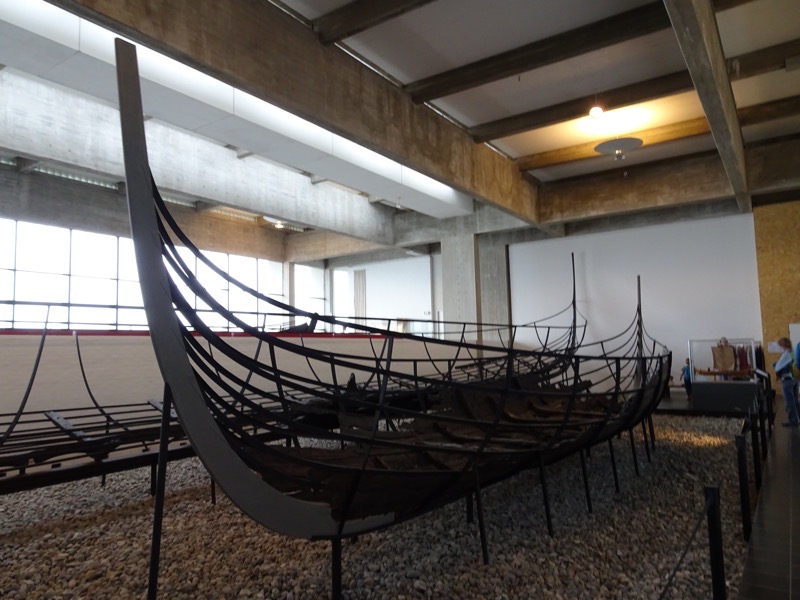

After the museum we stopped for a bite to eat at the shipyard’s cafe – New Nordic Viking Food as it was touted on the menu, so we thought we’d give it a crack. A flatbread plate with a beer, some red wine and some mead… it was so good!
 Beer-braised pork with crunchy crackling on flat bread with cabbage, grated carrot, pickled red onion, watercress and sea buckthorn salad with herbed crime fraiche dressing.
Beer-braised pork with crunchy crackling on flat bread with cabbage, grated carrot, pickled red onion, watercress and sea buckthorn salad with herbed crime fraiche dressing.
After lunch, we walked into Roskilde to see the famous Roskilde Cathedral. Roskilde Cathedral is the first gothic cathedral to be built of brick – its success encouraged the brick gothic style throughout Northern Europe. Originally constructed during the 12th to 13th centuries, the cathedral has many gothic and romanesque architectural features. It was Zealand’s only cathedral until the early 20th century.
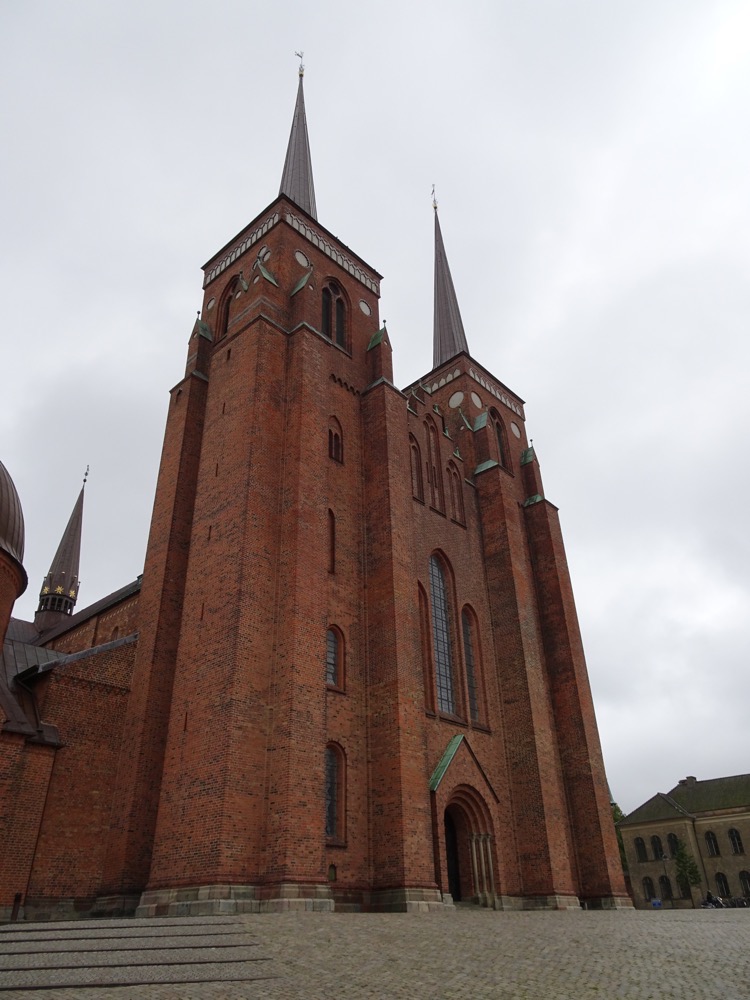 It’s beautiful twin spires dominate the skyline of the city of Roskilde.
It’s beautiful twin spires dominate the skyline of the city of Roskilde.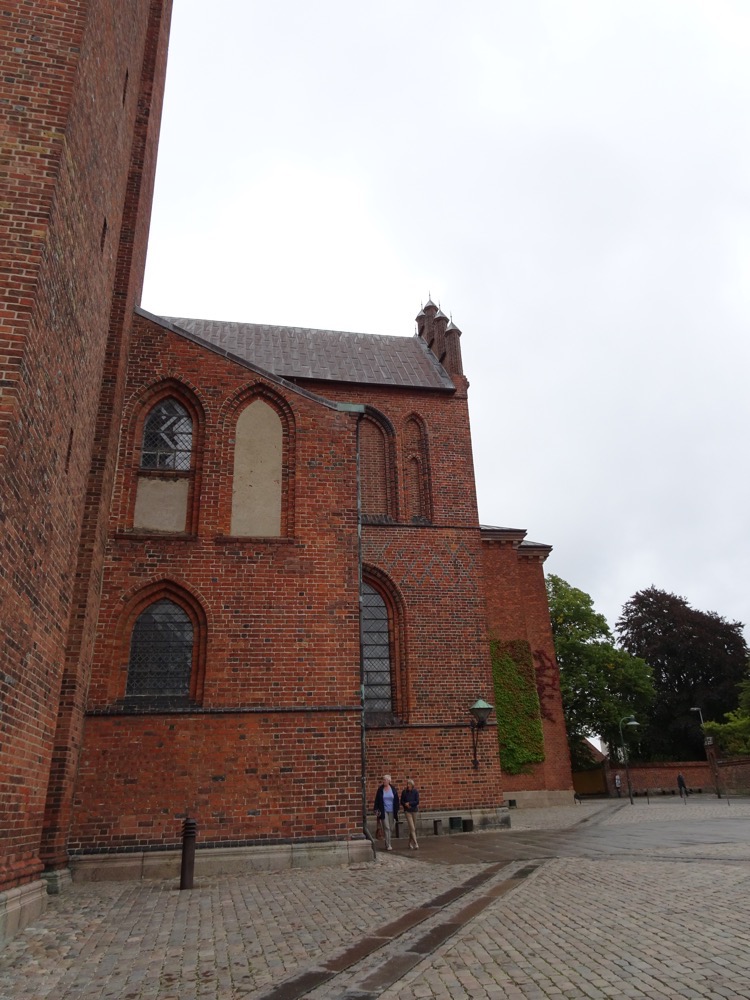
 Towards the altar and the nave of the church.
Towards the altar and the nave of the church. Pulpit, c.1610 AD.
Pulpit, c.1610 AD.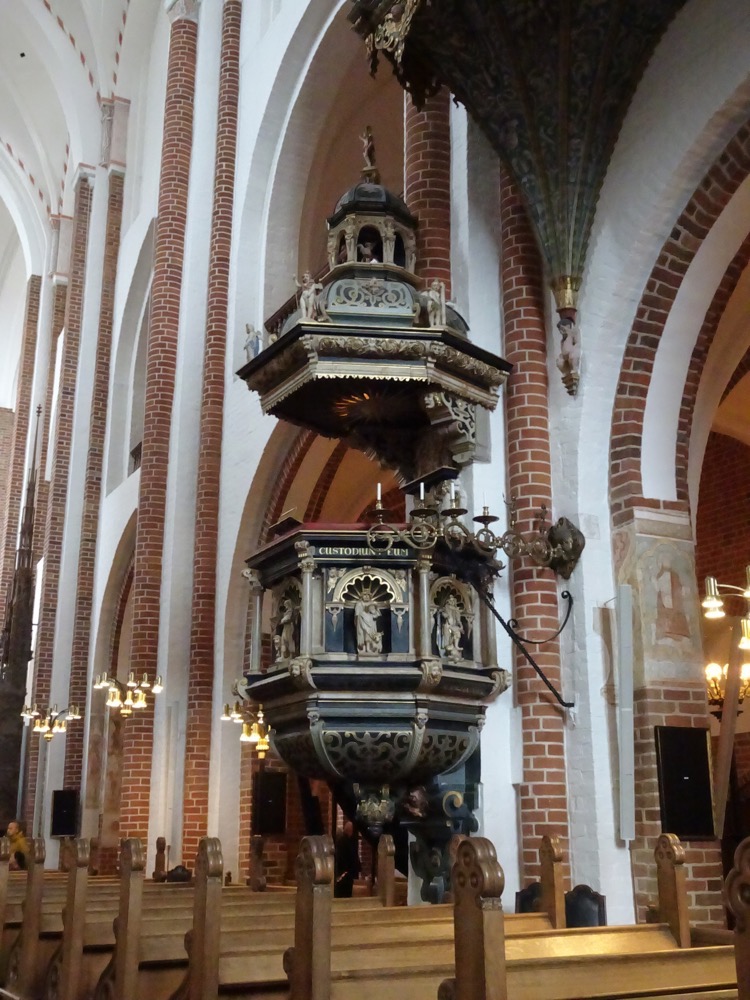 Gorgeous carved timber pews worn with age.
Gorgeous carved timber pews worn with age.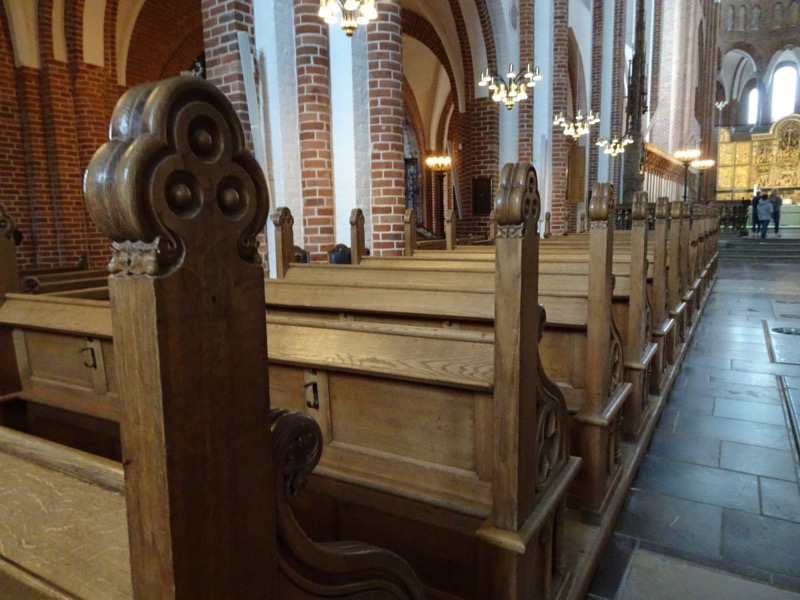 Organ.
Organ.
 Stalls leading towards the altar.
Stalls leading towards the altar.
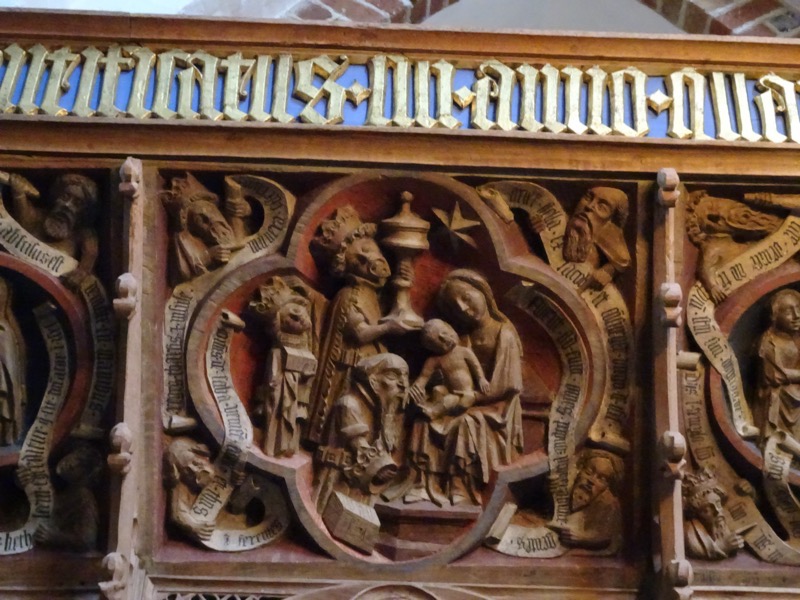 I have no idea what this guy with the club is doing to that baby… but it could be a representation of the Slaughter of the Innocents.
I have no idea what this guy with the club is doing to that baby… but it could be a representation of the Slaughter of the Innocents.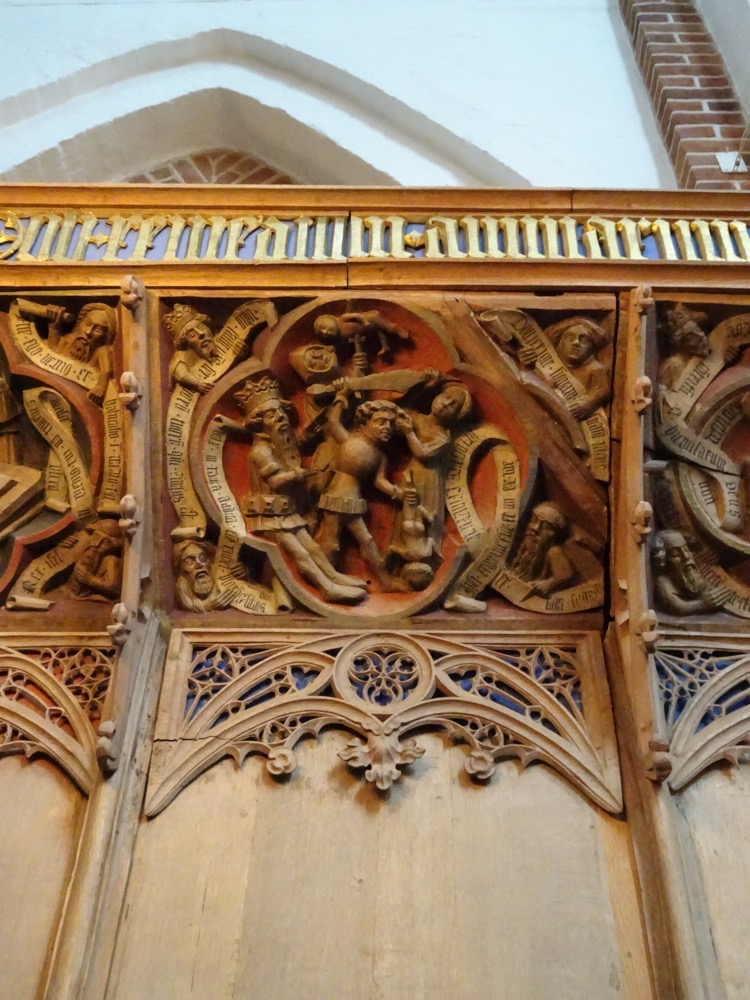 The magnificent altarpiece, c.1555 AD, was a gift from Christian IV of Denmark.
The magnificent altarpiece, c.1555 AD, was a gift from Christian IV of Denmark.
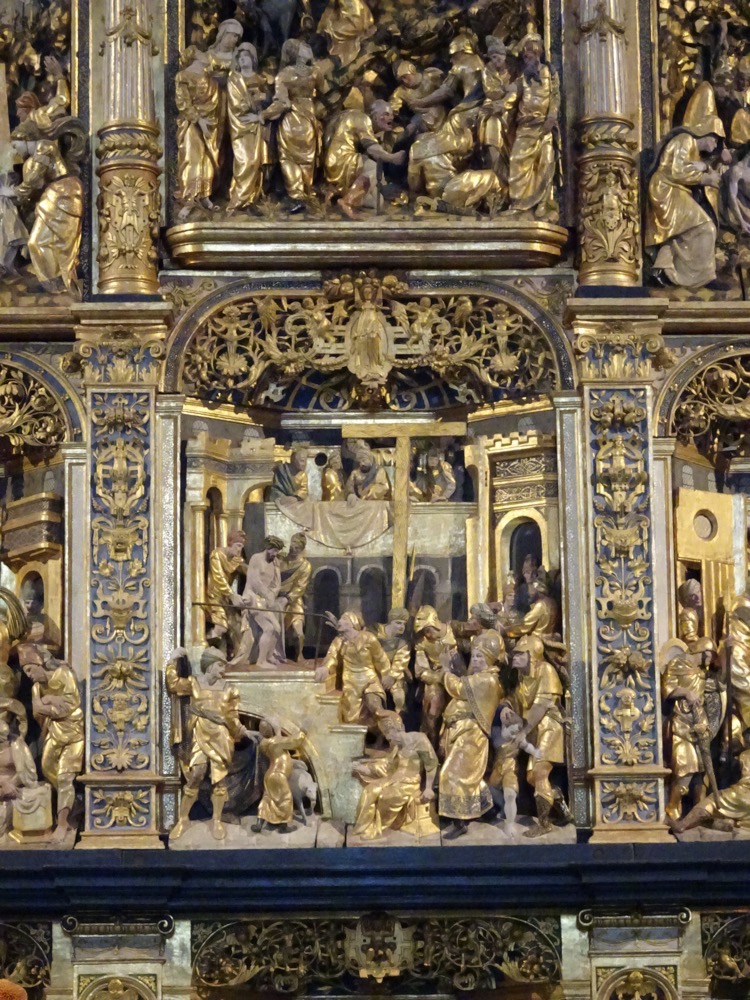 The cathedral has been the primary burial site for Danish monarchs since the 15th century – to accommodate an increasing number of royals over the centuries, it has been extended and altered to contain a considerable number of burial chapels.
The cathedral has been the primary burial site for Danish monarchs since the 15th century – to accommodate an increasing number of royals over the centuries, it has been extended and altered to contain a considerable number of burial chapels. Burial tomb of Margarethe I of Denmark.
Burial tomb of Margarethe I of Denmark.
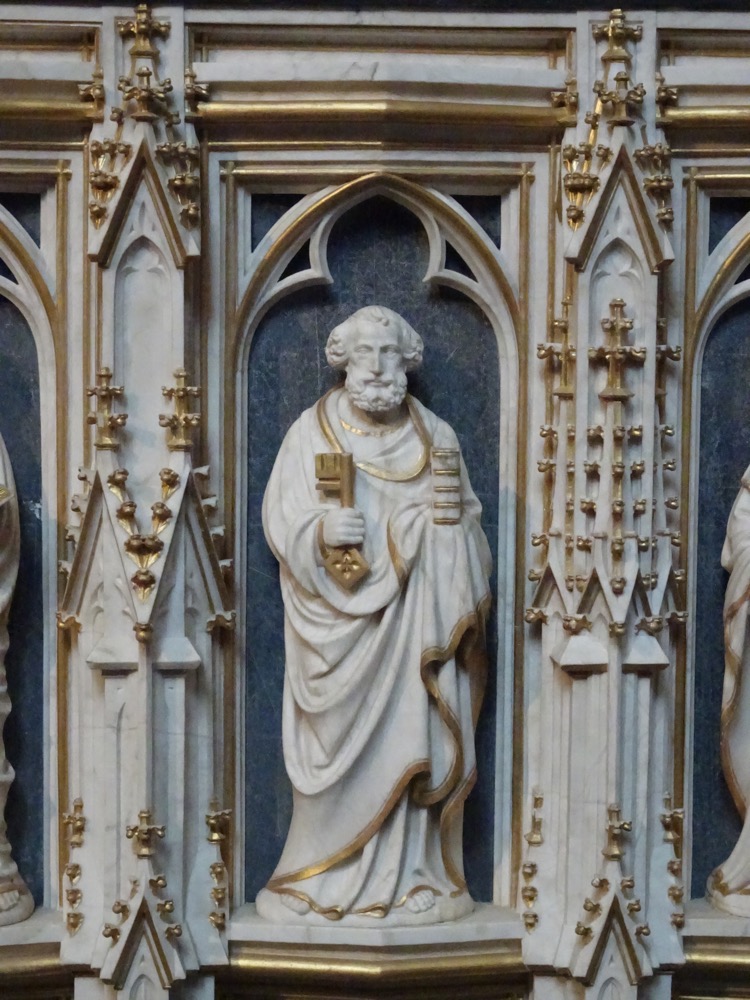
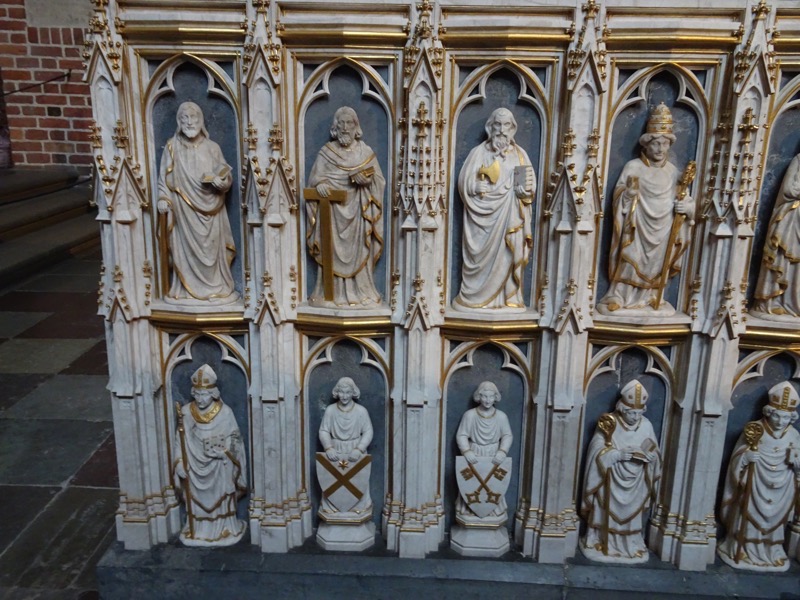
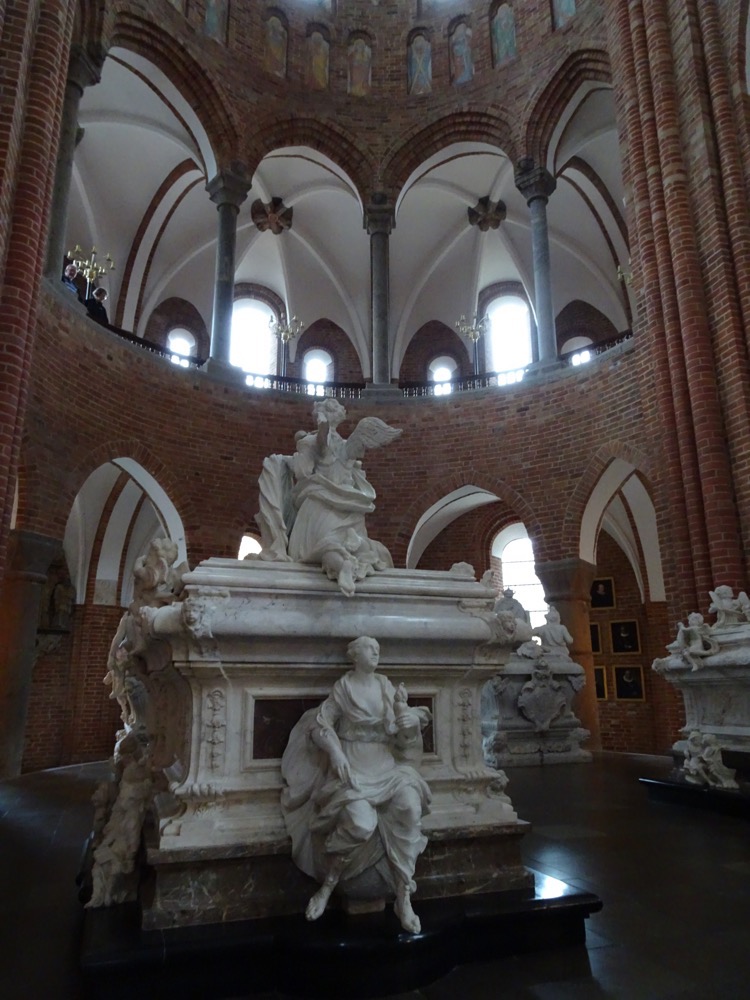
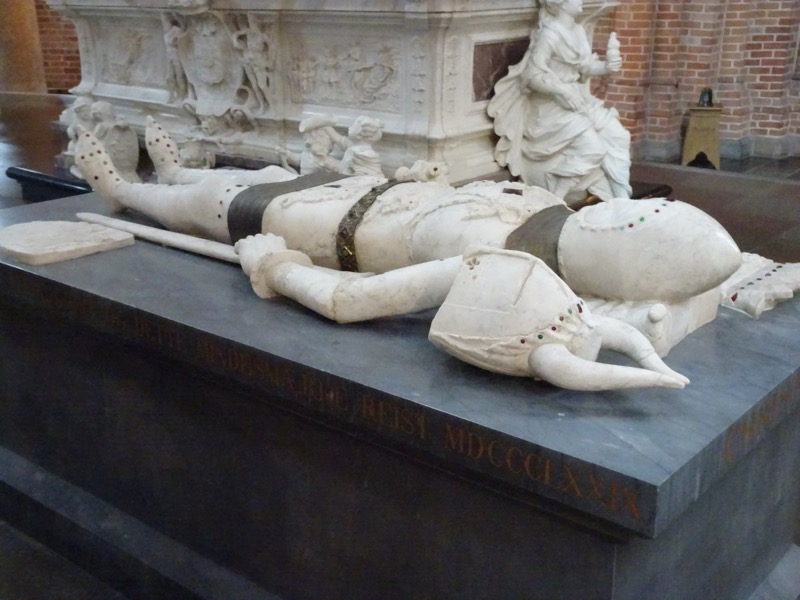

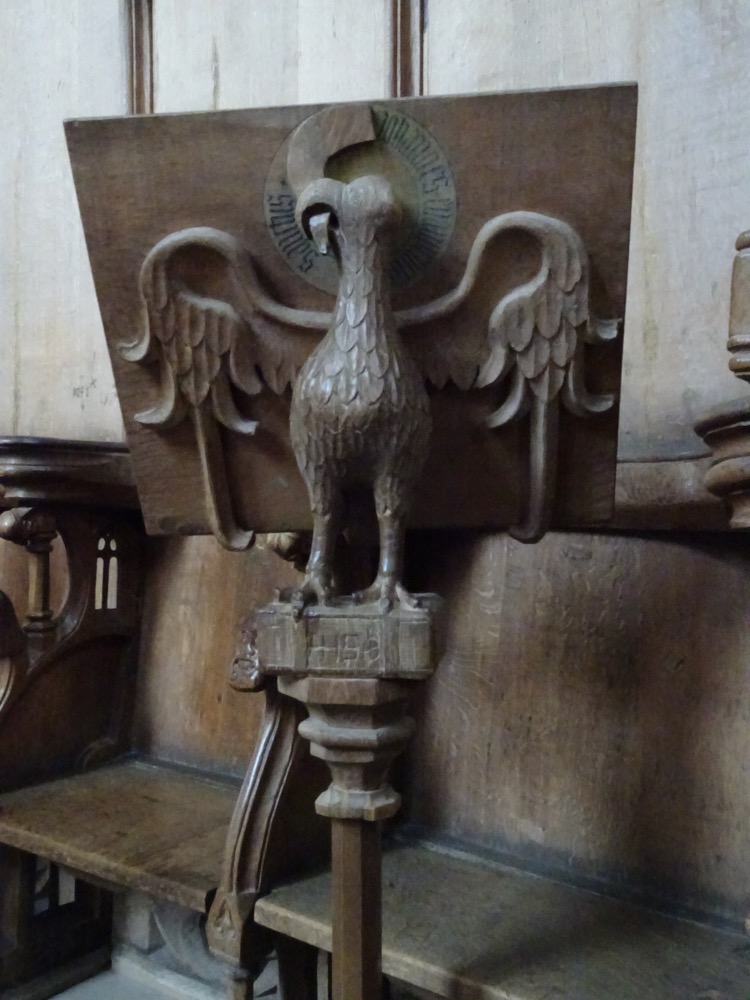
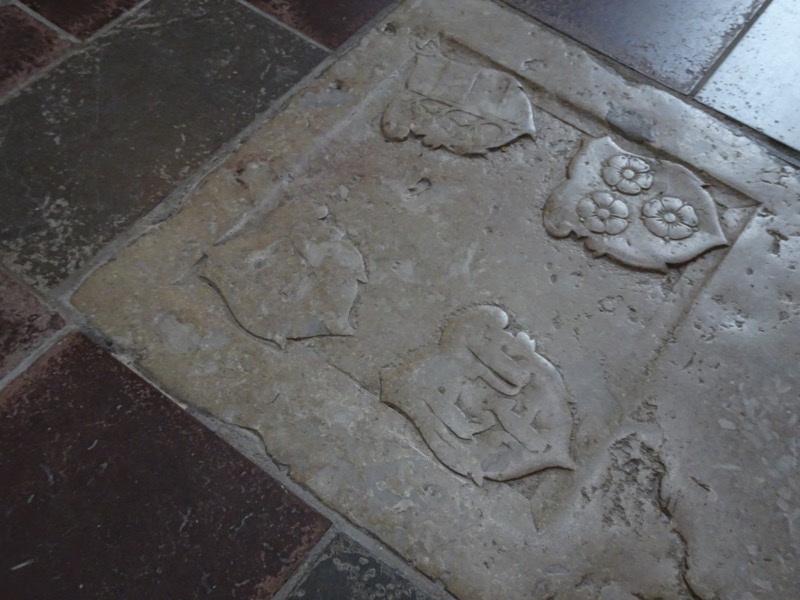
 The crypt directly under the altar.
The crypt directly under the altar.

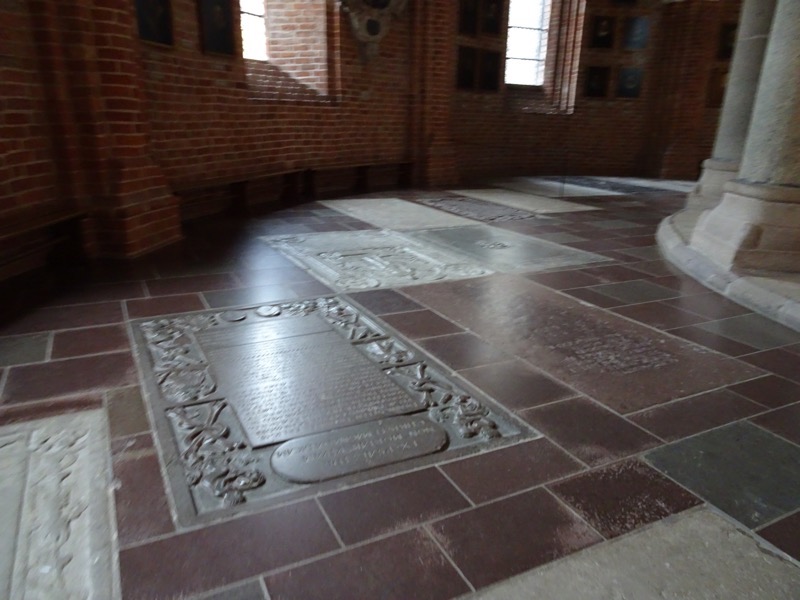
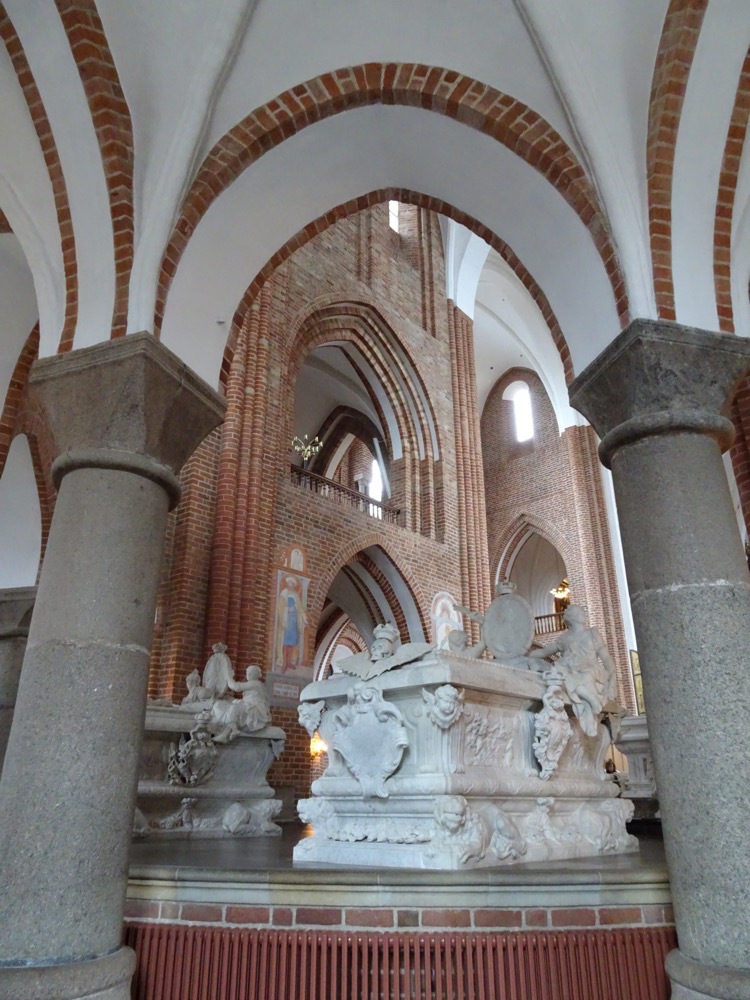
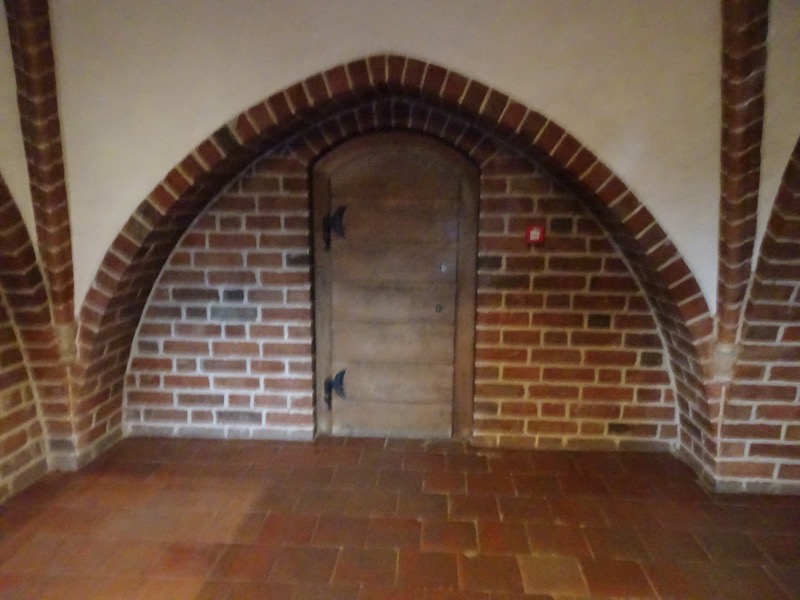 Looking down on the crypts behind the altar from the choir balconies.
Looking down on the crypts behind the altar from the choir balconies.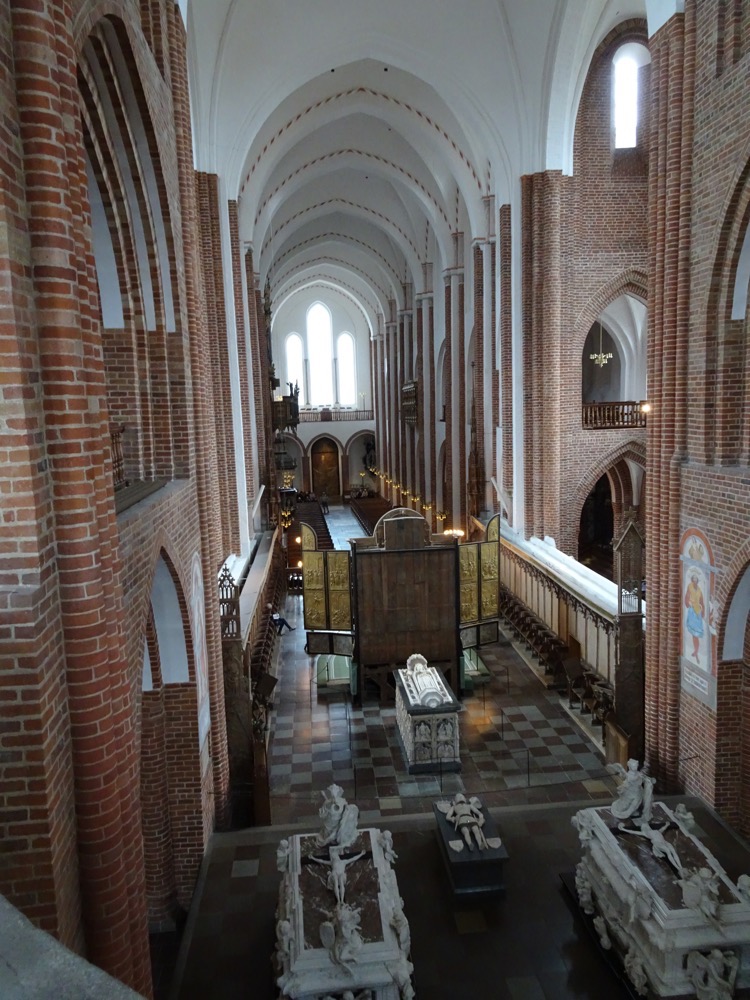
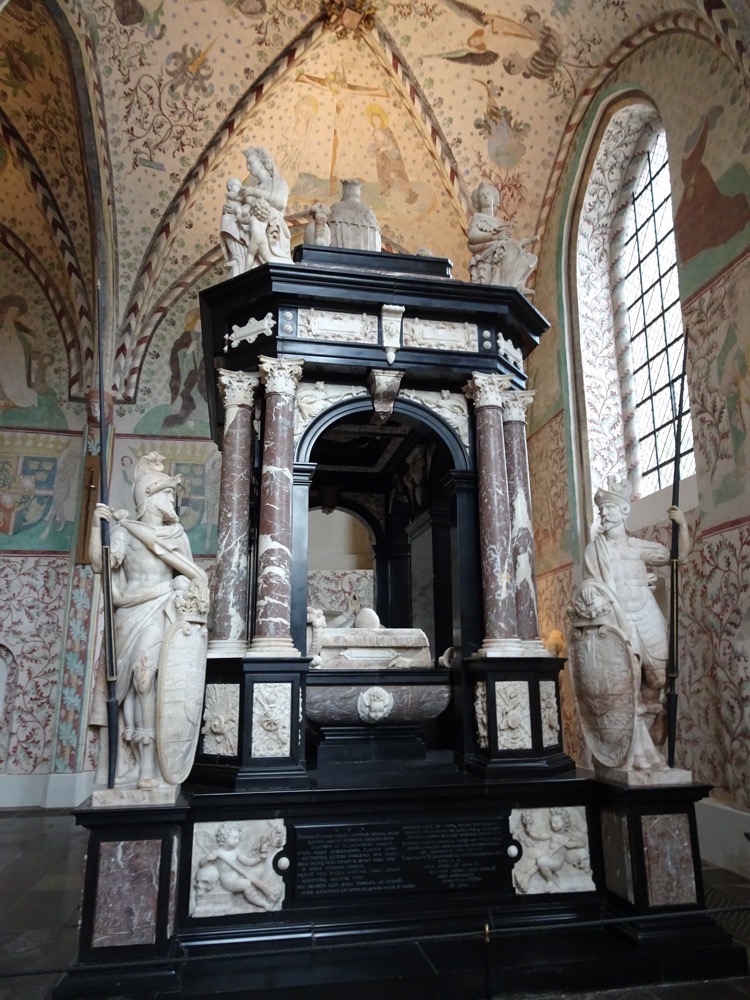 Monument of Frederick II, in the Chapel of the Magi.
Monument of Frederick II, in the Chapel of the Magi.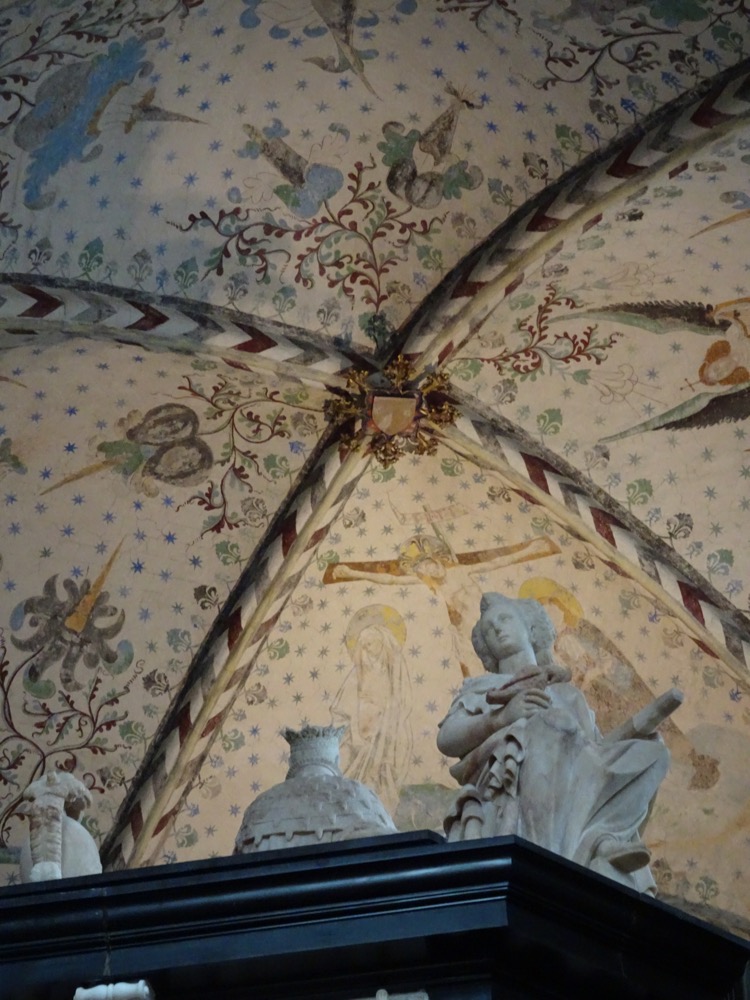
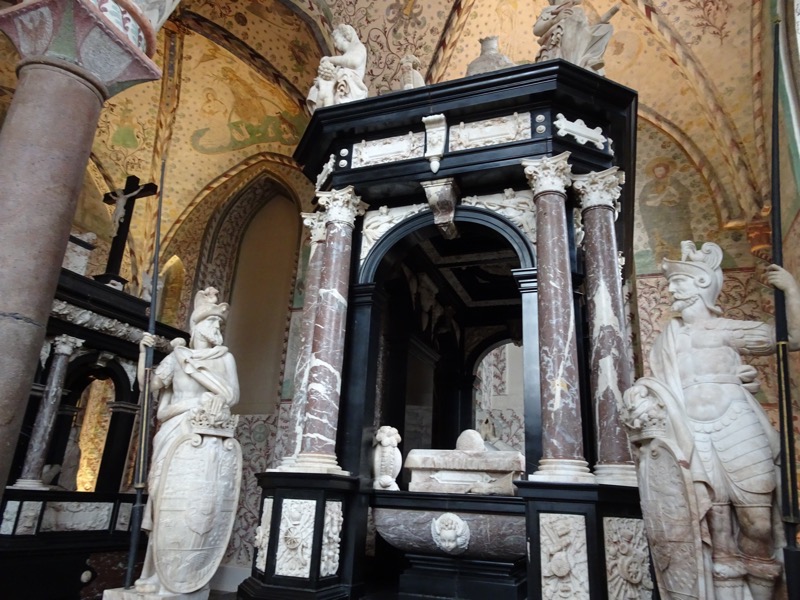
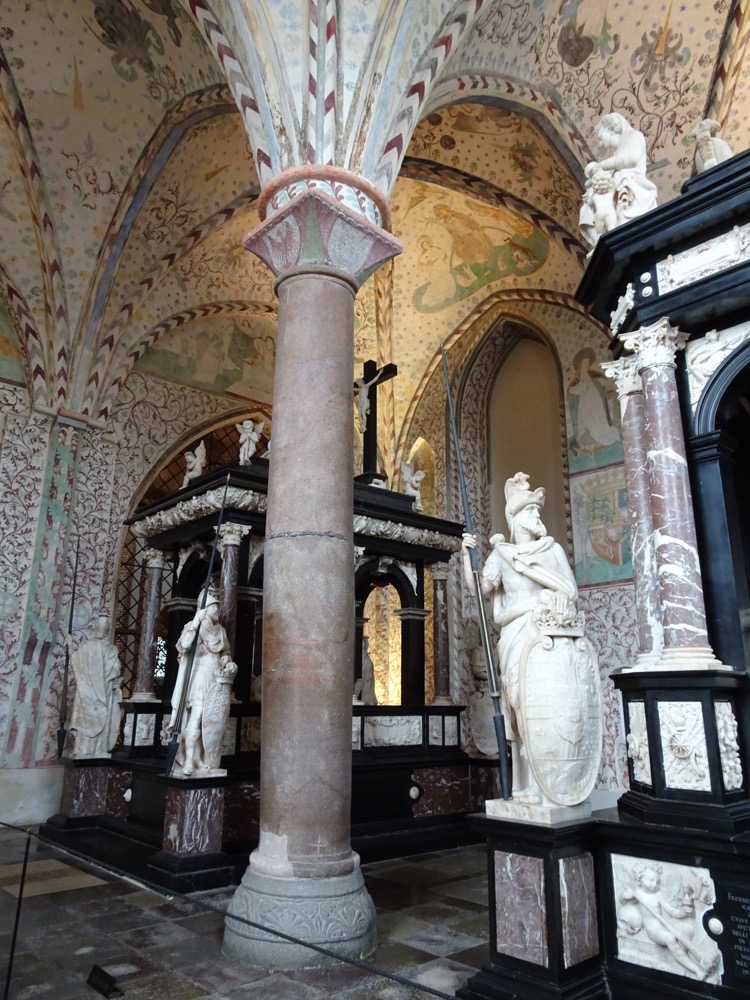
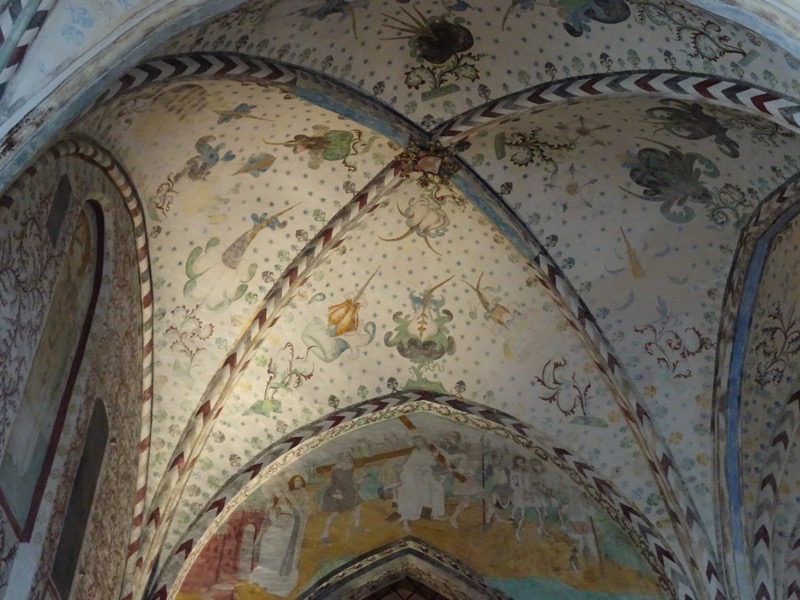 Amusing tourist bus directly outside the cathedral!
Amusing tourist bus directly outside the cathedral!
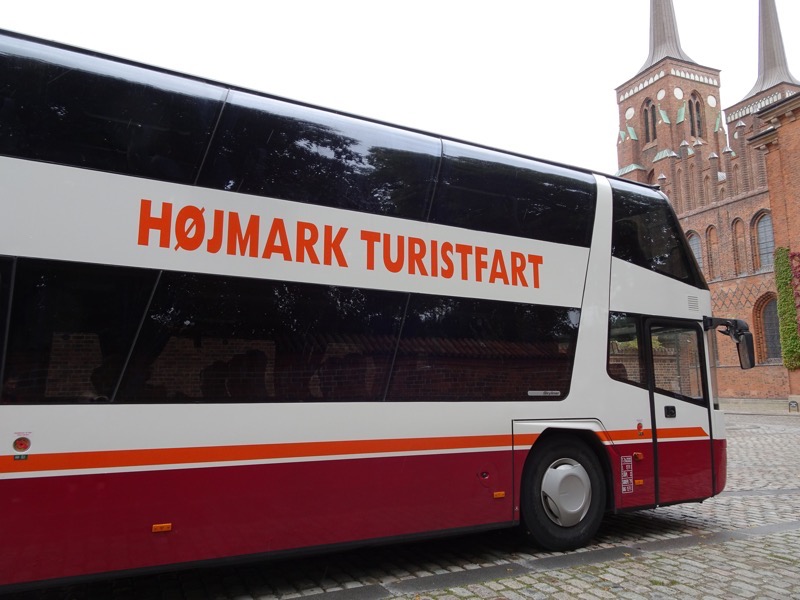 Roskilde pedestrian shopping street – it’s a lovely quiet part of the city. Roskilde Cathedral attracts barely 125,000 visitors each year and as such there is relatively little tourism hustle and bustle here, which makes a nice change from the Copenhagen CBD.
Roskilde pedestrian shopping street – it’s a lovely quiet part of the city. Roskilde Cathedral attracts barely 125,000 visitors each year and as such there is relatively little tourism hustle and bustle here, which makes a nice change from the Copenhagen CBD. Interesting juxtaposition of street art and period building techniques.
Interesting juxtaposition of street art and period building techniques. After Roskilde, we head back to Copenhagen to rest our feets before finding somewhere funky and local to have dinner… Sadly, in our quest to avoid another Irish pub, (this area is just littered with them) we ended up at a Hard Rock Cafe ! 😛
After Roskilde, we head back to Copenhagen to rest our feets before finding somewhere funky and local to have dinner… Sadly, in our quest to avoid another Irish pub, (this area is just littered with them) we ended up at a Hard Rock Cafe ! 😛

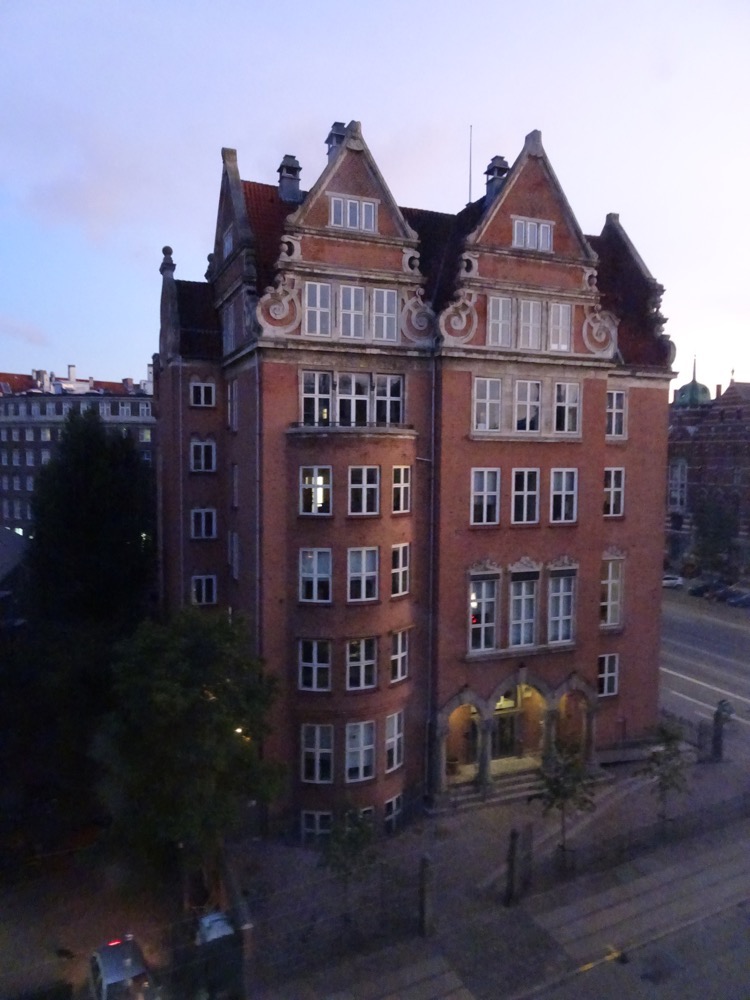 We took the train to Helsingor, which took about 40 minutes from Copenhagen Central Station. The Copenhagen Pass has been great – covered all public transport costs and nearly all our musuem and attraction entry costs.
We took the train to Helsingor, which took about 40 minutes from Copenhagen Central Station. The Copenhagen Pass has been great – covered all public transport costs and nearly all our musuem and attraction entry costs.
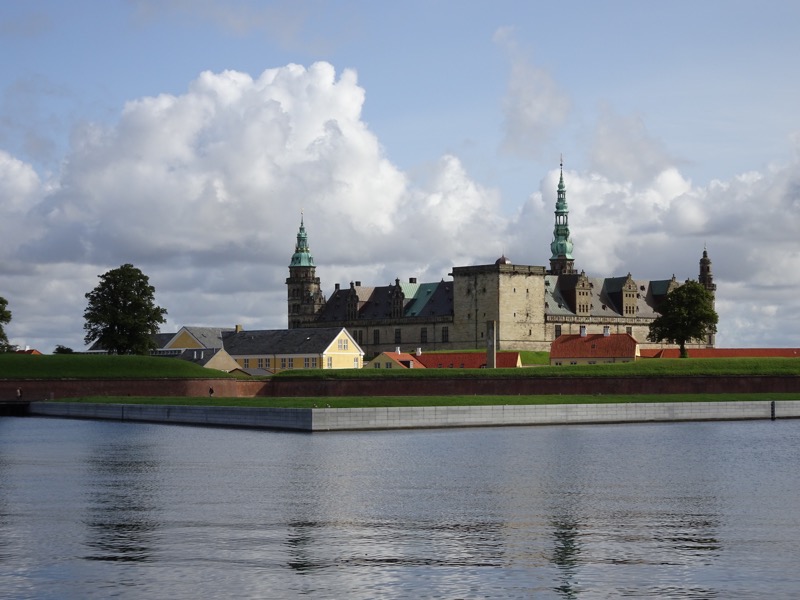 The castle is located at the north-easternmost tip of the island of Zealand, which is also the narrowest point of the Oresund Sound – the body of water between modern day Denmark and Sweden, just as it was at the time the castle was built. Here, it is barely 4 kilometers to Sweden. The coastal fortification was of major strategic importance as it commanded one of the few outlets to the Baltic Sea.
The castle is located at the north-easternmost tip of the island of Zealand, which is also the narrowest point of the Oresund Sound – the body of water between modern day Denmark and Sweden, just as it was at the time the castle was built. Here, it is barely 4 kilometers to Sweden. The coastal fortification was of major strategic importance as it commanded one of the few outlets to the Baltic Sea.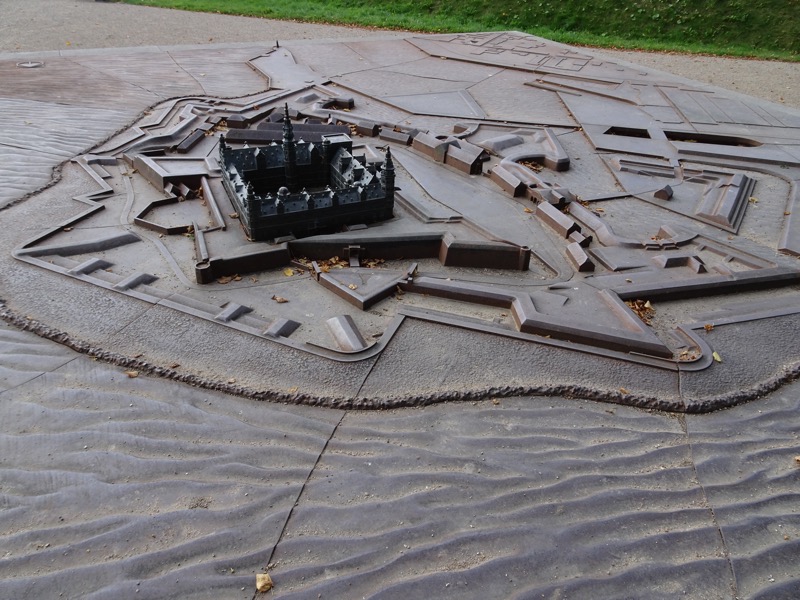
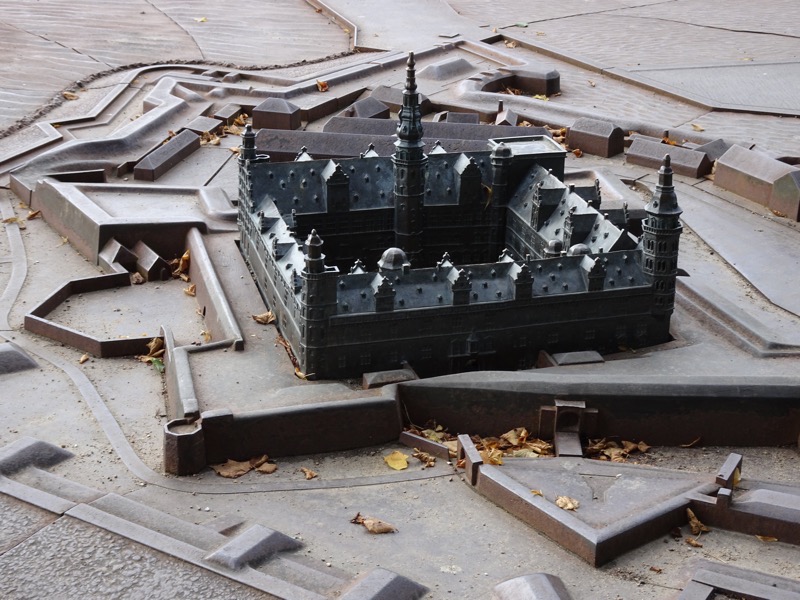

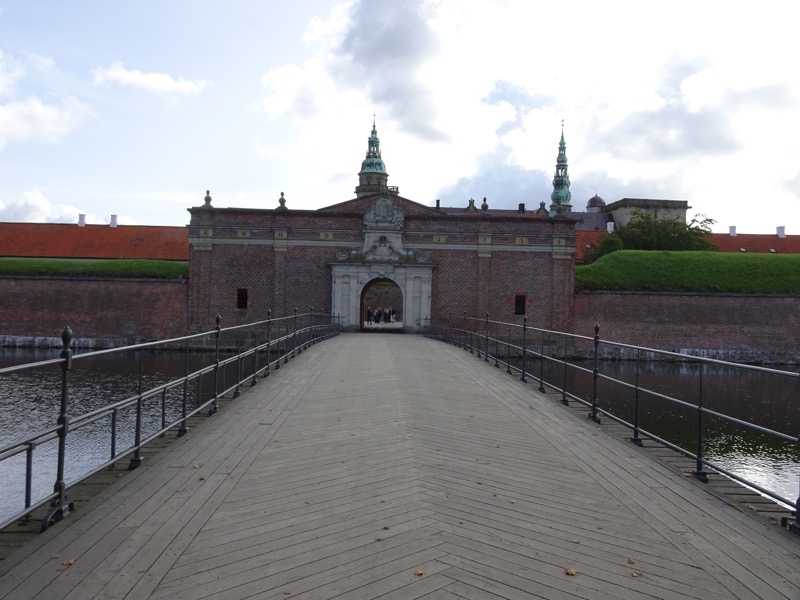 The castle is surrounded by garrisons and barrack buildings.
The castle is surrounded by garrisons and barrack buildings.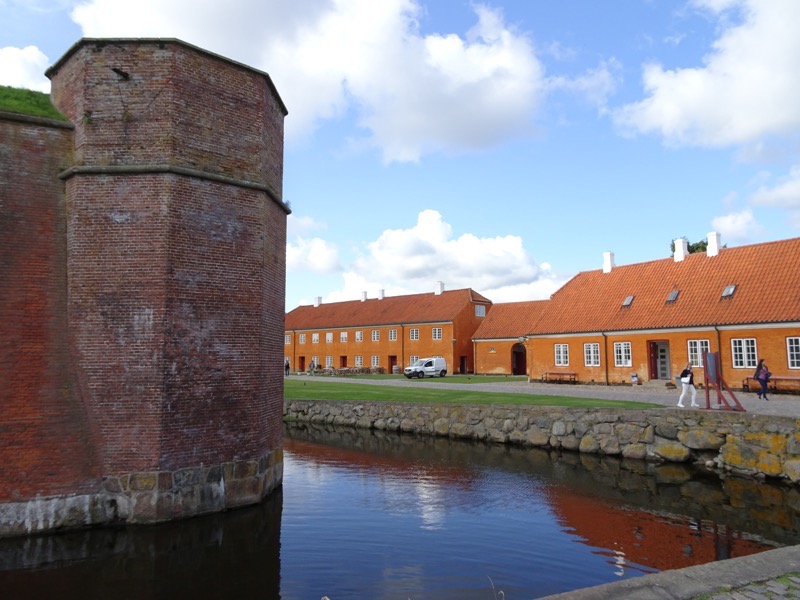 Main entrance to the castle keep.
Main entrance to the castle keep.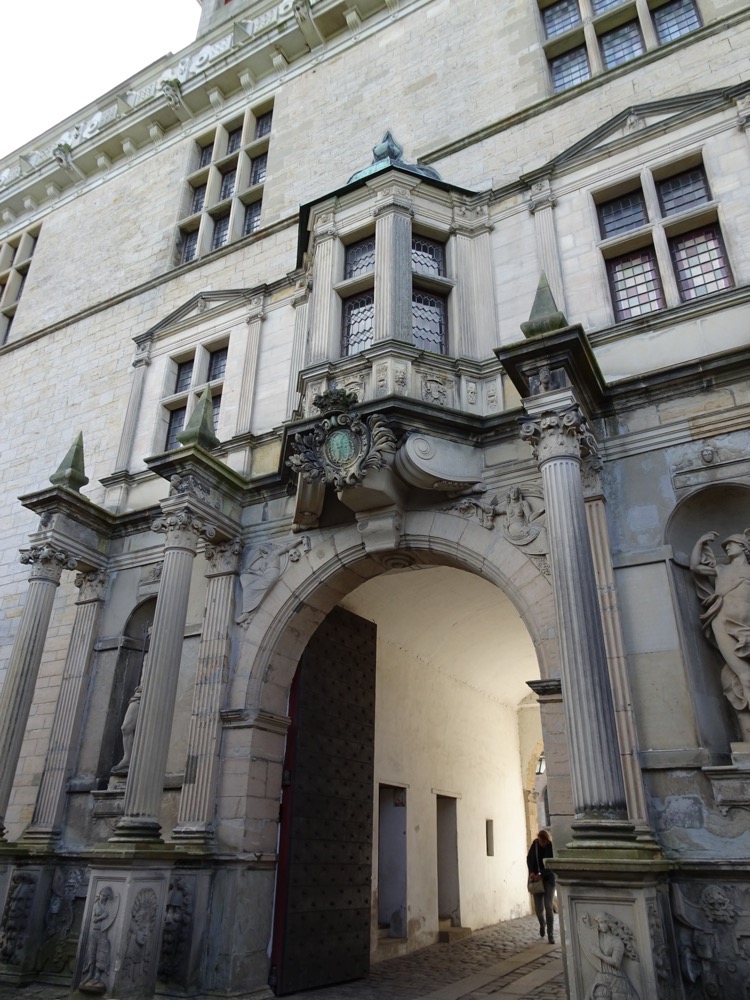
 The central courtyard and the Canon Tower.
The central courtyard and the Canon Tower.
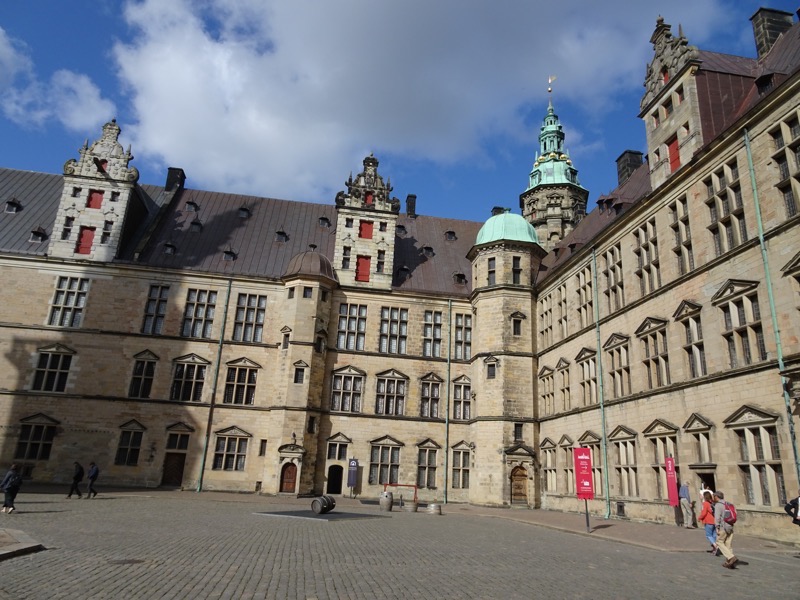
 Love the old Medieval spiral staircases with their worn stone staris.
Love the old Medieval spiral staircases with their worn stone staris.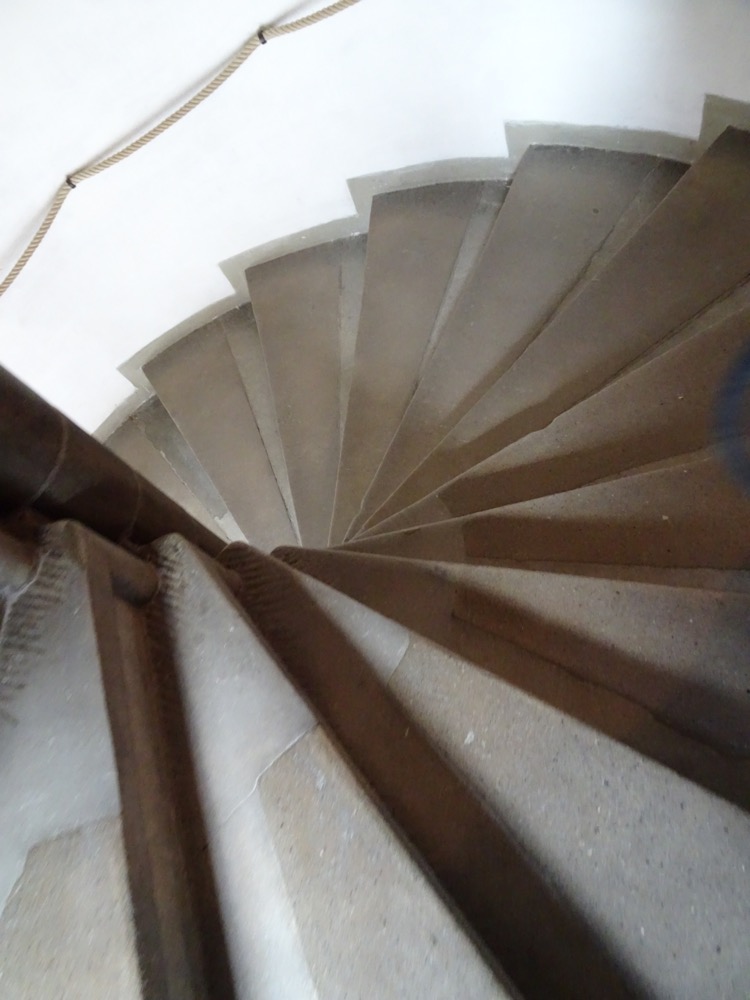 The King’s apartments.
The King’s apartments.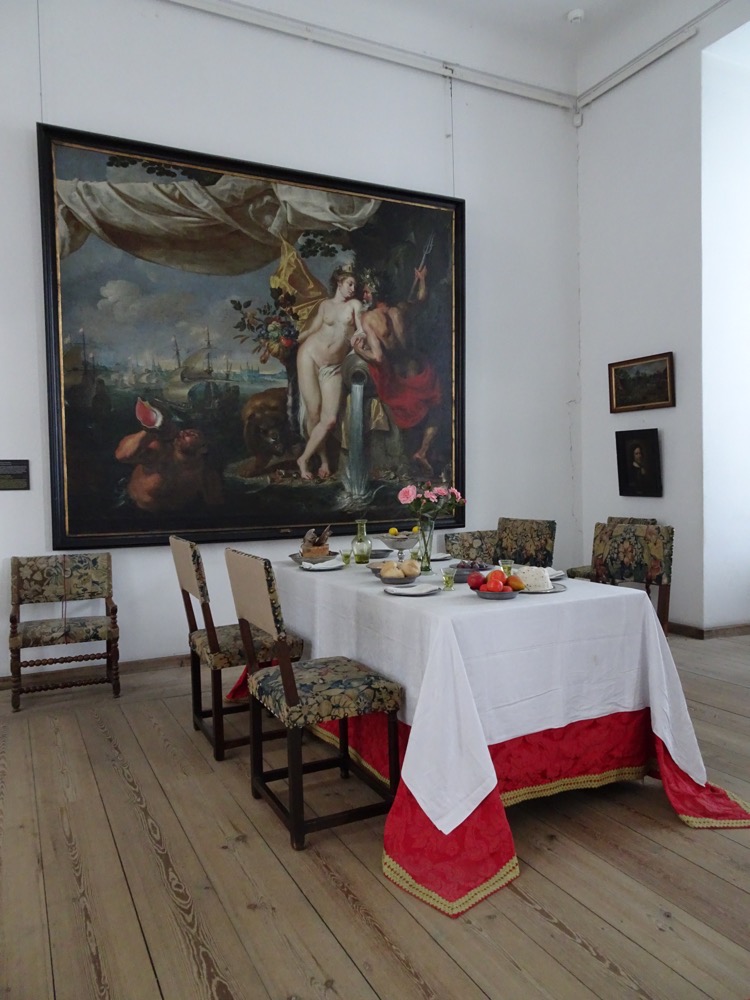 See that land over there? That’s Sweden. Much closer than you’d expect.
See that land over there? That’s Sweden. Much closer than you’d expect.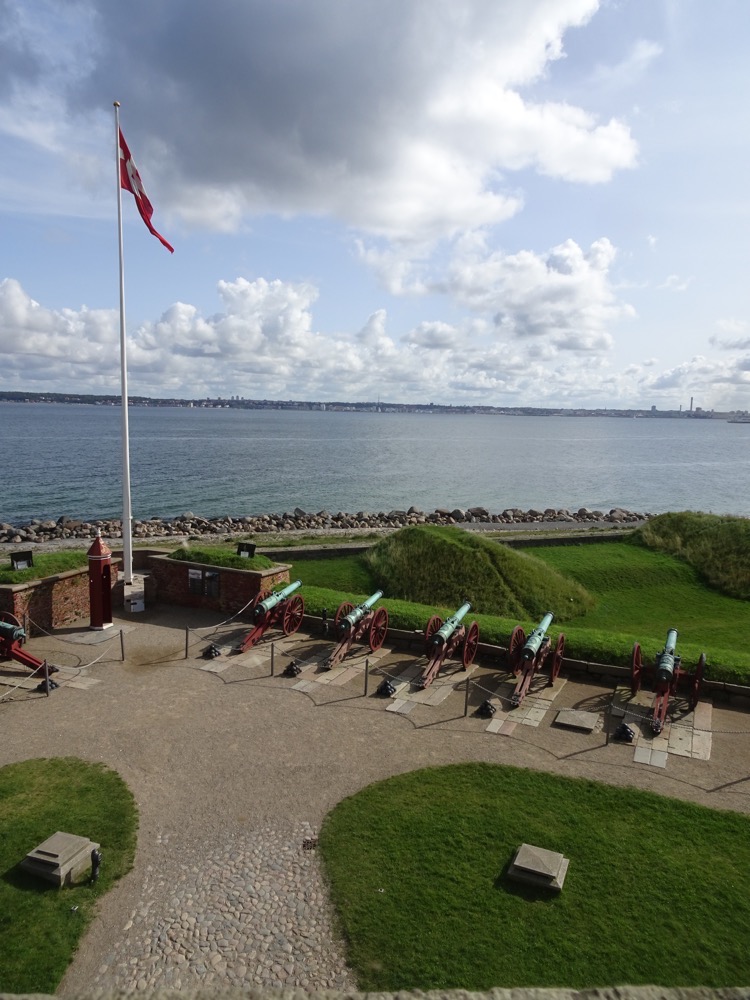 We were headed into ‘the King’s Tapestry Rooms’, which I have to admit I was entering with some trepidation after seeing the very very frightening, Queen’s tapestries made for Queen Margarethe II on the occasion of her 50th birthday at Christiansborg Palace. Thankfully these were not so scary.
We were headed into ‘the King’s Tapestry Rooms’, which I have to admit I was entering with some trepidation after seeing the very very frightening, Queen’s tapestries made for Queen Margarethe II on the occasion of her 50th birthday at Christiansborg Palace. Thankfully these were not so scary.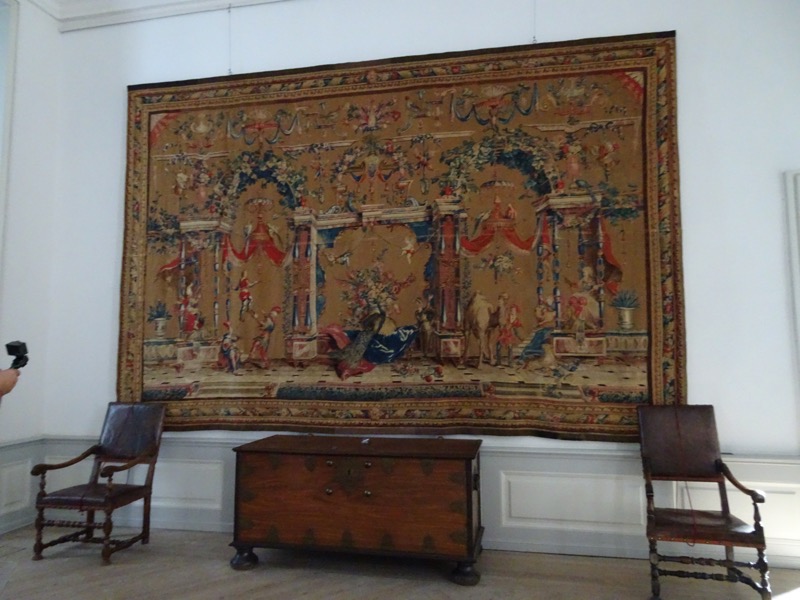 Tapestires, late period, possibly 17th-18th century. There was no information on these ones, they are not the “King’s Tapestries” that we were looking for.
Tapestires, late period, possibly 17th-18th century. There was no information on these ones, they are not the “King’s Tapestries” that we were looking for.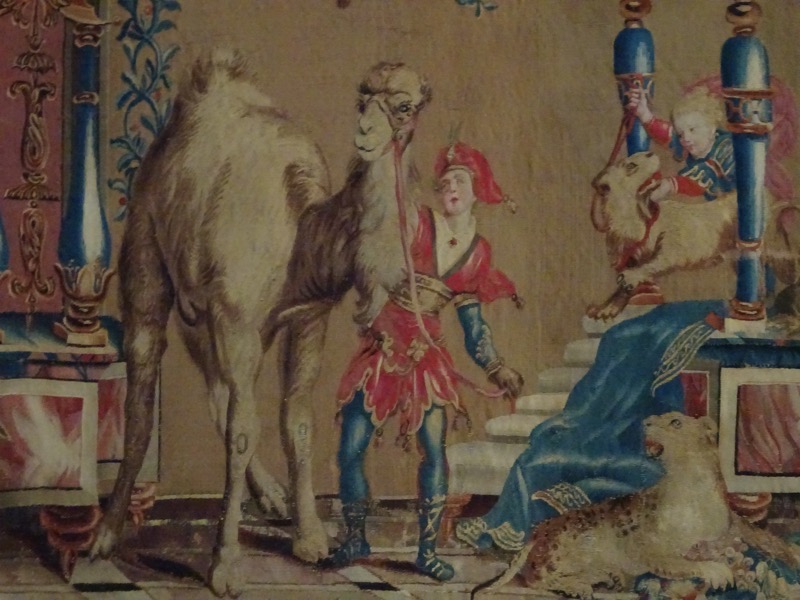
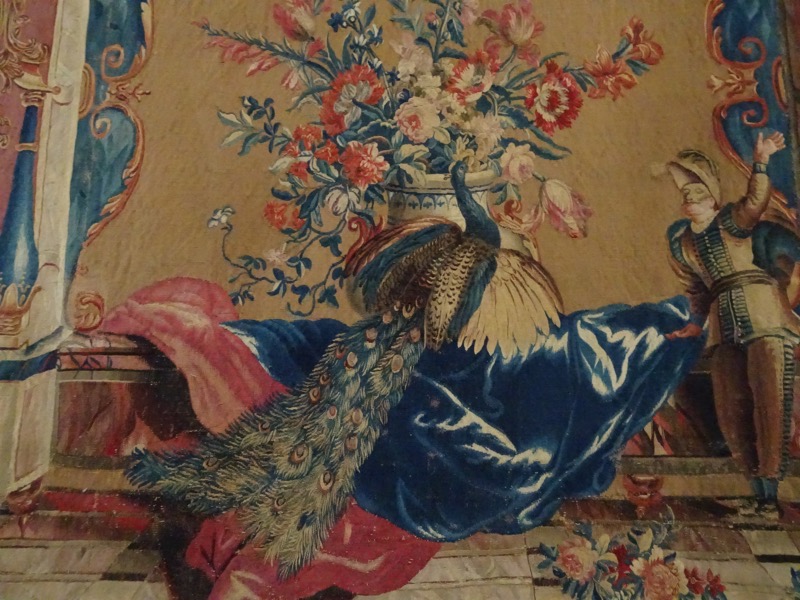
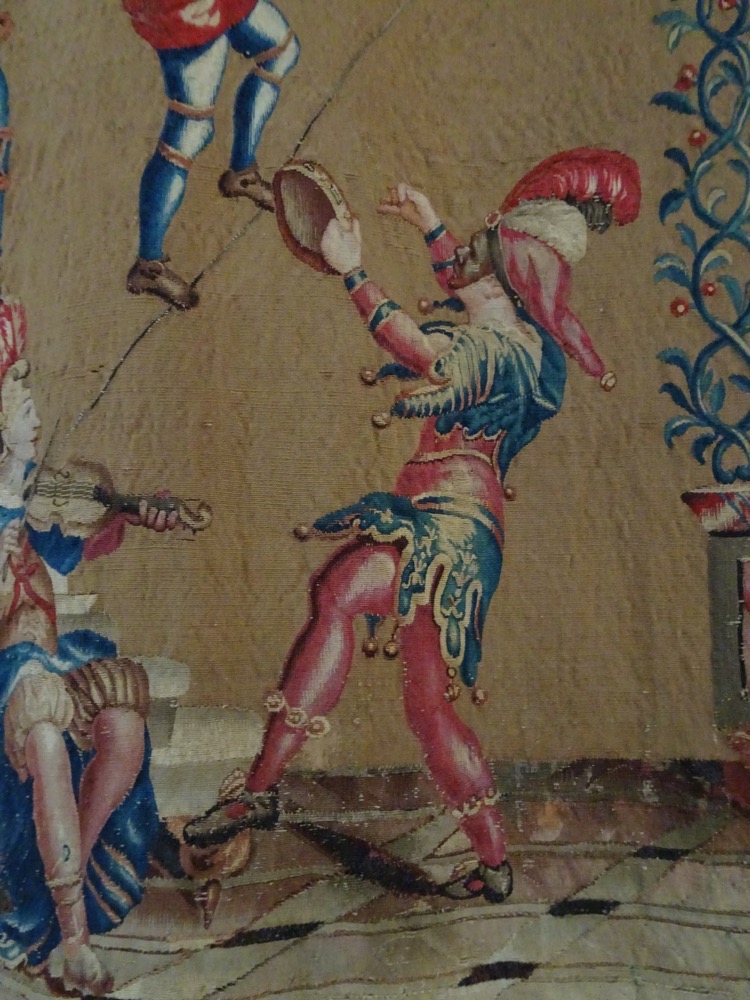 Small apartments with primarily 17th century furnishings.
Small apartments with primarily 17th century furnishings.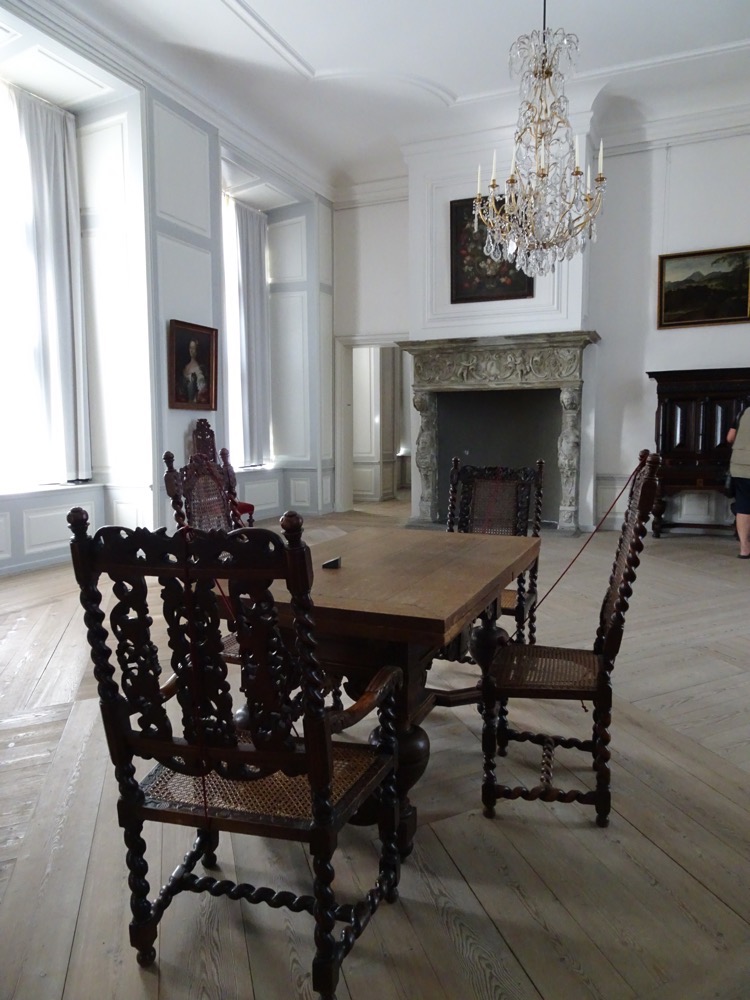 Another later period tapestry…
Another later period tapestry… …with a chick riding a goat. Gotta love it.
…with a chick riding a goat. Gotta love it.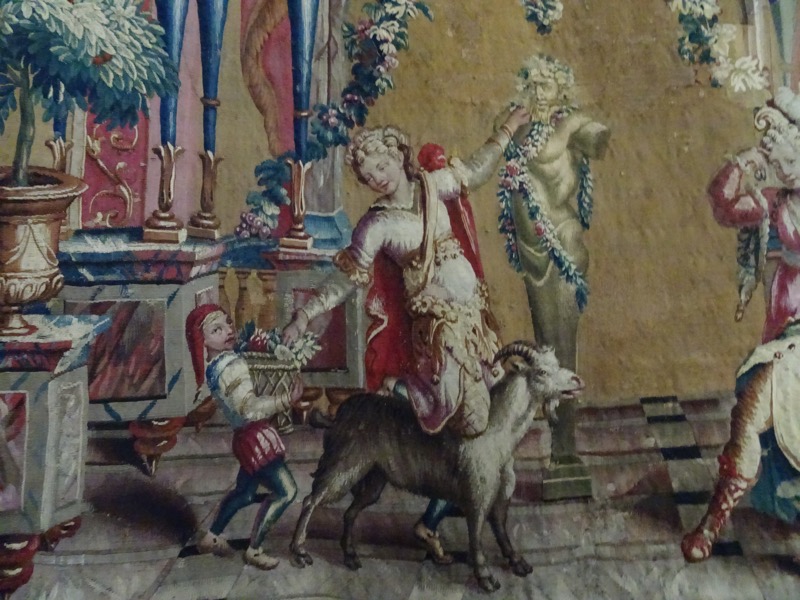 The King’s bedchamber… which seems very modest compared to some of the grand bedchambers we have seen for monarchs in the last couple of weeks.
The King’s bedchamber… which seems very modest compared to some of the grand bedchambers we have seen for monarchs in the last couple of weeks. 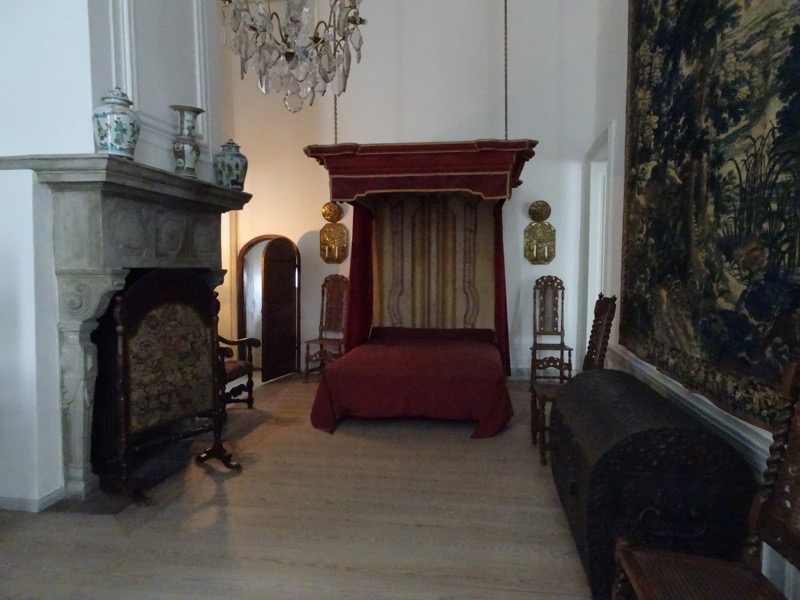

 Older tapestries in the Little Gallery, though these too, are still not the “King’s Tapestries” that we were looking for.
Older tapestries in the Little Gallery, though these too, are still not the “King’s Tapestries” that we were looking for.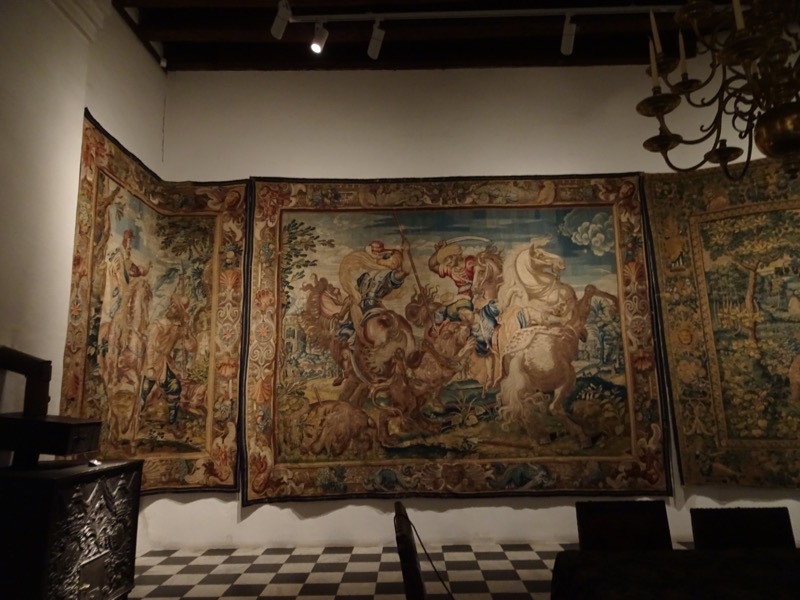
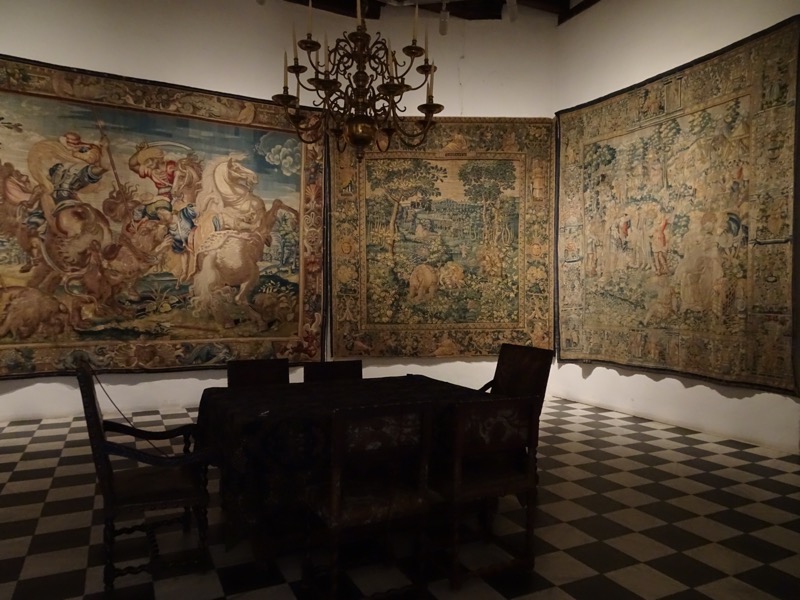 Detail: Pelican or Pheonix?
Detail: Pelican or Pheonix?
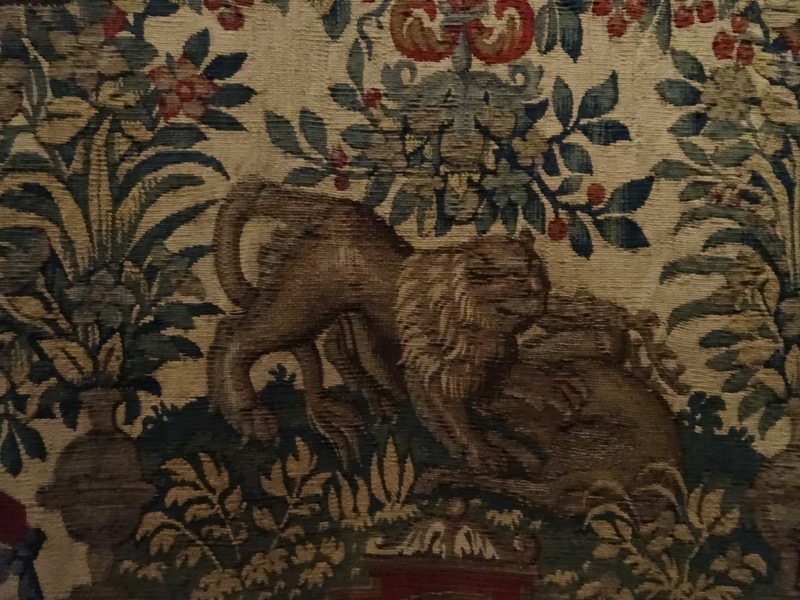
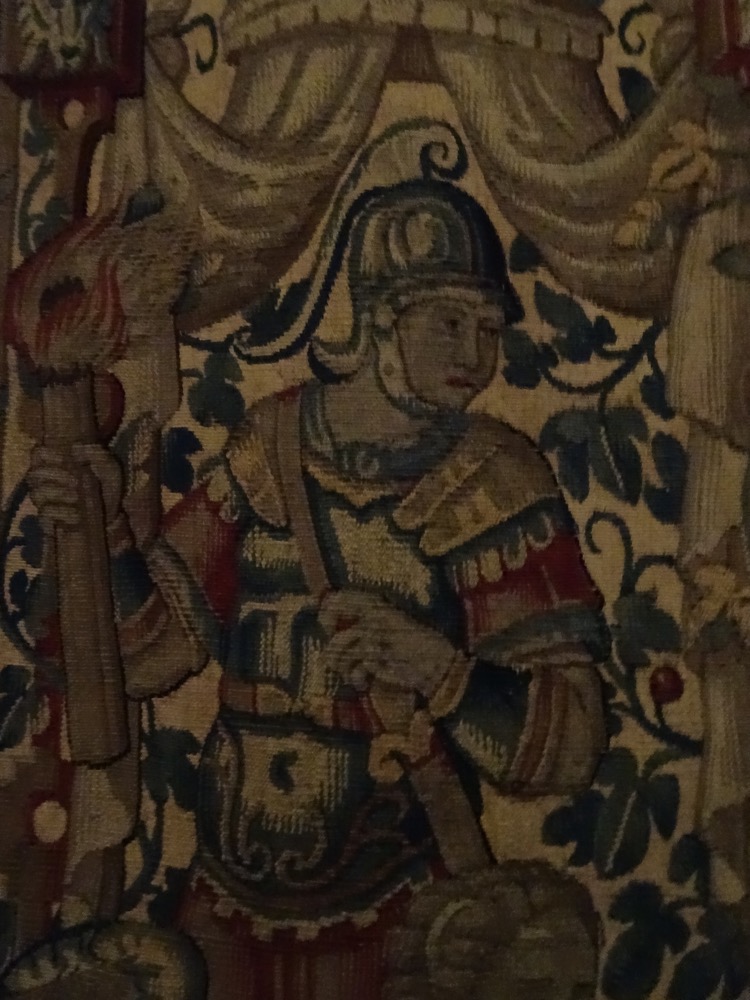



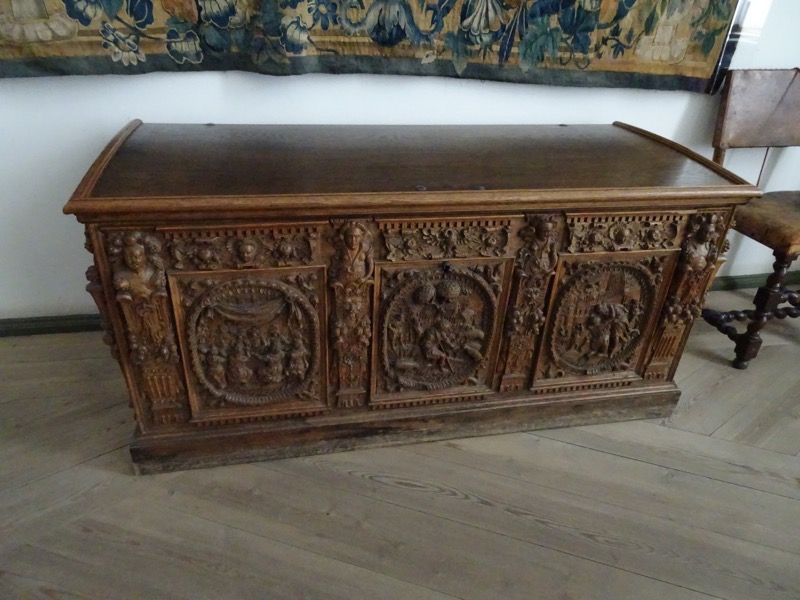 Finally, we found “The Kings Tapestries” Teh walls of the Little Hall are furnished with seven tapestries that were originally from a series of some forty tapestries each depicting the one hundred Danish Kings.. The walls of the Little Hall are furnished with seven tapestries originally from a series of forty tapestries portraying one hundred Danish kings. These Medieval textile masterpieces include the Tapestry depicting Oluf (reigned 1376-1387 and Tapestry depicting King Knud VI (reigned 1182-1202) and they were all commissioned in 1580. There are another seven tapestries from this Medieval series hanging at the National Museum of Denmark, which we visited the other day – but at the time, we could not find any information on the tapestries we viewed there because the Medieval galleries were not so well labelled. So, mystery solved! Unfortunately, other than these fourteen surviving tapestries, the remainder have been lost.
Finally, we found “The Kings Tapestries” Teh walls of the Little Hall are furnished with seven tapestries that were originally from a series of some forty tapestries each depicting the one hundred Danish Kings.. The walls of the Little Hall are furnished with seven tapestries originally from a series of forty tapestries portraying one hundred Danish kings. These Medieval textile masterpieces include the Tapestry depicting Oluf (reigned 1376-1387 and Tapestry depicting King Knud VI (reigned 1182-1202) and they were all commissioned in 1580. There are another seven tapestries from this Medieval series hanging at the National Museum of Denmark, which we visited the other day – but at the time, we could not find any information on the tapestries we viewed there because the Medieval galleries were not so well labelled. So, mystery solved! Unfortunately, other than these fourteen surviving tapestries, the remainder have been lost.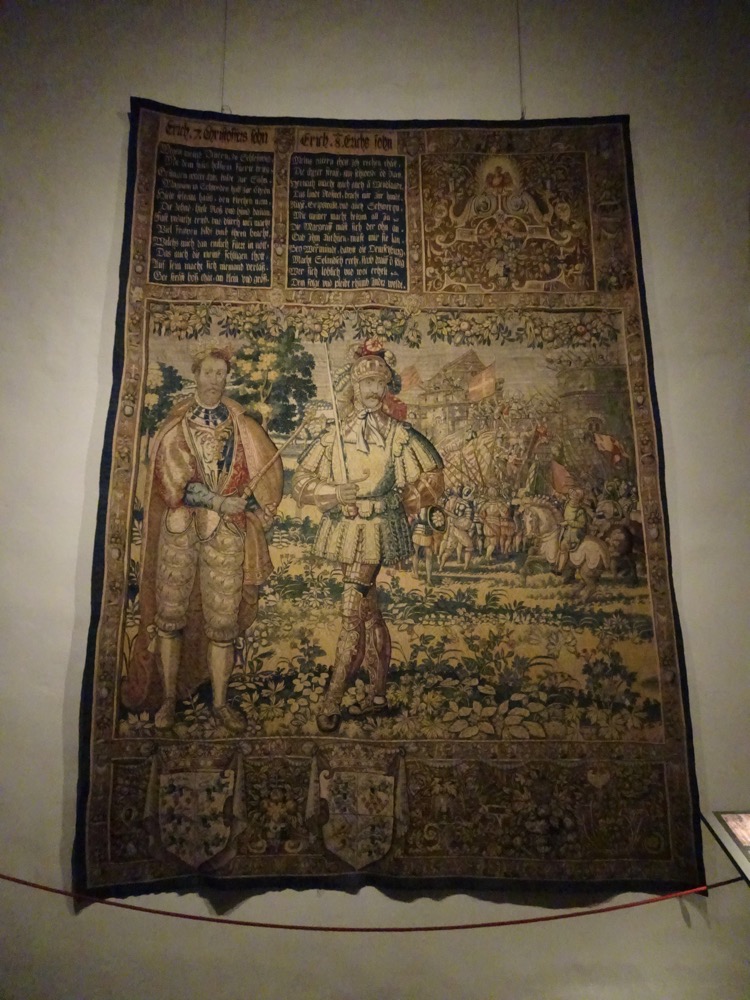
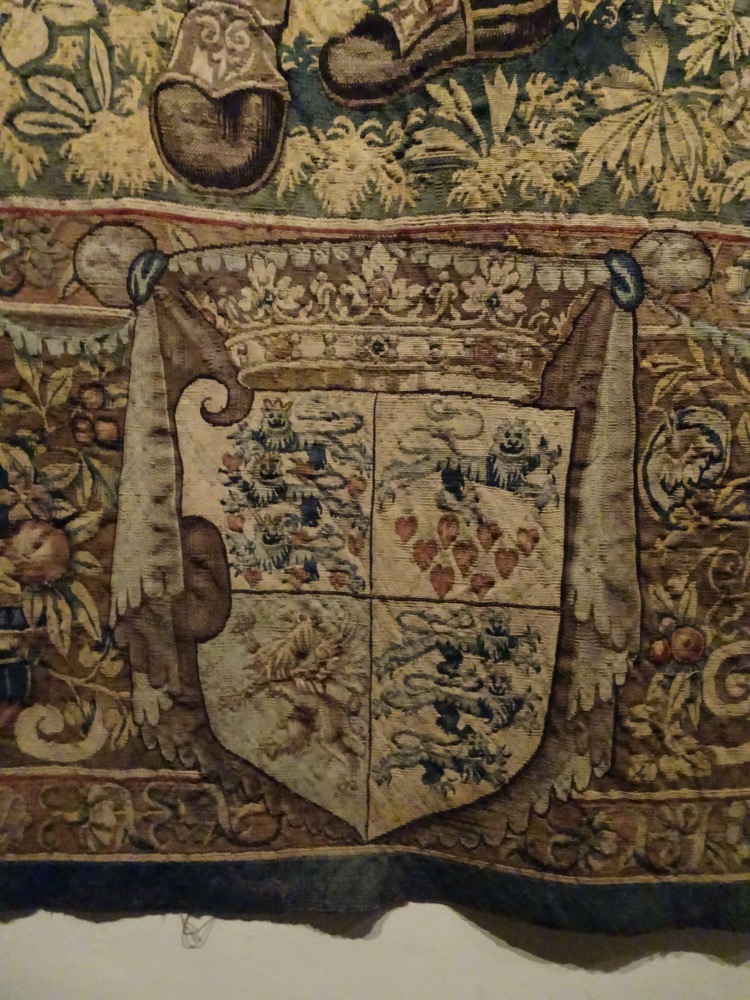 Tapestry of Knud VI – the king wears richly ornamented body armour with sword and shield, emphasizing his royal regalia. He bears a breastplate with the imperial eagle referring to his opposition to the then GeEmperorperor.
Tapestry of Knud VI – the king wears richly ornamented body armour with sword and shield, emphasizing his royal regalia. He bears a breastplate with the imperial eagle referring to his opposition to the then GeEmperorperor. 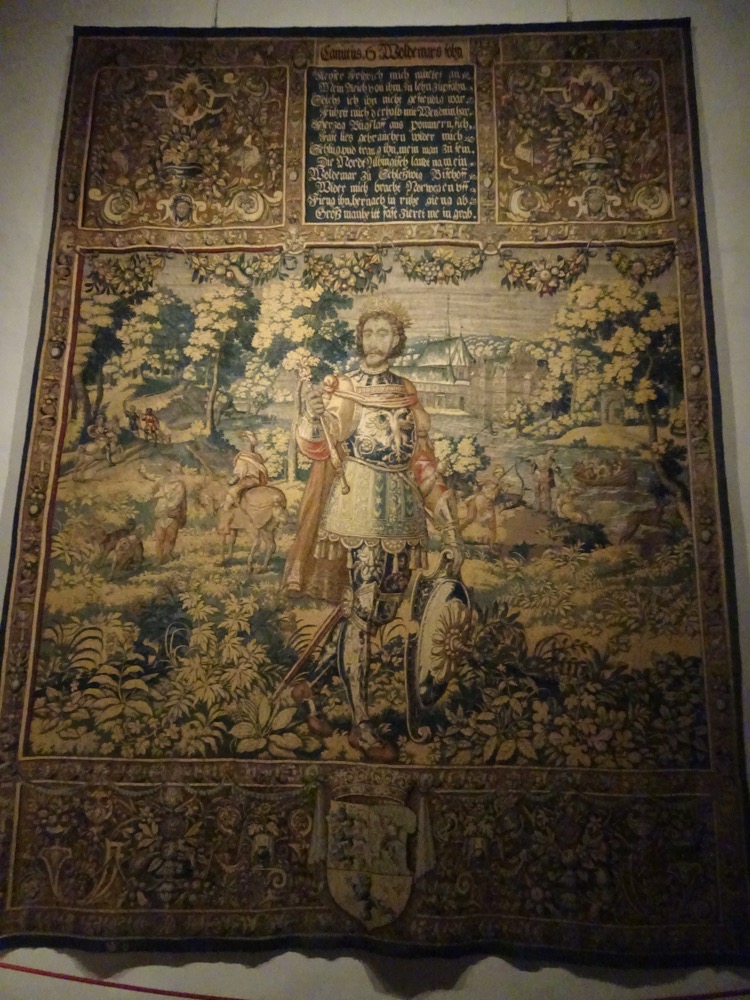 Tapestry depciting Abel – a quiet and pleasant scene with a group of hunters (both mounted and on foot). The setting sharply contrasts wit hthe ferocious acts spelled out in the verses: “For kingship I did crave, thus my brother I sent to the grave”.
Tapestry depciting Abel – a quiet and pleasant scene with a group of hunters (both mounted and on foot). The setting sharply contrasts wit hthe ferocious acts spelled out in the verses: “For kingship I did crave, thus my brother I sent to the grave”. 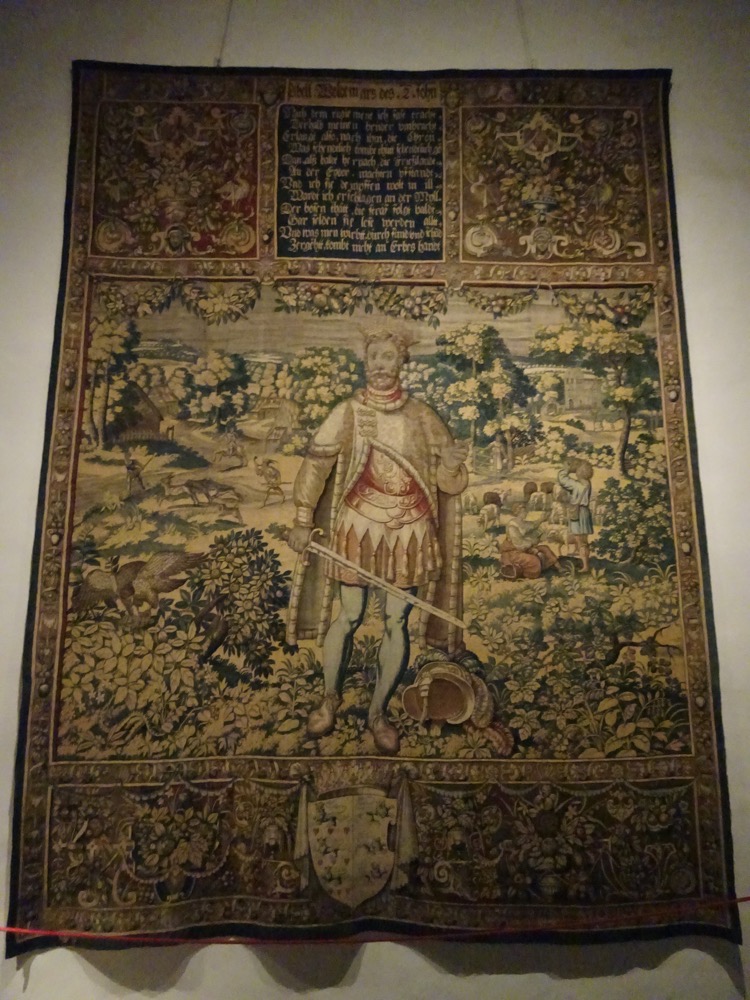 The symbolism of the falcon with its claws on a smaller bird, while a poisonous snake slips through the shrubbery is a classical theme of good fighting evil. In this case, the evil slips away leaving the brother in the grips of his king, err the smaller bird in the grips of the falcon. Eventually Abel was killed himself in an uprising only two years after this ruthless assassination.
The symbolism of the falcon with its claws on a smaller bird, while a poisonous snake slips through the shrubbery is a classical theme of good fighting evil. In this case, the evil slips away leaving the brother in the grips of his king, err the smaller bird in the grips of the falcon. Eventually Abel was killed himself in an uprising only two years after this ruthless assassination.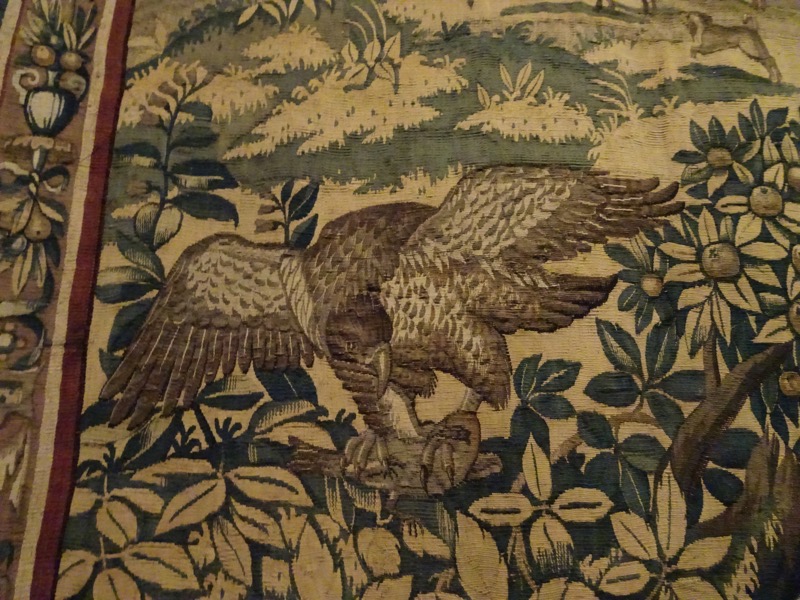 Tapestry of Oluf – son of Norwegian King Haakon VI and Margrete (daughter of Danish King Valdemar II), Oluf was considered a king by name but not by deed. Oluf died before he came of age and his mother Margrete was left to defend the kingdom from Sweden and eventually unite her three Kingdoms.
Tapestry of Oluf – son of Norwegian King Haakon VI and Margrete (daughter of Danish King Valdemar II), Oluf was considered a king by name but not by deed. Oluf died before he came of age and his mother Margrete was left to defend the kingdom from Sweden and eventually unite her three Kingdoms.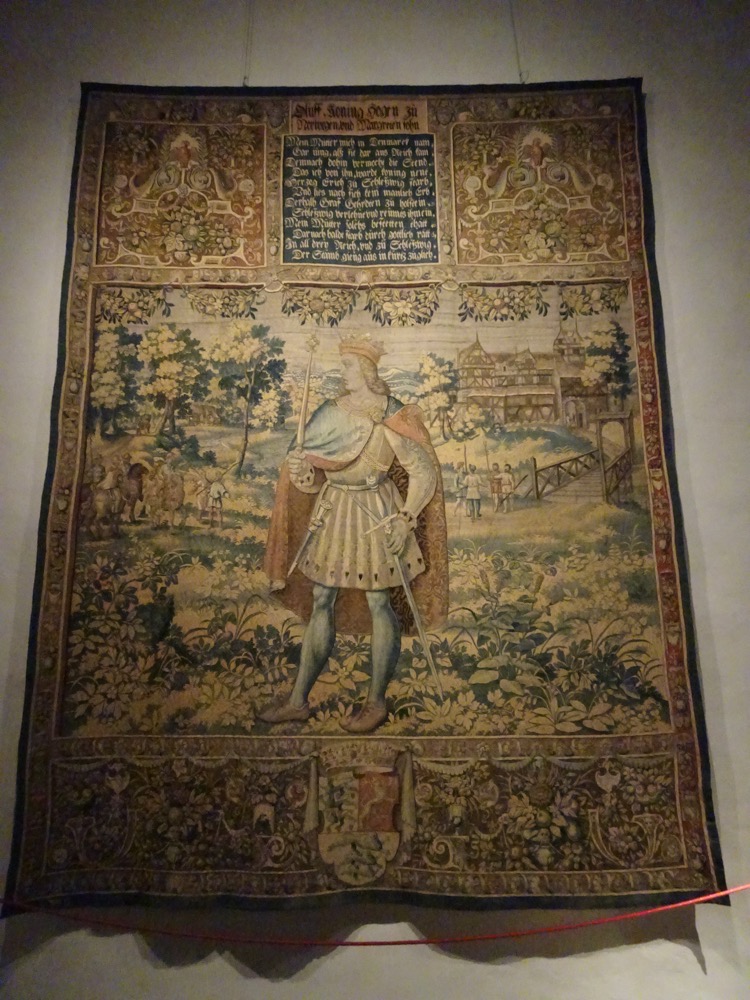
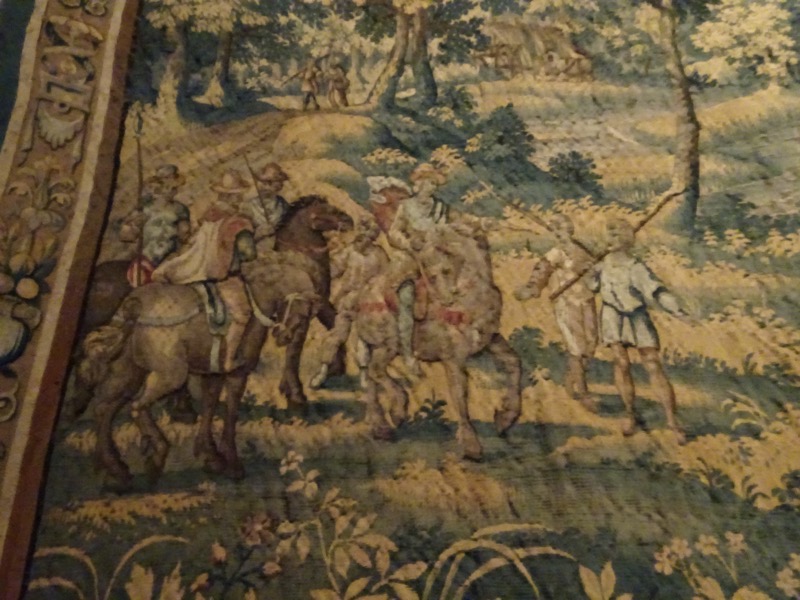 Tapestry of Erick VI – wearing a crown and wearing an outlandish non-period costume, it is supposed to signify that he was king ‘in distant times’. He draws the viewer’s attention to the animal life to the left of the king, a wolf lurks (the incarnation of evil) sneaking up on its unsuspecting prey. All is reference to his ill-fated destiny, he was assassinated by the aforementioned Abel, who envied his crown.
Tapestry of Erick VI – wearing a crown and wearing an outlandish non-period costume, it is supposed to signify that he was king ‘in distant times’. He draws the viewer’s attention to the animal life to the left of the king, a wolf lurks (the incarnation of evil) sneaking up on its unsuspecting prey. All is reference to his ill-fated destiny, he was assassinated by the aforementioned Abel, who envied his crown. 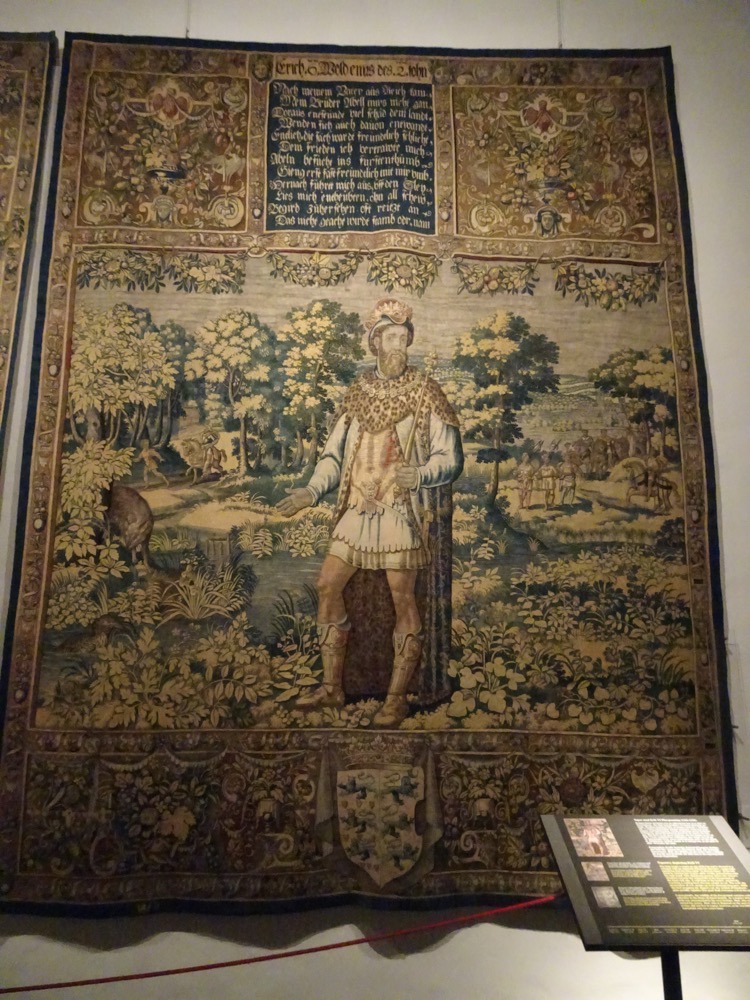 The wolf preying on the bird that is preying on the eel.
The wolf preying on the bird that is preying on the eel.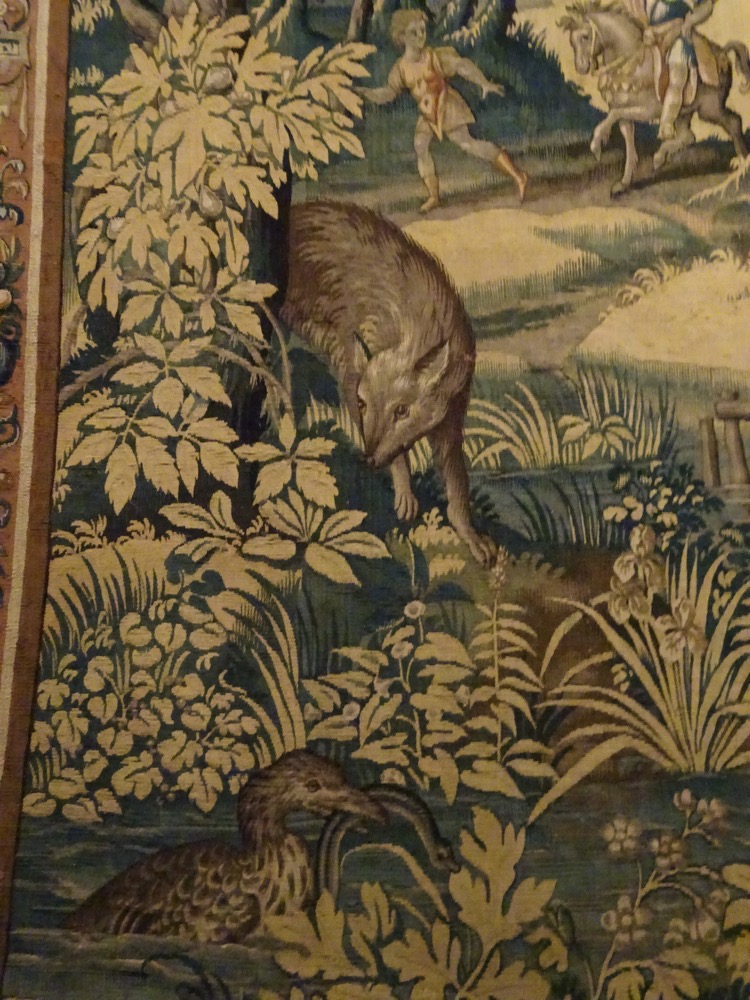 Tapestry of Christoffer II – surrounded by noblemen’s pursuits of the hunt and the tournament, Christoffer is being mocked for his lack of jousting and warfare abilities.. “For the Kingdom’s dignity little cared, much land gave away with others shared, against the subjects I was also tough, so from my throne they pushed me off!”
Tapestry of Christoffer II – surrounded by noblemen’s pursuits of the hunt and the tournament, Christoffer is being mocked for his lack of jousting and warfare abilities.. “For the Kingdom’s dignity little cared, much land gave away with others shared, against the subjects I was also tough, so from my throne they pushed me off!”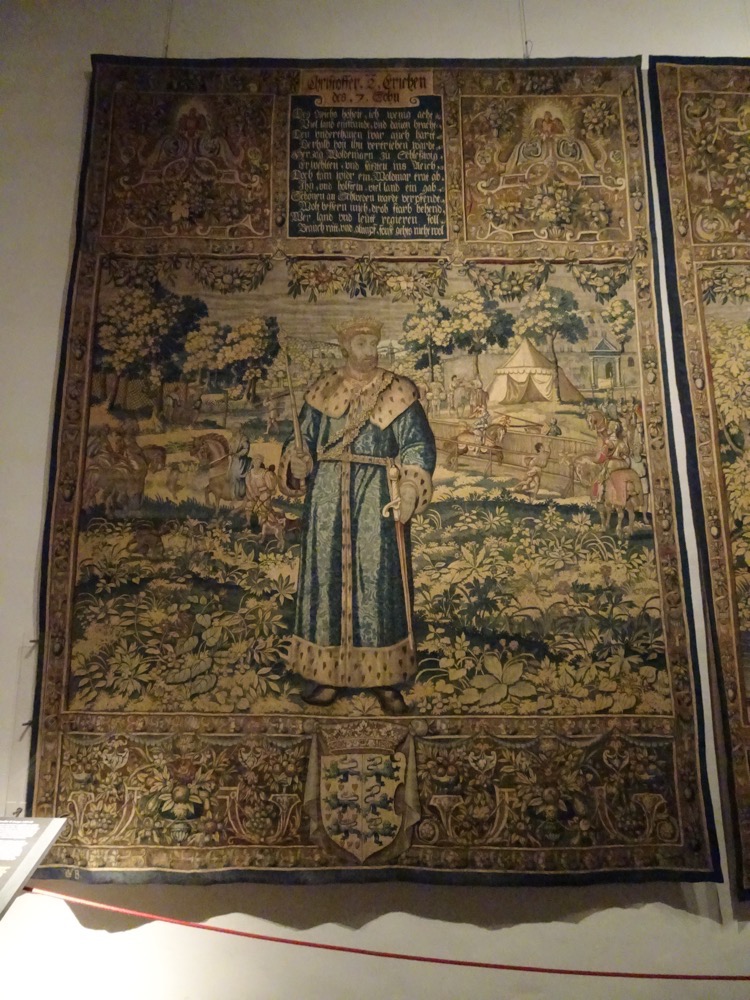
 Tapestry depicting Valdemar II “the Victorious” – clad in shining armour, the king caries his crown as the symbol of his royalty and brandishing a sword ready for combat. The verses give a full account of his many successful war campaigns, and it seems at least one king has been remembered kindly by history!
Tapestry depicting Valdemar II “the Victorious” – clad in shining armour, the king caries his crown as the symbol of his royalty and brandishing a sword ready for combat. The verses give a full account of his many successful war campaigns, and it seems at least one king has been remembered kindly by history!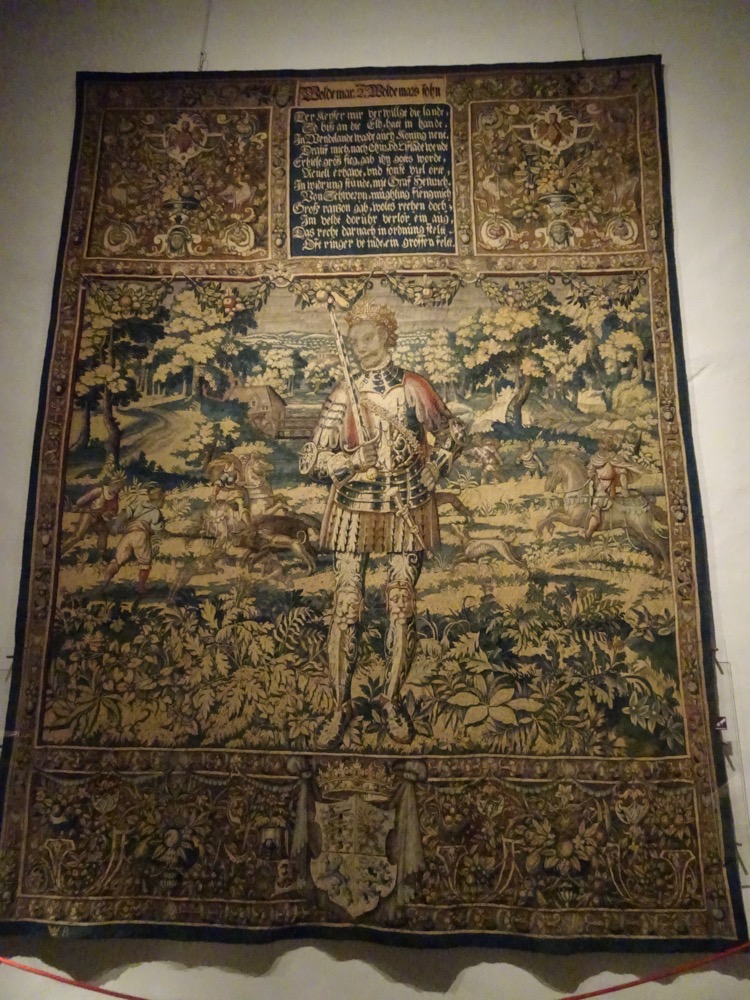
 These tapestries are fascinating – I wish there had been decent information on the other seven that we saw at the National Museum.
These tapestries are fascinating – I wish there had been decent information on the other seven that we saw at the National Museum. As I was saying earlier, Kronborg is also famous as “Elsinore,” the setting of Shakespeare’s famous tragedy, Hamlet (though how a guy born in Stratford upon Avon with no formal/noble education knew anything about Danish history which is effectively the middle of nowhere to an Englishman from Stratford, is beyond me!?!) Anyway, Hamlet was performed to mark the 200th anniversary of Shakespeare’s death in 1816, complete with a cast of soldiers from the castle garrison. The stage was in the telegraph tower in the southwest corner of the castle. The play has been repeatedly performed in the courtyard by such famous actors as Laurence Olivier, John Gielgud, Christopher Plummer, Derek Jacobi, David Tennant, Jude Law, and of course my own personal hero, Sir Kenneth Branagh.
As I was saying earlier, Kronborg is also famous as “Elsinore,” the setting of Shakespeare’s famous tragedy, Hamlet (though how a guy born in Stratford upon Avon with no formal/noble education knew anything about Danish history which is effectively the middle of nowhere to an Englishman from Stratford, is beyond me!?!) Anyway, Hamlet was performed to mark the 200th anniversary of Shakespeare’s death in 1816, complete with a cast of soldiers from the castle garrison. The stage was in the telegraph tower in the southwest corner of the castle. The play has been repeatedly performed in the courtyard by such famous actors as Laurence Olivier, John Gielgud, Christopher Plummer, Derek Jacobi, David Tennant, Jude Law, and of course my own personal hero, Sir Kenneth Branagh.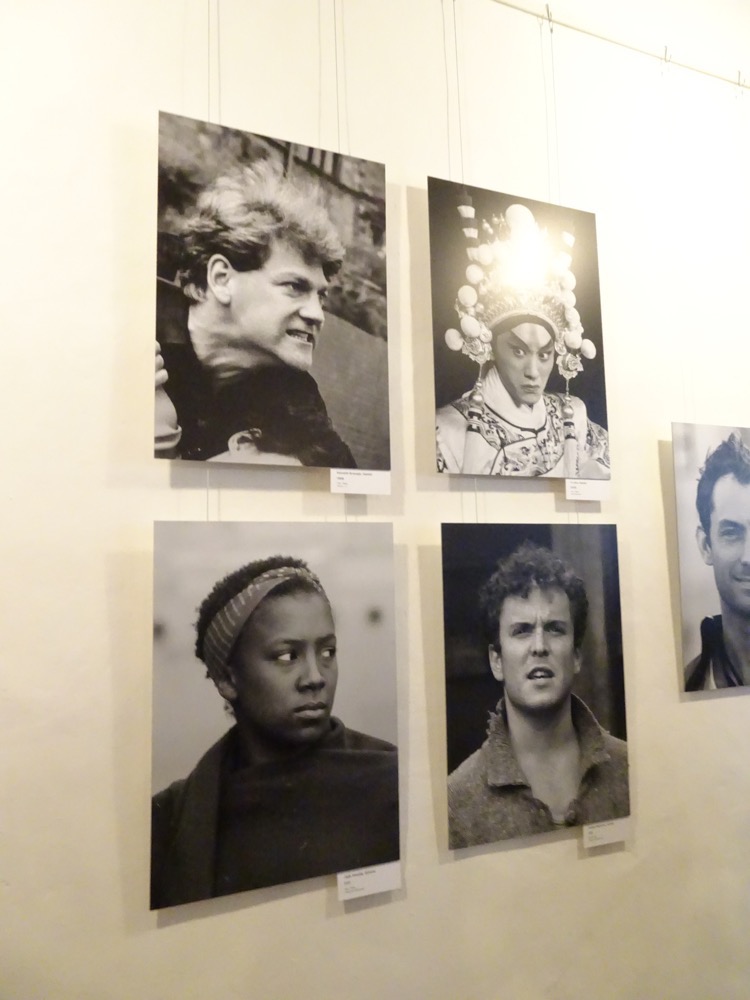
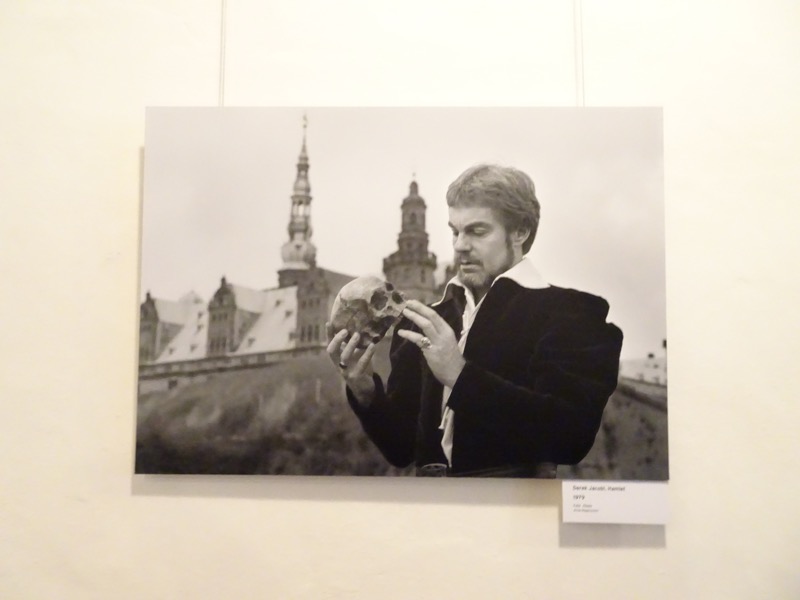
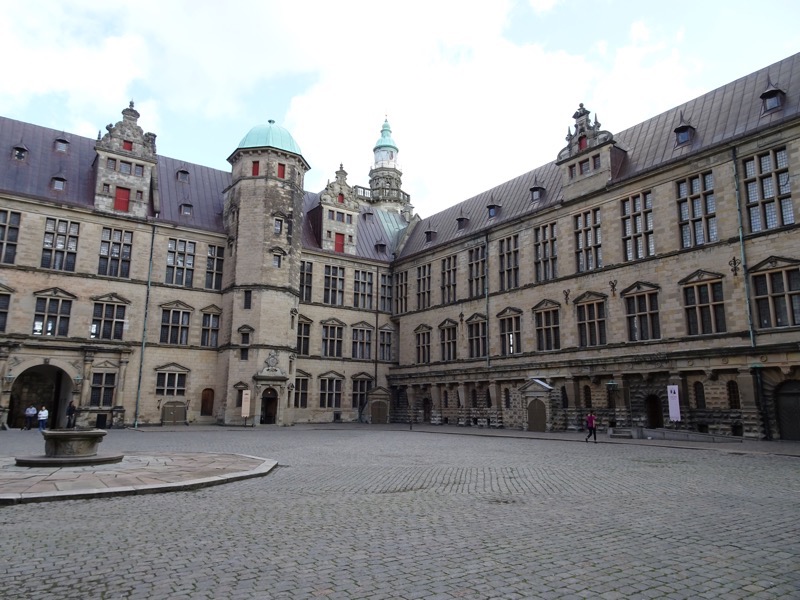 We went back down to the courtyard to find the chapel which is located on the ground floor in the south wing, having been consecrated in 1582. In 1785 the castle was fitted out as an army barracks, and the chapel was temporarily repurposed as a fencing hall and gymnasium with all the furniture thankfully stored away. In the mid-1800s, the chapel was restored and reinaugurated in 1843.
We went back down to the courtyard to find the chapel which is located on the ground floor in the south wing, having been consecrated in 1582. In 1785 the castle was fitted out as an army barracks, and the chapel was temporarily repurposed as a fencing hall and gymnasium with all the furniture thankfully stored away. In the mid-1800s, the chapel was restored and reinaugurated in 1843.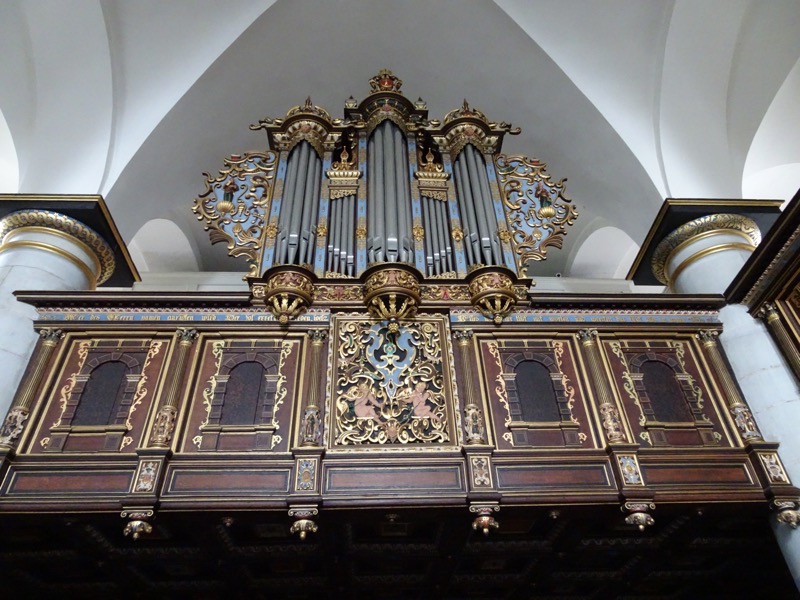 The nave of the Kronborg Chapel.
The nave of the Kronborg Chapel.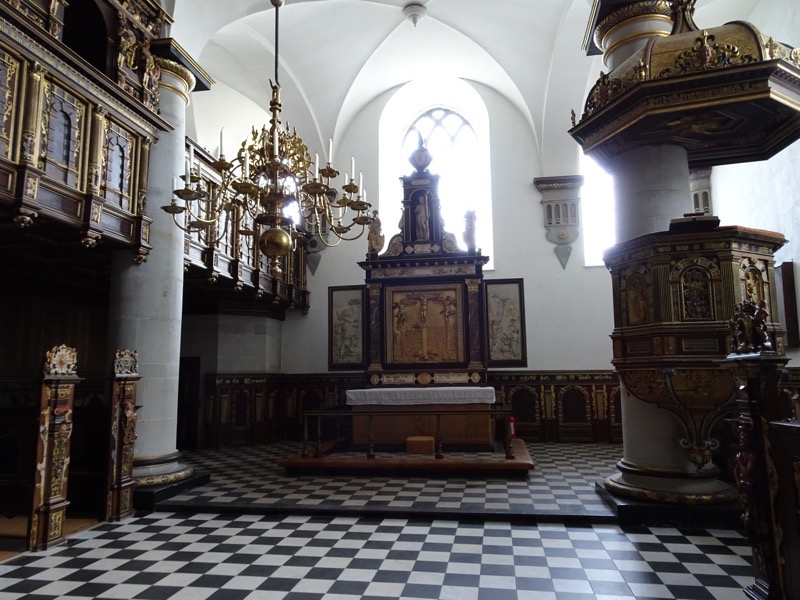
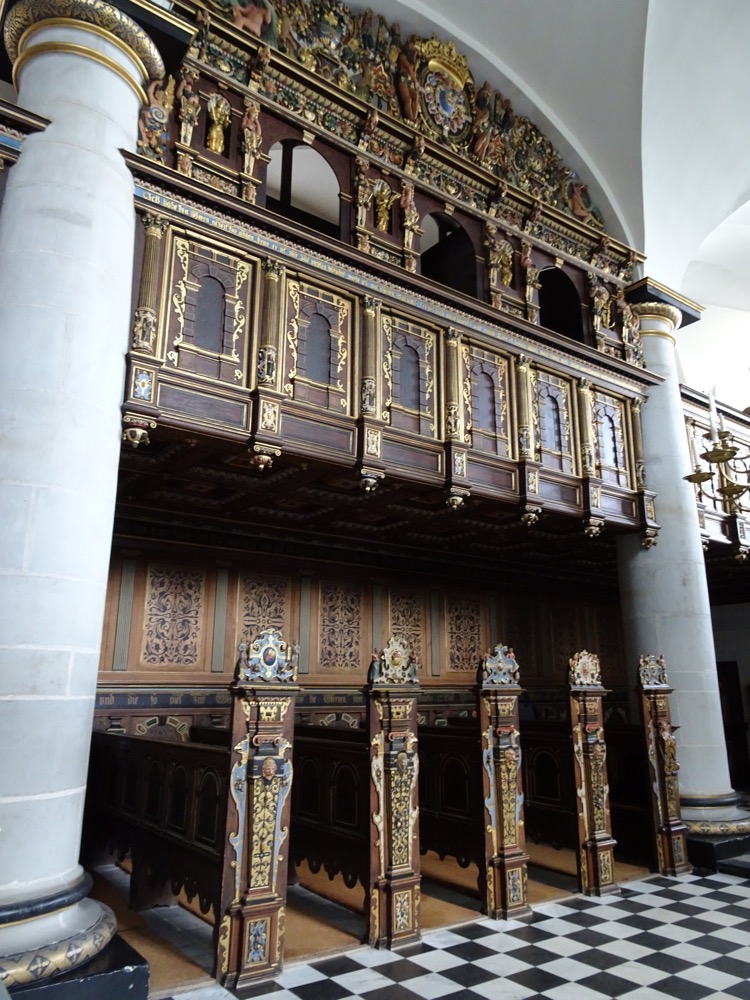
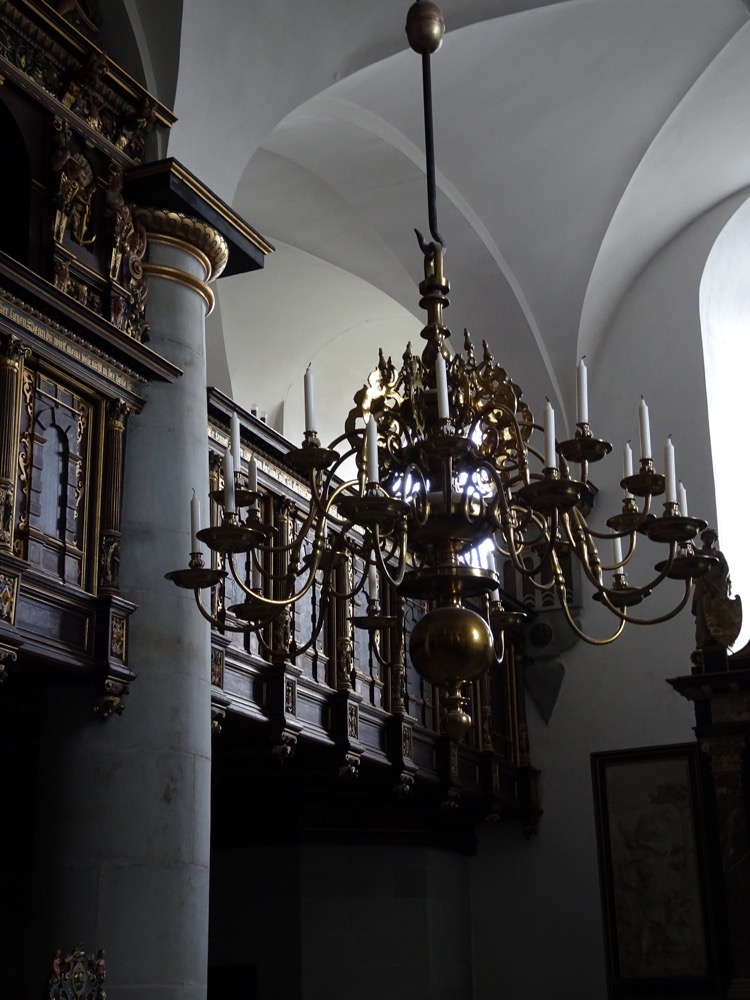 Just gorgeous medieval timberwork, and gilded leather walls.
Just gorgeous medieval timberwork, and gilded leather walls.

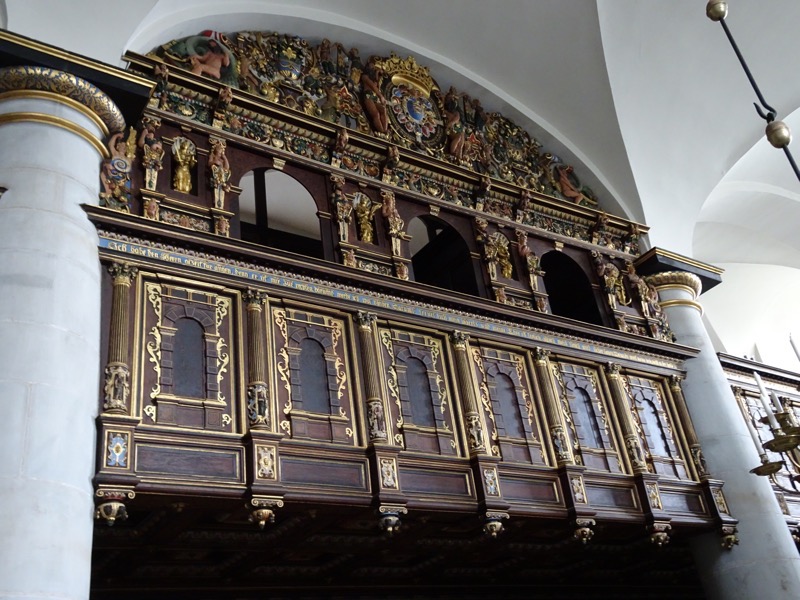
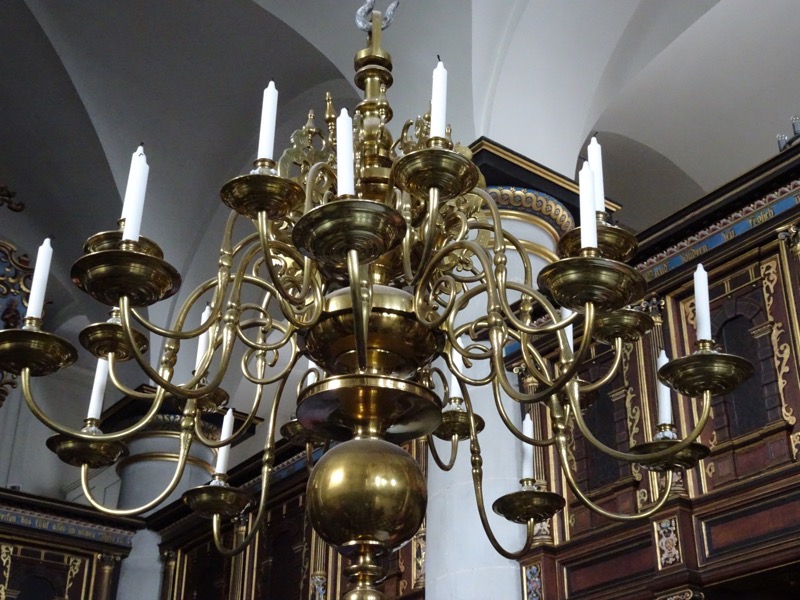
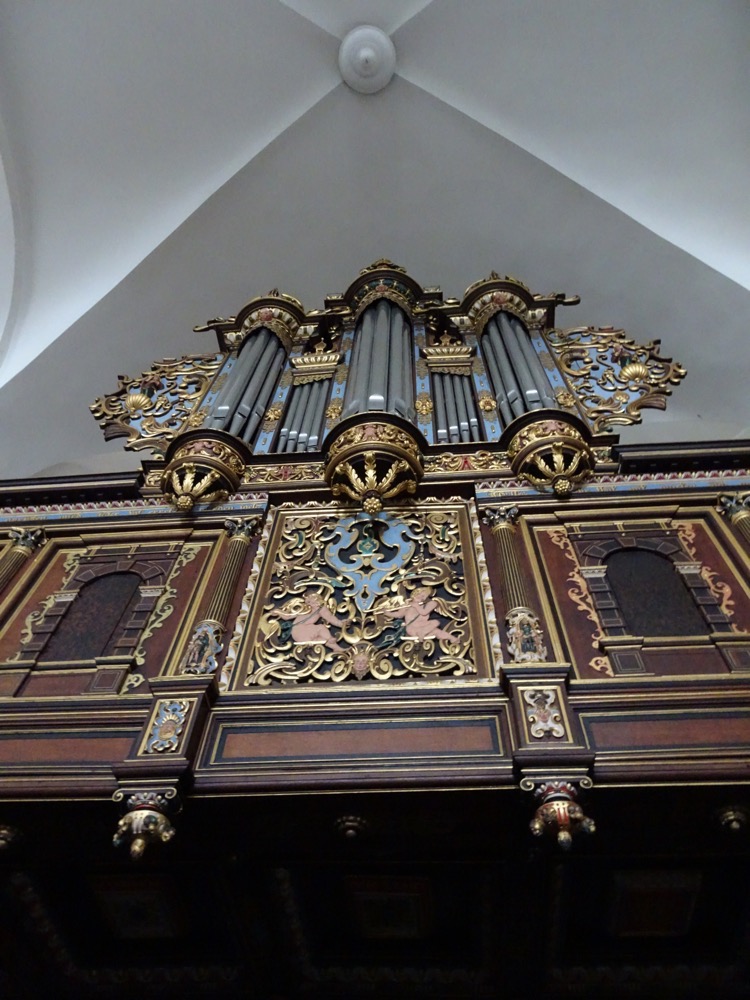

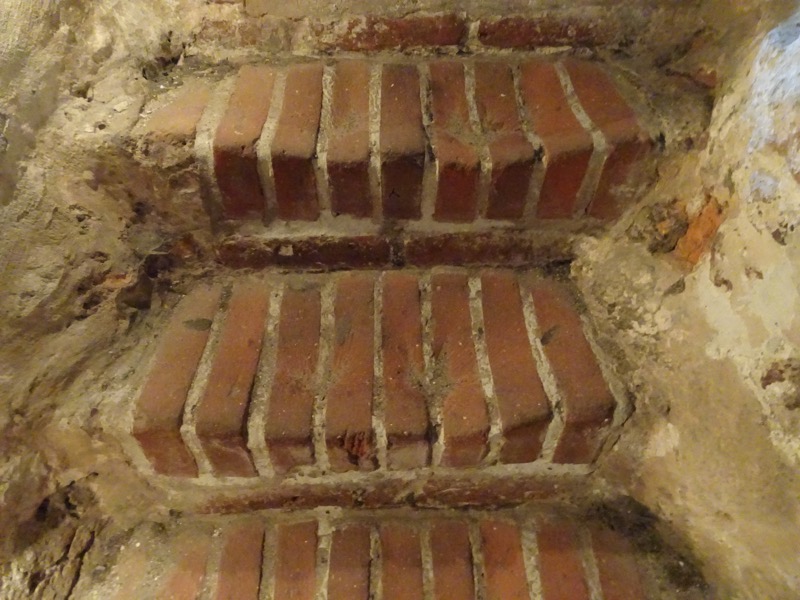 Worn steps leading down the the dark cold cellars.
Worn steps leading down the the dark cold cellars.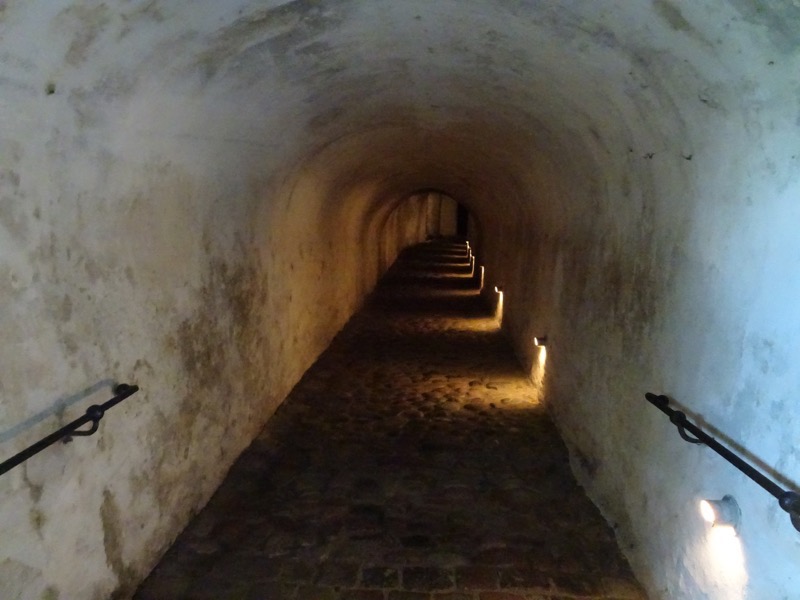 A statue of the sleeping Danish King, Holger, has been placed here, deep in the cellars of the castle… ever vigilant for his homeland.
A statue of the sleeping Danish King, Holger, has been placed here, deep in the cellars of the castle… ever vigilant for his homeland. 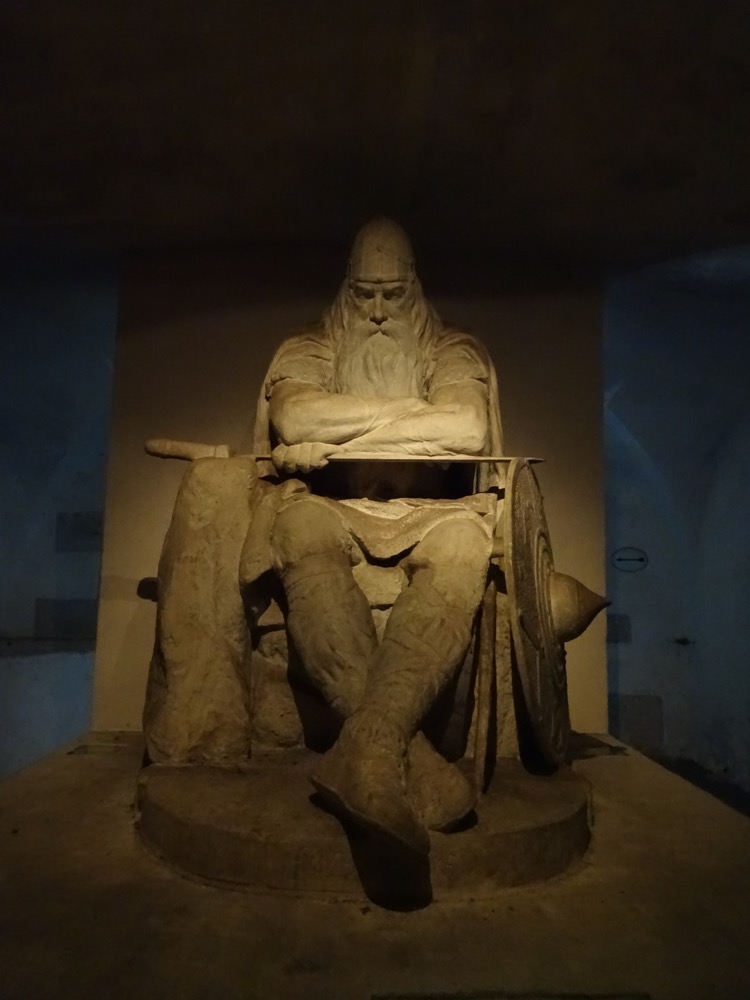
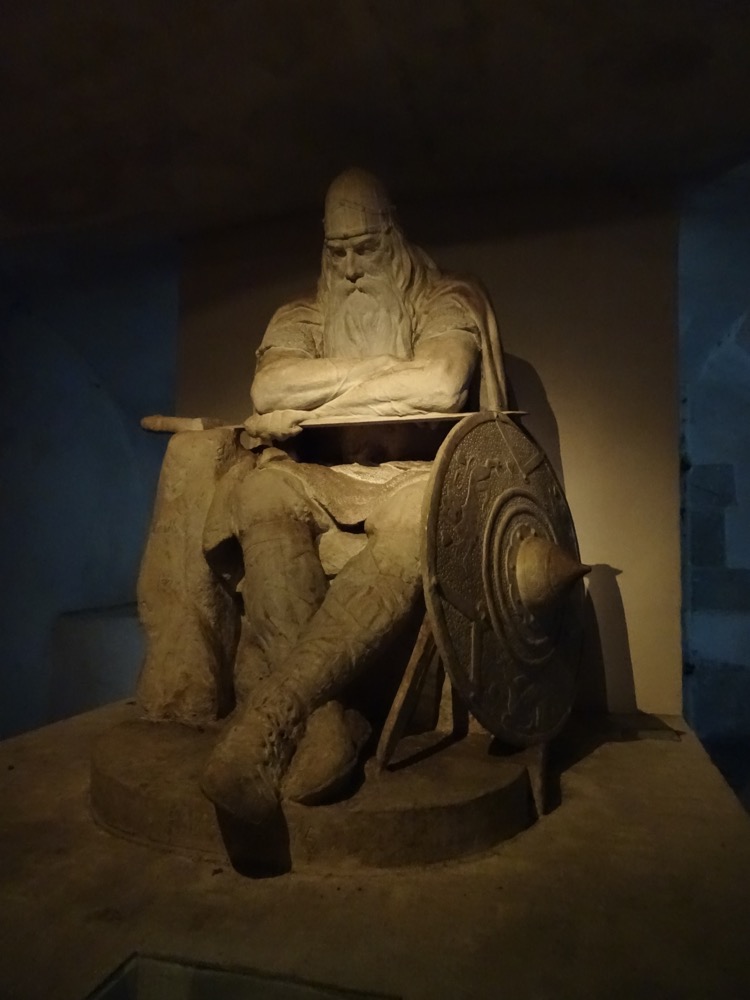 On a less lyrical note – this statue was the most difficult thing to photograph ever! They have him displayed in a pitch black cavern with lighting from several sides that slowly oscillates in brightness from very dim to overly bright. I can think of no other reason for doing so, other than to make him hard to photograph! Anyway, about twelve pics later and job done.
On a less lyrical note – this statue was the most difficult thing to photograph ever! They have him displayed in a pitch black cavern with lighting from several sides that slowly oscillates in brightness from very dim to overly bright. I can think of no other reason for doing so, other than to make him hard to photograph! Anyway, about twelve pics later and job done. The cellars penetrated even further under the castle than the chambers containing Holger’s sleeping statue to large storage areas.
The cellars penetrated even further under the castle than the chambers containing Holger’s sleeping statue to large storage areas.
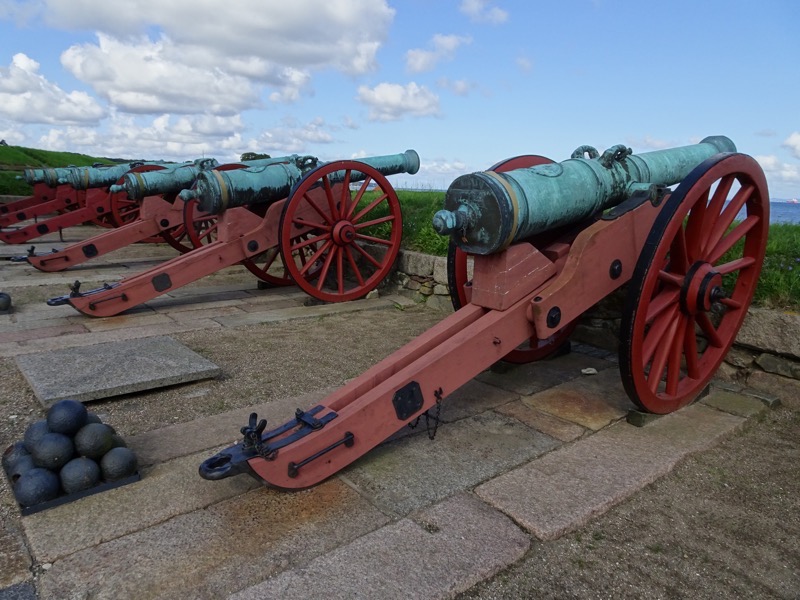
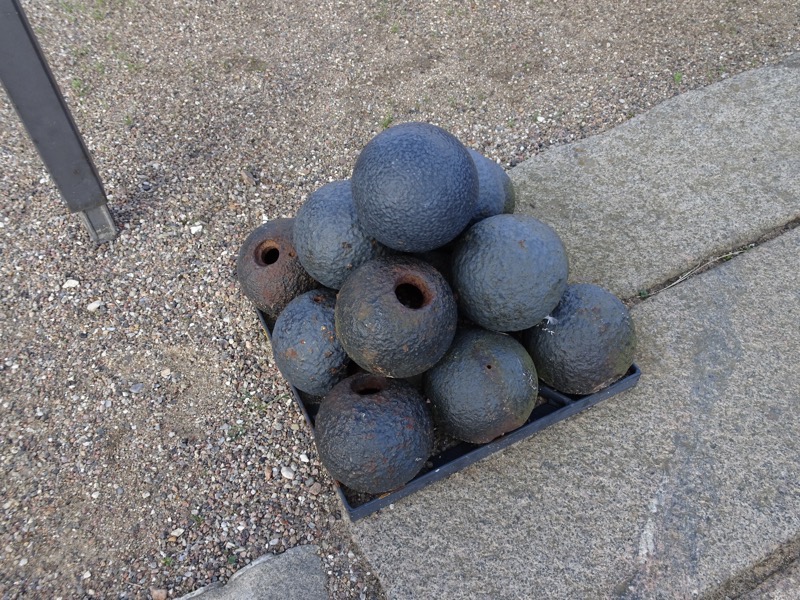
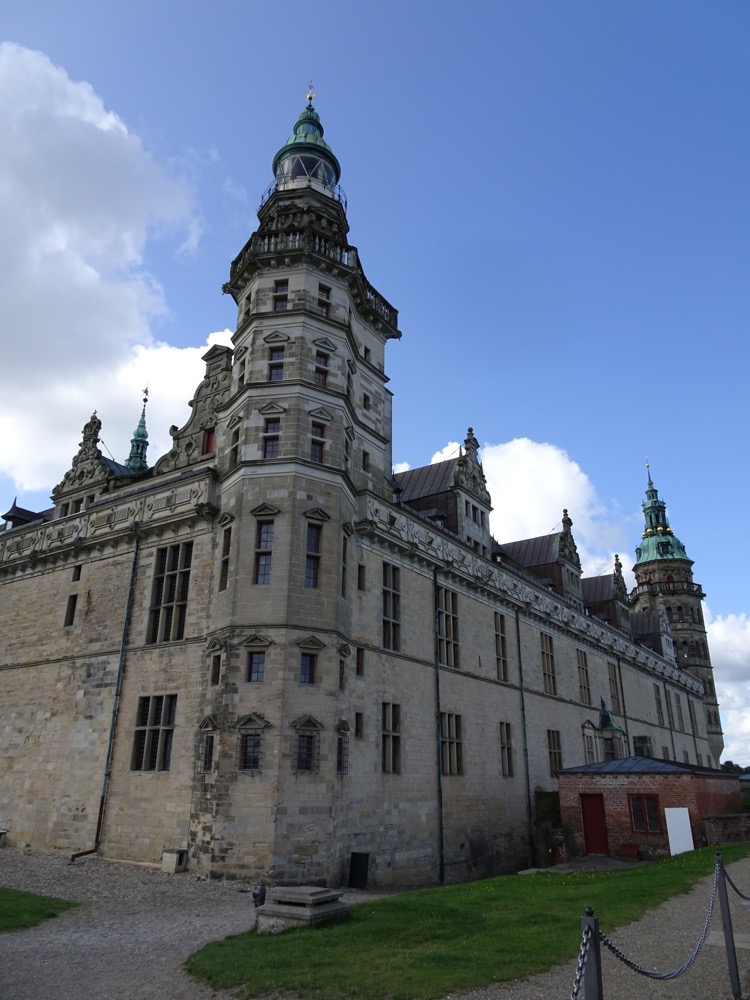 Interestingly, every ship that sailed through the Sound had to pay a toll. These tolls were effectively a tax paid to the King of Denmark, calculated based on the value of the ship’s cargo. The captain of any ship passing the sound had to estimate the value of his cargo and pay the taxes accordingly – to prevent captains from understating the value of their cargo and thereby reduce the toll payable, the King had the right to buy any cargo for the price stated by a ship’s captain… thus very cleverly dissuading the captains from undervaluing their cargo. The Sound toll was only abolished in 1857.
Interestingly, every ship that sailed through the Sound had to pay a toll. These tolls were effectively a tax paid to the King of Denmark, calculated based on the value of the ship’s cargo. The captain of any ship passing the sound had to estimate the value of his cargo and pay the taxes accordingly – to prevent captains from understating the value of their cargo and thereby reduce the toll payable, the King had the right to buy any cargo for the price stated by a ship’s captain… thus very cleverly dissuading the captains from undervaluing their cargo. The Sound toll was only abolished in 1857.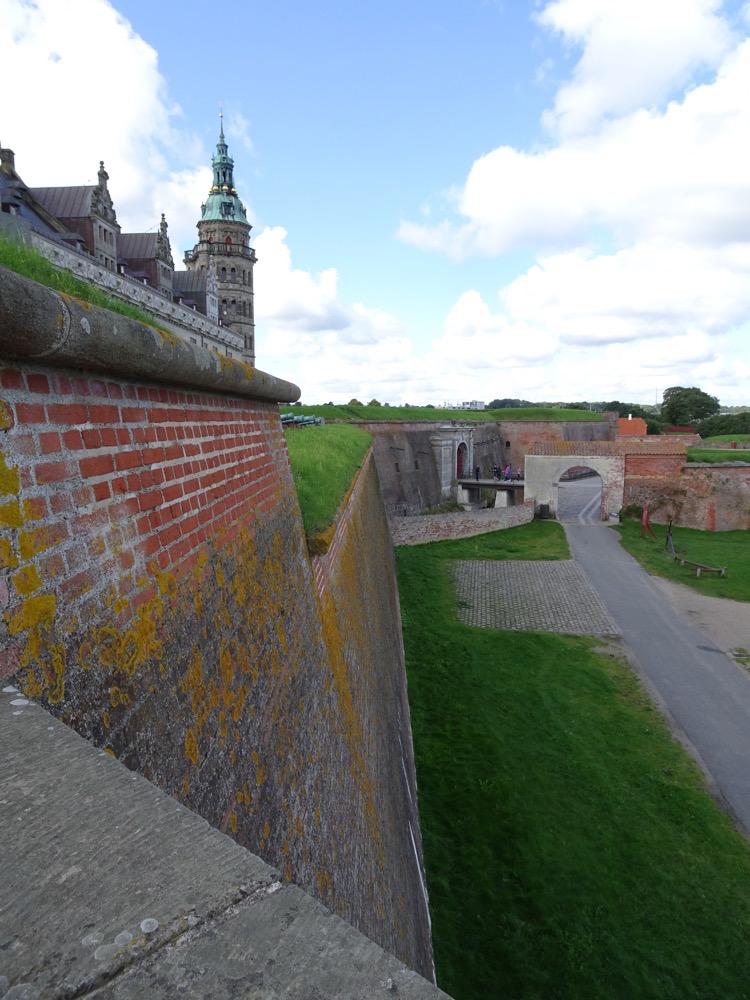 ALL our canon are for you, Sweden!
ALL our canon are for you, Sweden! Back into the main courtyard to access the Cannon Tower for views over the castle. Another winding Medieval staircase.
Back into the main courtyard to access the Cannon Tower for views over the castle. Another winding Medieval staircase.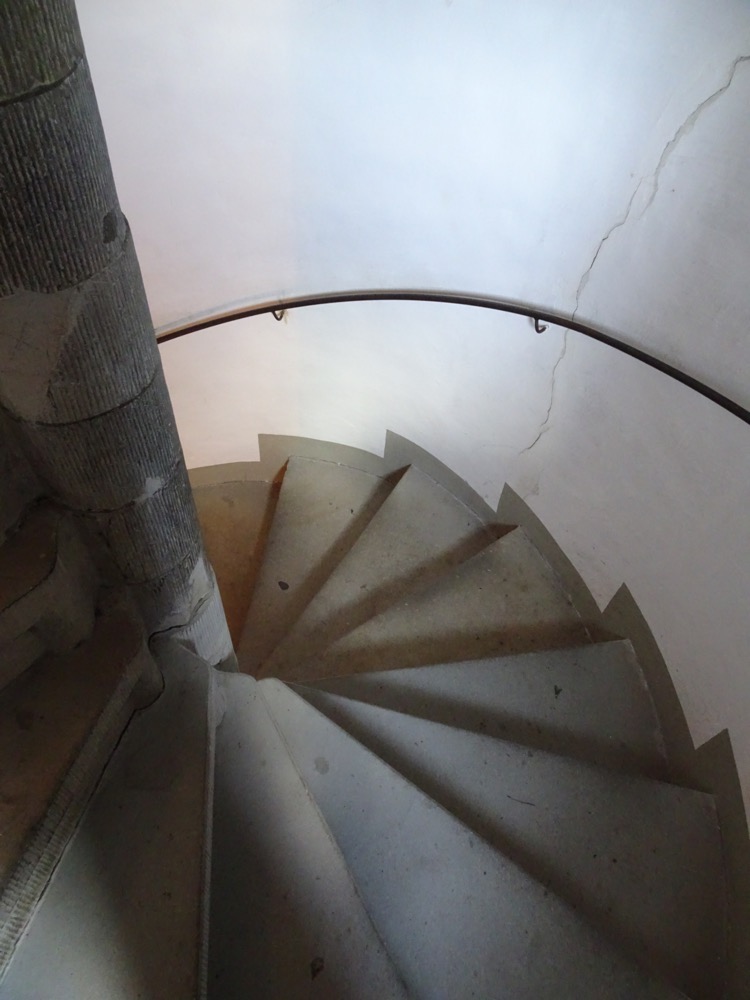
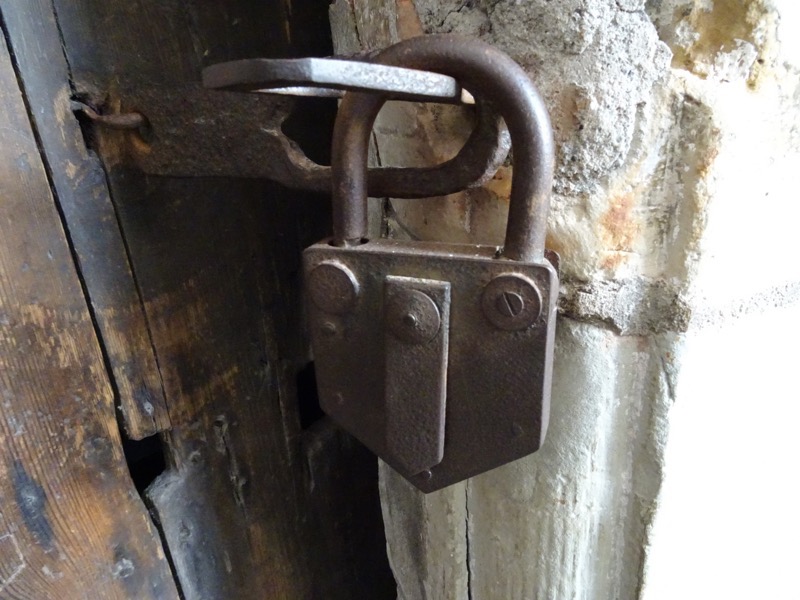
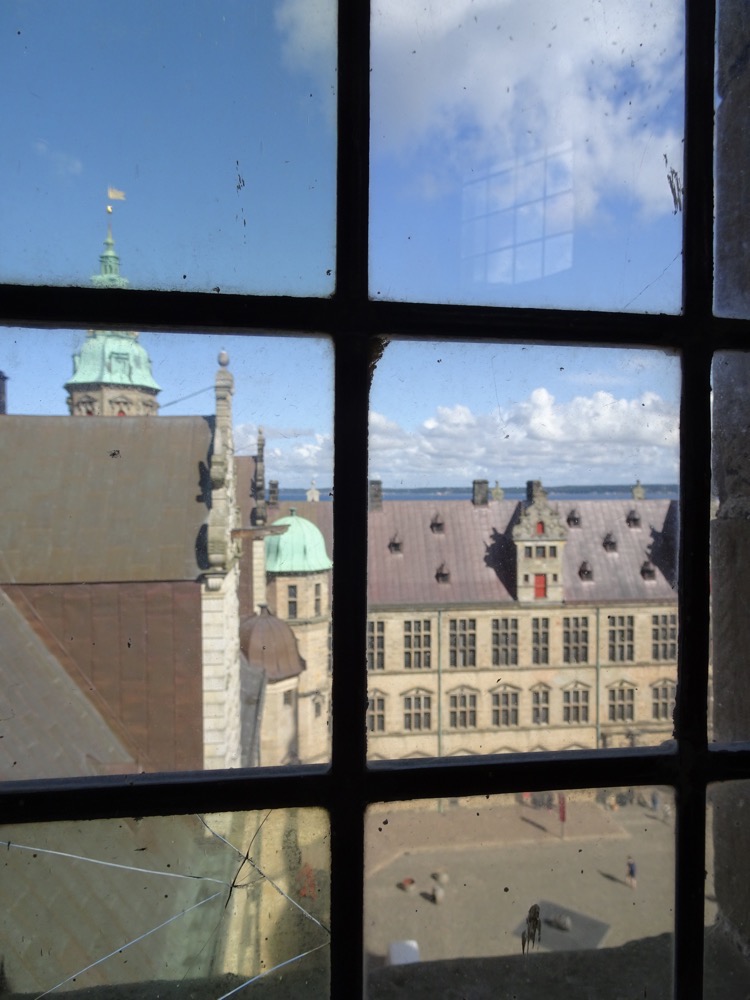 The views are amazing, you can see for miles, well at least 2.3 of them – to Sweden!
The views are amazing, you can see for miles, well at least 2.3 of them – to Sweden!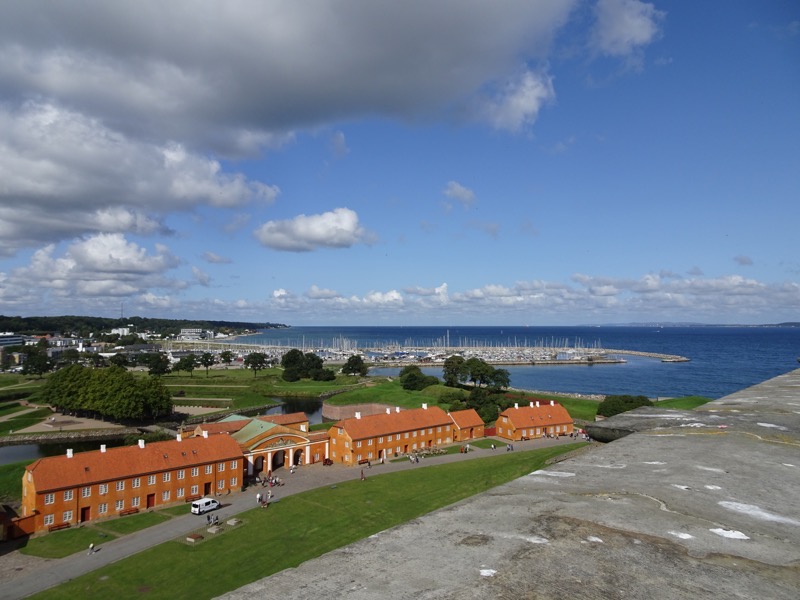 And back to the town of Helsingor.
And back to the town of Helsingor.
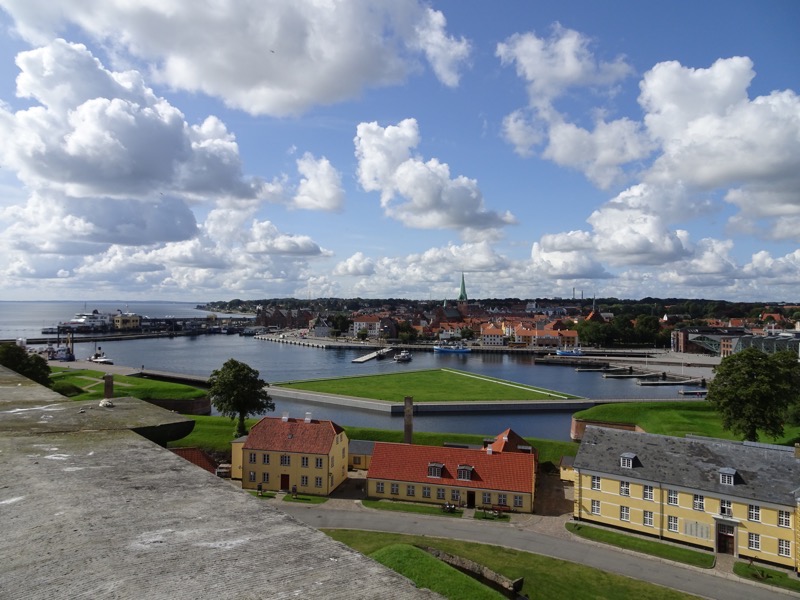

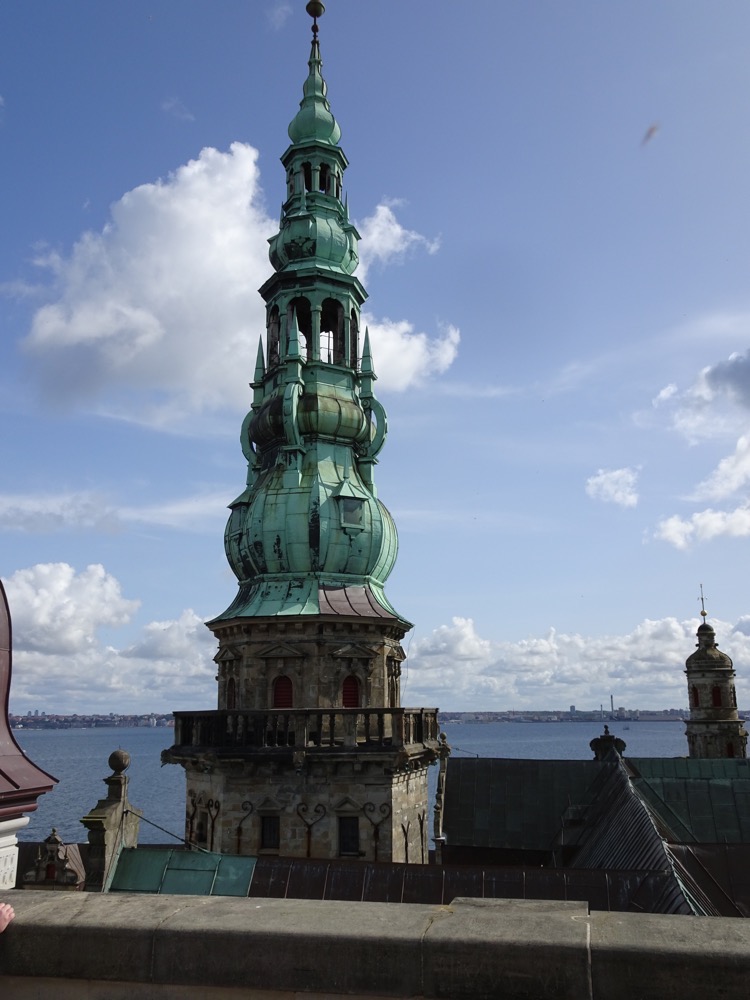
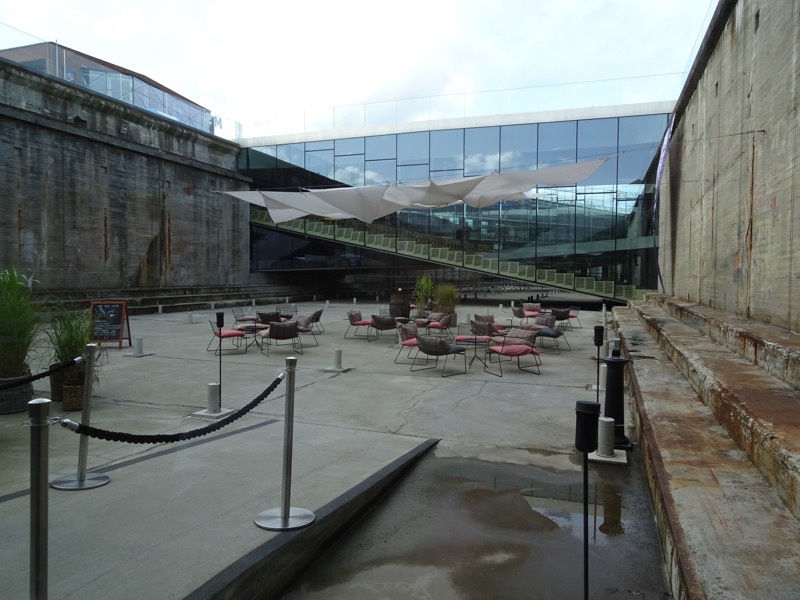 Cafe in the base of the dry dock.
Cafe in the base of the dry dock.
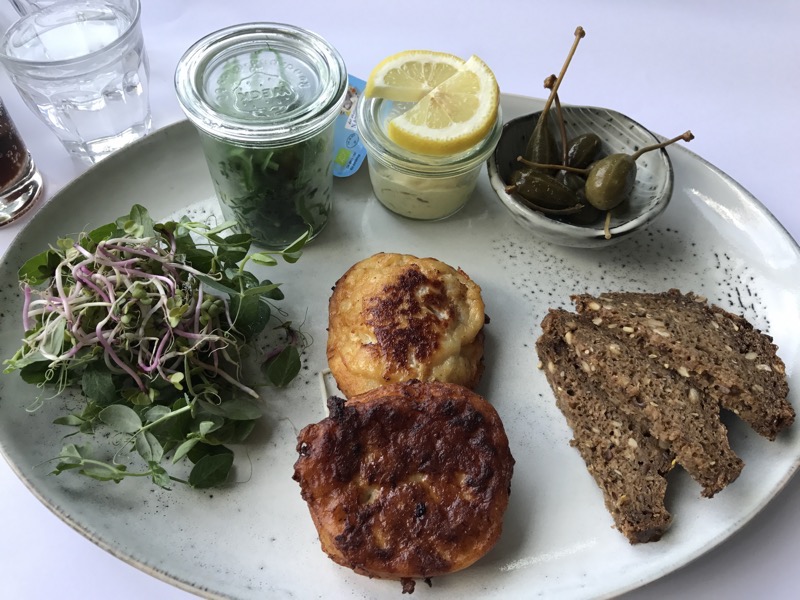 The museum has mostly late period maritime exhibits.
The museum has mostly late period maritime exhibits.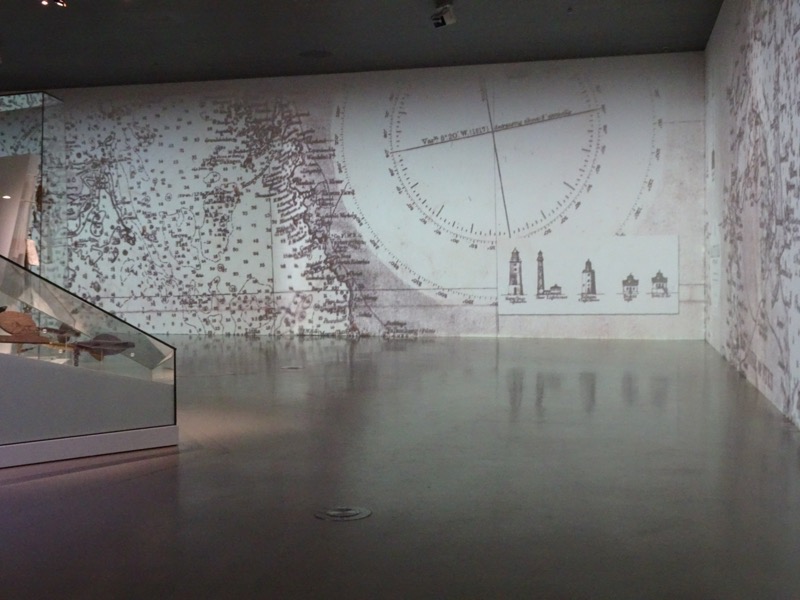
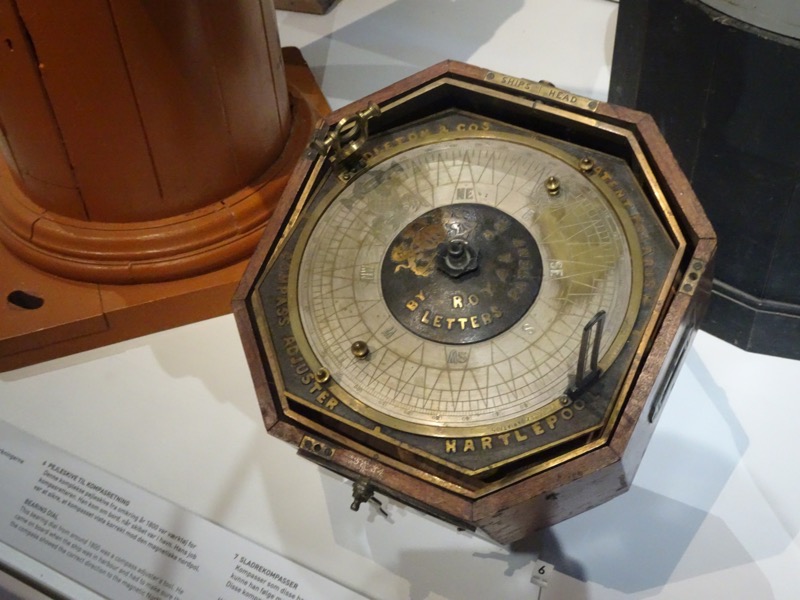
 Cafe courtyard.
Cafe courtyard.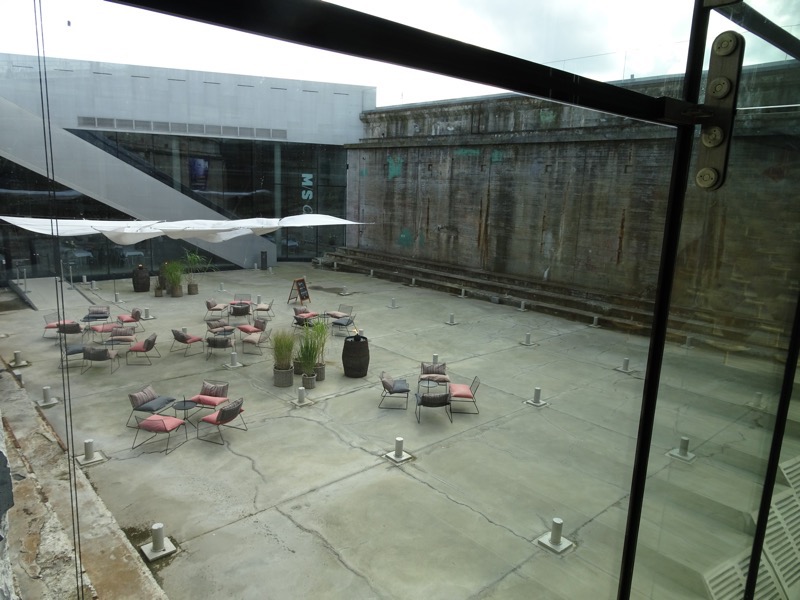 Auditorium in the Maritime Museum.
Auditorium in the Maritime Museum. 
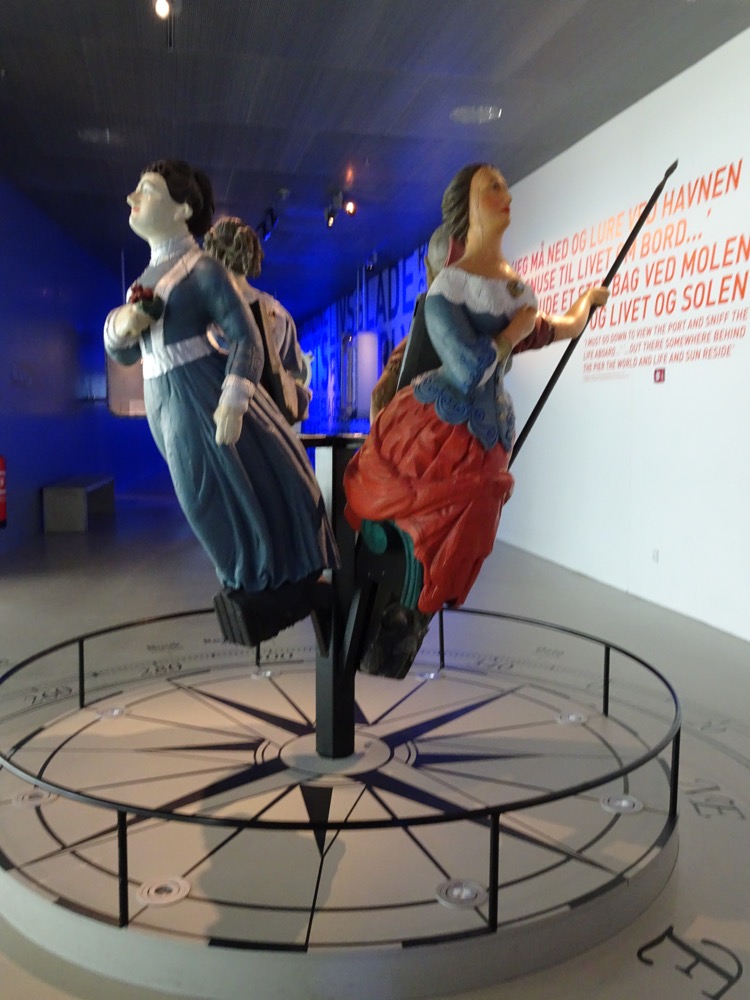 After a quick jaunt through the Maritime Musuem, we head back into the city to partake of some typical ‘postcard’ Copenhagen. The weather was so lovely I took several photos and could not pick my favourite – so I have included a bunch here.
After a quick jaunt through the Maritime Musuem, we head back into the city to partake of some typical ‘postcard’ Copenhagen. The weather was so lovely I took several photos and could not pick my favourite – so I have included a bunch here.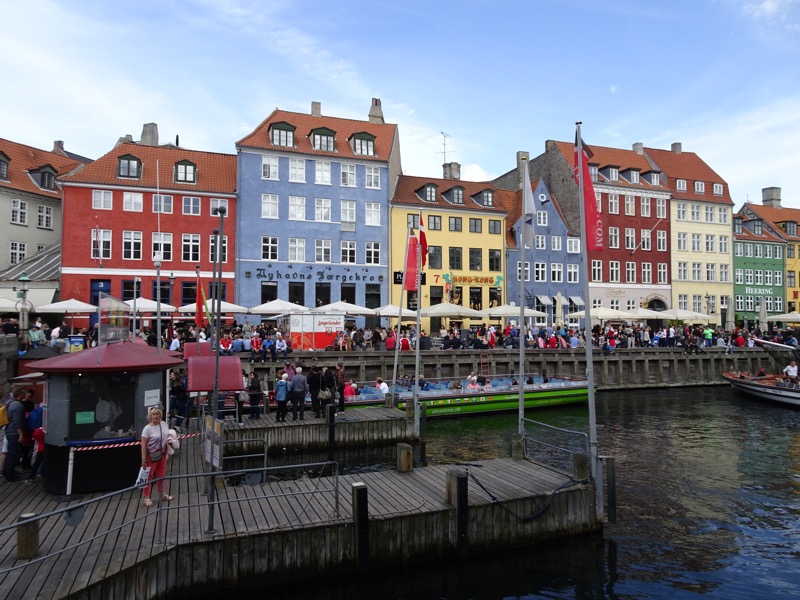
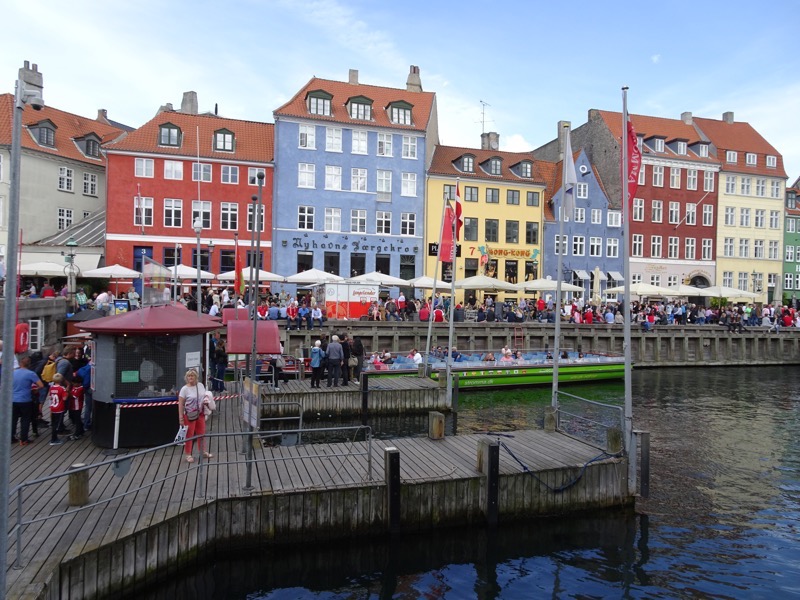 Ann Weiwei, famous Beijing artist who is usually heavily represented at the Asia Pacific Triennial, has done a large installation work at the moment consisting of 3,500 salvaged life jackets that were used by refugees. They have been placed in the window frames of the famous art museum, the Kunsthal Charlottenborg, for World Refugee Day.
Ann Weiwei, famous Beijing artist who is usually heavily represented at the Asia Pacific Triennial, has done a large installation work at the moment consisting of 3,500 salvaged life jackets that were used by refugees. They have been placed in the window frames of the famous art museum, the Kunsthal Charlottenborg, for World Refugee Day.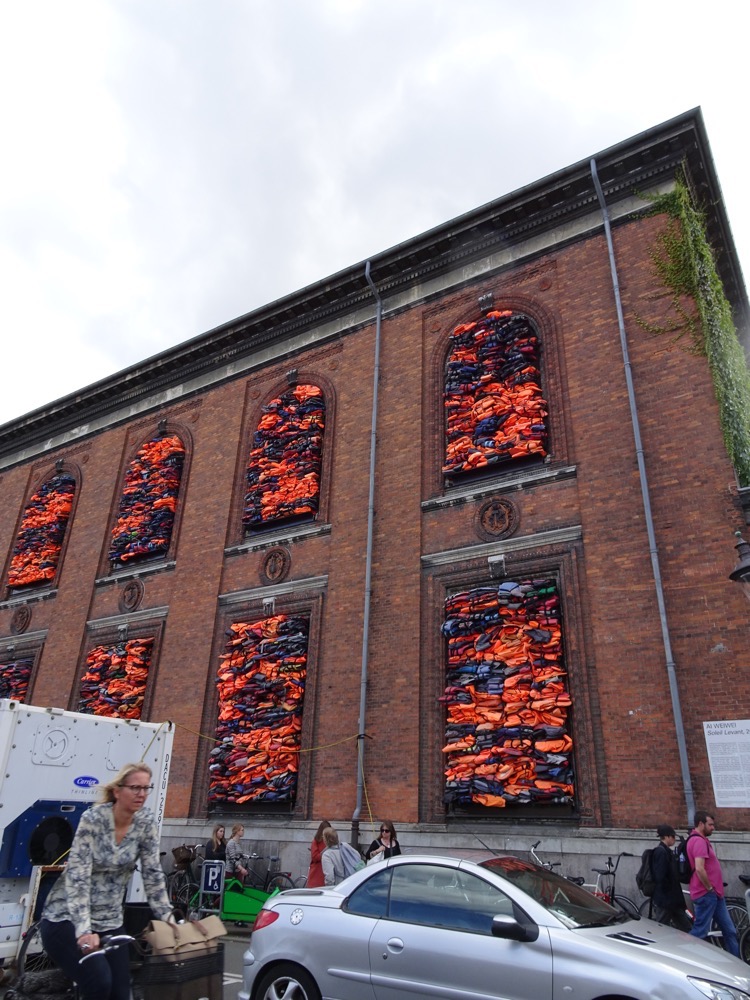
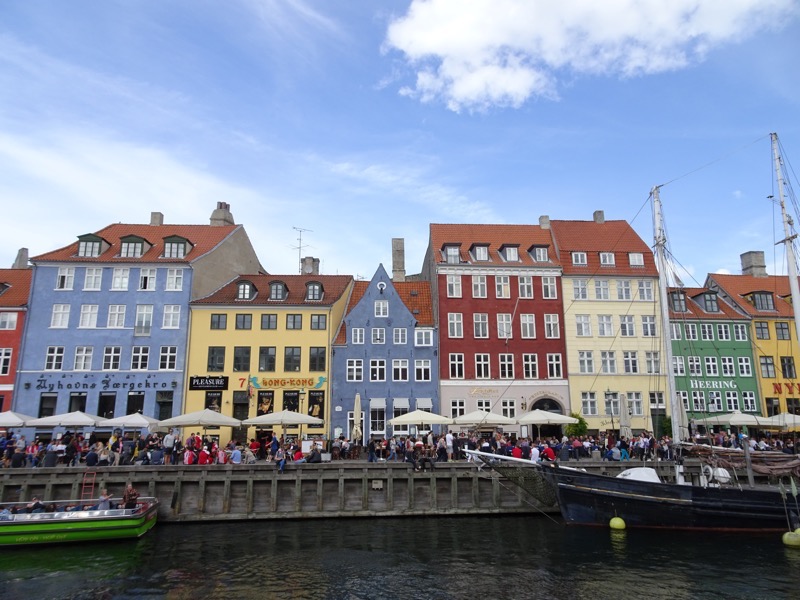

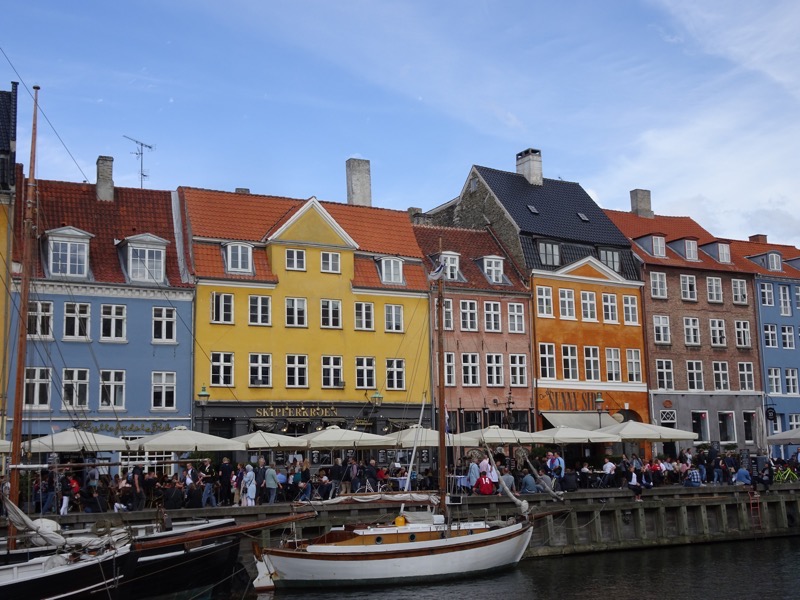
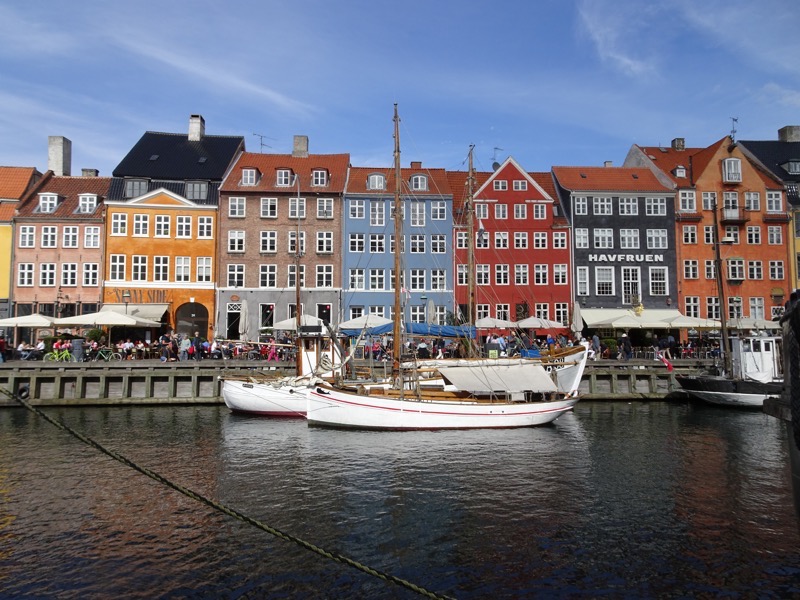
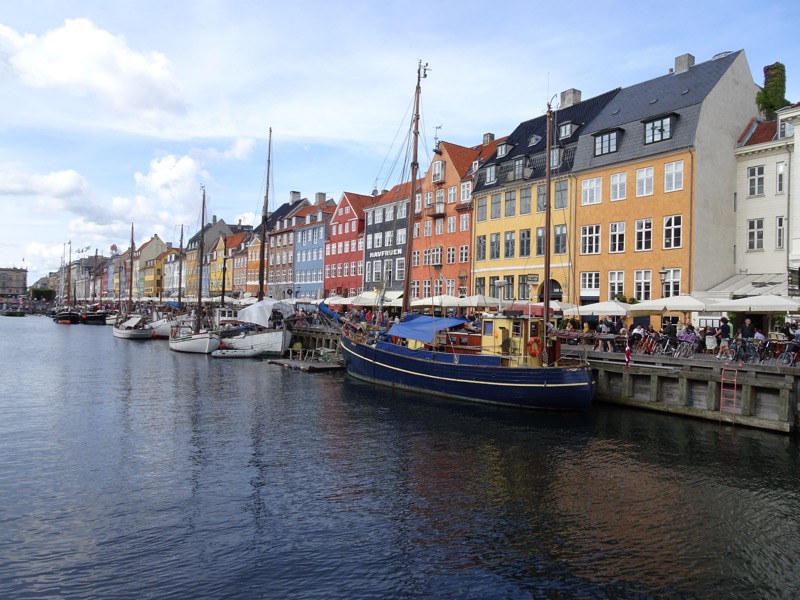
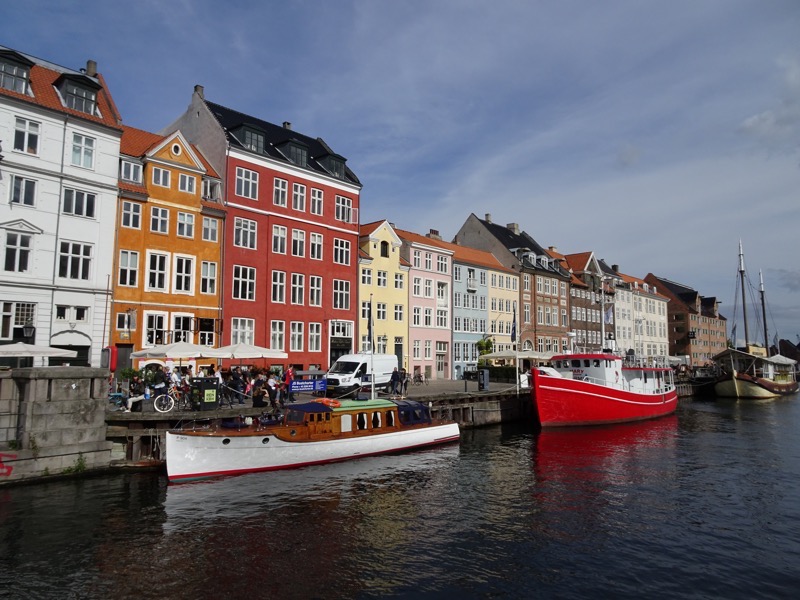
 The Viking Ship Museum is an active experimental archaeology research centre, with over thirty years experience in building and sailing, reconstructions of archaeological ship finds. It is a multi-disciplinary working environment with a strong focus on research and education, where experts from many different fields collaborate in several different workshops towards reconstructions.
The Viking Ship Museum is an active experimental archaeology research centre, with over thirty years experience in building and sailing, reconstructions of archaeological ship finds. It is a multi-disciplinary working environment with a strong focus on research and education, where experts from many different fields collaborate in several different workshops towards reconstructions. Flax hanging to dry.
Flax hanging to dry. FInished rope lengths that will be used in Viking ship reconstructions.
FInished rope lengths that will be used in Viking ship reconstructions.
 Rope making equipment.
Rope making equipment. Ropes were made of many differing materials, from bull rushes and flax to elk and seal hides. Most ropes were tarred to retard fungus and bacteria and to protect from weather and deterioration.
Ropes were made of many differing materials, from bull rushes and flax to elk and seal hides. Most ropes were tarred to retard fungus and bacteria and to protect from weather and deterioration.
 The elk and seal hide ropes had a natural waxy waterproof texture.
The elk and seal hide ropes had a natural waxy waterproof texture.

 Clamps to hold timbers during construction.
Clamps to hold timbers during construction.

 The workshop may look reasonably modern with modern lighting in a modern building, but all the tools used are replicas of period tools that would have been used during the Viking age to build ships.
The workshop may look reasonably modern with modern lighting in a modern building, but all the tools used are replicas of period tools that would have been used during the Viking age to build ships.





 Larger reconstructions are done in the outside part of the shipyard.
Larger reconstructions are done in the outside part of the shipyard. 





 Nails. While it must be boring for the smith to make so many nails, they were integral to the ship building process.
Nails. While it must be boring for the smith to make so many nails, they were integral to the ship building process.











 The summer 2007-2008 voyage:
The summer 2007-2008 voyage:
 The Sea Stallion today.
The Sea Stallion today.





 Replica of a 3-sail smack
Replica of a 3-sail smack  Attamannafar from the Faroe Islands (centre in the picture)
Attamannafar from the Faroe Islands (centre in the picture)







 Some other Viking games were also set out for visitors to try:
Some other Viking games were also set out for visitors to try: The ‘giants’ are around 45-60cm tall and have different weights and varying degrees of ugly.
The ‘giants’ are around 45-60cm tall and have different weights and varying degrees of ugly.

 The Troll’s Head
The Troll’s Head After playing around on the green for a while, it was time to go sailing on a historically accurate Viking ship that had been built by hand, using traditional techniques and tools, right here in the Roskilde Viking shipyard.
After playing around on the green for a while, it was time to go sailing on a historically accurate Viking ship that had been built by hand, using traditional techniques and tools, right here in the Roskilde Viking shipyard. And we have perfect Viking weather for such things – grey, dismal, and constant light drizzly rain.
And we have perfect Viking weather for such things – grey, dismal, and constant light drizzly rain. Getting instructions on the various oar commands we needed to use.
Getting instructions on the various oar commands we needed to use.

 Captain never said, “Row ya bastards!”… not even once! 🙂 He just encouraged people to listen for the slap of the oars in the water and to try and get them in time. Have to admit we were pretty terrible rowers but we managed to manouevre our craft into the open harbour.
Captain never said, “Row ya bastards!”… not even once! 🙂 He just encouraged people to listen for the slap of the oars in the water and to try and get them in time. Have to admit we were pretty terrible rowers but we managed to manouevre our craft into the open harbour.
 From here the sail was hoisted and we moved along with relative ease.
From here the sail was hoisted and we moved along with relative ease.
 Ballast in the bottom of the boat.
Ballast in the bottom of the boat. Nearly getting knocked in the head as we tacked.
Nearly getting knocked in the head as we tacked. After our bracing sail around the Roskilde harbour, we went over the Vikingskib Museet to see the remnants of some extant Viking ships that had been found in the Roskilde Fjord, and to hopefully warm up!
After our bracing sail around the Roskilde harbour, we went over the Vikingskib Museet to see the remnants of some extant Viking ships that had been found in the Roskilde Fjord, and to hopefully warm up!
 Coastal Trader ship – small elegant trading and transport vessel, of the byrding type. Made of Danish oak, it has decks of loose plans and an open hold for about 4 tons of cargo. The ship would have been crewed by 5-8 men.
Coastal Trader ship – small elegant trading and transport vessel, of the byrding type. Made of Danish oak, it has decks of loose plans and an open hold for about 4 tons of cargo. The ship would have been crewed by 5-8 men.









 Small Fishing vessel – this ship is a combined rowing and sailing vessel probably built for fishing or seal hunting. It was built of pine planks near Sognefjord in Norway. Later an extra plank was added to increase the height of the side in order to transport more efficiently cargoes of livestock, trading goods or people. During the alterations, the rowlocks were removed and the number of oars reduced. The conversion suggests that the ship was probably used more for transport and less fishing, sailing with a smaller crew.
Small Fishing vessel – this ship is a combined rowing and sailing vessel probably built for fishing or seal hunting. It was built of pine planks near Sognefjord in Norway. Later an extra plank was added to increase the height of the side in order to transport more efficiently cargoes of livestock, trading goods or people. During the alterations, the rowlocks were removed and the number of oars reduced. The conversion suggests that the ship was probably used more for transport and less fishing, sailing with a smaller crew.




 Beer-braised pork with crunchy crackling on flat bread with cabbage, grated carrot, pickled red onion, watercress and sea buckthorn salad with herbed crime fraiche dressing.
Beer-braised pork with crunchy crackling on flat bread with cabbage, grated carrot, pickled red onion, watercress and sea buckthorn salad with herbed crime fraiche dressing. It’s beautiful twin spires dominate the skyline of the city of Roskilde.
It’s beautiful twin spires dominate the skyline of the city of Roskilde.
 Towards the altar and the nave of the church.
Towards the altar and the nave of the church. Pulpit, c.1610 AD.
Pulpit, c.1610 AD. Gorgeous carved timber pews worn with age.
Gorgeous carved timber pews worn with age. Organ.
Organ.
 Stalls leading towards the altar.
Stalls leading towards the altar.
 I have no idea what this guy with the club is doing to that baby… but it could be a representation of the Slaughter of the Innocents.
I have no idea what this guy with the club is doing to that baby… but it could be a representation of the Slaughter of the Innocents. The magnificent altarpiece, c.1555 AD, was a gift from Christian IV of Denmark.
The magnificent altarpiece, c.1555 AD, was a gift from Christian IV of Denmark.
 The cathedral has been the primary burial site for Danish monarchs since the 15th century – to accommodate an increasing number of royals over the centuries, it has been extended and altered to contain a considerable number of burial chapels.
The cathedral has been the primary burial site for Danish monarchs since the 15th century – to accommodate an increasing number of royals over the centuries, it has been extended and altered to contain a considerable number of burial chapels. Burial tomb of Margarethe I of Denmark.
Burial tomb of Margarethe I of Denmark.







 The crypt directly under the altar.
The crypt directly under the altar.



 Looking down on the crypts behind the altar from the choir balconies.
Looking down on the crypts behind the altar from the choir balconies.
 Monument of Frederick II, in the Chapel of the Magi.
Monument of Frederick II, in the Chapel of the Magi.


 Amusing tourist bus directly outside the cathedral!
Amusing tourist bus directly outside the cathedral! Roskilde pedestrian shopping street – it’s a lovely quiet part of the city. Roskilde Cathedral attracts barely 125,000 visitors each year and as such there is relatively little tourism hustle and bustle here, which makes a nice change from the Copenhagen CBD.
Roskilde pedestrian shopping street – it’s a lovely quiet part of the city. Roskilde Cathedral attracts barely 125,000 visitors each year and as such there is relatively little tourism hustle and bustle here, which makes a nice change from the Copenhagen CBD. Interesting juxtaposition of street art and period building techniques.
Interesting juxtaposition of street art and period building techniques. After Roskilde, we head back to Copenhagen to rest our feets before finding somewhere funky and local to have dinner… Sadly, in our quest to avoid another Irish pub, (this area is just littered with them) we ended up at a Hard Rock Cafe ! 😛
After Roskilde, we head back to Copenhagen to rest our feets before finding somewhere funky and local to have dinner… Sadly, in our quest to avoid another Irish pub, (this area is just littered with them) we ended up at a Hard Rock Cafe ! 😛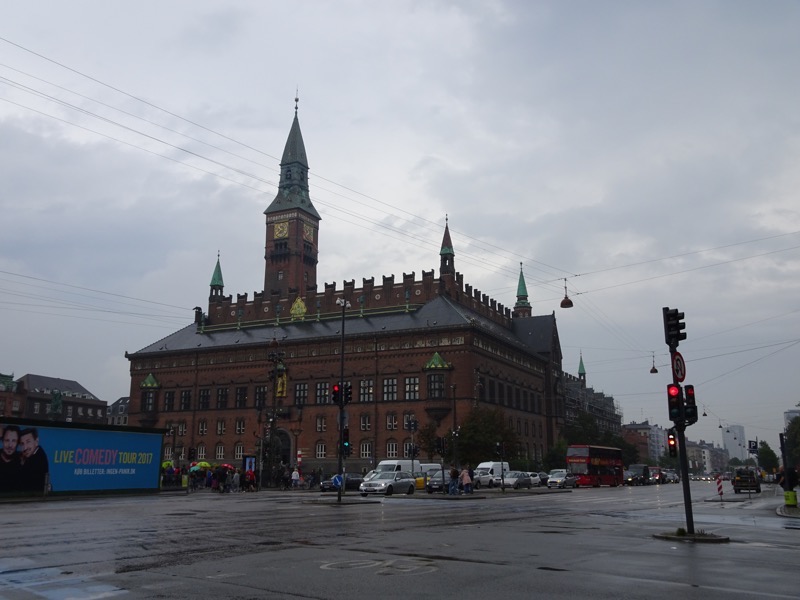
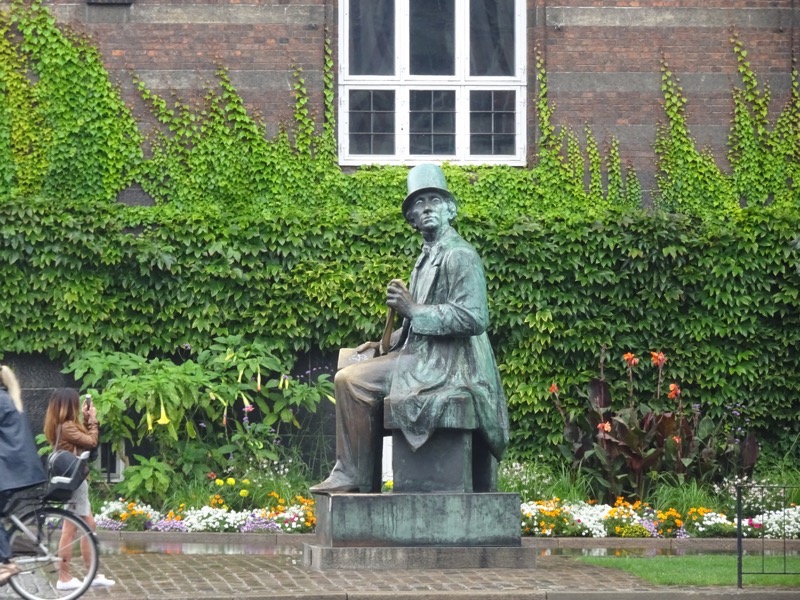
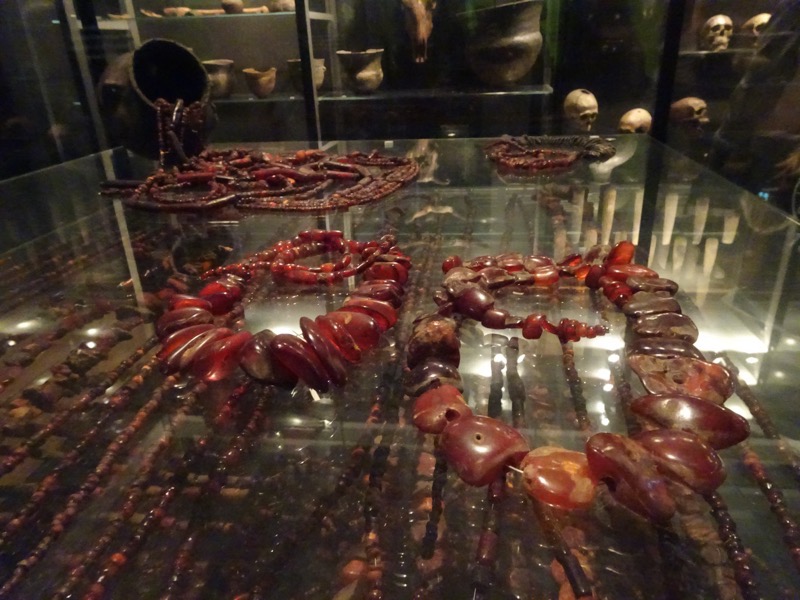
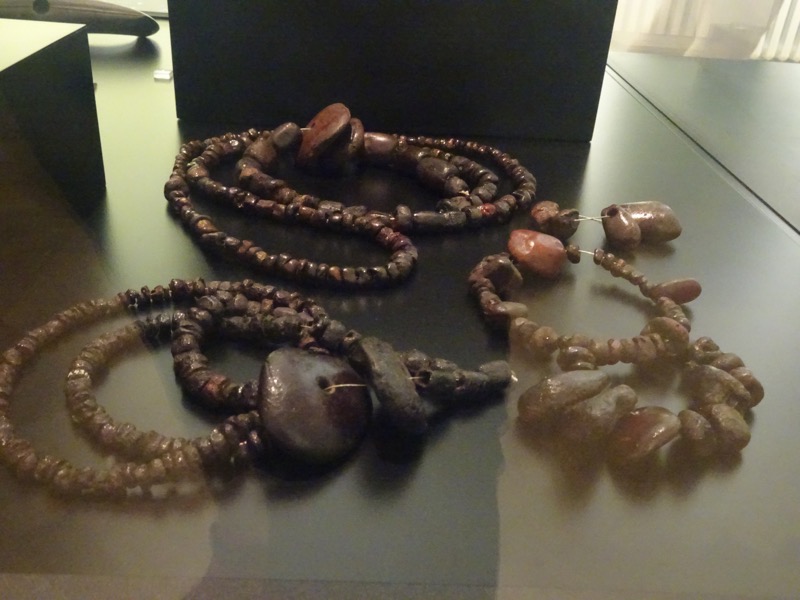 Curved swords sacrificed in a bog at Rorby, Western Zealand c.1550BC. Made in Scandinavia, decorated with ship pictures.
Curved swords sacrificed in a bog at Rorby, Western Zealand c.1550BC. Made in Scandinavia, decorated with ship pictures.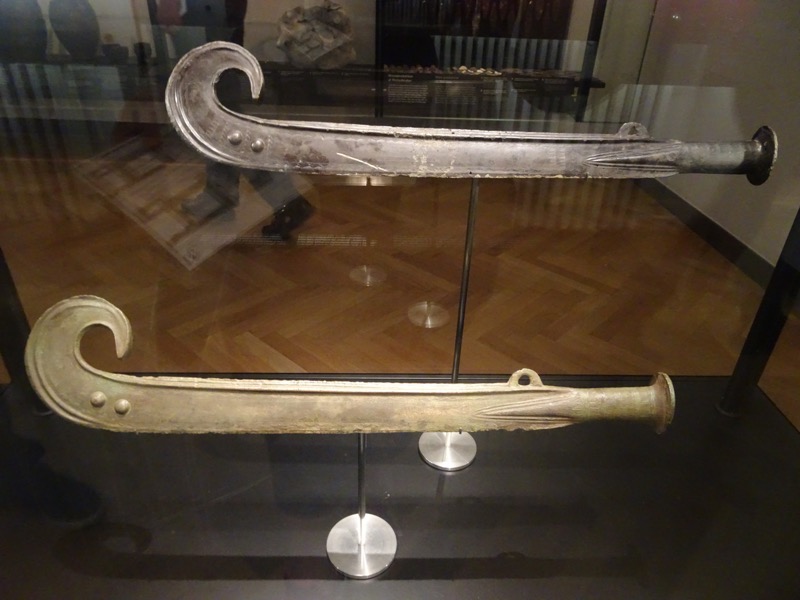 Gilt spectacle shaped fibula with designs fo the Sun and the Moon. Harridslev, Funen 900-700BC.
Gilt spectacle shaped fibula with designs fo the Sun and the Moon. Harridslev, Funen 900-700BC.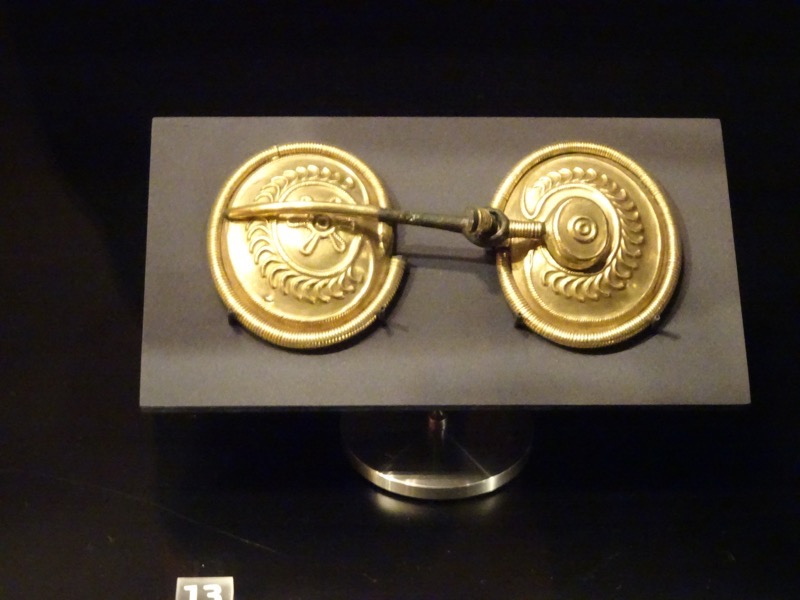
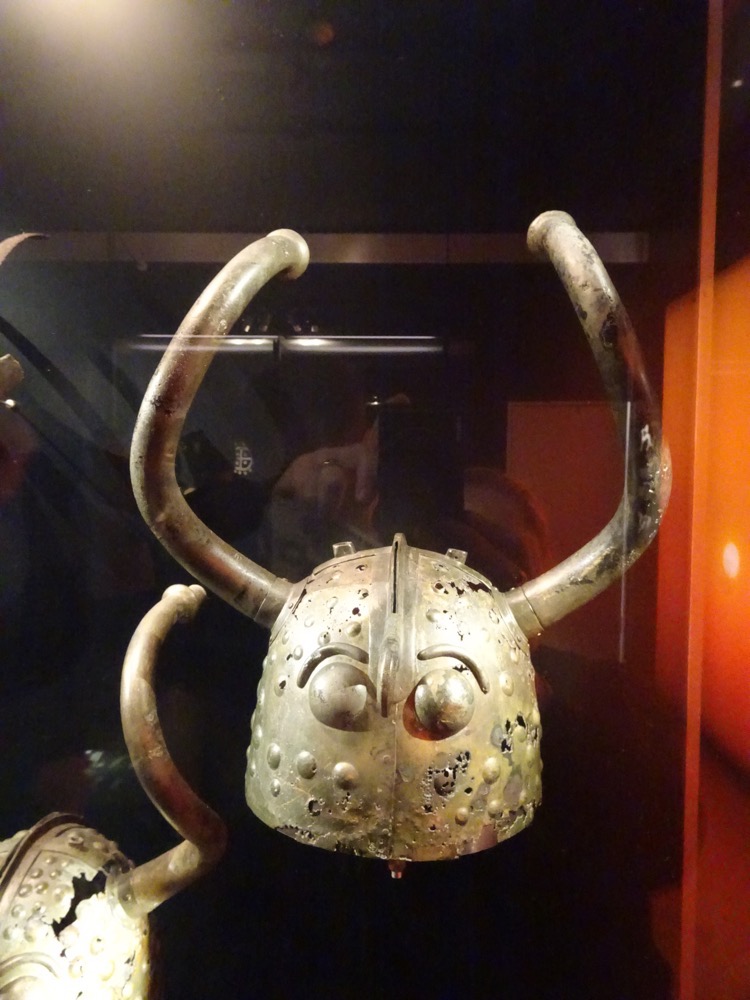 Horned helmets from the bog Vikso Mose at Ballerup, northern Zealand, c.900BC.
Horned helmets from the bog Vikso Mose at Ballerup, northern Zealand, c.900BC. Zealand decorative motifs, c.900BC
Zealand decorative motifs, c.900BC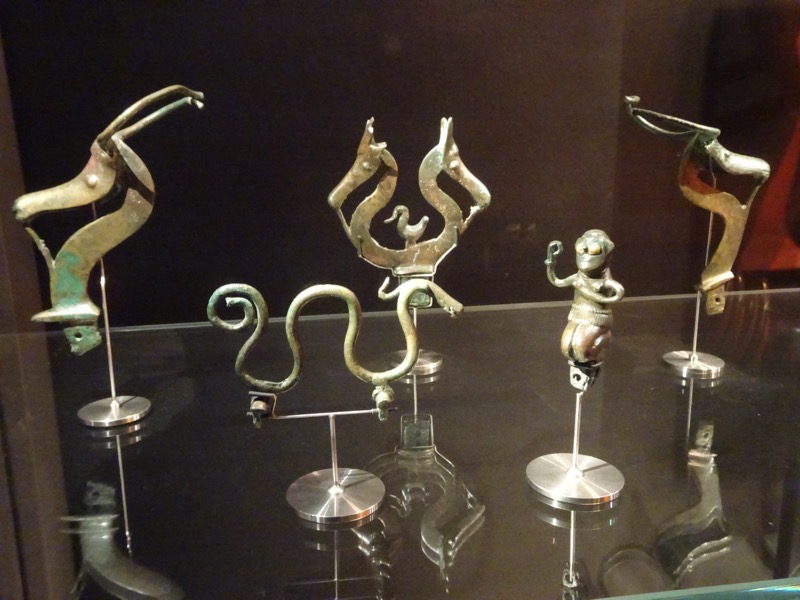 Early rock carving symbols depicting the journey of the sun and people dancing in the honour of the sun, Jaegersborg Dyrehave, 1100-700BC.
Early rock carving symbols depicting the journey of the sun and people dancing in the honour of the sun, Jaegersborg Dyrehave, 1100-700BC.
 Distinctive Nordic wind instruments called ‘lur horns’. Used for Bronze Age rituals 1200-700BC.
Distinctive Nordic wind instruments called ‘lur horns’. Used for Bronze Age rituals 1200-700BC.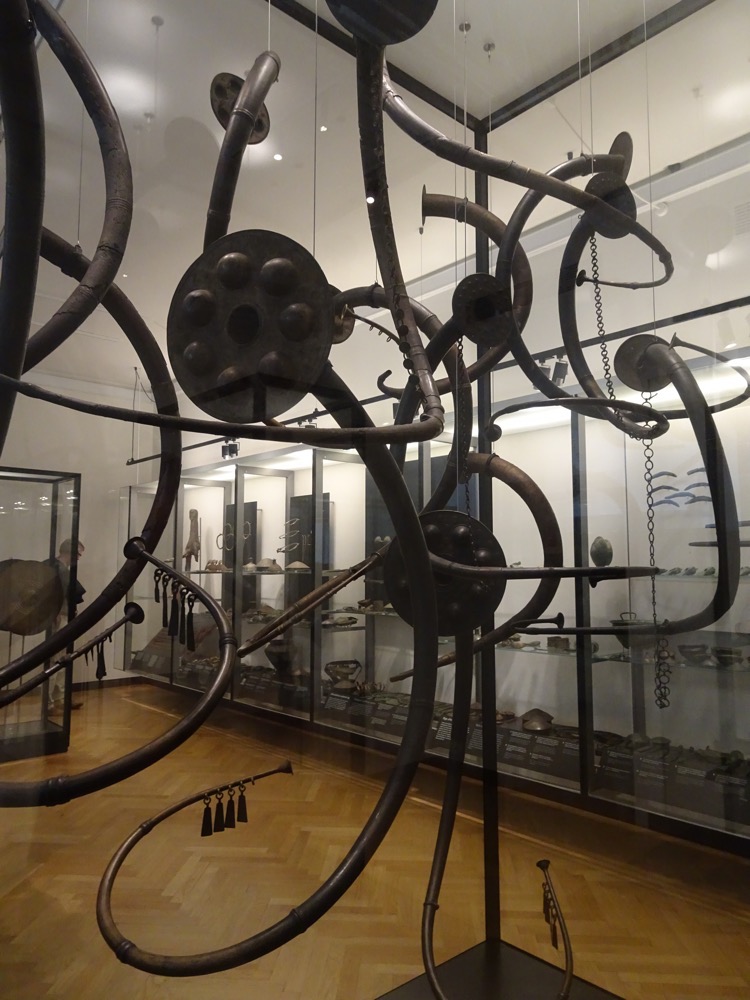 Six swords found close together in a small bog at Astofte, northwestern Zealand 1500-1300BC.
Six swords found close together in a small bog at Astofte, northwestern Zealand 1500-1300BC.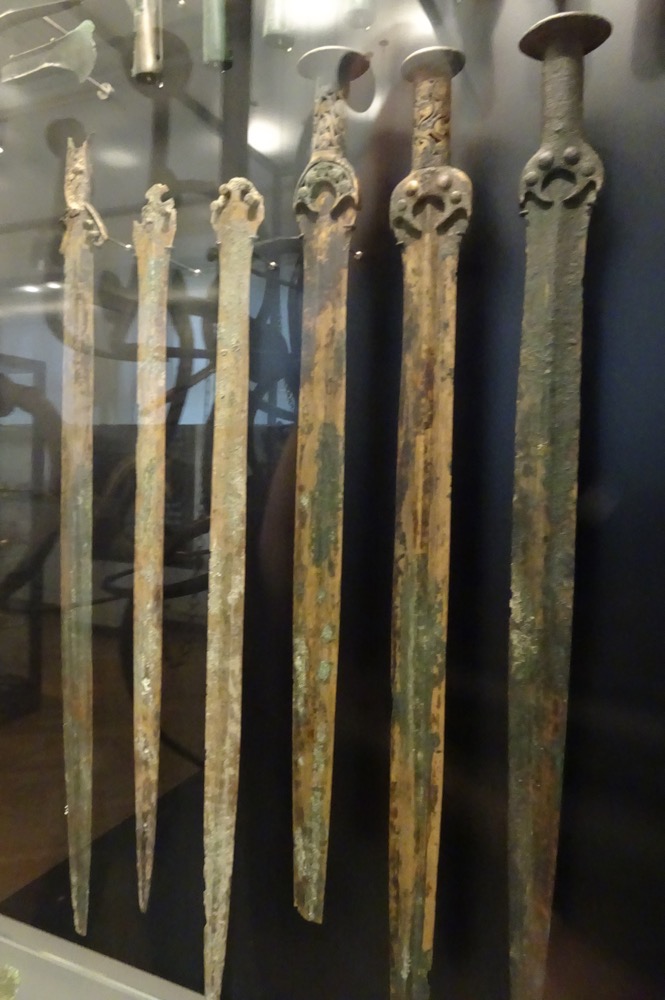 Large belt consisting of many small bronze rings and ornamental plates. Possible hornse harness. From a bog find at Gerlev, northern Zealand 900-700BC.
Large belt consisting of many small bronze rings and ornamental plates. Possible hornse harness. From a bog find at Gerlev, northern Zealand 900-700BC.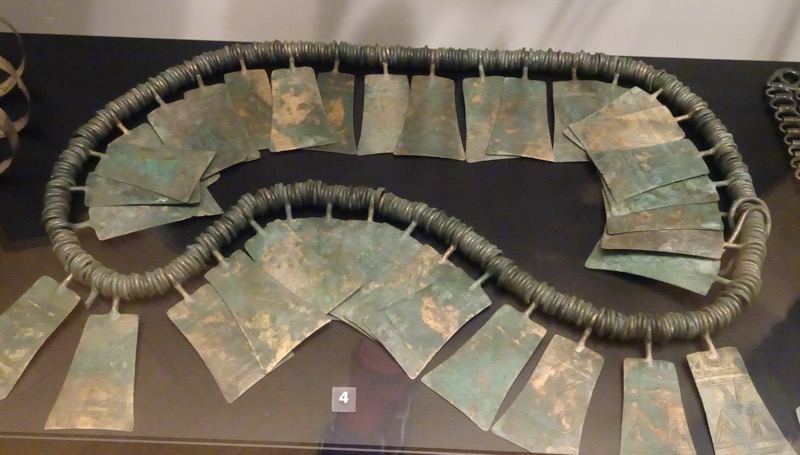 Four chains with ornamental plates, perhaps horse harness. From a passage grave in Frejlev Forest, Lolland. 900-700 BC
Four chains with ornamental plates, perhaps horse harness. From a passage grave in Frejlev Forest, Lolland. 900-700 BC Cult axes found near Hillerod, northern Zealand, 900-600 BC.
Cult axes found near Hillerod, northern Zealand, 900-600 BC. The runestones were erected by the magnates of the period – male and female – in memory of family members, comrades, chieftains, and retainers to show the continuity of the clan and to ensure the rights of heirs. The stones were usually raised in places of high visibility: beside roads, fjords. They were originally all painted bright colours.
The runestones were erected by the magnates of the period – male and female – in memory of family members, comrades, chieftains, and retainers to show the continuity of the clan and to ensure the rights of heirs. The stones were usually raised in places of high visibility: beside roads, fjords. They were originally all painted bright colours.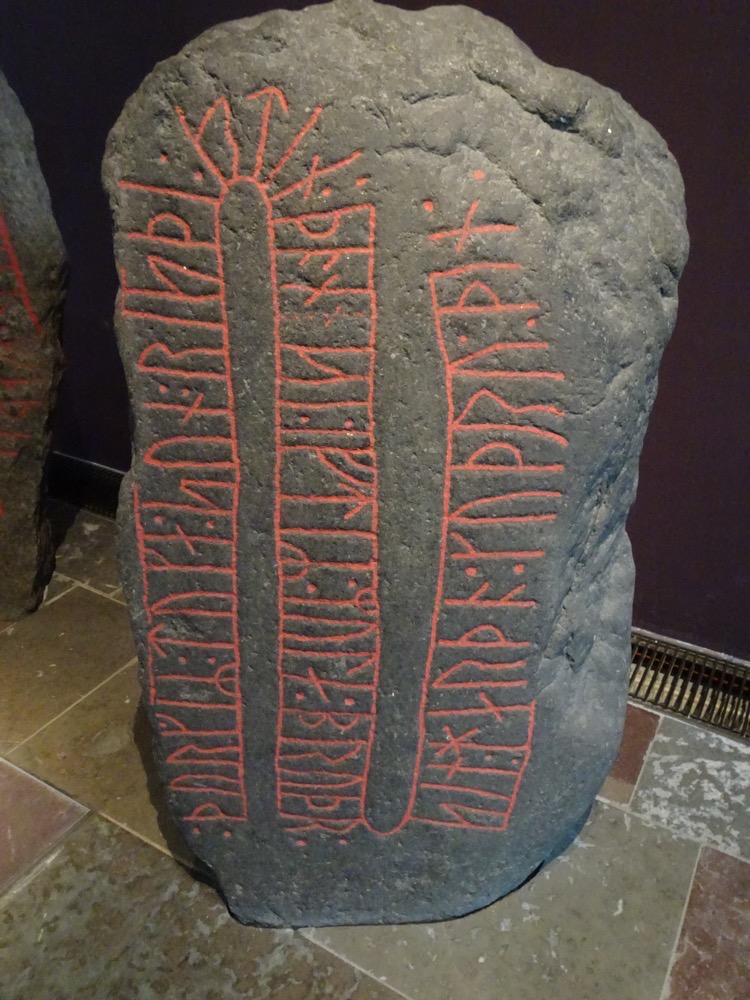 Glenstrup, c.1000AD
Glenstrup, c.1000AD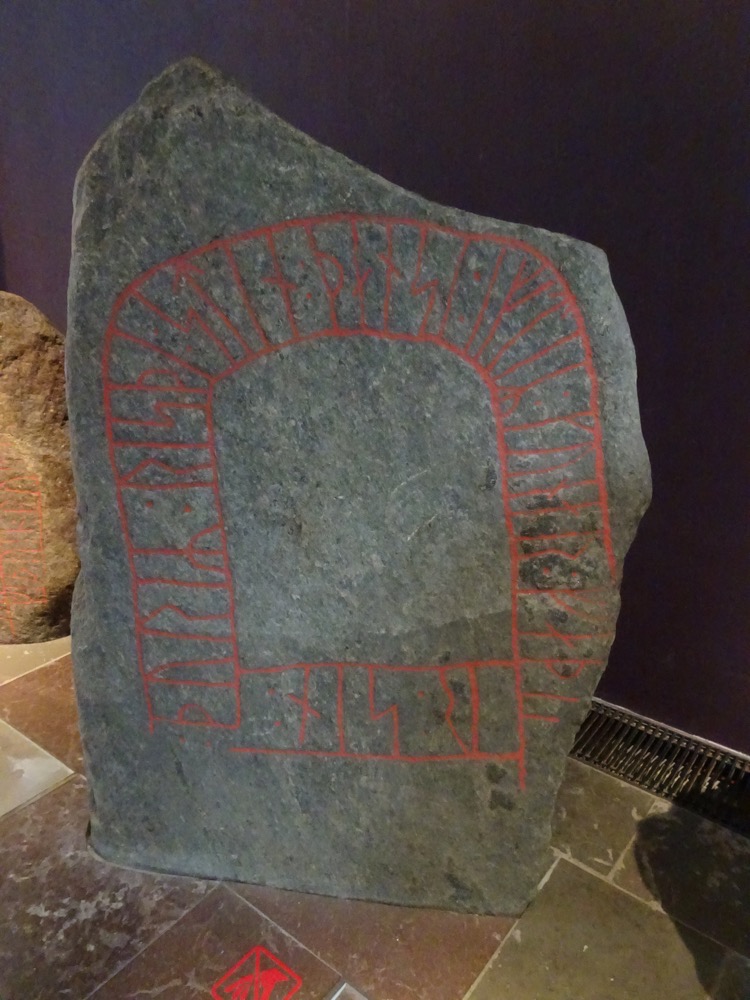 Tarnborg, 11th century AD
Tarnborg, 11th century AD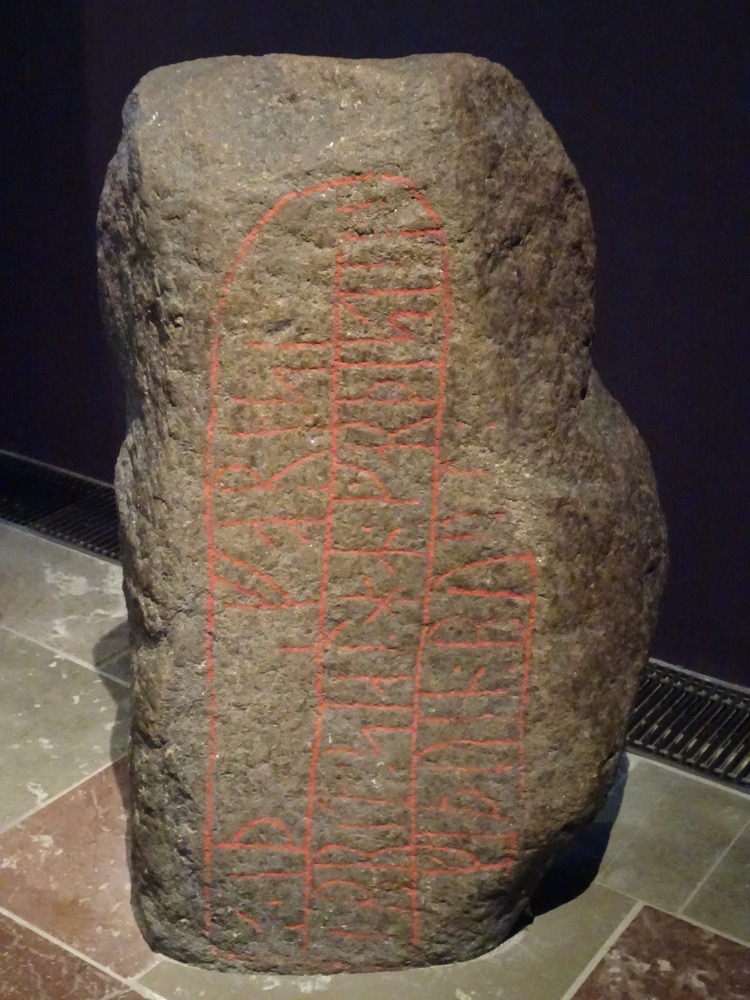 Tryggevaelde, c.10th century.
Tryggevaelde, c.10th century. Sandby. 11th century AD.
Sandby. 11th century AD. Vordingborg, 9th century AD.
Vordingborg, 9th century AD.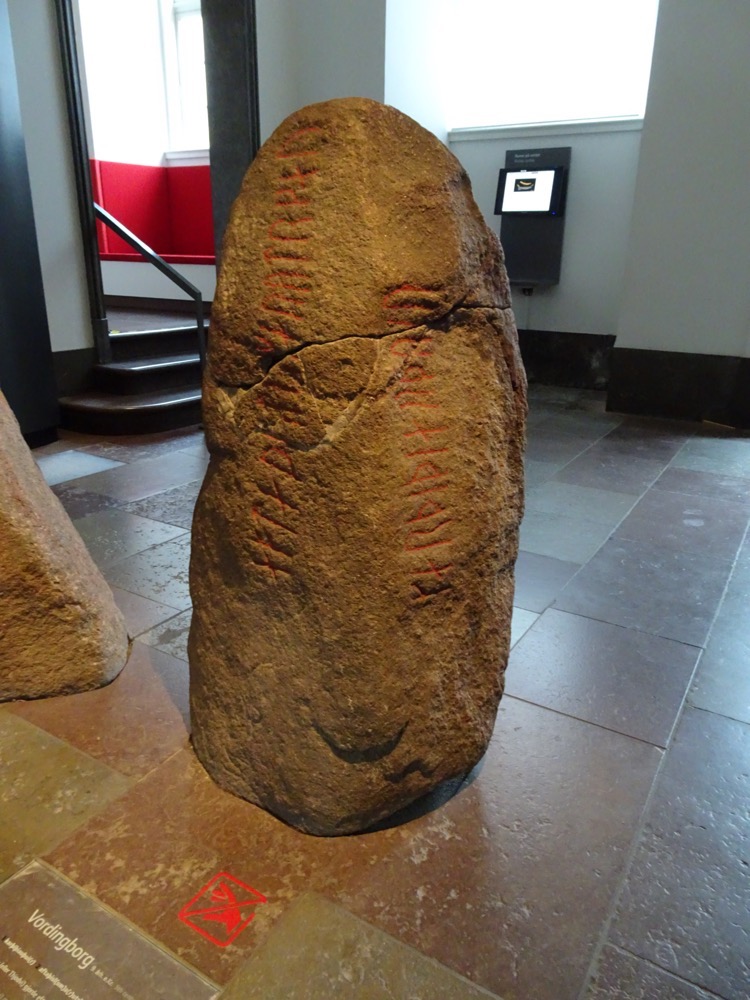 Bregninge, 10th century AD.
Bregninge, 10th century AD. Snoldelev, 8-9th century AD.
Snoldelev, 8-9th century AD.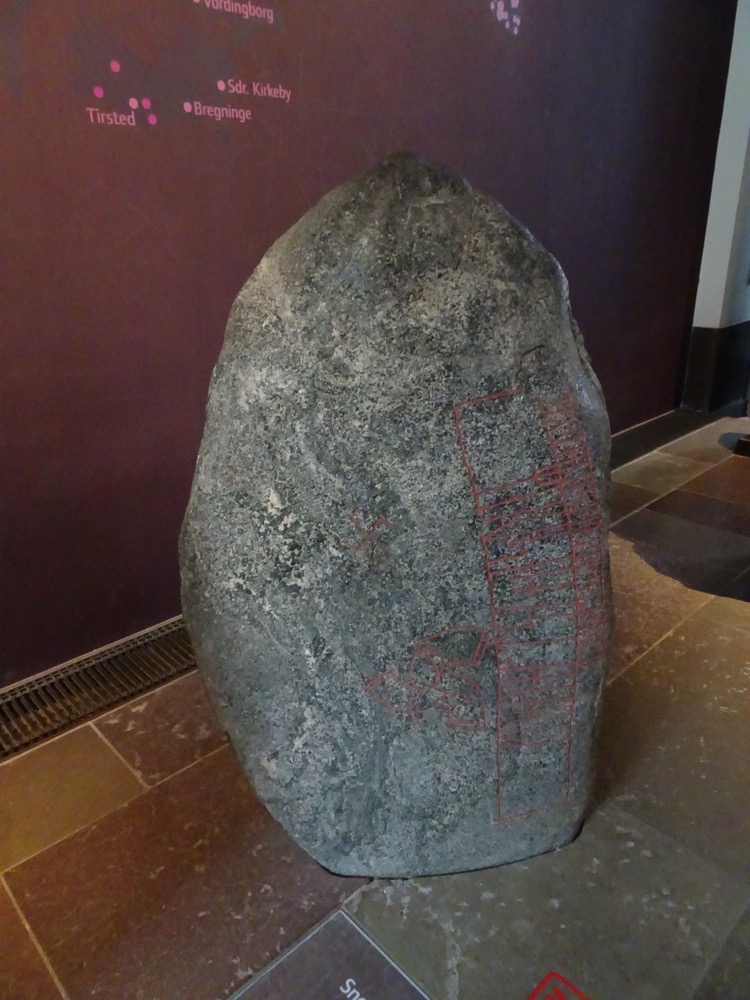 Ega, c.1000AD
Ega, c.1000AD Tirsted, 10th century AD.
Tirsted, 10th century AD.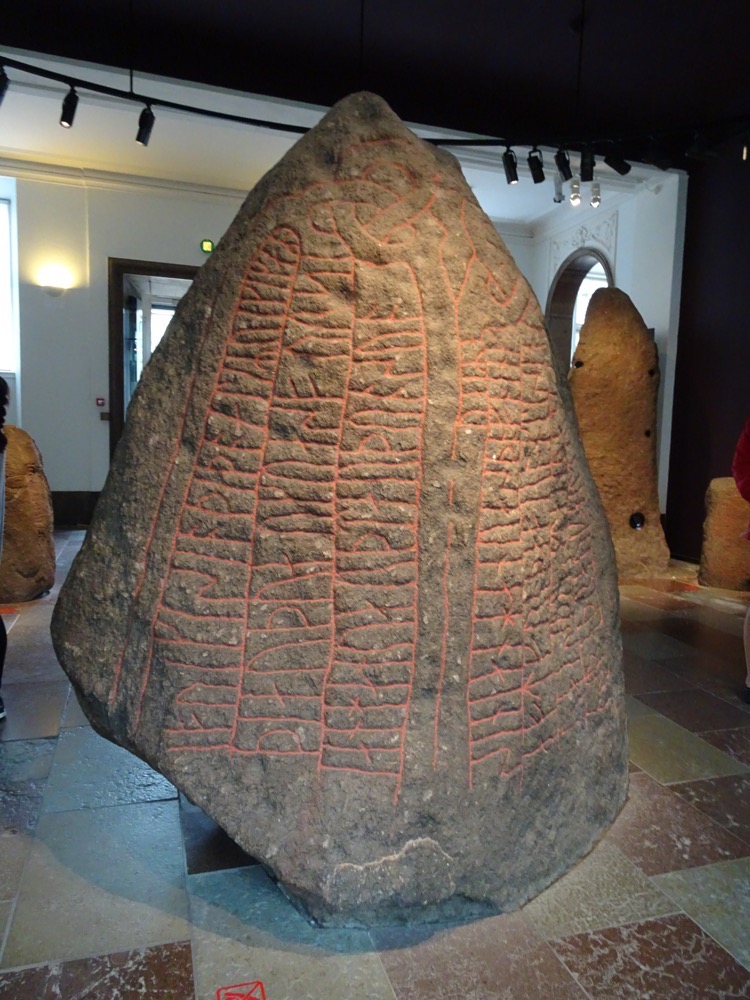 Mr K for scale on that last one.
Mr K for scale on that last one.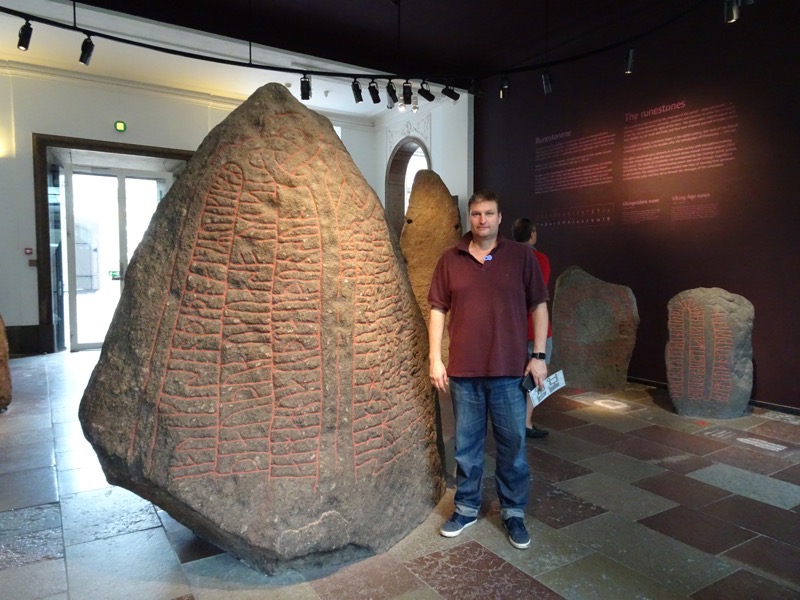
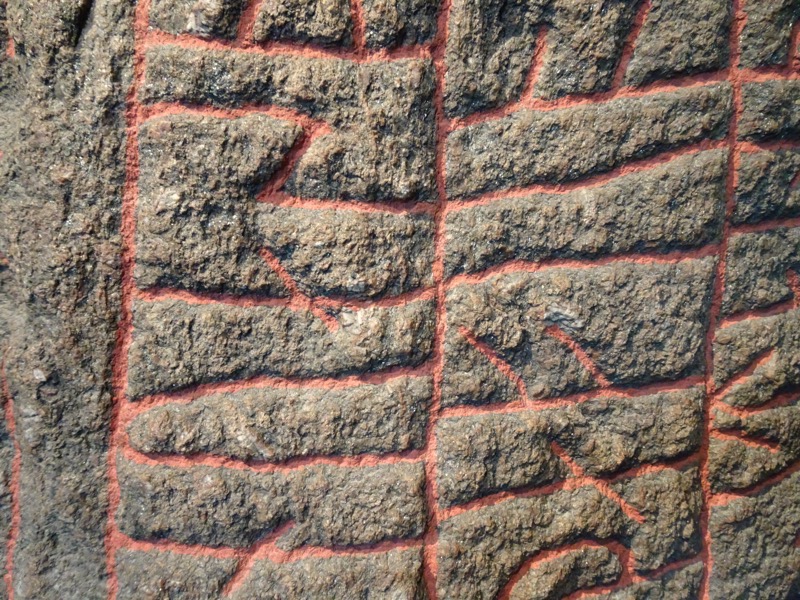
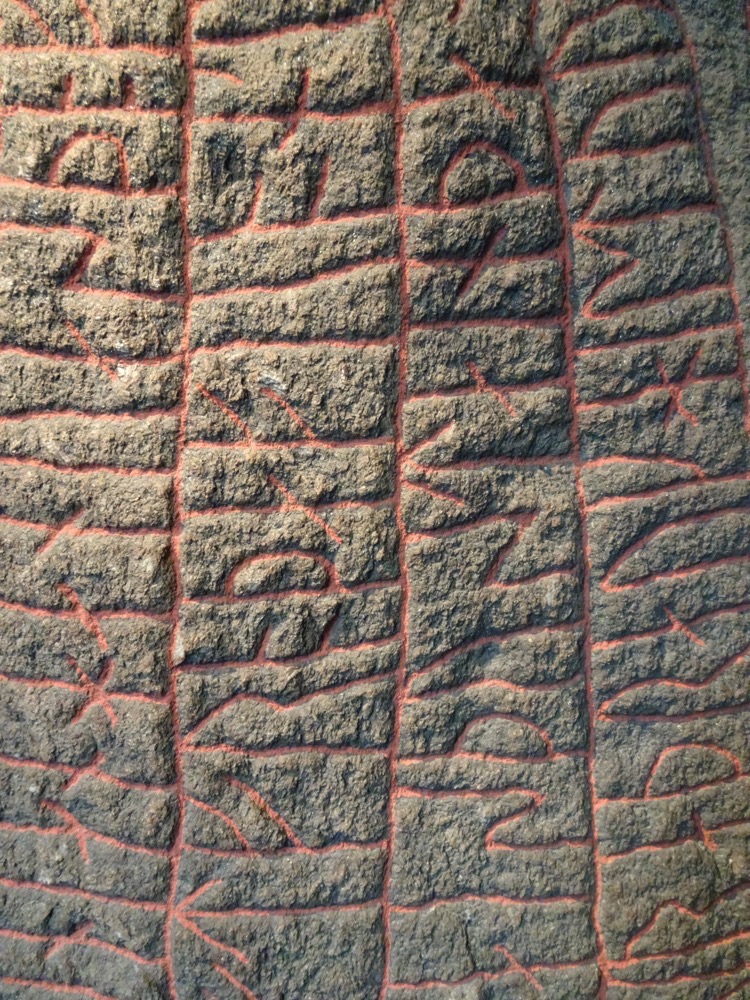

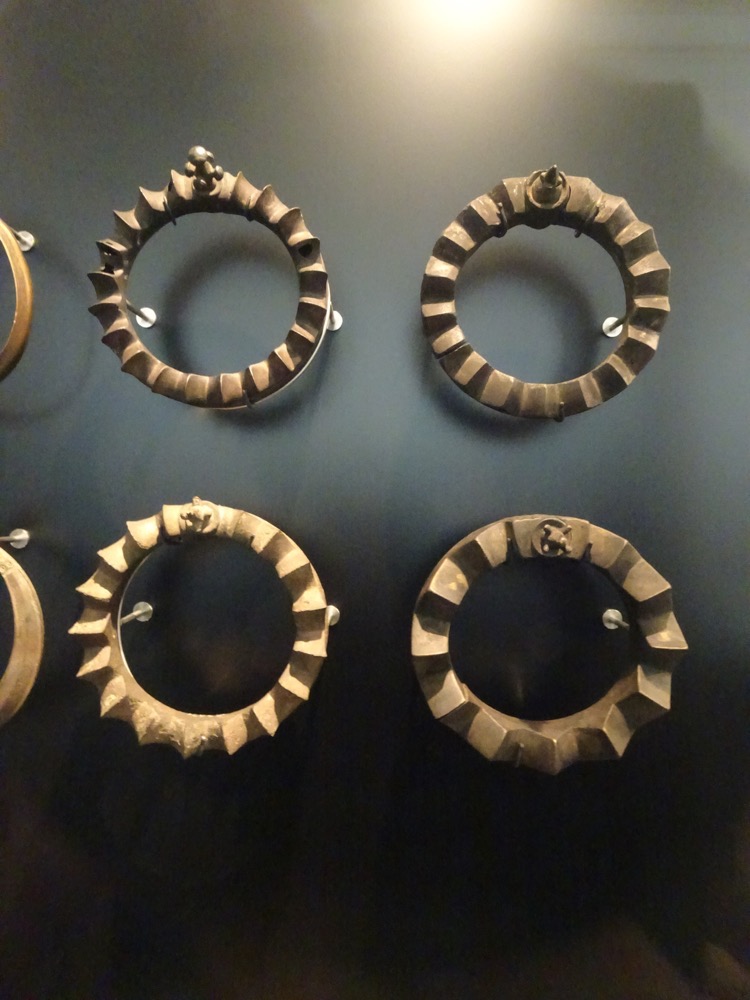 The Dejbjerg Wagon. Preserved from the Dejbjerg Bog, it is equipped with a carriage body that is richly decorated with metal mountings and a drawbar with sheet bronze in On the edge of the carriage body are four Celtic male masks with inlaid enamel for hair and eyes. Many rivets also have enamel inlay.
The Dejbjerg Wagon. Preserved from the Dejbjerg Bog, it is equipped with a carriage body that is richly decorated with metal mountings and a drawbar with sheet bronze in On the edge of the carriage body are four Celtic male masks with inlaid enamel for hair and eyes. Many rivets also have enamel inlay. 
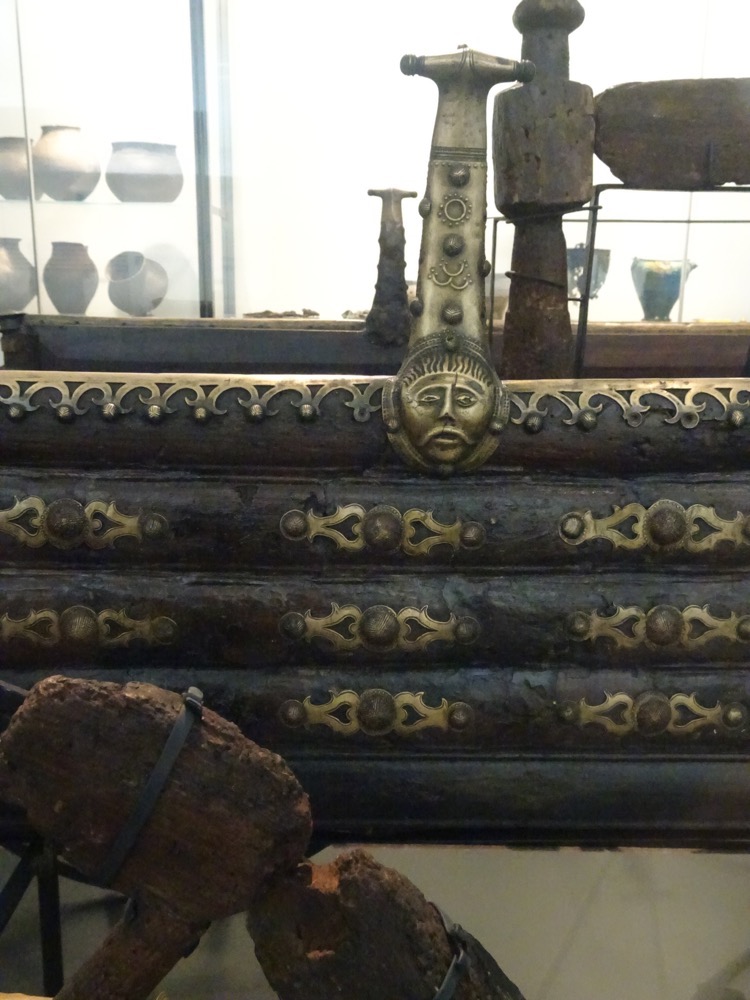
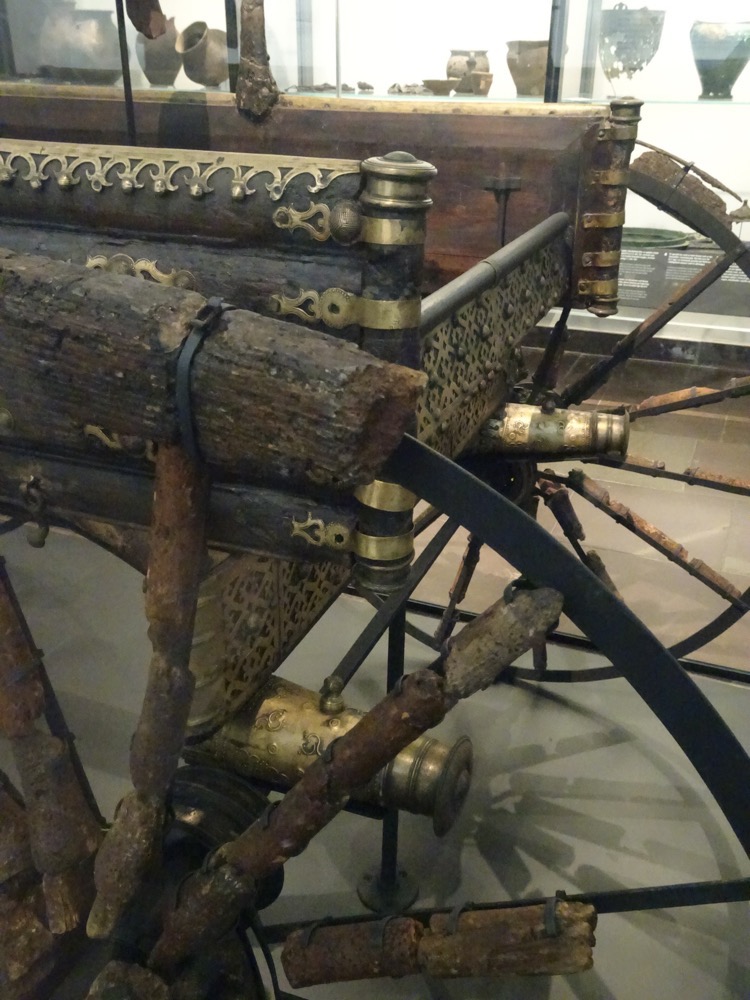 The Gundestrup Cauldron was found in 1891in a peat bog near Raevenmosen in Himmerland, Jutland. The expensive cauldron appears to have been deliberately placed out in the bog as a valuable sacrifice to the powers above.
The Gundestrup Cauldron was found in 1891in a peat bog near Raevenmosen in Himmerland, Jutland. The expensive cauldron appears to have been deliberately placed out in the bog as a valuable sacrifice to the powers above.
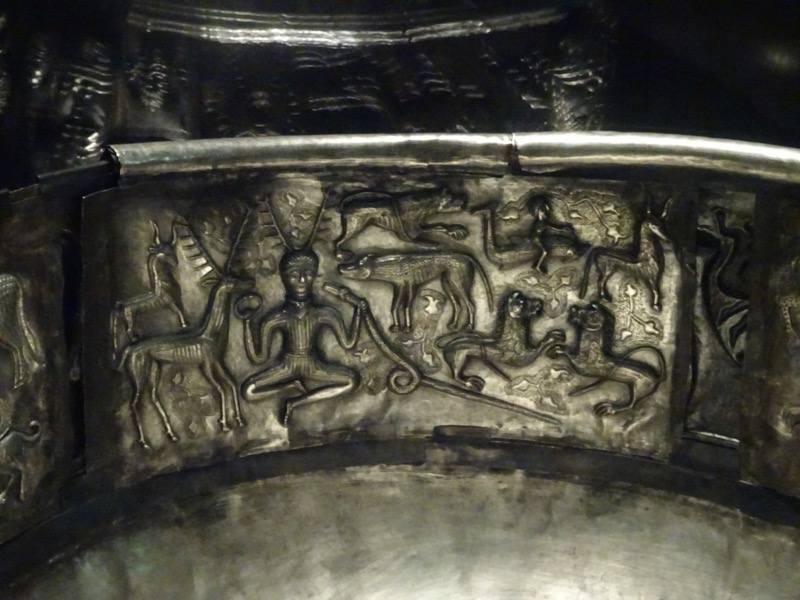 The cauldron is covered in bas relief and engraved elephants, lions, and several gods that are in a decidedly foreign style that show the cauldron originated in remote areas to the south or south east. Exactly where the cauldron was created is still open to debate. It may have been a gift to a great chieftain or taken as war booty. The cauldron may also have been used as a ritual vessel during drinking feasts.
The cauldron is covered in bas relief and engraved elephants, lions, and several gods that are in a decidedly foreign style that show the cauldron originated in remote areas to the south or south east. Exactly where the cauldron was created is still open to debate. It may have been a gift to a great chieftain or taken as war booty. The cauldron may also have been used as a ritual vessel during drinking feasts.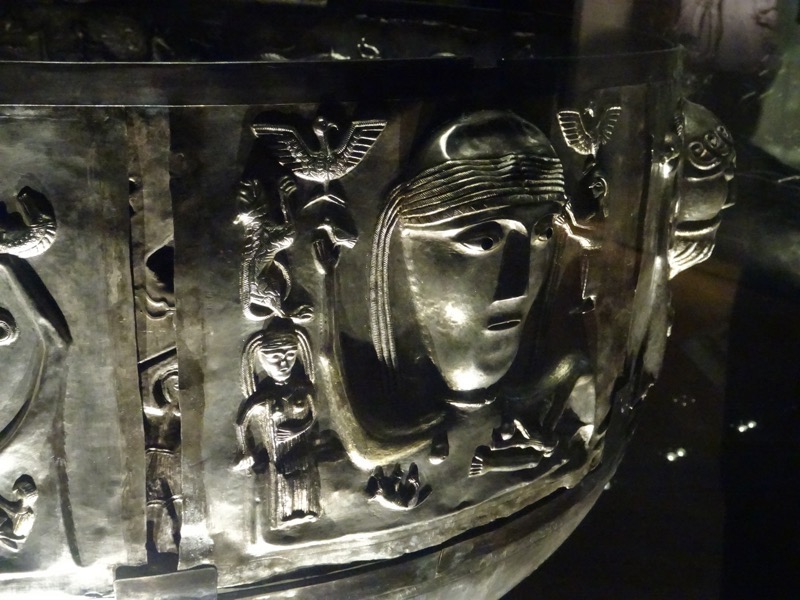 Reliquary. Wooden casket clad with elk horn and gilt-bronze bands. The design form imitates a Viking long house and was originally kept in the Cathedral in Cammin, Pomerania.Scandinavia, late 10th century.
Reliquary. Wooden casket clad with elk horn and gilt-bronze bands. The design form imitates a Viking long house and was originally kept in the Cathedral in Cammin, Pomerania.Scandinavia, late 10th century. 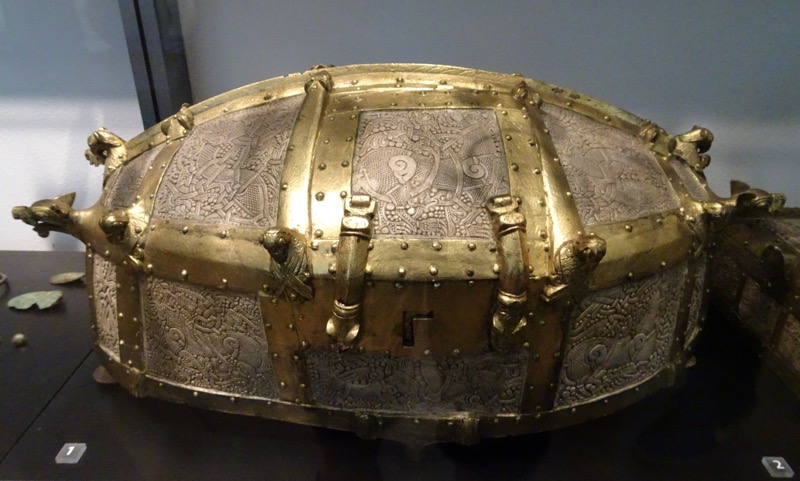 Grave finds from a women’s grave from Holmskov on Als – two tortoise brooches and a trefoil brooch. 10th century AD.
Grave finds from a women’s grave from Holmskov on Als – two tortoise brooches and a trefoil brooch. 10th century AD.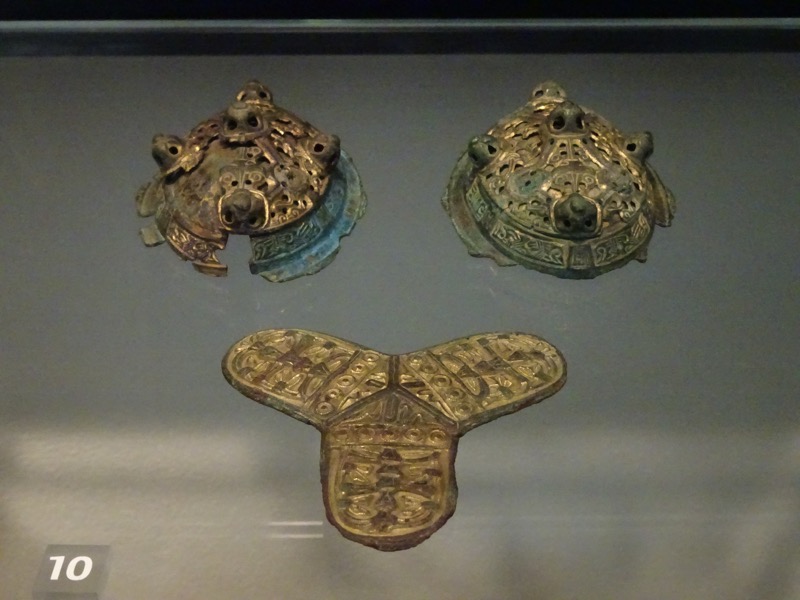 Grave finds from a man’s grave. Hoby, Lolland. c.10th century AD
Grave finds from a man’s grave. Hoby, Lolland. c.10th century AD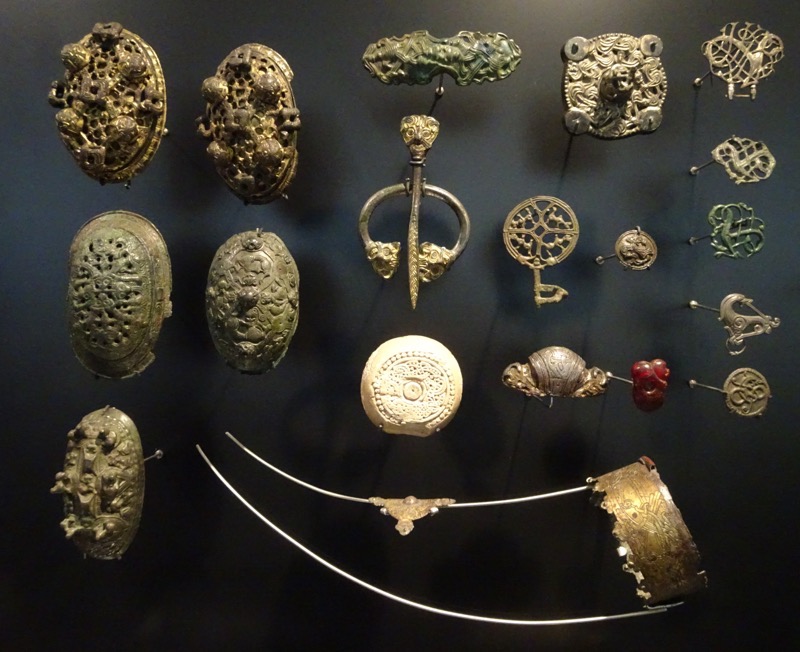 Grave finds from a woman’s grave shortly after 700AD from Snekkebjerg on Bornholm. The large gilt brooch with its string of glass mosaic and rock crystal beads was worn by the woman as a fastener at the neck of a shawl. There were also two arm rings and a pair of knives.
Grave finds from a woman’s grave shortly after 700AD from Snekkebjerg on Bornholm. The large gilt brooch with its string of glass mosaic and rock crystal beads was worn by the woman as a fastener at the neck of a shawl. There were also two arm rings and a pair of knives.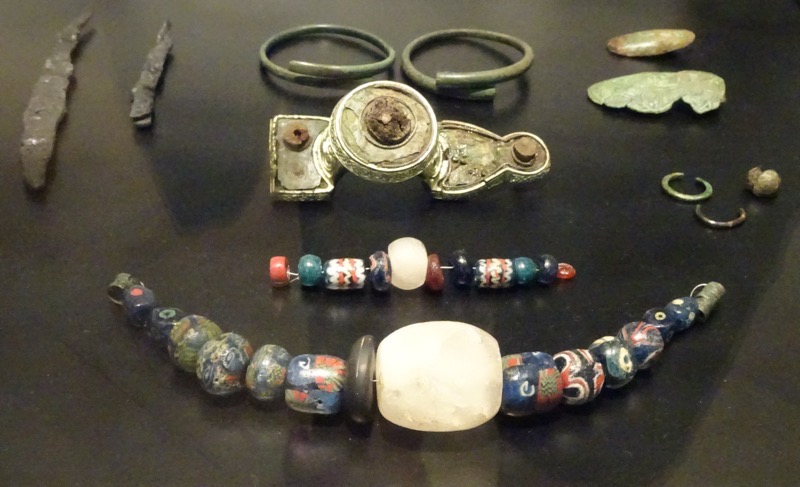
 Woman’s grave from c.400AD from Lihme in central Jutland. Two fine silver gilt brooches held her costume together. Also in the find was a string of glass and amber beads (in a semi-symmetrical arrangement).
Woman’s grave from c.400AD from Lihme in central Jutland. Two fine silver gilt brooches held her costume together. Also in the find was a string of glass and amber beads (in a semi-symmetrical arrangement).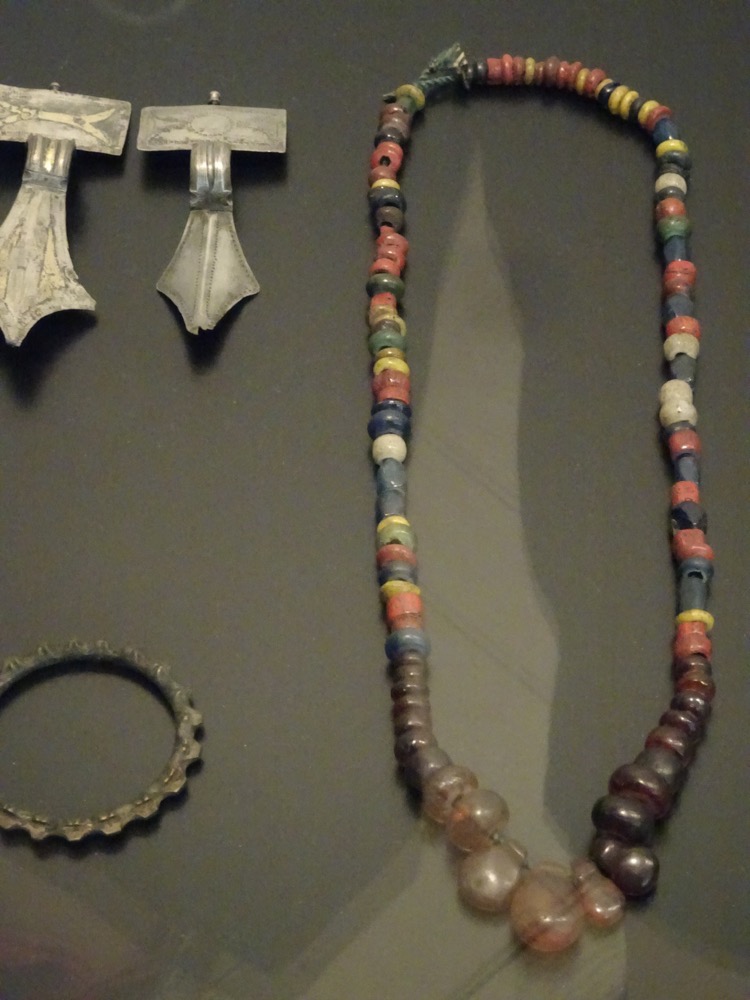 Neck ring. Denmark’s largest gold treasure from the Viking Age, it was found in an area near gold workshops and weighs a whopping 1.8kg… the cost of this of neck ring would have been the same as 500 head of cattle. c.10th century AD.
Neck ring. Denmark’s largest gold treasure from the Viking Age, it was found in an area near gold workshops and weighs a whopping 1.8kg… the cost of this of neck ring would have been the same as 500 head of cattle. c.10th century AD. Ornaments from the 6th to 8th centuries AD.
Ornaments from the 6th to 8th centuries AD. Ornaments and mountings from the 9th to 11th centuries AD.
Ornaments and mountings from the 9th to 11th centuries AD. detail:
detail: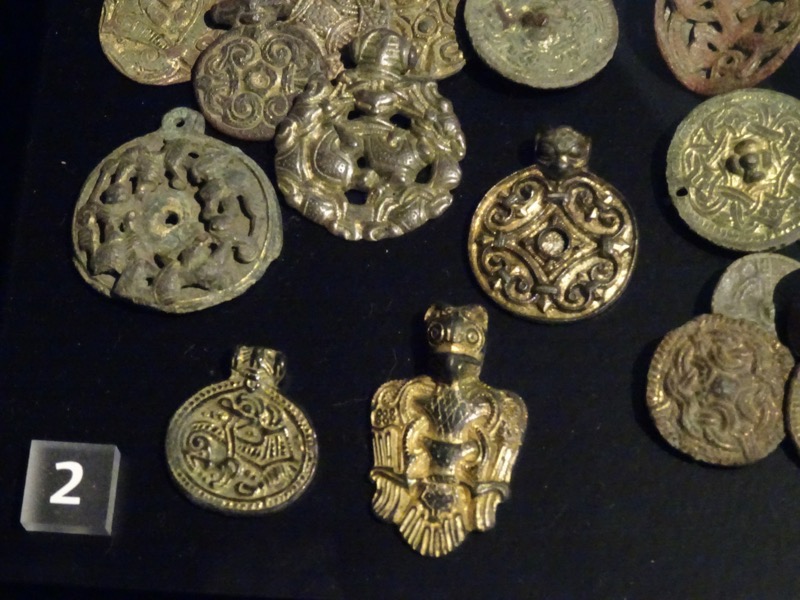
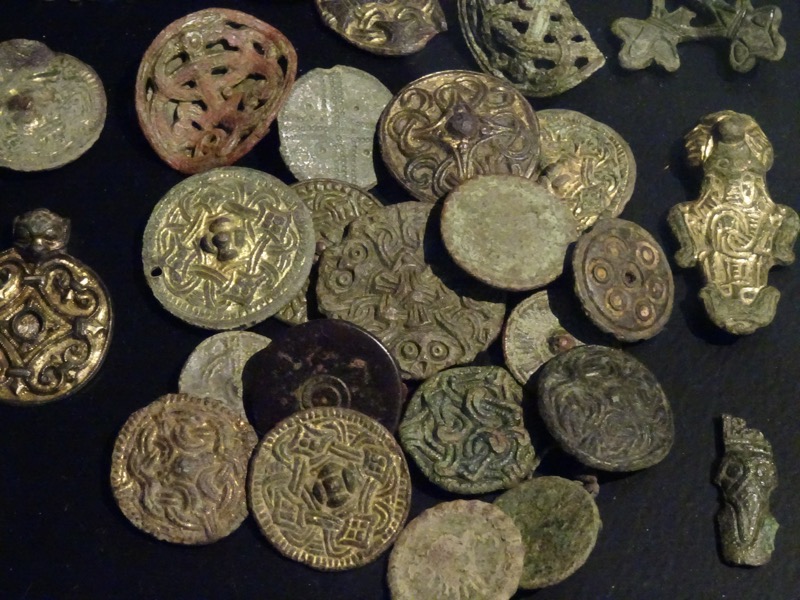
 Hoard find from Duesminde on Lolland from around 900 AD. The linked silver rings come from central Russia. These are payment rings, measured out in accordance with the Persian pound weight system. The find testifies to trade relations along the Russian rivers.
Hoard find from Duesminde on Lolland from around 900 AD. The linked silver rings come from central Russia. These are payment rings, measured out in accordance with the Persian pound weight system. The find testifies to trade relations along the Russian rivers.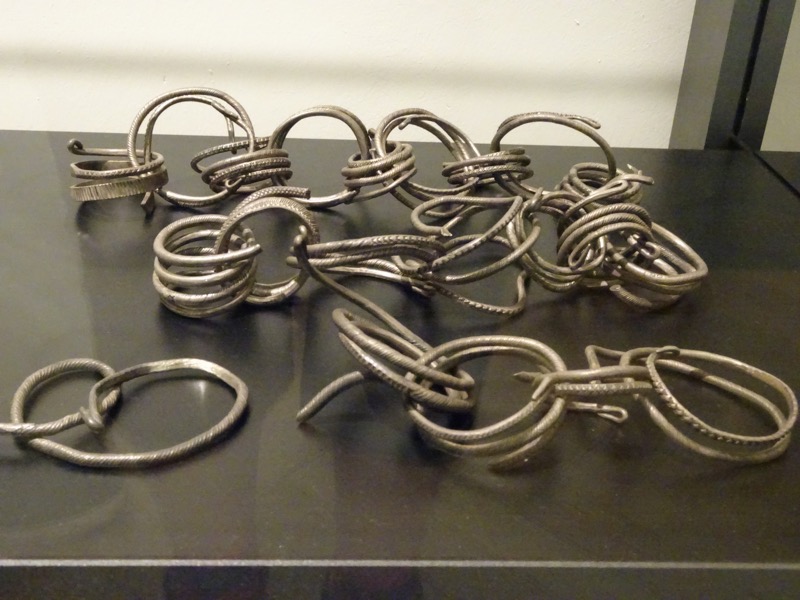 Items from one of the largest silver hoards ever found in Rebild, Himmerland. The hoard was buried in a piece of animal skin and contains 146 pieces of broken ornaments and bars, as well as an Arab coin. The total weight is 5kgs. The hoard includes objects of Nordic, Russian and Arabic origin. Buried in the 10th century AD.
Items from one of the largest silver hoards ever found in Rebild, Himmerland. The hoard was buried in a piece of animal skin and contains 146 pieces of broken ornaments and bars, as well as an Arab coin. The total weight is 5kgs. The hoard includes objects of Nordic, Russian and Arabic origin. Buried in the 10th century AD.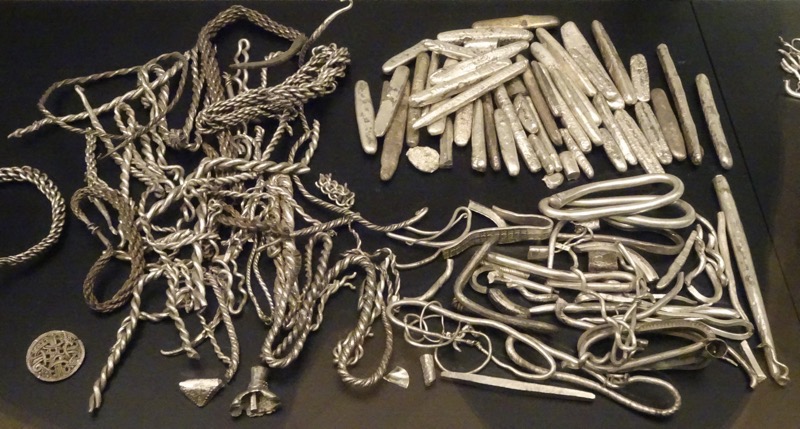 More pleasing symmetrical bead arrangements. 10th century AD.
More pleasing symmetrical bead arrangements. 10th century AD.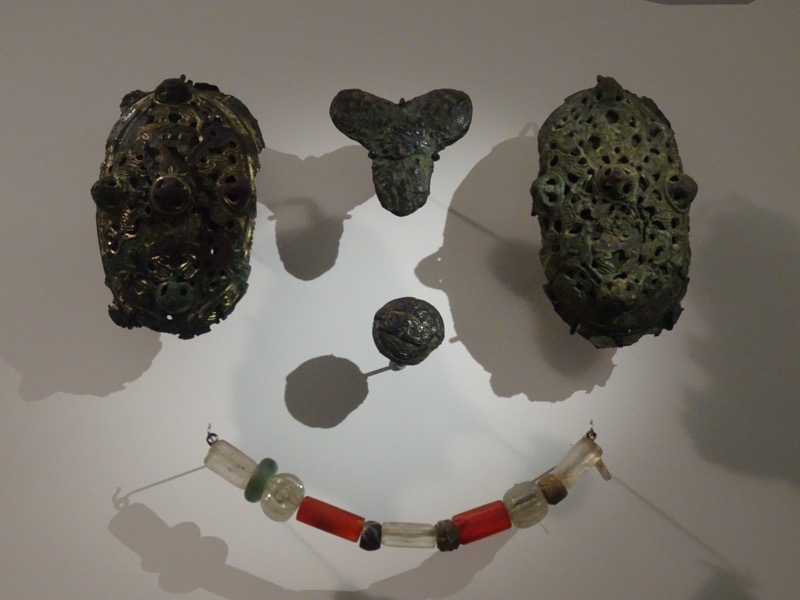
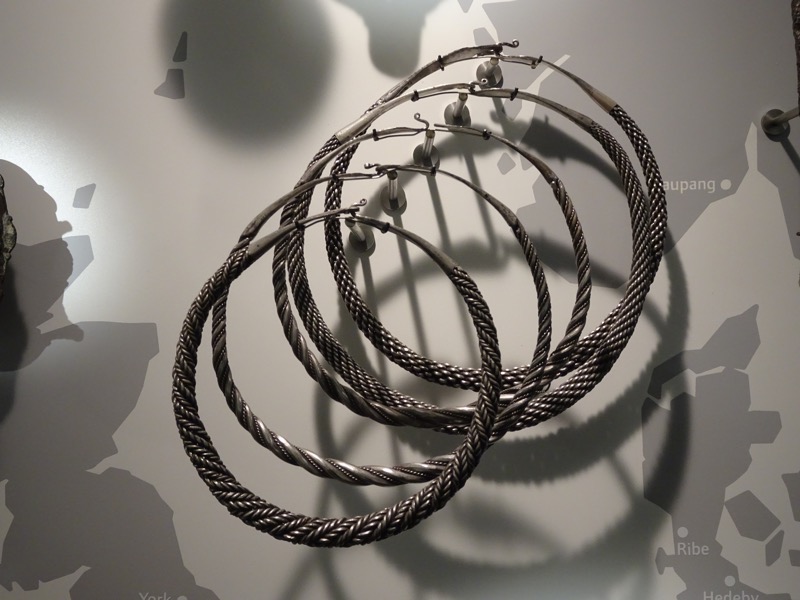 Hoard find with 1.3kg of silver from Duesminde on Lolland. Strap buckles and mountings for sword belts and riding harness made in the Frankish Kingdom in 820-870 AD. Five mountings belonging to one sword belt are assembled. Belt equipmentof this quality belonged to the Frankish aristocracy. The hoard was buried in the middle of the 10th century. The silver had a contemporary value of ten swords or 55 cows.
Hoard find with 1.3kg of silver from Duesminde on Lolland. Strap buckles and mountings for sword belts and riding harness made in the Frankish Kingdom in 820-870 AD. Five mountings belonging to one sword belt are assembled. Belt equipmentof this quality belonged to the Frankish aristocracy. The hoard was buried in the middle of the 10th century. The silver had a contemporary value of ten swords or 55 cows.
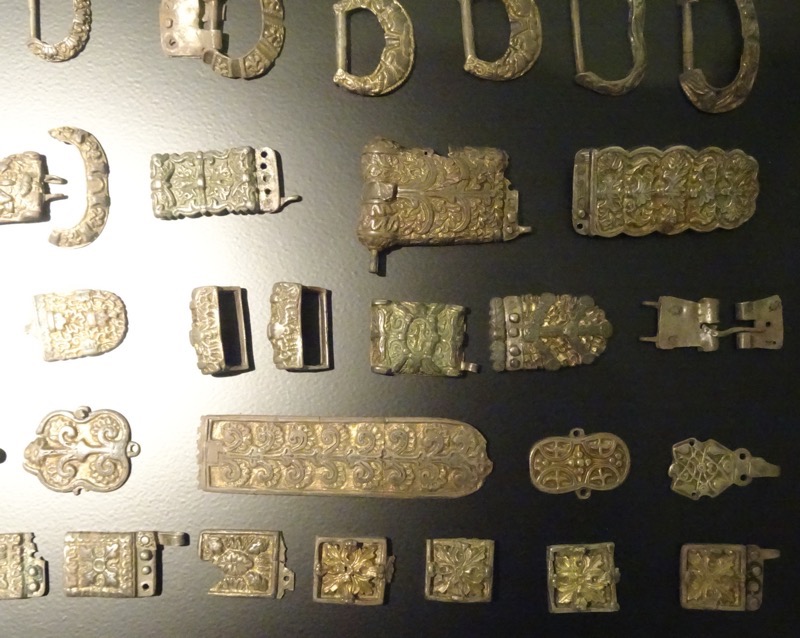
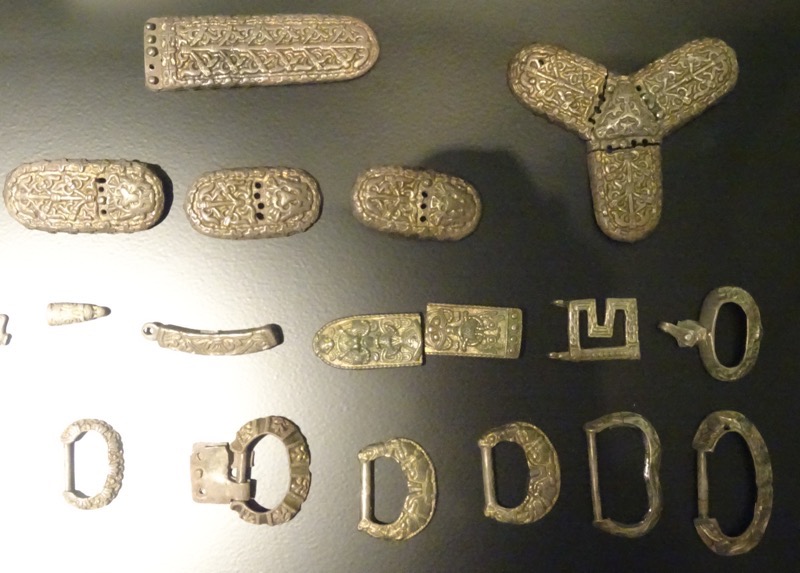
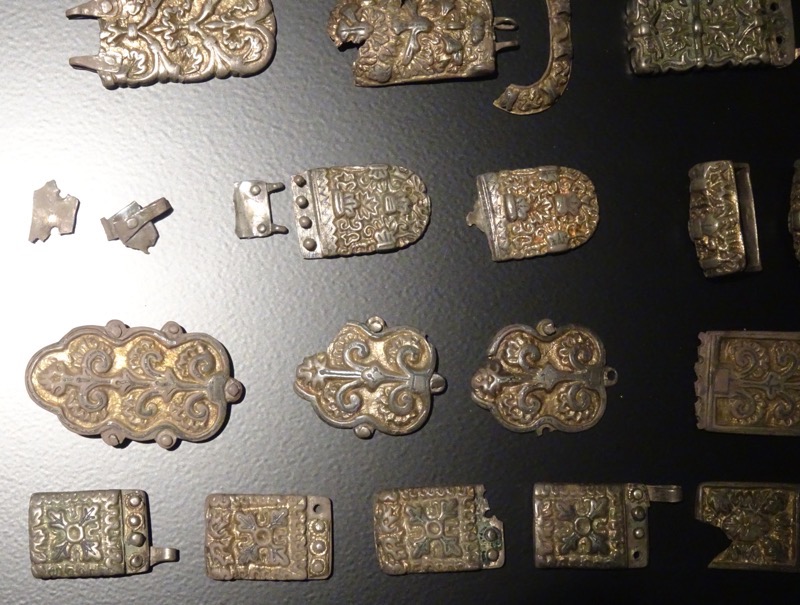 Hoard fine from Hornelund near Varde brooches and an arm ring. The brooches are decorated with filigree and granulations. Their decoration with foliage and vine scrolls have their origins in Christian art. The Norse heads on one of the brooches show that they made by a Danish goldsmith in the second half of the 10th century AD.
Hoard fine from Hornelund near Varde brooches and an arm ring. The brooches are decorated with filigree and granulations. Their decoration with foliage and vine scrolls have their origins in Christian art. The Norse heads on one of the brooches show that they made by a Danish goldsmith in the second half of the 10th century AD.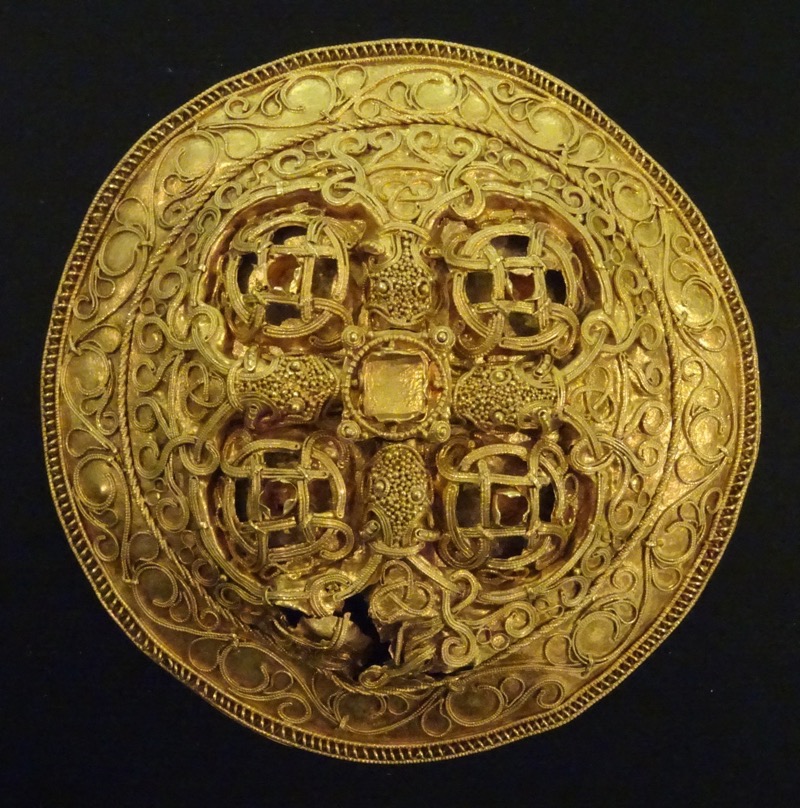
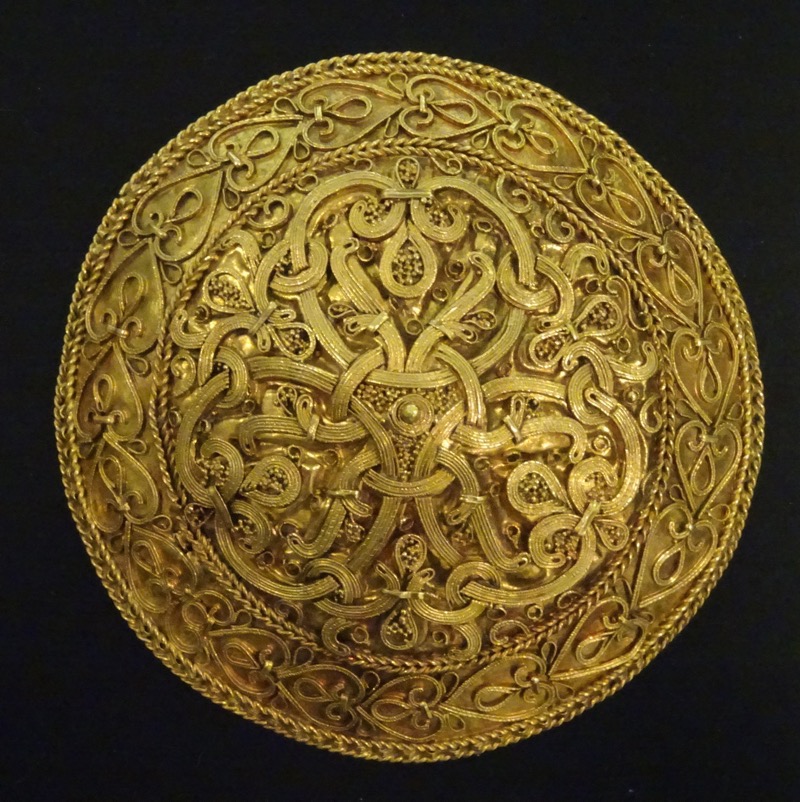
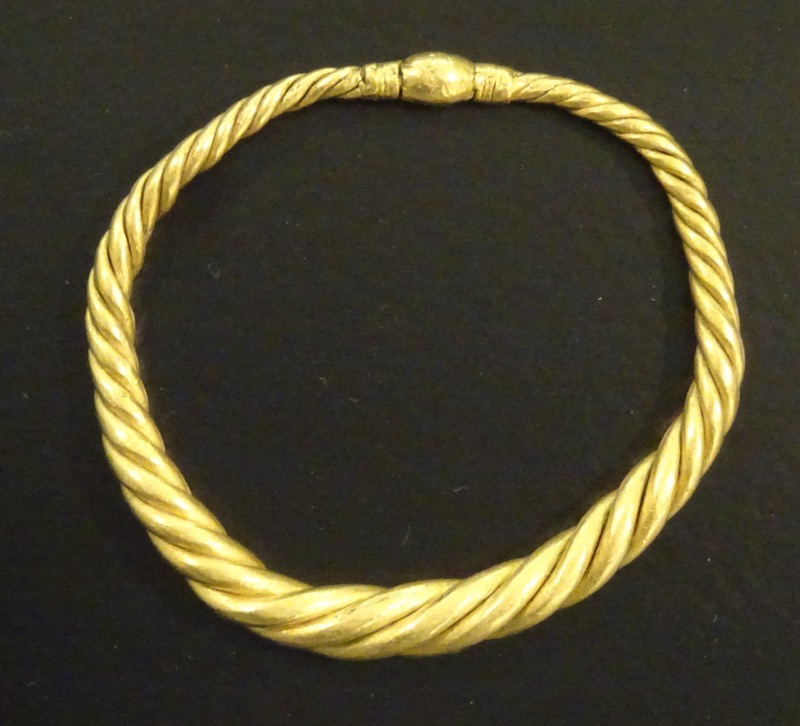 Part of a silver hoard of 51 bars, rings, hack silver, and coins from Norreballe in Zealand. The total weight of this hoard is over 4kgs. The hoard also included Arab coins and was buried in the second half of the 10th century AD.
Part of a silver hoard of 51 bars, rings, hack silver, and coins from Norreballe in Zealand. The total weight of this hoard is over 4kgs. The hoard also included Arab coins and was buried in the second half of the 10th century AD.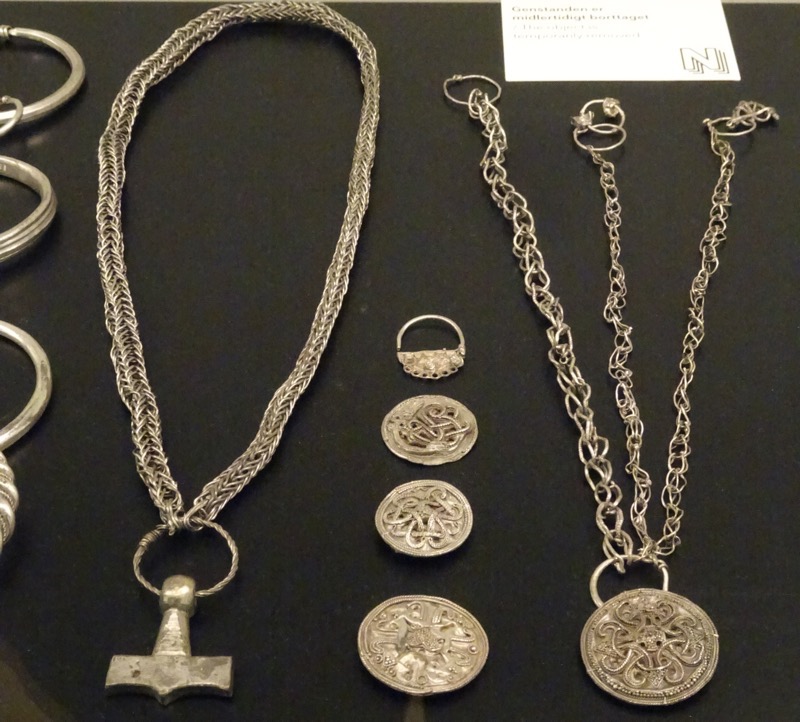
 Above & Below: Hoard finds from Mandemark on Mon with gold arm rings, seven silver arm rings, two chains and two Thor’s Hammers. The hoard was one of relatively few that contained both gold and silver. Buried in the latter half of the 10th century.
Above & Below: Hoard finds from Mandemark on Mon with gold arm rings, seven silver arm rings, two chains and two Thor’s Hammers. The hoard was one of relatively few that contained both gold and silver. Buried in the latter half of the 10th century.
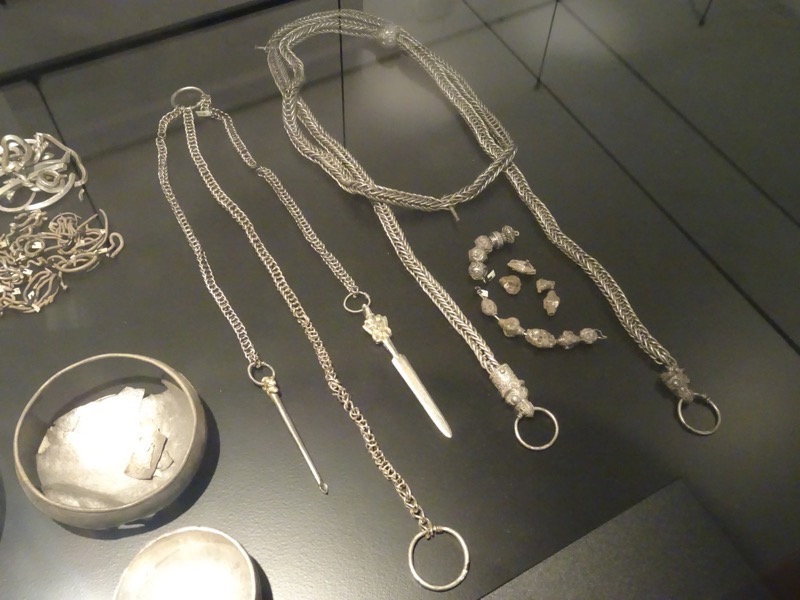 Silver hoard from Terslev in Zealand with 6.6kgs of silver including 1,751 coins. The hoard was also buried in the second half of the 10th century (seemed to be a lot of that going on at the time!). Objects include: neck and arm rings, chains with toiletry articles and costume ornaments. There is also a drinking service with cups and a large bowl which may have been of Persian origin.
Silver hoard from Terslev in Zealand with 6.6kgs of silver including 1,751 coins. The hoard was also buried in the second half of the 10th century (seemed to be a lot of that going on at the time!). Objects include: neck and arm rings, chains with toiletry articles and costume ornaments. There is also a drinking service with cups and a large bowl which may have been of Persian origin.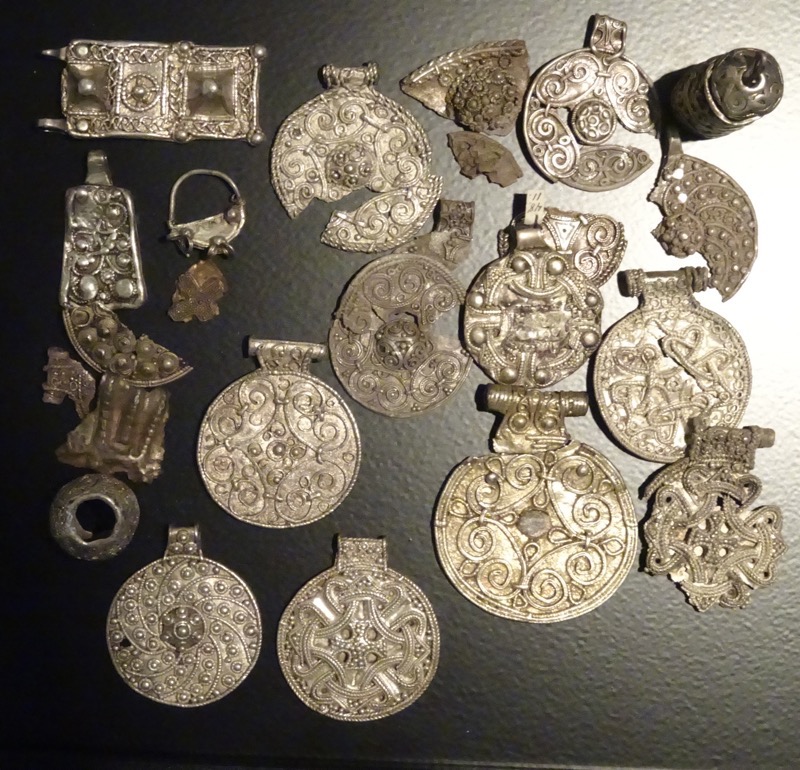 Beads. c.5th century AD.
Beads. c.5th century AD. Neck ring form Hannenov on Falster with brazed on decoration with filigree and small animal figures 5th century.
Neck ring form Hannenov on Falster with brazed on decoration with filigree and small animal figures 5th century. Finger rings from the 2nd – 4th century AD from various find spots.
Finger rings from the 2nd – 4th century AD from various find spots. Hoard find from Brangstrup on Funen, from the latter half of the 4th century. The pendants are of southeastern European origin.
Hoard find from Brangstrup on Funen, from the latter half of the 4th century. The pendants are of southeastern European origin.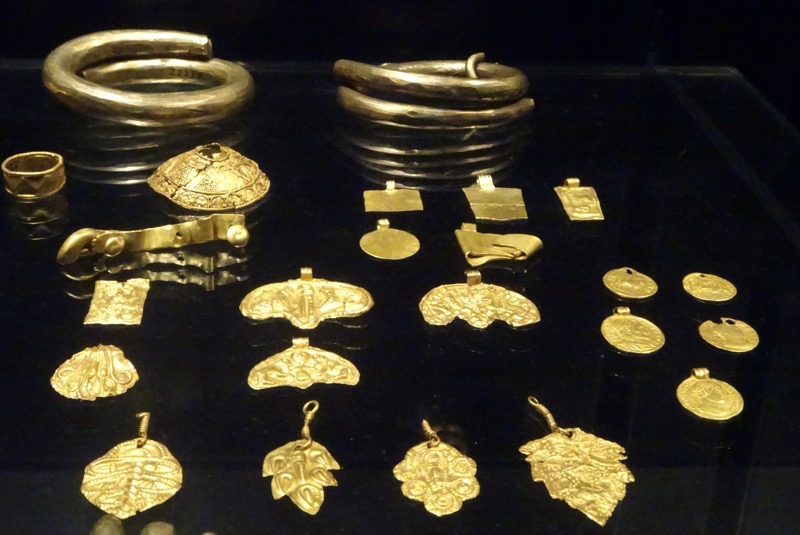
 Above & detail Below: Finger rings from the 1st to 6th centuries from various find spots. The use of the finger ring was taken over from the Romans. A few of these rings were made in the Roman Empire.
Above & detail Below: Finger rings from the 1st to 6th centuries from various find spots. The use of the finger ring was taken over from the Romans. A few of these rings were made in the Roman Empire. Hoard find with women’s jewelry from Klithuse in north Jutland. c.500 AD.
Hoard find with women’s jewelry from Klithuse in north Jutland. c.500 AD. Scabbard mountings of gold from various find spots – c.5th-6th centuries AD.
Scabbard mountings of gold from various find spots – c.5th-6th centuries AD.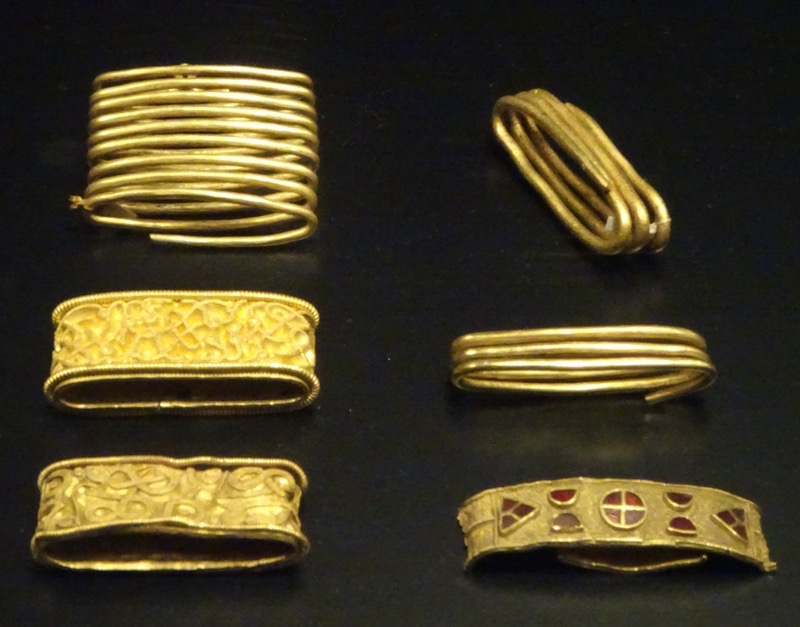
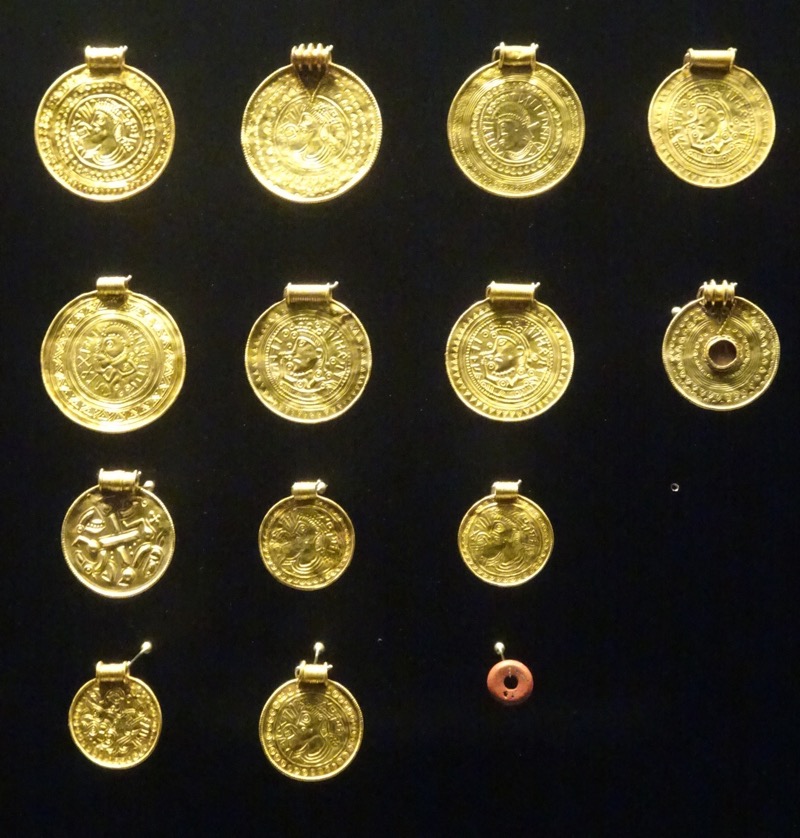 Above & detail Below: Bracteates and pendants from a bog find at Darum in western Jutland, 6th century AD.
Above & detail Below: Bracteates and pendants from a bog find at Darum in western Jutland, 6th century AD.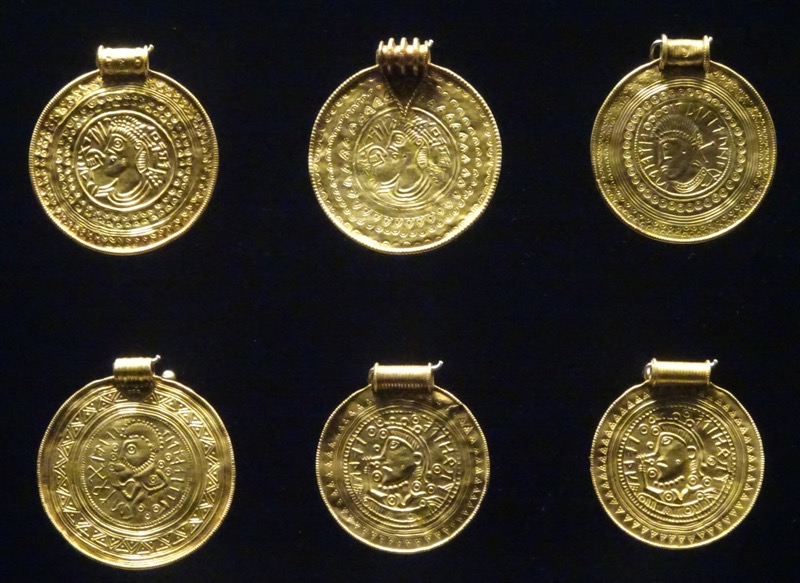 Broken brooch, bracteates, and beads, from a bog at Agerskov in western Jutland. 6th century AD.
Broken brooch, bracteates, and beads, from a bog at Agerskov in western Jutland. 6th century AD.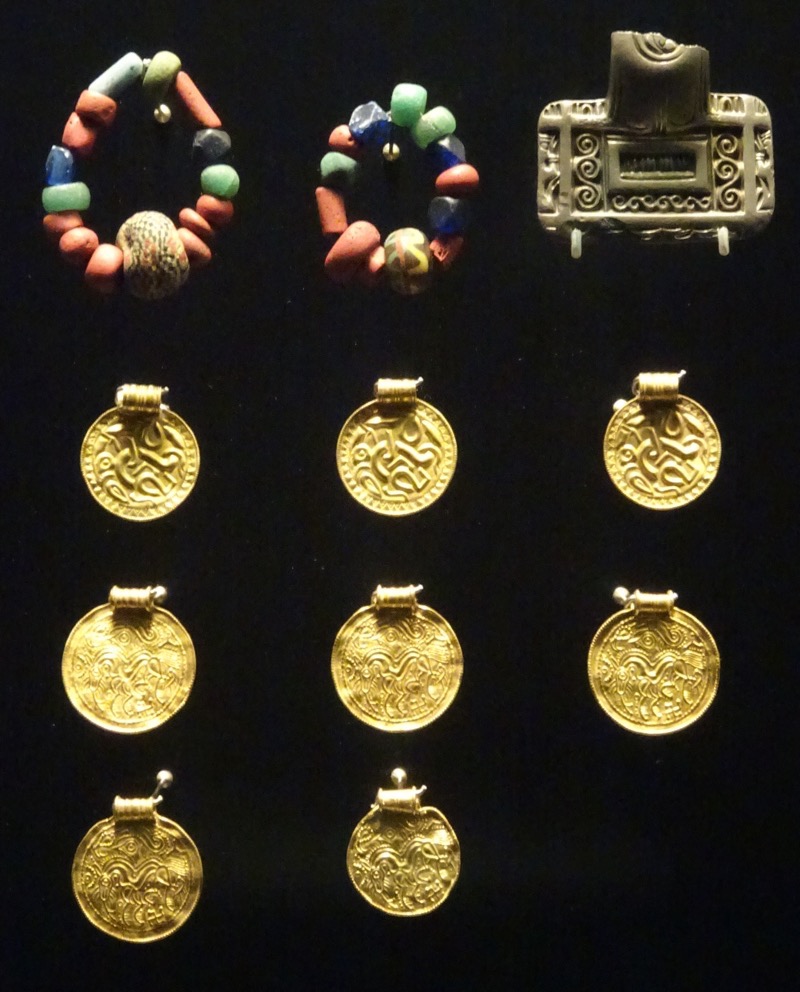 These two Golden Horns are from c.400 AD. The decorations include both Nordic and Roman motifs. The long horn was found in 1639 at Gallehus near Mogeltonder in southern Jutland. A few meters away, in 1734, the shortest horn was found with the runic inscription, “I Laegaest, son of Holt, made the horn”. Tragically, both horns were stolen and melted down in 1902. The curved copies here, are from 1861 and are possibly too large but they presumably do show the proper shape, while the twisted set from the 1970s has the right shape. Top – 1970 reproductions; bottom – 1861 reproductions.
These two Golden Horns are from c.400 AD. The decorations include both Nordic and Roman motifs. The long horn was found in 1639 at Gallehus near Mogeltonder in southern Jutland. A few meters away, in 1734, the shortest horn was found with the runic inscription, “I Laegaest, son of Holt, made the horn”. Tragically, both horns were stolen and melted down in 1902. The curved copies here, are from 1861 and are possibly too large but they presumably do show the proper shape, while the twisted set from the 1970s has the right shape. Top – 1970 reproductions; bottom – 1861 reproductions.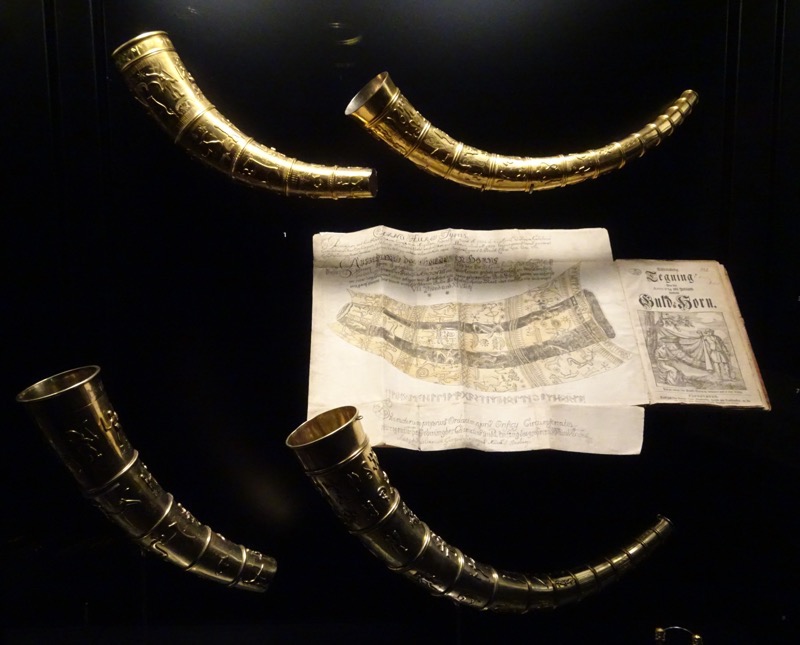 Pictures of the 4thC Golden Horns were preserved in the work of antiquarian Ole Worm that was published in 1641, and in a later publication by J.R. Paulli in 1734 (copy above). On the basis of these pictures, King Frederick VII had the pair of reconstructions made in 1861.
Pictures of the 4thC Golden Horns were preserved in the work of antiquarian Ole Worm that was published in 1641, and in a later publication by J.R. Paulli in 1734 (copy above). On the basis of these pictures, King Frederick VII had the pair of reconstructions made in 1861.

 Bracteates with stylized animal figures from various find spots.
Bracteates with stylized animal figures from various find spots.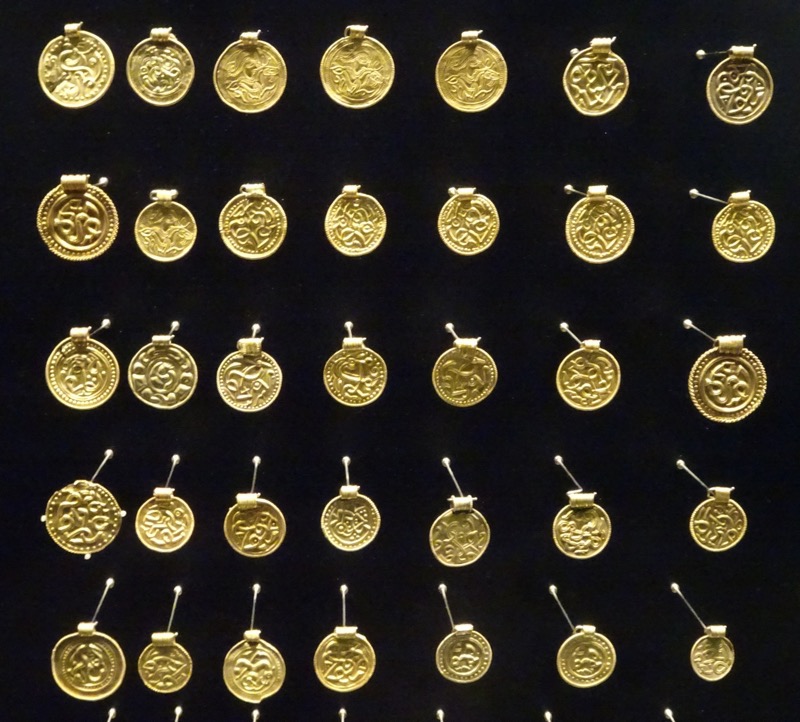
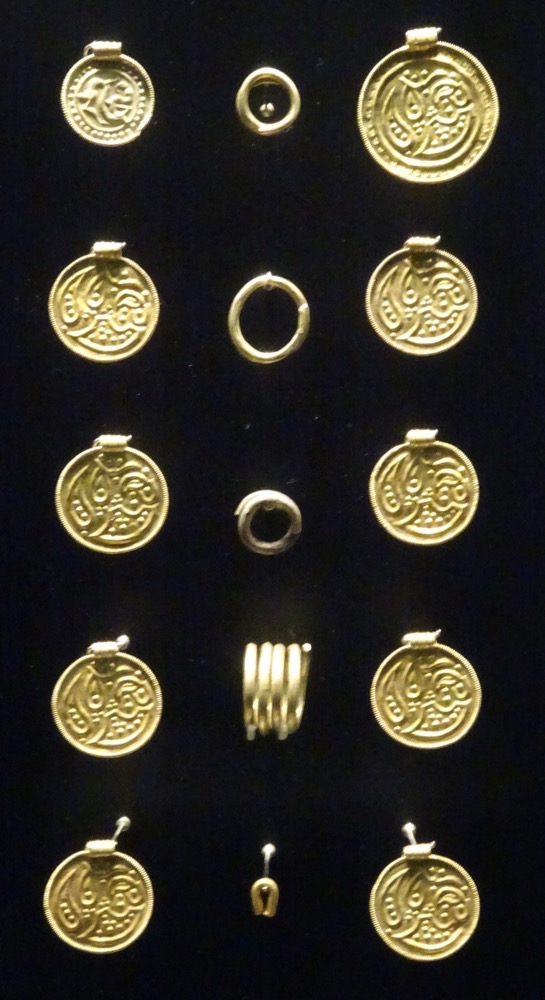 Neckring and bracteates from Hesselager (no date noted).
Neckring and bracteates from Hesselager (no date noted).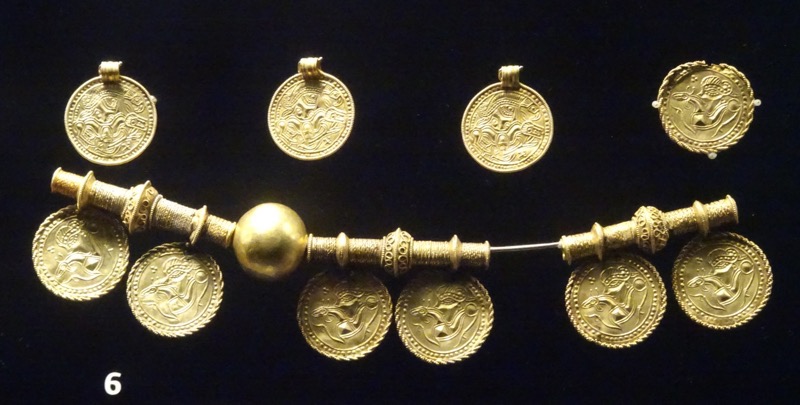 Hoard find from Elsehoved with coin pendants, a bar and a finger ring. First half of the 6th century AD.
Hoard find from Elsehoved with coin pendants, a bar and a finger ring. First half of the 6th century AD.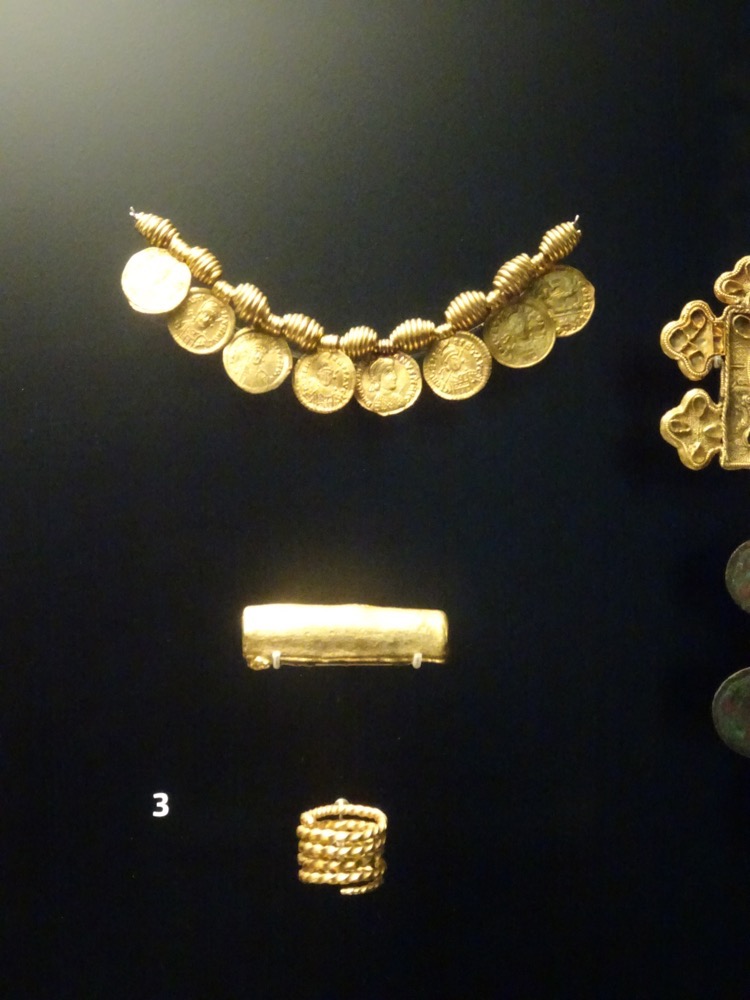
 Above & Below: Undisturbed grave finds to demonstrate how archaeologists extrapolate context, period use, and subsequent display in accordance with how objects are found.
Above & Below: Undisturbed grave finds to demonstrate how archaeologists extrapolate context, period use, and subsequent display in accordance with how objects are found.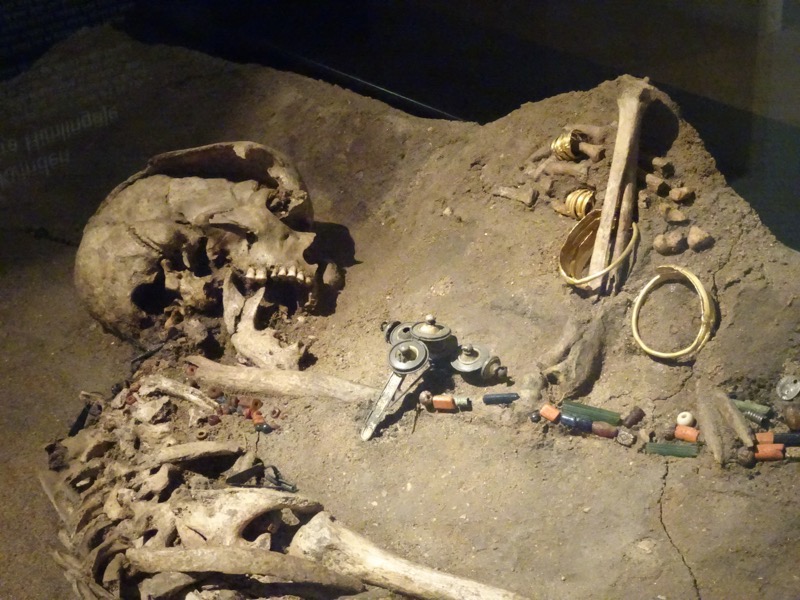 The famous Jelling cup. Silver with niello inlay and gilding. the animal motifs on the cup are in the Jelling style. From the burial chamber at the North Mound, Jelling.
The famous Jelling cup. Silver with niello inlay and gilding. the animal motifs on the cup are in the Jelling style. From the burial chamber at the North Mound, Jelling. Design unwrapped:
Design unwrapped:
 Detail:
Detail: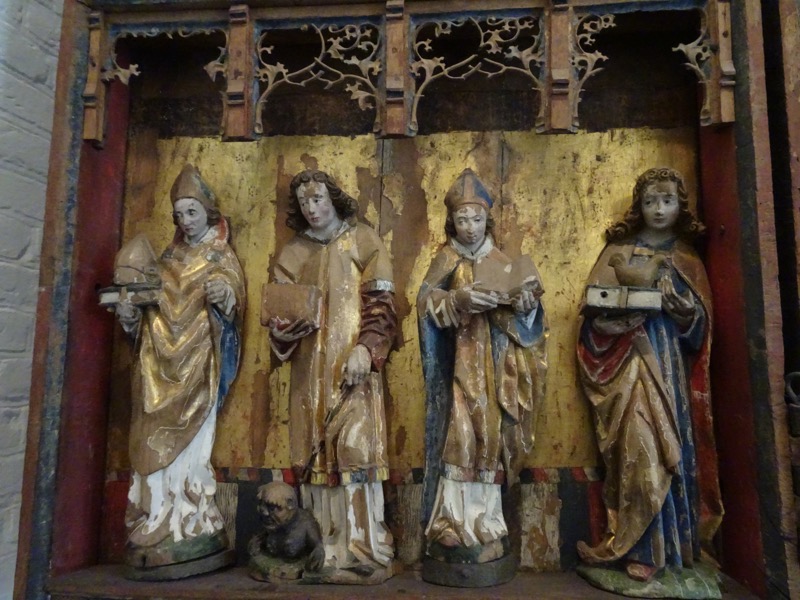
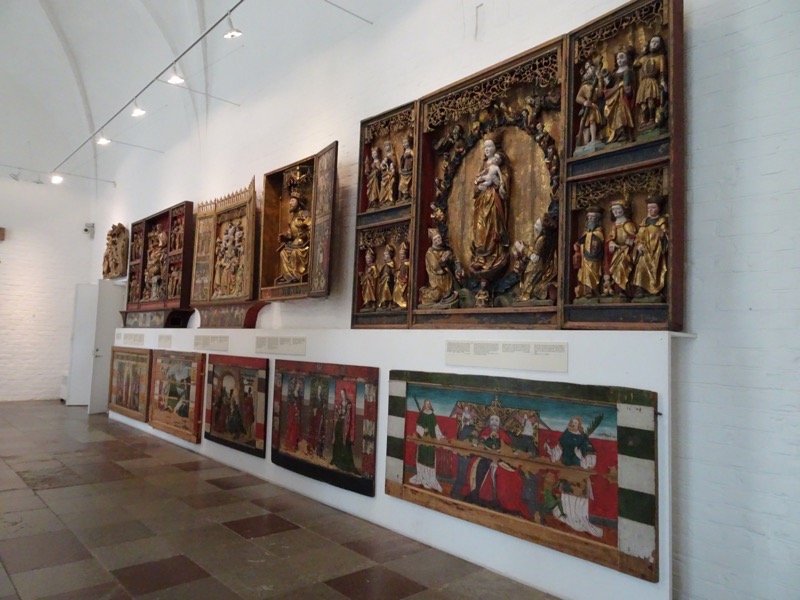 Altar frontal, Boeslunde Church, Sjaelland, c.1525 AD.
Altar frontal, Boeslunde Church, Sjaelland, c.1525 AD.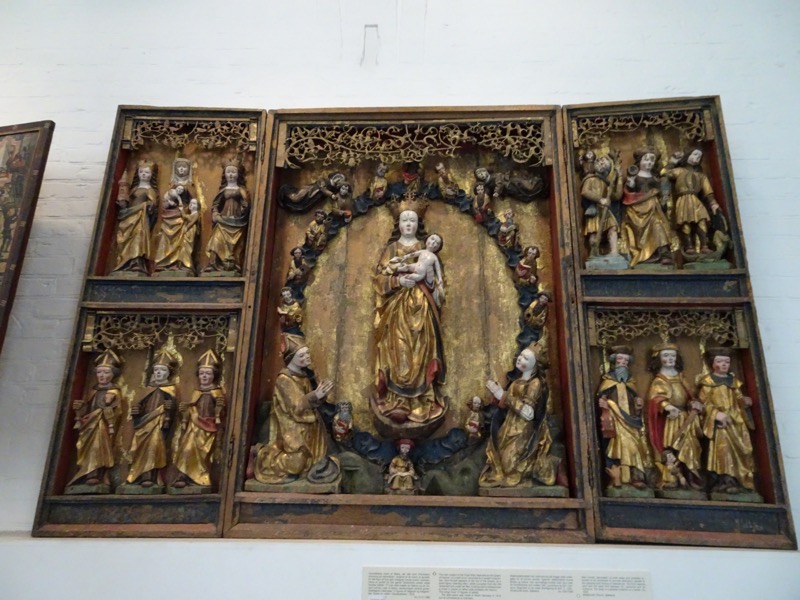 Detail:
Detail: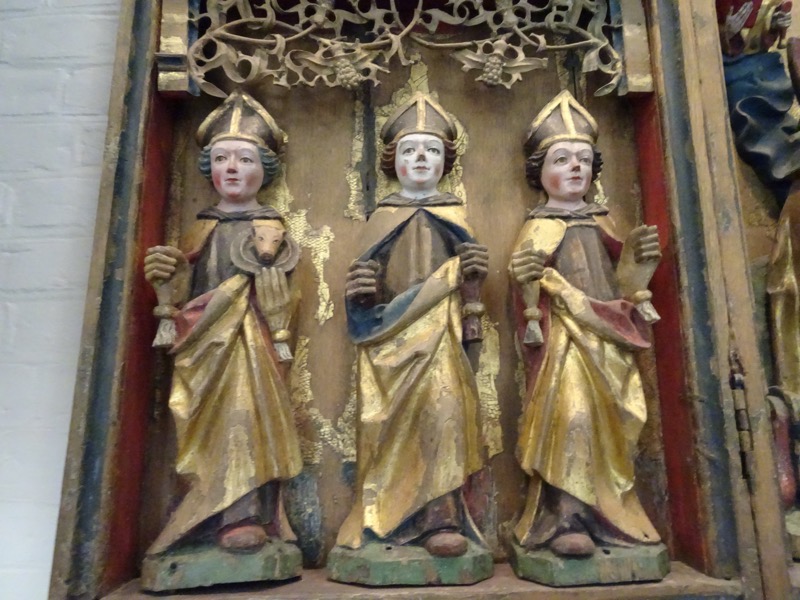 Brass box for relics from an altar table, Skovby Church, Fyn, 15th C.
Brass box for relics from an altar table, Skovby Church, Fyn, 15th C. Altarpiece with a painting of the Holy Family. Kneeling person in the foreground was a late addition to the central painting, probably Bo Madsen, the priest who commissioned the piece. The original church of the triptych is unknown. Last used Omo Church, Storebaelt, c.1578 AD.
Altarpiece with a painting of the Holy Family. Kneeling person in the foreground was a late addition to the central painting, probably Bo Madsen, the priest who commissioned the piece. The original church of the triptych is unknown. Last used Omo Church, Storebaelt, c.1578 AD.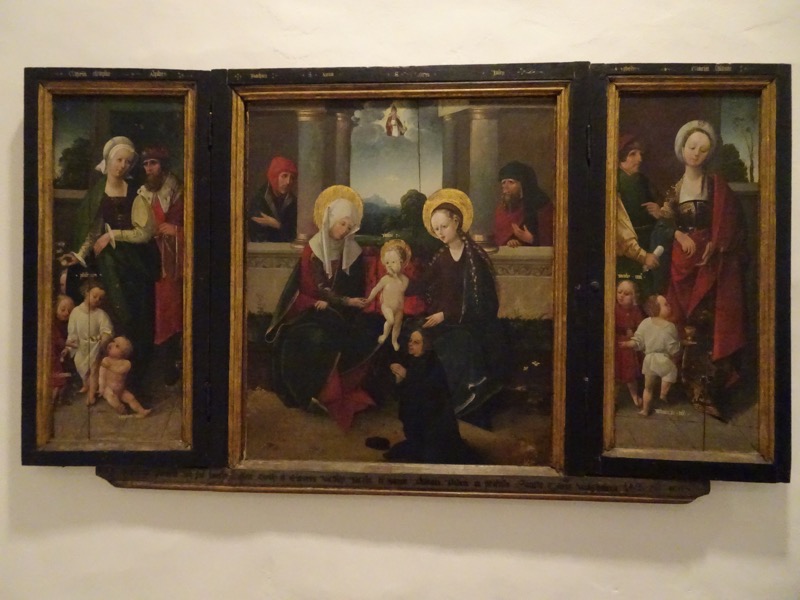
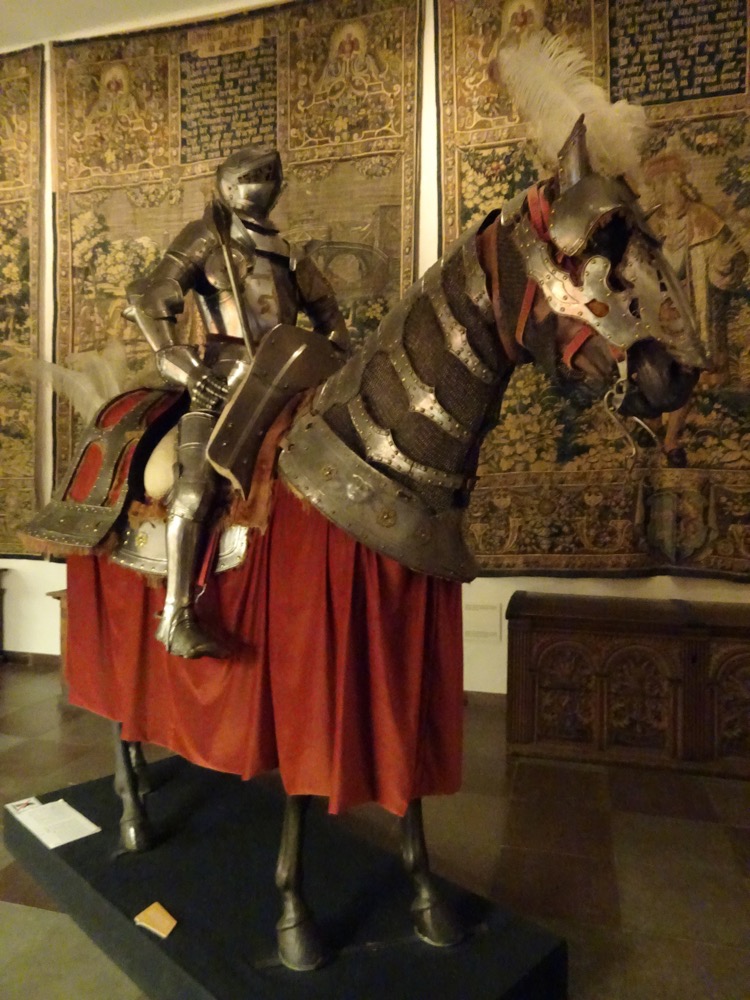
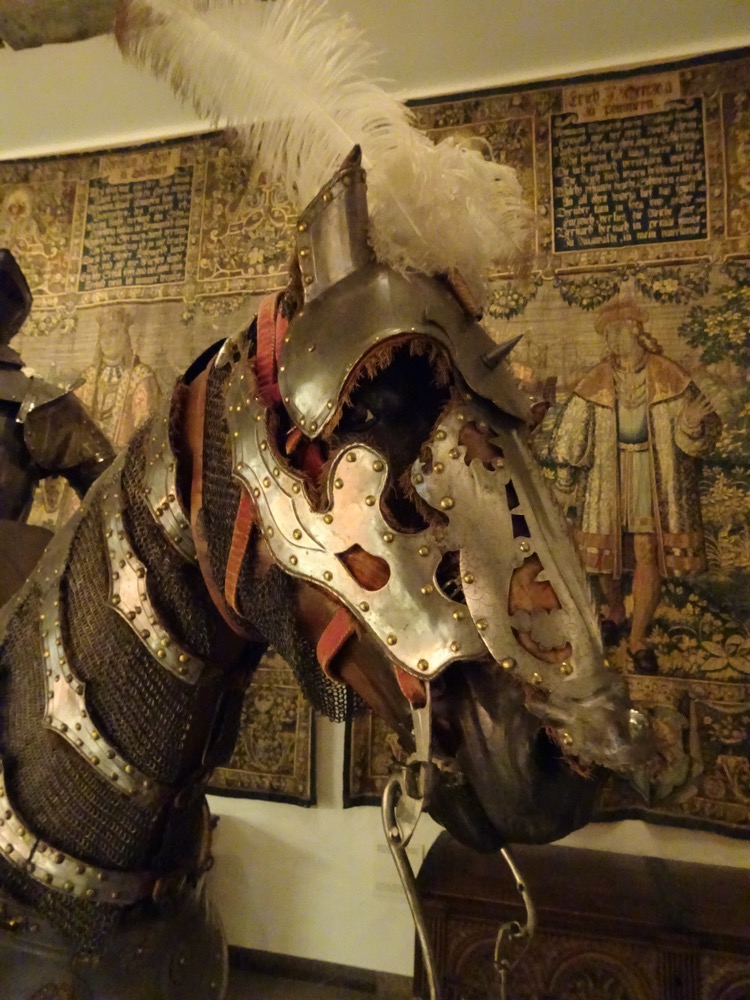
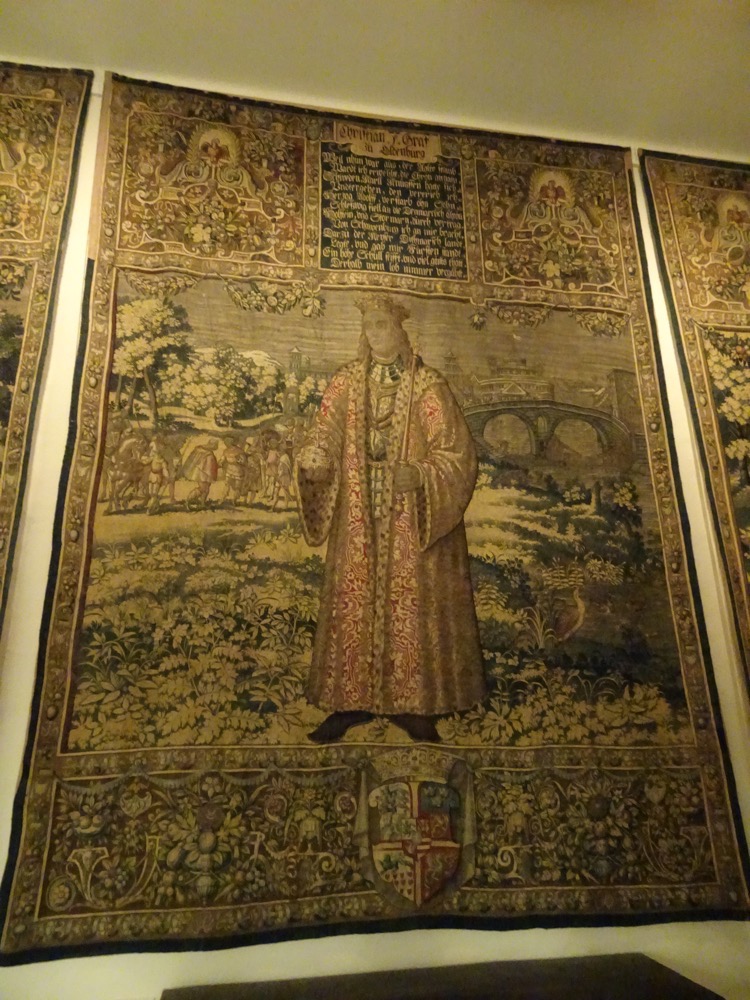
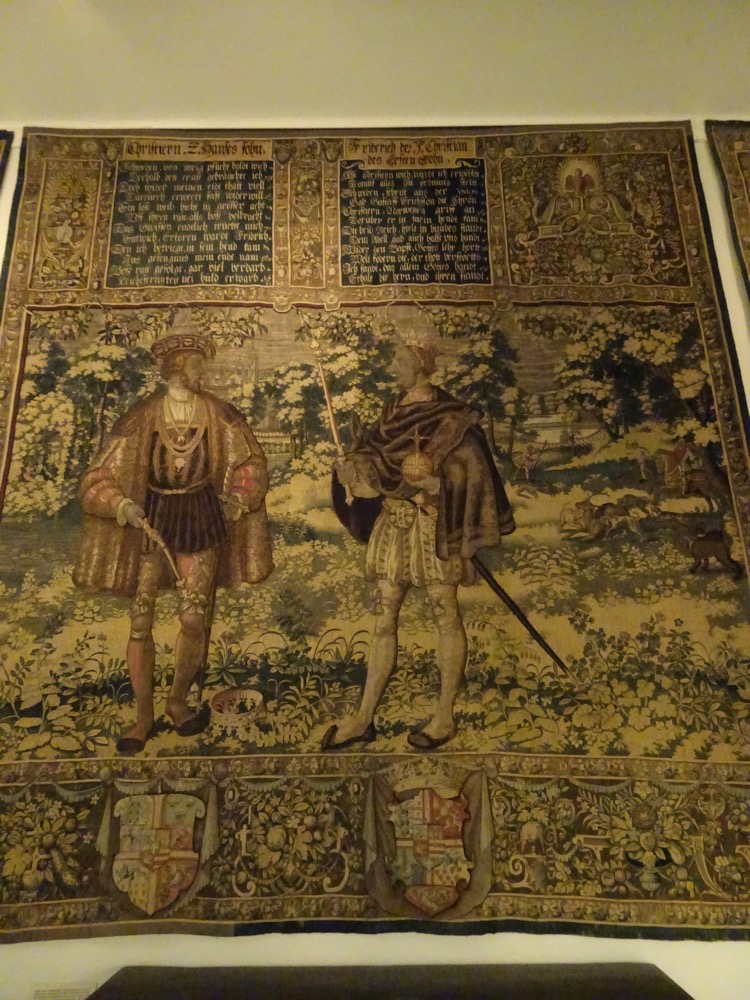
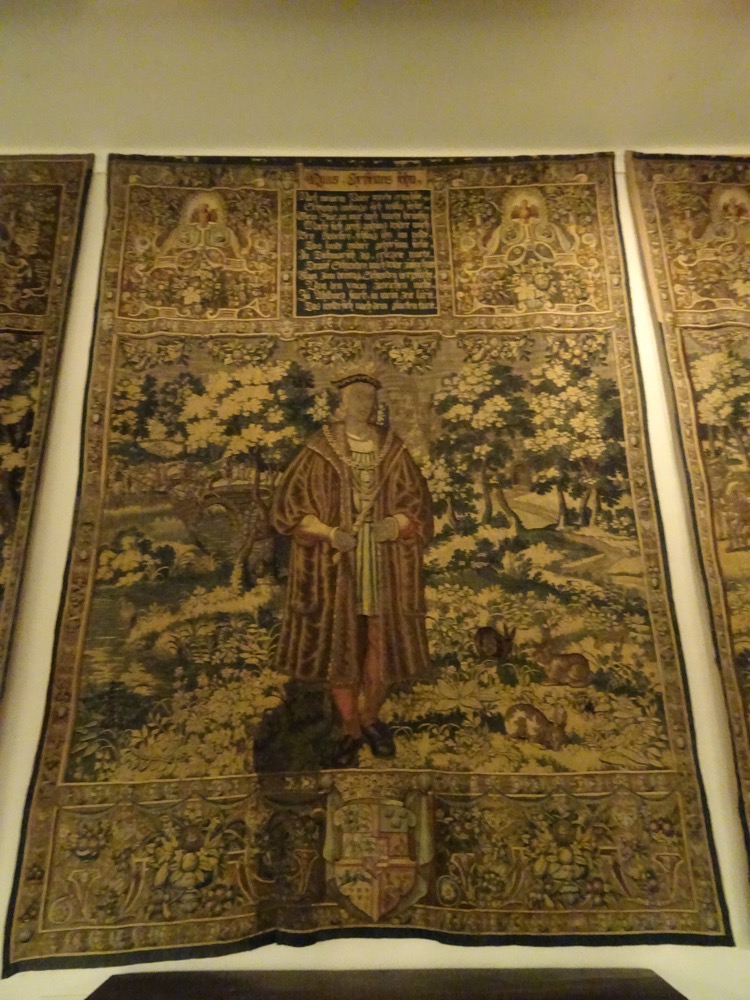 Dower chests in the Renaissance style, decorated with coats of arms, masks and portrait medallions. Brides assembled large trousseau before marriage, a wealthy bride would bring many dower chests with her when joining her new husband’s manor. All c.1500s AD.
Dower chests in the Renaissance style, decorated with coats of arms, masks and portrait medallions. Brides assembled large trousseau before marriage, a wealthy bride would bring many dower chests with her when joining her new husband’s manor. All c.1500s AD. Small crossbow of steel, Germany. c.17th century.
Small crossbow of steel, Germany. c.17th century.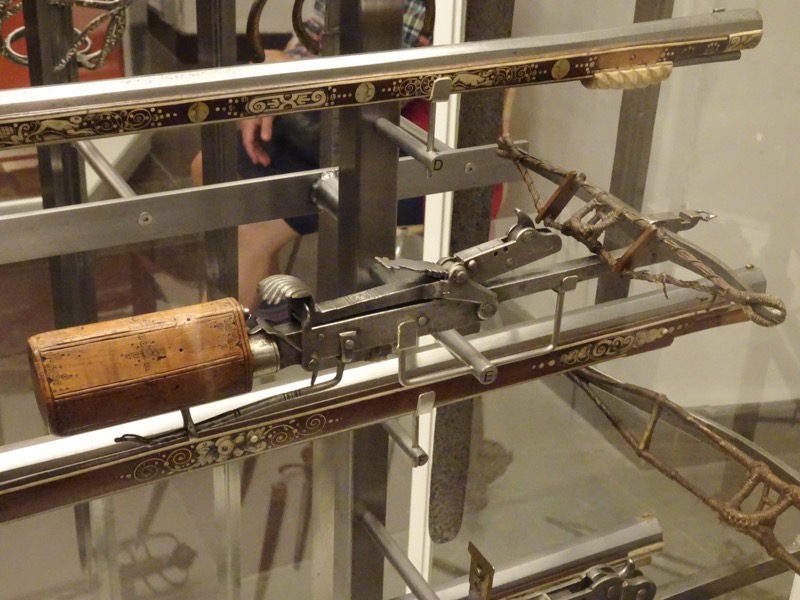 Pair of wheel lock pistols, Germany c.1600 AD.
Pair of wheel lock pistols, Germany c.1600 AD.
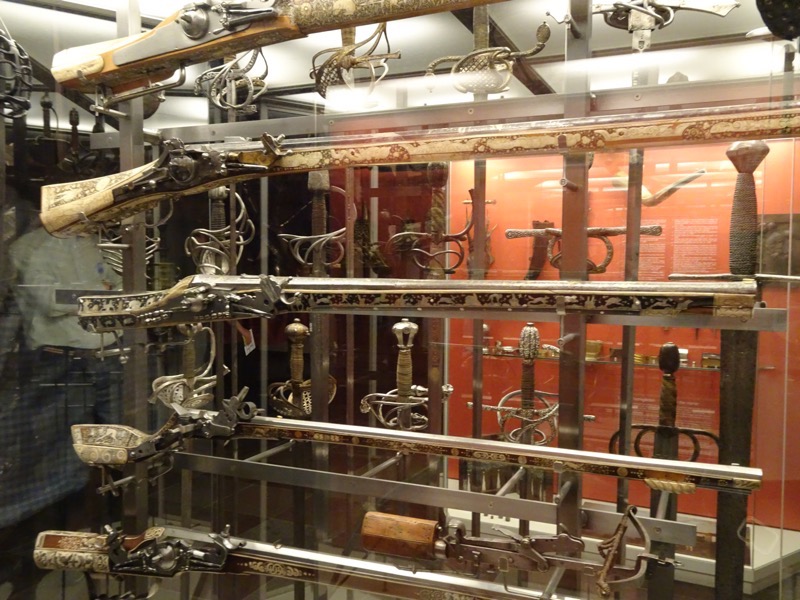
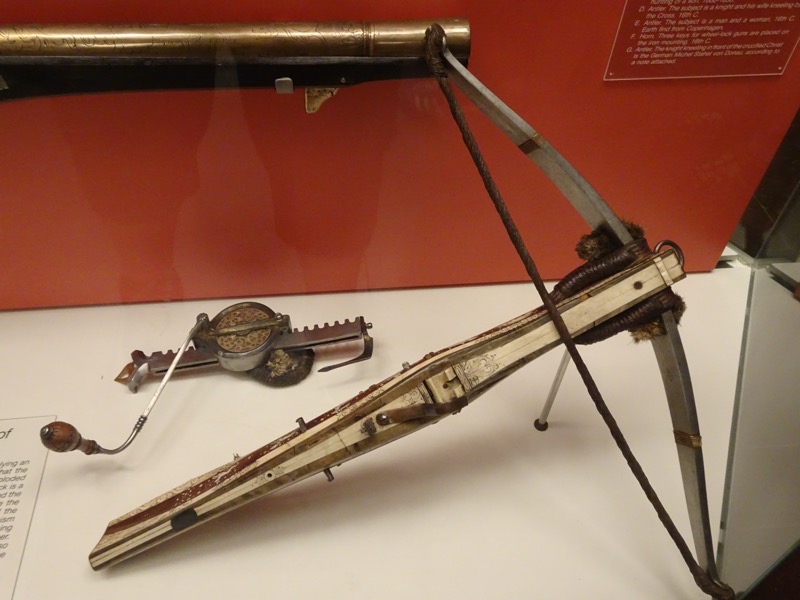
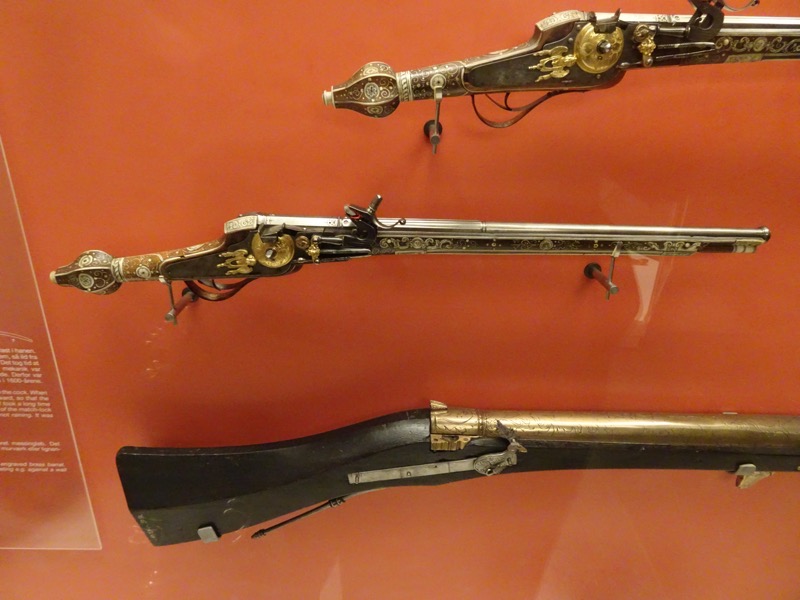
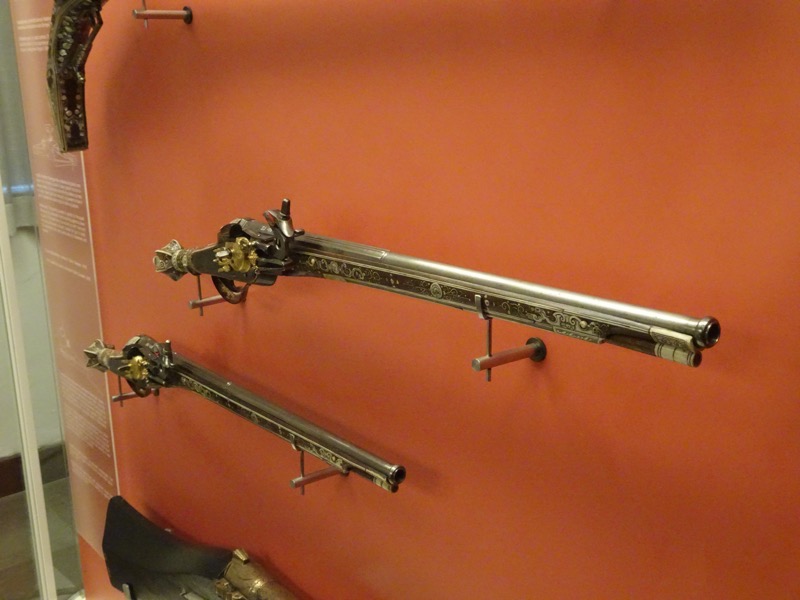
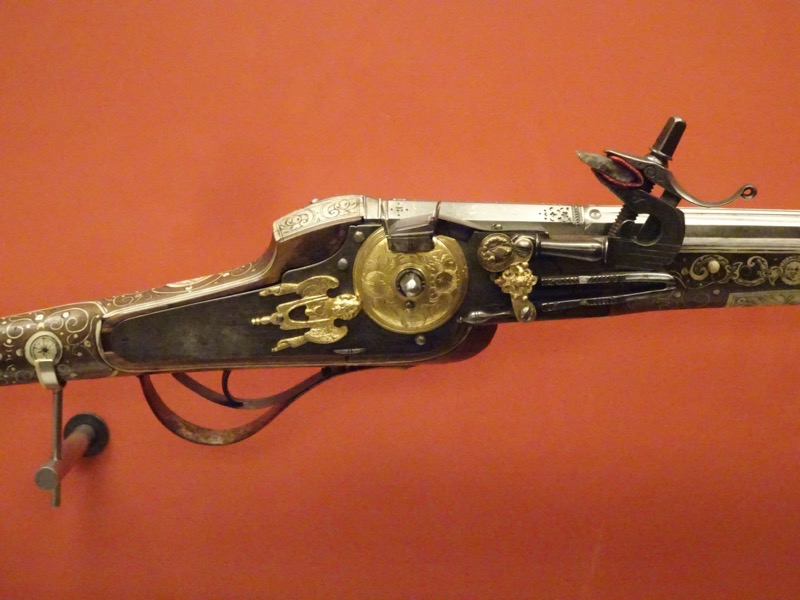 Powder horns.
Powder horns. D. Antler. Subject is a knight and his wife kneeling by the cross. 16thC.
D. Antler. Subject is a knight and his wife kneeling by the cross. 16thC.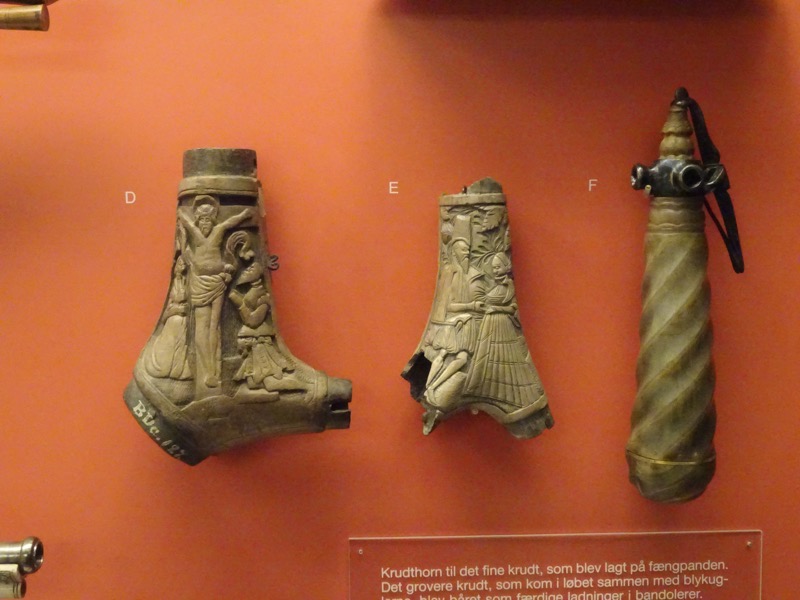
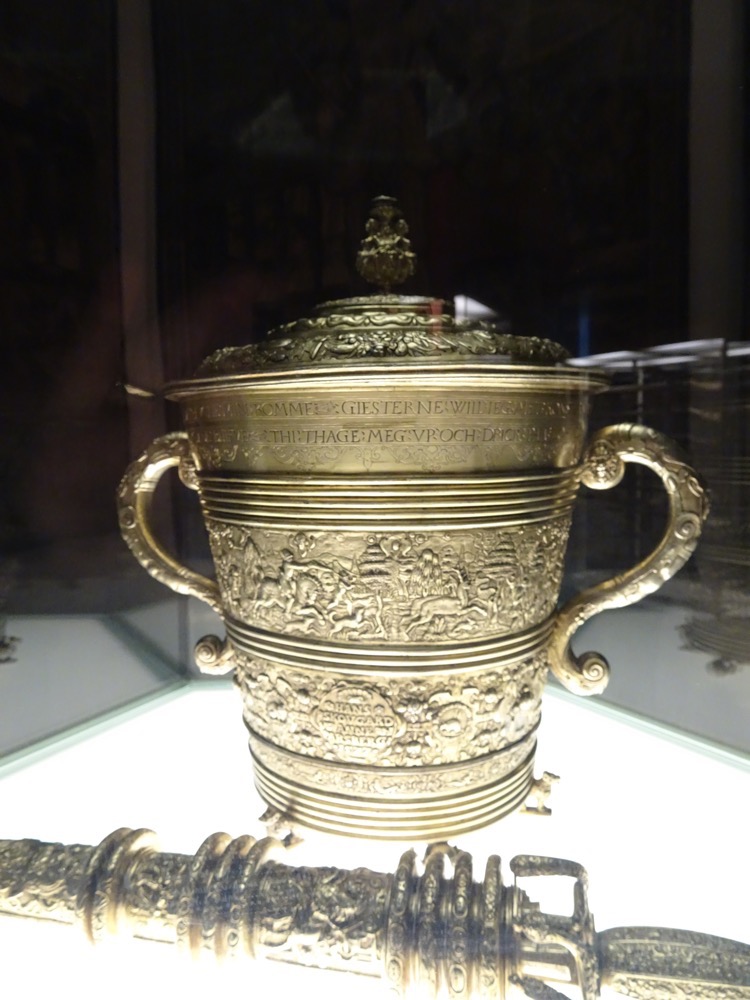
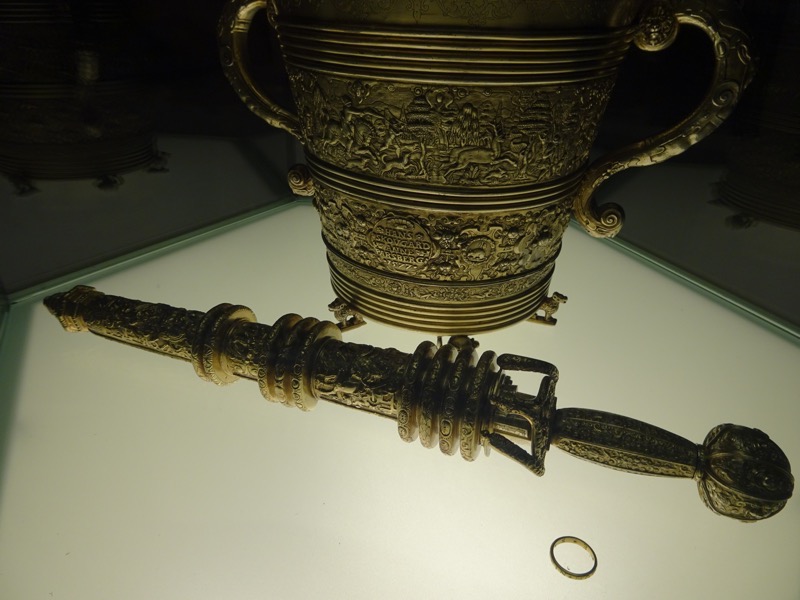 Figures of eight saints, Paul, Peter, John, Andrew, Catherine, Barbara, Mary Magdalene, and Dorothea. Embroidered on linen with silk and metal threads. Split stitch, shaded satin stitch and couching). Figures probably originate from embroidered bands on a cope.
Figures of eight saints, Paul, Peter, John, Andrew, Catherine, Barbara, Mary Magdalene, and Dorothea. Embroidered on linen with silk and metal threads. Split stitch, shaded satin stitch and couching). Figures probably originate from embroidered bands on a cope.
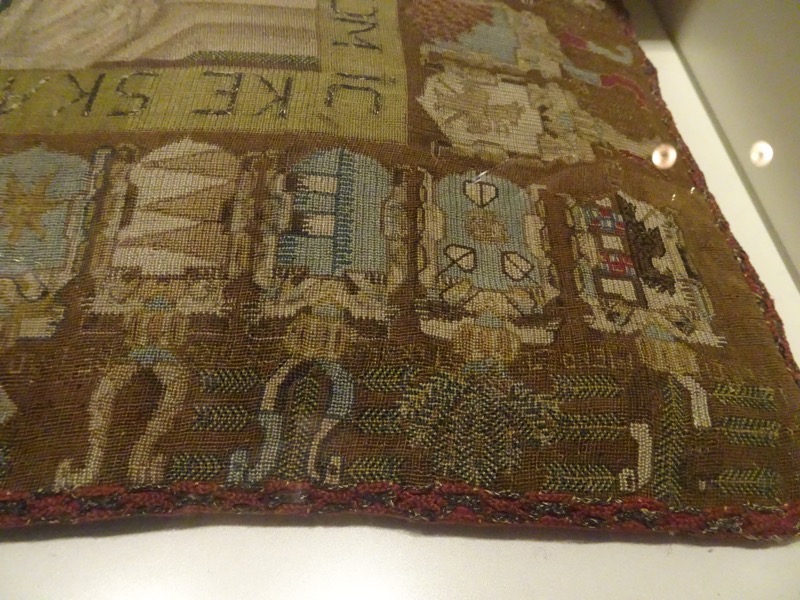
 Brides crown from typical Scandinavian Medieval household.
Brides crown from typical Scandinavian Medieval household.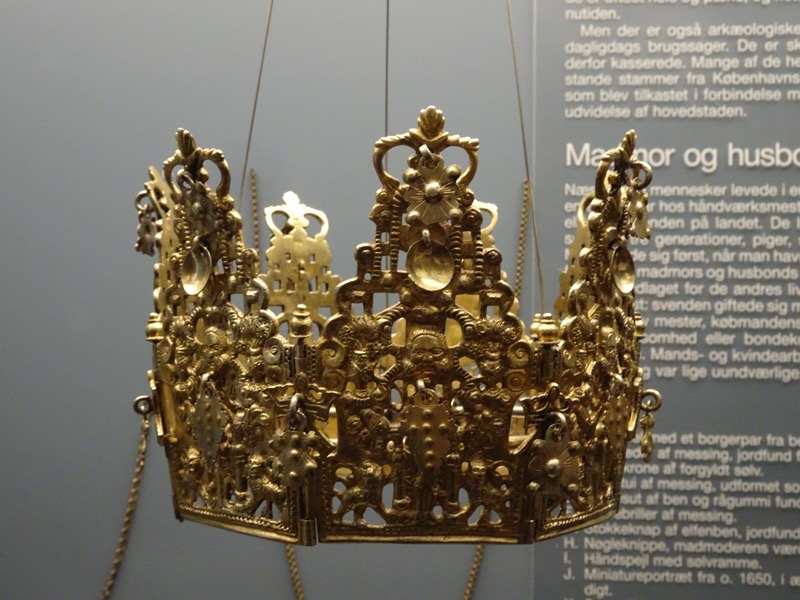 SHOEMAKERS: Wooden lasts from earthfinds in Copenhagen. Leather shoes and slippers for adults and children c.16th-17thC, also from Copenhagen. Tools used by shoemakers (knife with half moon blade, tongs for stretching leather over lasts, smoothers to smooth seams).
SHOEMAKERS: Wooden lasts from earthfinds in Copenhagen. Leather shoes and slippers for adults and children c.16th-17thC, also from Copenhagen. Tools used by shoemakers (knife with half moon blade, tongs for stretching leather over lasts, smoothers to smooth seams).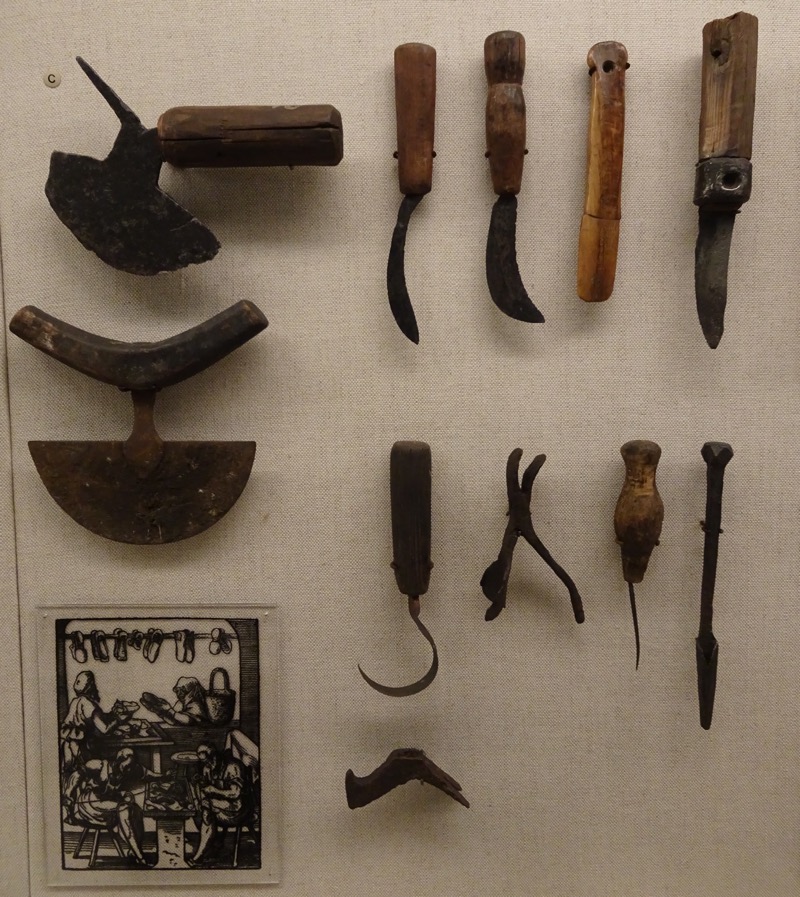
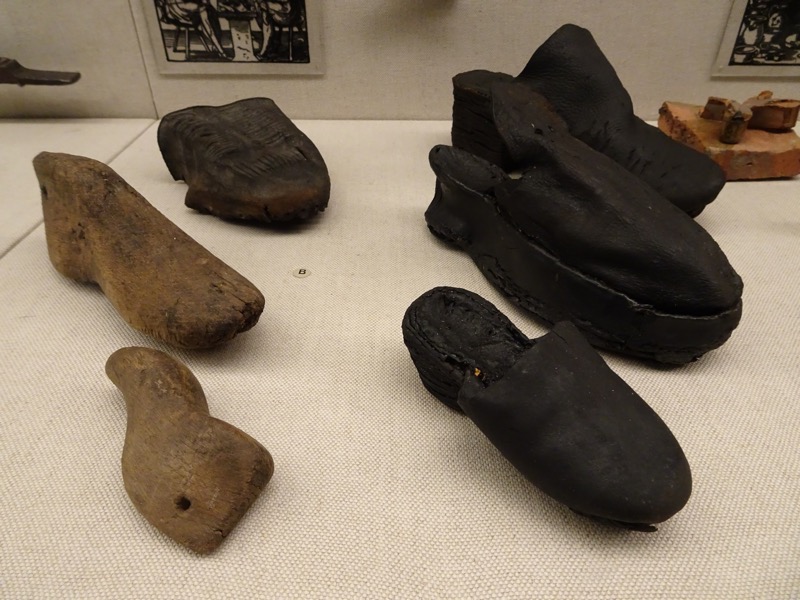 BUILDERS: Painters, masons, carpenters, smiths and wood carvers. Various items: paint pots, paint brushes, axes, trowels, wood carving iron, soldering irons, compasses, gimlet, tongs, pincers, saws, hammers, anvil, chisels, etc.
BUILDERS: Painters, masons, carpenters, smiths and wood carvers. Various items: paint pots, paint brushes, axes, trowels, wood carving iron, soldering irons, compasses, gimlet, tongs, pincers, saws, hammers, anvil, chisels, etc.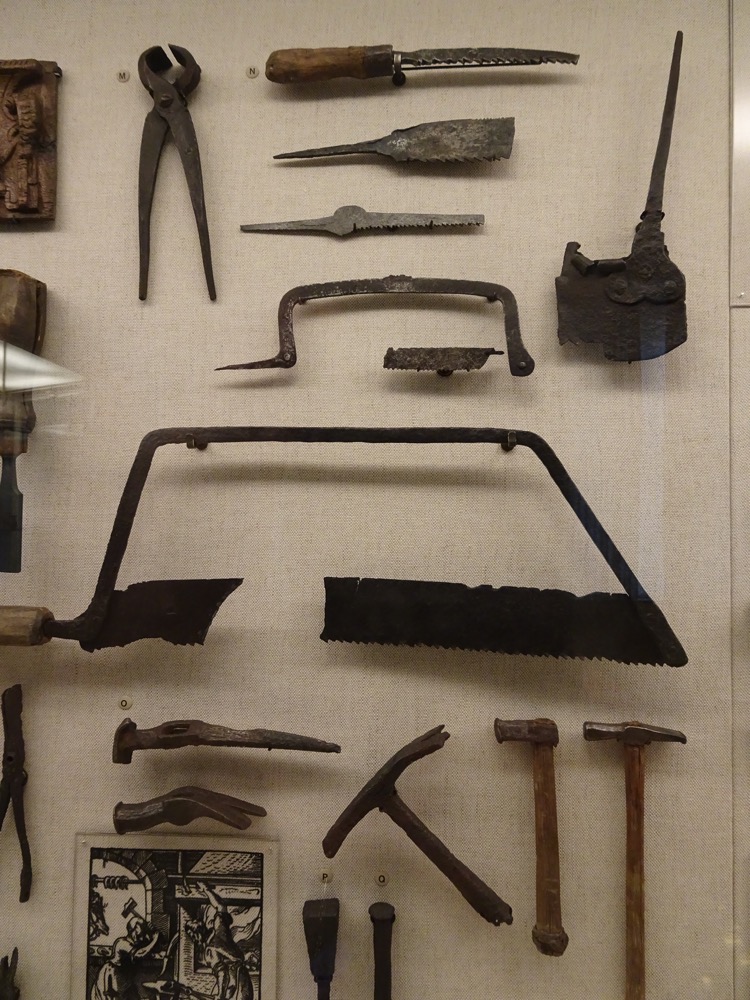
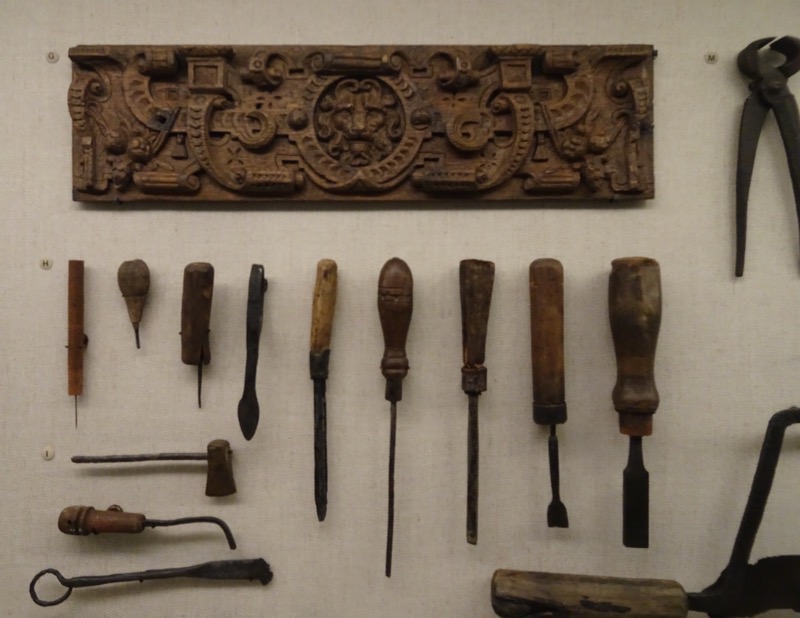
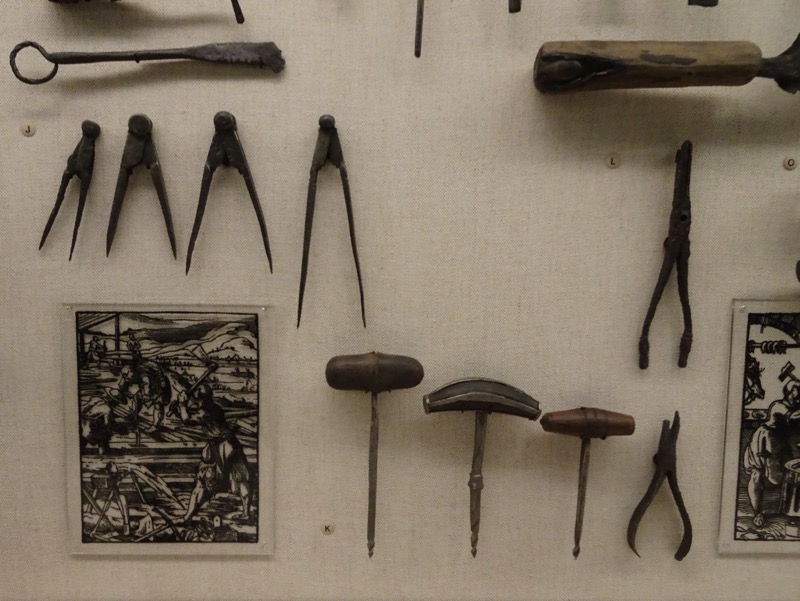 BOOKBINDERS AND PRINTERS: Copperplated used for printing the frontispiece of King Christian IV’s Bible in 1647. Book binders tools from Copenhagen c.1600.
BOOKBINDERS AND PRINTERS: Copperplated used for printing the frontispiece of King Christian IV’s Bible in 1647. Book binders tools from Copenhagen c.1600.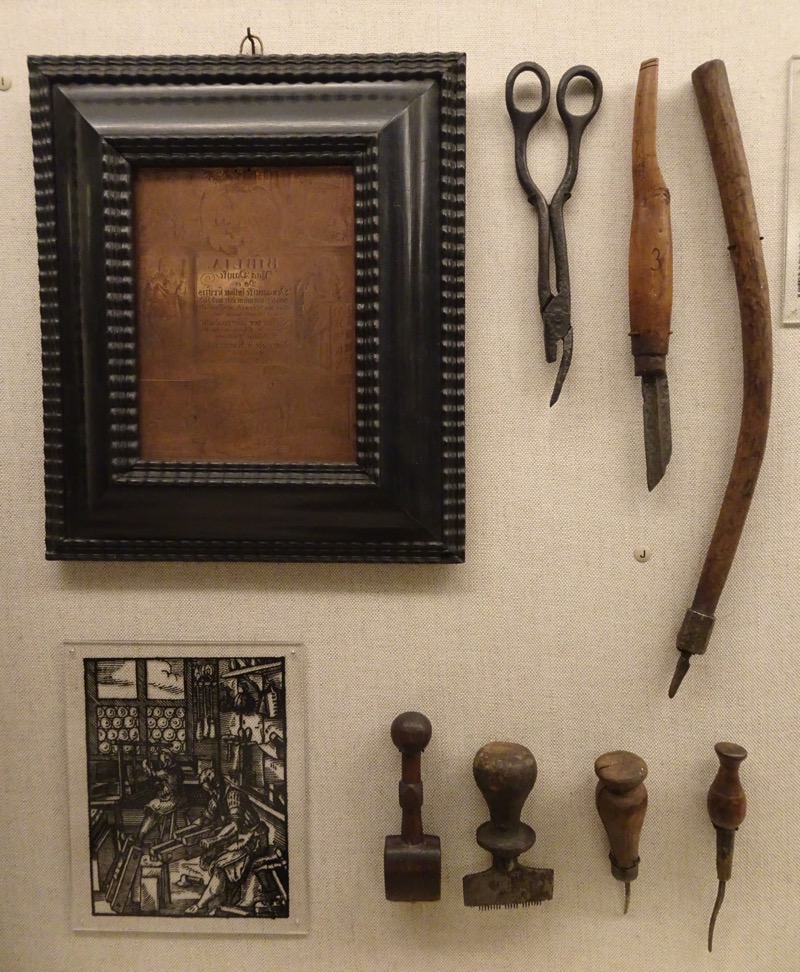 Until 1835, these two books, bound in pigskin were chained to their place in the library of Our Lady’s Church in Kalunborg. The larger book contains a text by Calvin, Geneva, 1551 AD. and the smaller book contains a text by Henricus Mollerus, Wittenberg, 1573 AD.
Until 1835, these two books, bound in pigskin were chained to their place in the library of Our Lady’s Church in Kalunborg. The larger book contains a text by Calvin, Geneva, 1551 AD. and the smaller book contains a text by Henricus Mollerus, Wittenberg, 1573 AD.
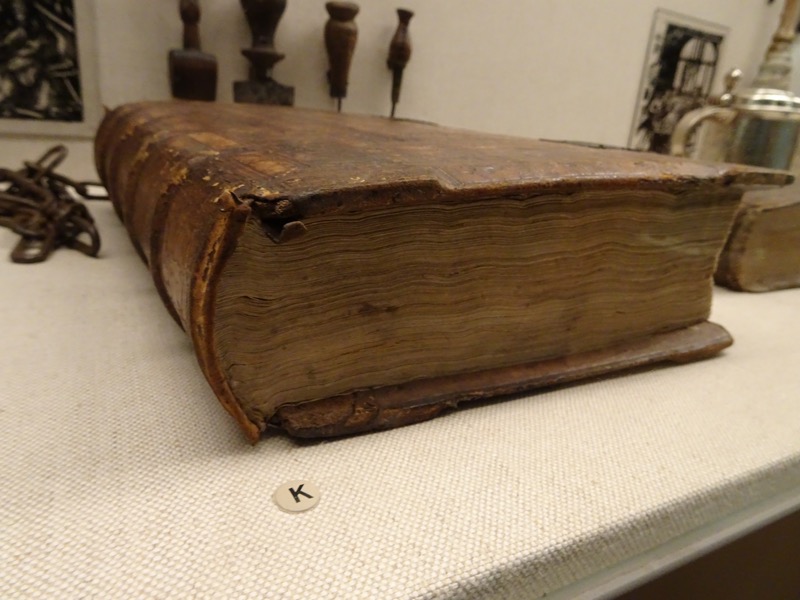
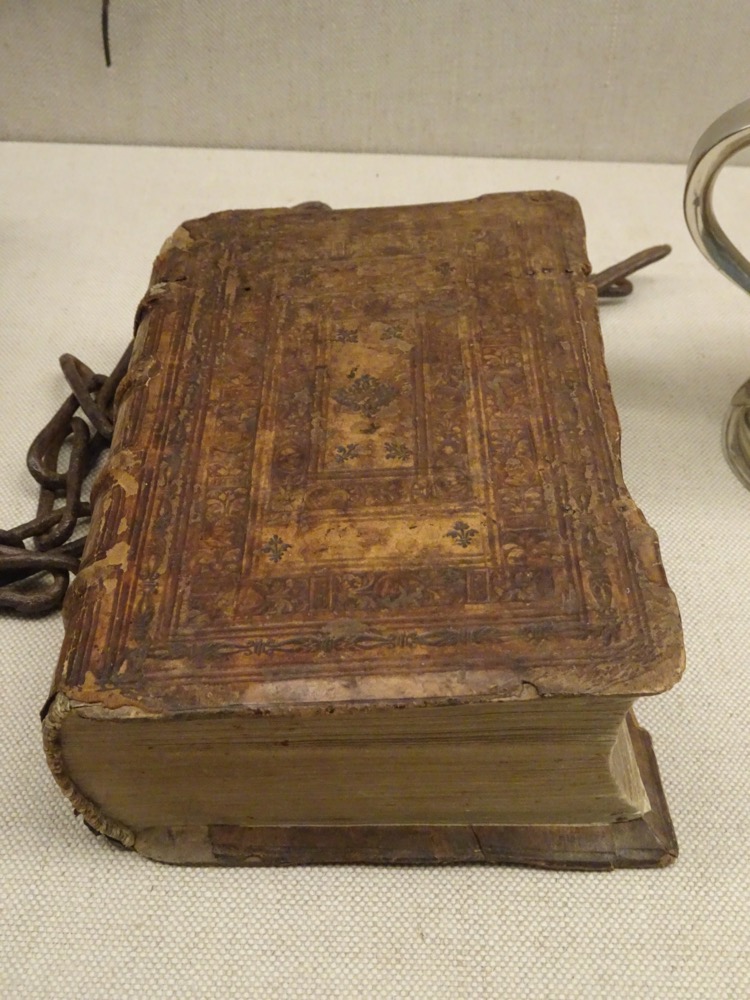 Stoneware from the traditional potteries on the Rhine reached Denmark in vast numbers. Hard fired ceramics were richly ornamented and used as decorations in many Danish homes. Faience was imported to Denmark from the Netherlands and North Germany but was relatively uncommon.
Stoneware from the traditional potteries on the Rhine reached Denmark in vast numbers. Hard fired ceramics were richly ornamented and used as decorations in many Danish homes. Faience was imported to Denmark from the Netherlands and North Germany but was relatively uncommon. Stoneware from various production sites. Dark jug with rings from Dreihausen in Hessan (17thC). Blue glazed bottle with pewter lid from Raeran (17thC). Polychromatic glazed jug from Saxony with lid (c.1679). “Terra-sigiliata” jug from Gabel in Bohemia (c.1649).
Stoneware from various production sites. Dark jug with rings from Dreihausen in Hessan (17thC). Blue glazed bottle with pewter lid from Raeran (17thC). Polychromatic glazed jug from Saxony with lid (c.1679). “Terra-sigiliata” jug from Gabel in Bohemia (c.1649). 
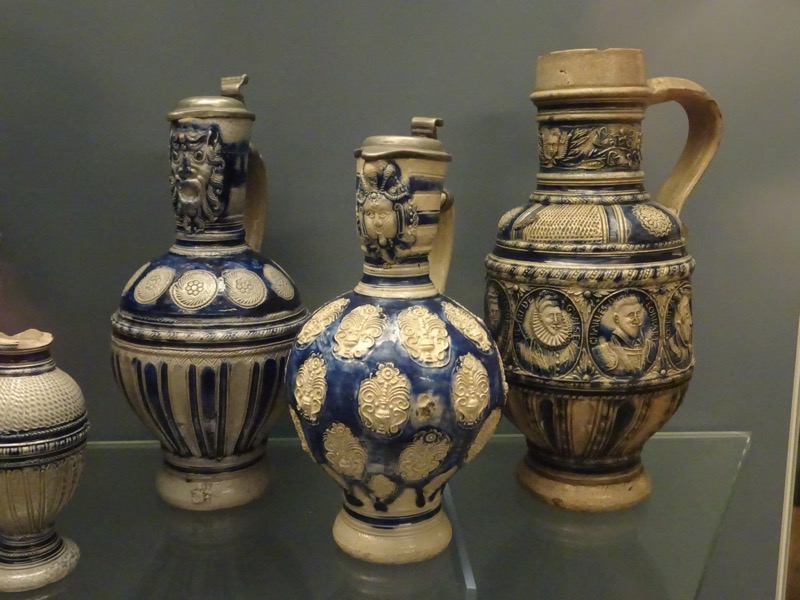 Stoneware from Westerwald, 17th C, salt glazed with blue paint. Pieces may be from Raeren c. 1580s.
Stoneware from Westerwald, 17th C, salt glazed with blue paint. Pieces may be from Raeren c. 1580s.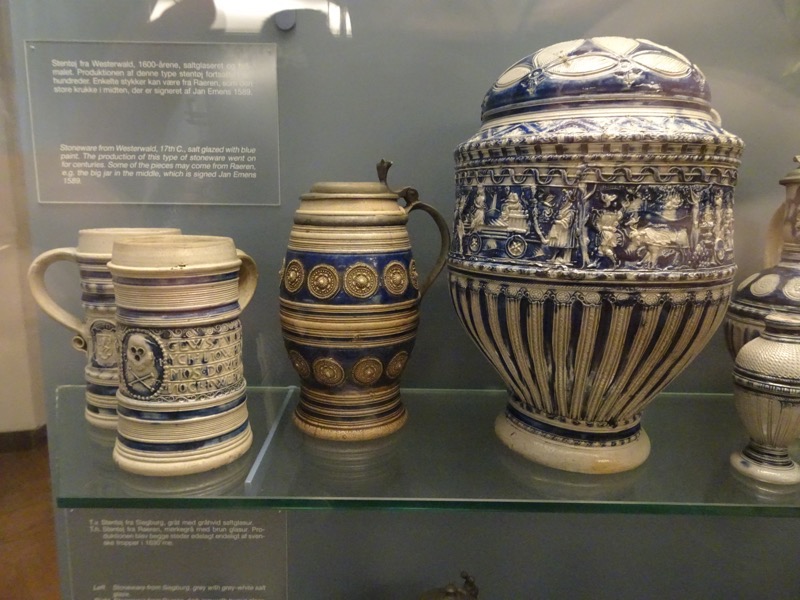 Recreation of a Medieval room using extant furniture and household objects.
Recreation of a Medieval room using extant furniture and household objects.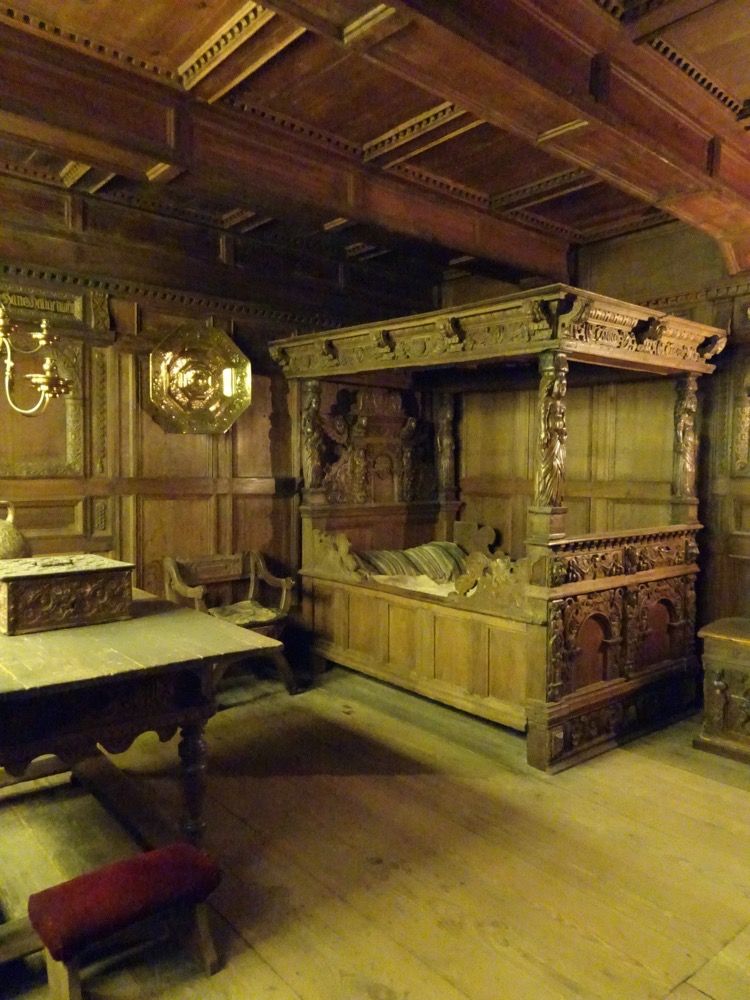 Caps of coast felt with sewn up frayed ends imitating a pile of fur caps.
Caps of coast felt with sewn up frayed ends imitating a pile of fur caps.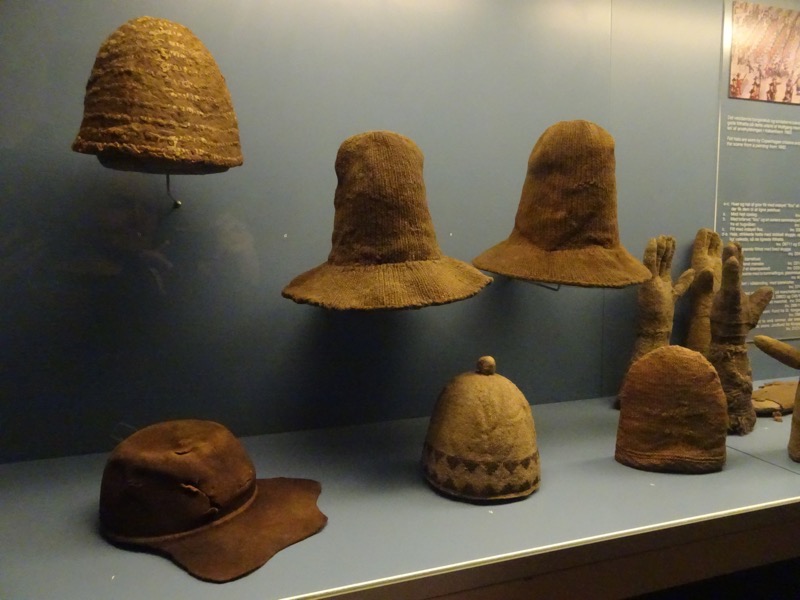
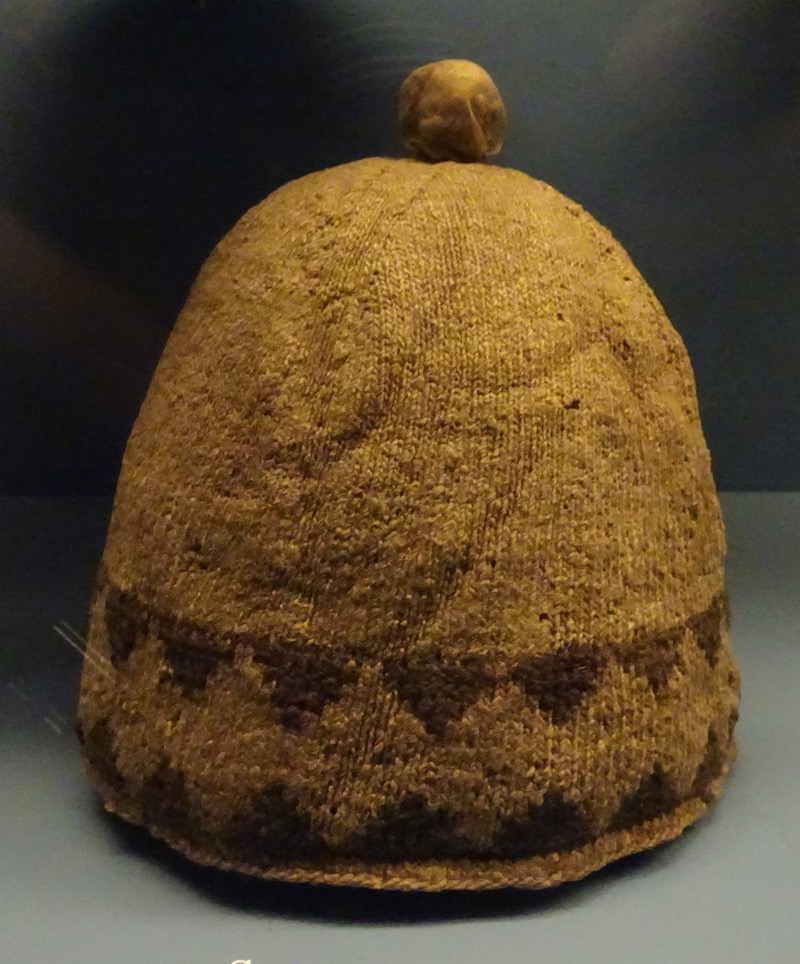 High crowned knitted hat with double brims, originally fulled to resemble felt hats.
High crowned knitted hat with double brims, originally fulled to resemble felt hats.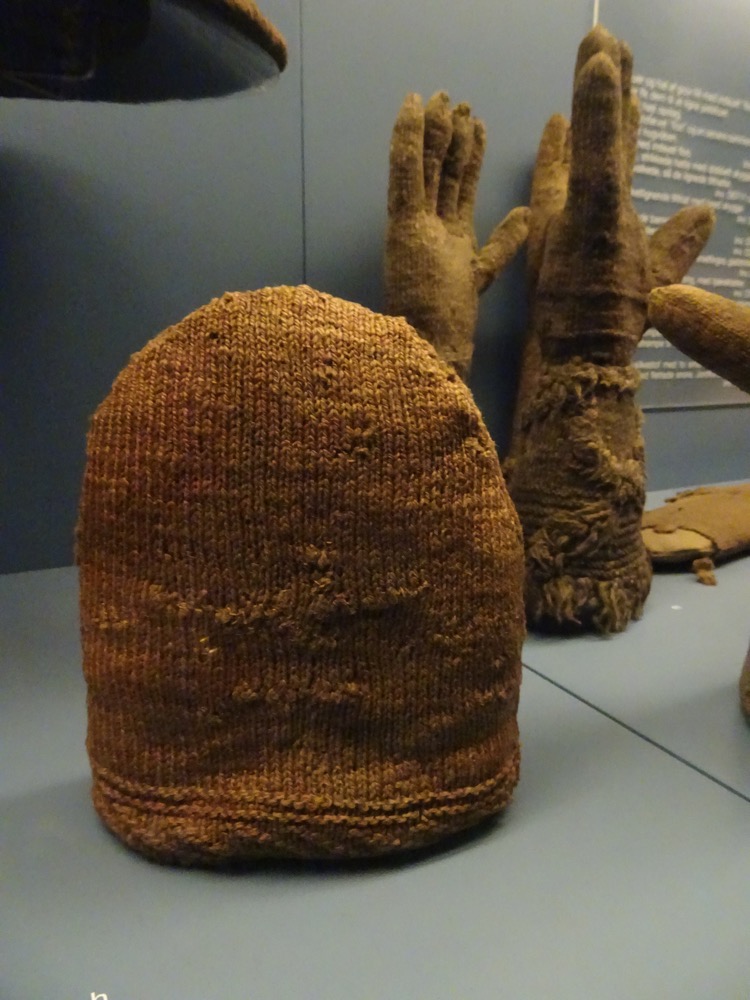 Seaman’s mittens with two thumbs, knitted in stocking stitch (from Iceland). Gloves a with cuffs striped as imitation fur.
Seaman’s mittens with two thumbs, knitted in stocking stitch (from Iceland). Gloves a with cuffs striped as imitation fur.  Burial caps of silk brocade. Satin border with pearl embroidery and silk and silver threads. c 1624.
Burial caps of silk brocade. Satin border with pearl embroidery and silk and silver threads. c 1624.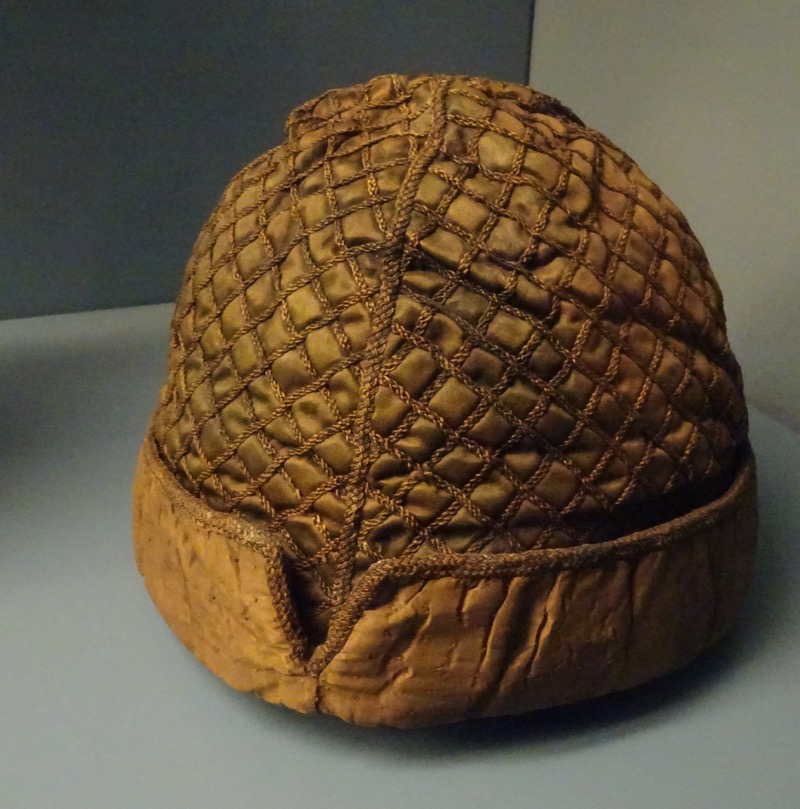
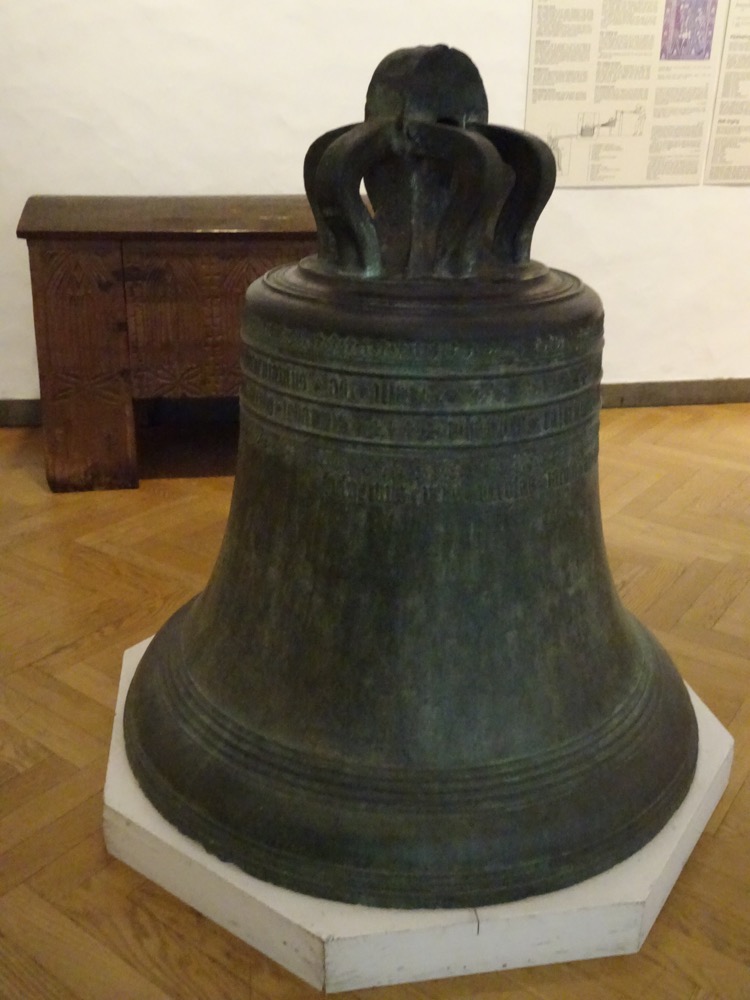 Iron bound chest, both the inside of the chest and its lid are divided in two and arranged so that two keys (presumably kept by different persons) had to be used so the chest could be unlocked. Ferring Church, Jylland, 15th century.
Iron bound chest, both the inside of the chest and its lid are divided in two and arranged so that two keys (presumably kept by different persons) had to be used so the chest could be unlocked. Ferring Church, Jylland, 15th century. Floor tiles from church floors with decorative patterns and lead glazing.
Floor tiles from church floors with decorative patterns and lead glazing. 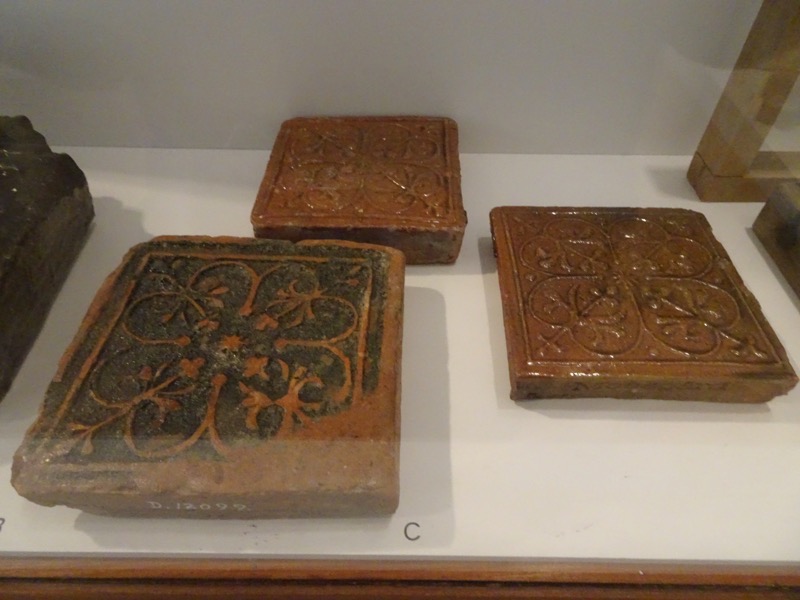 Body of a spherical pot, concealed c.1230 AD, containing almost 16,000 coins.
Body of a spherical pot, concealed c.1230 AD, containing almost 16,000 coins.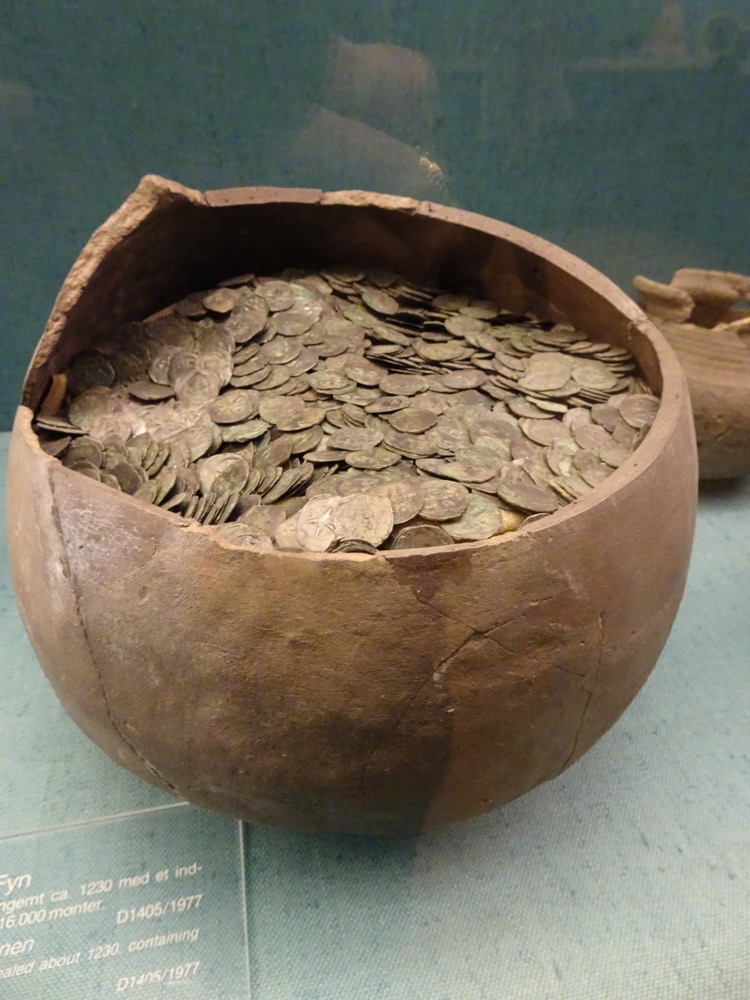 Bronze cauldrons, made in Germany, c.15th century.
Bronze cauldrons, made in Germany, c.15th century.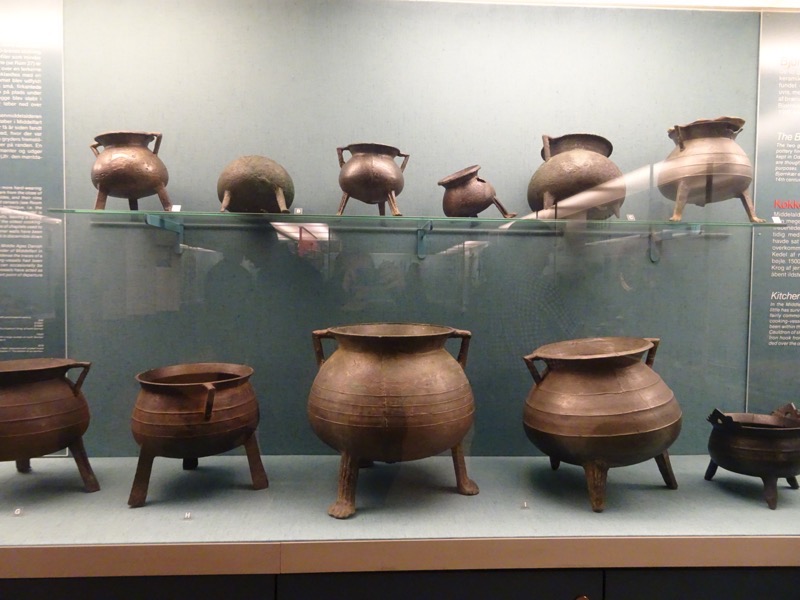 Silver spoons, Germany c.15th century.
Silver spoons, Germany c.15th century. Pewter jugs, norhter Germany, c.15th century. Recent excavations have established that there were pewterers working in Goltand during this period making items much in this style.
Pewter jugs, norhter Germany, c.15th century. Recent excavations have established that there were pewterers working in Goltand during this period making items much in this style.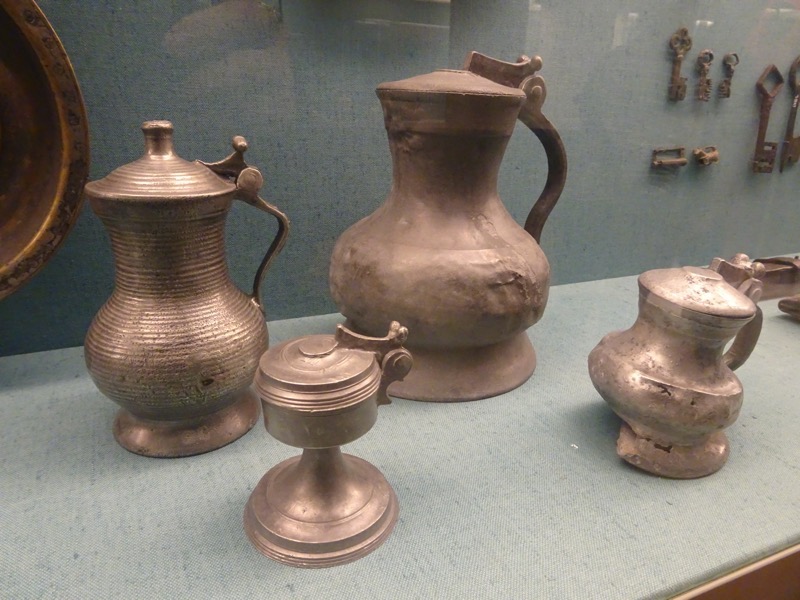 Locks and keys, Scandinavian, 15th century.
Locks and keys, Scandinavian, 15th century.
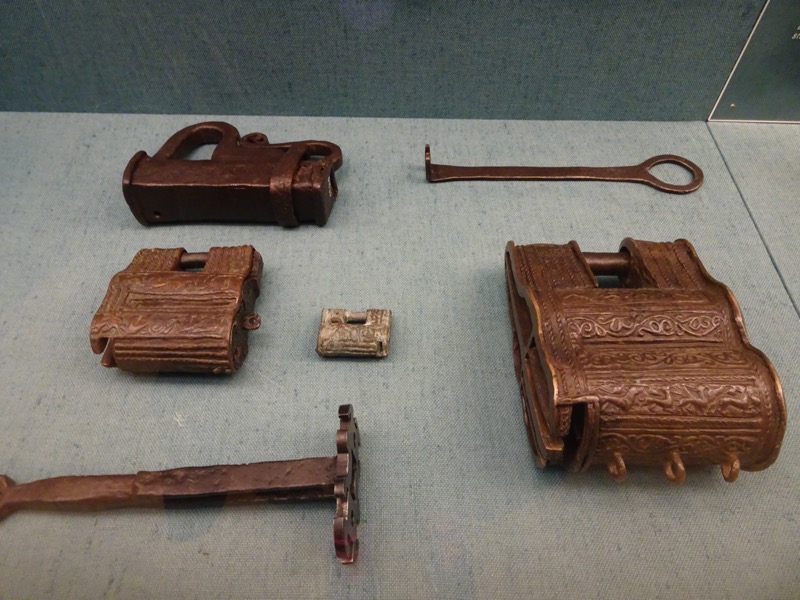
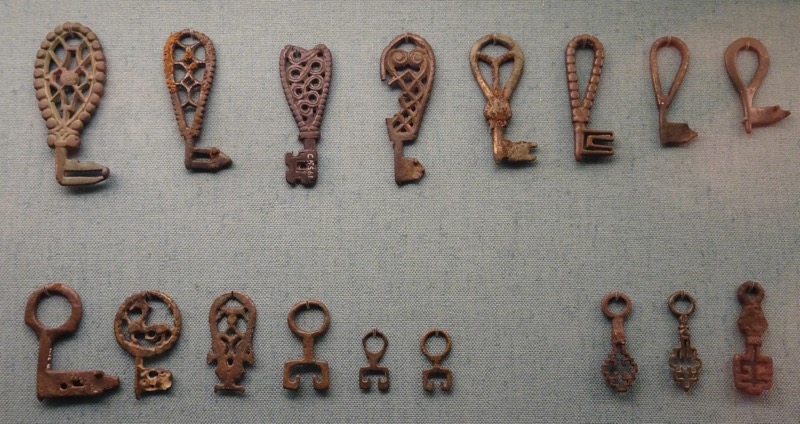 Crossbow. Likely drawn up by a belt hook c.1450.
Crossbow. Likely drawn up by a belt hook c.1450.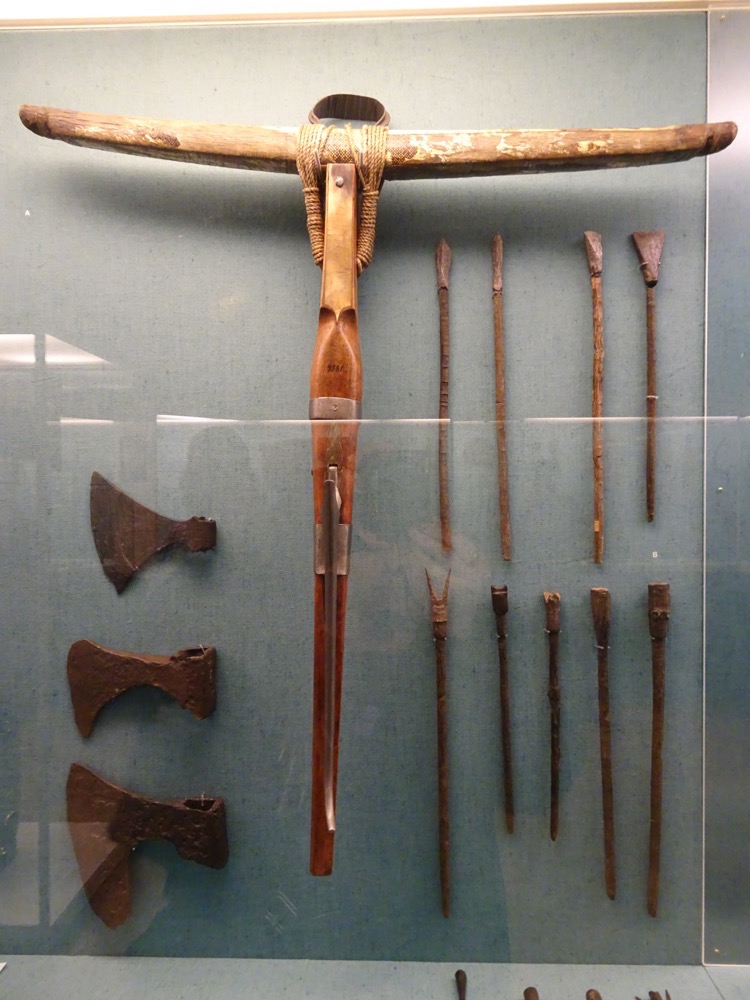 Crossbow arrows or quarrels for various types of bird and big game hunting. c.1500.
Crossbow arrows or quarrels for various types of bird and big game hunting. c.1500.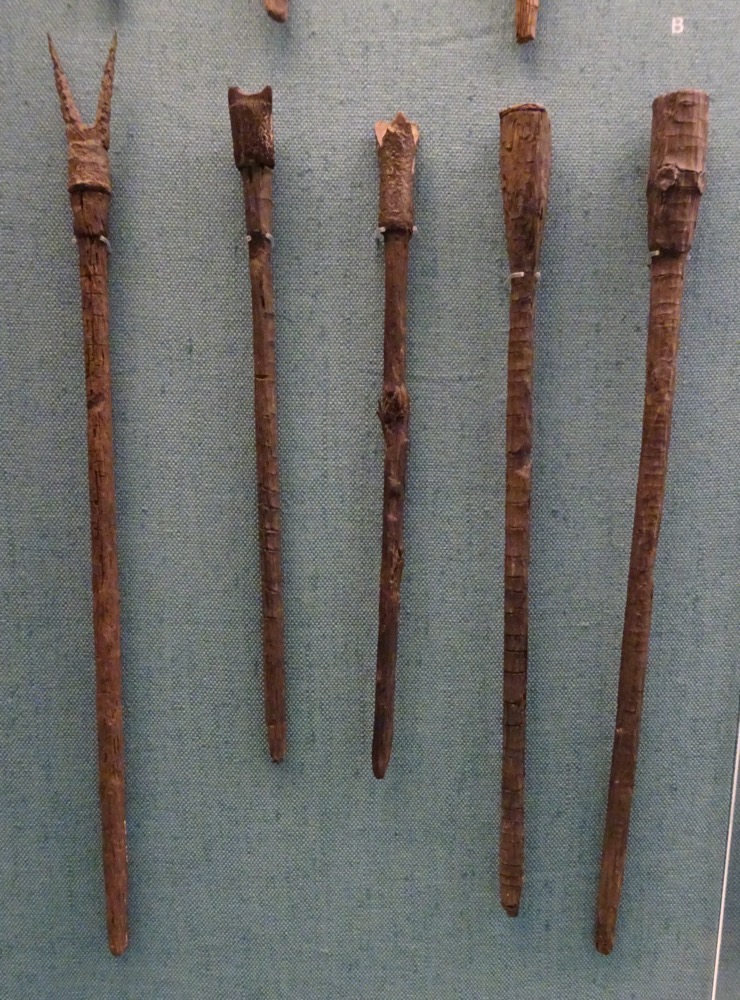 Parts of the crossbow trigger mechanism with space for the bowstring and slide bar with a groove for the quarrel.
Parts of the crossbow trigger mechanism with space for the bowstring and slide bar with a groove for the quarrel.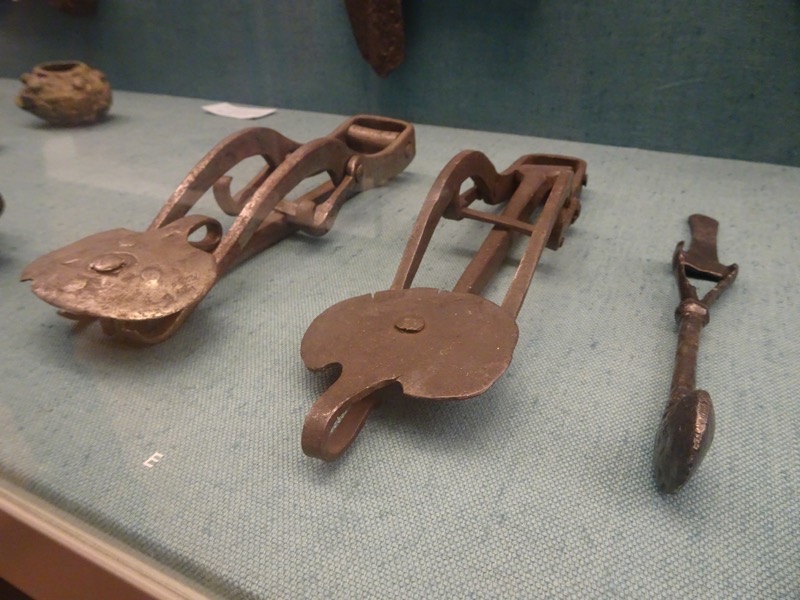 Early in the 14th century, daggers became popular weapons and were used in the art of fencing as a lefthand weapon. Daggers were known as “misericordia” because they were used to administer death blows when an armoured knight was knocked down.
Early in the 14th century, daggers became popular weapons and were used in the art of fencing as a lefthand weapon. Daggers were known as “misericordia” because they were used to administer death blows when an armoured knight was knocked down.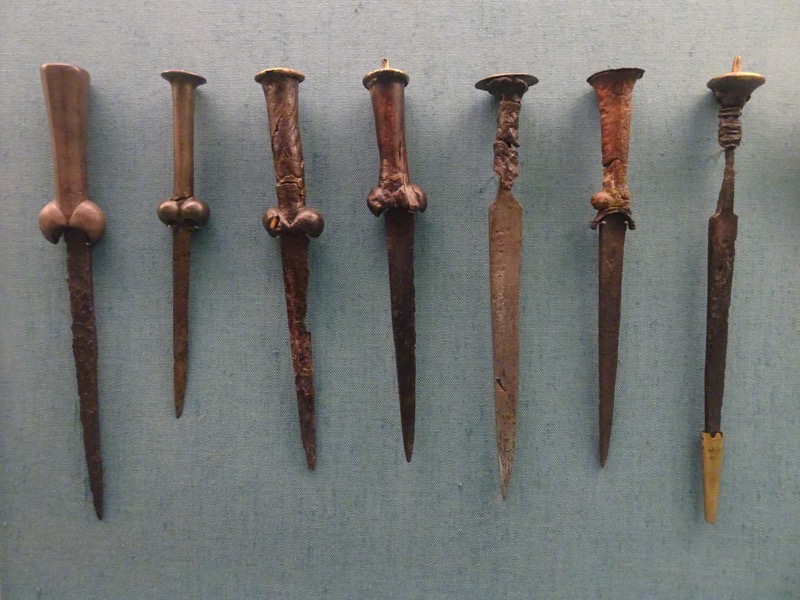 Spurs from a similar time period.
Spurs from a similar time period.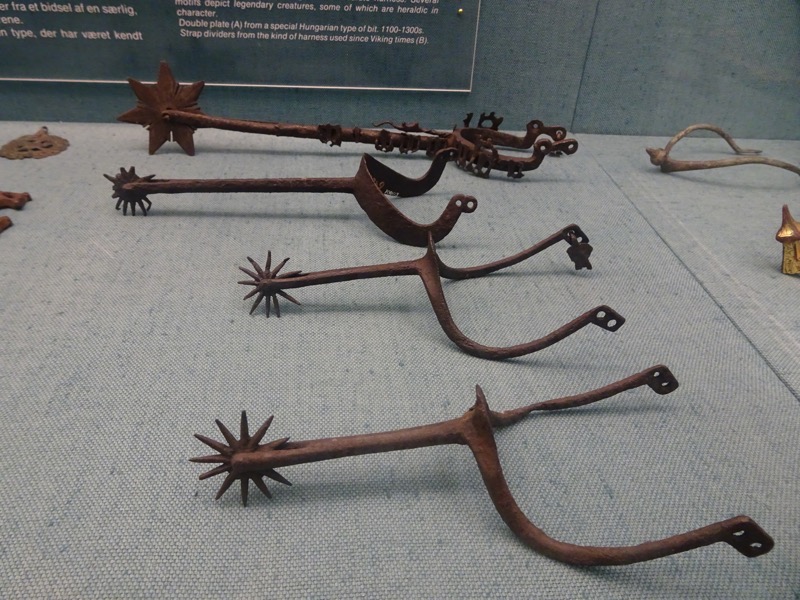 Collection of swords from the 14th to 15th centuries.
Collection of swords from the 14th to 15th centuries.

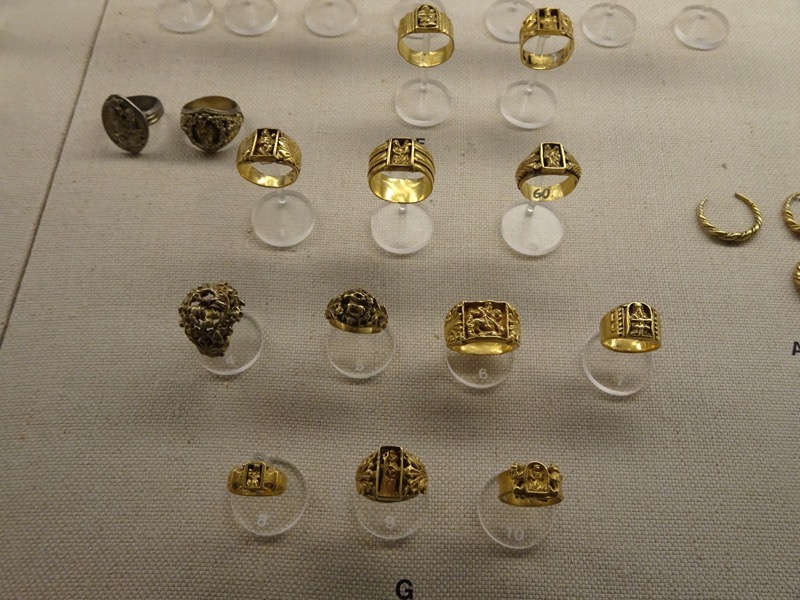

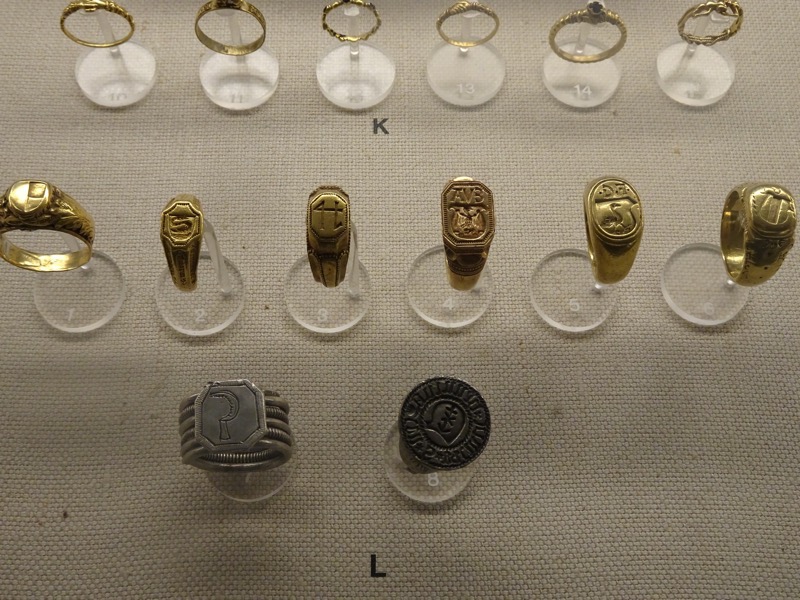
 Drinking horn with gilded silver rim mount and an original enameled escutcheon depicting an abbot. Probably from Soro Monastery, c.1400.
Drinking horn with gilded silver rim mount and an original enameled escutcheon depicting an abbot. Probably from Soro Monastery, c.1400.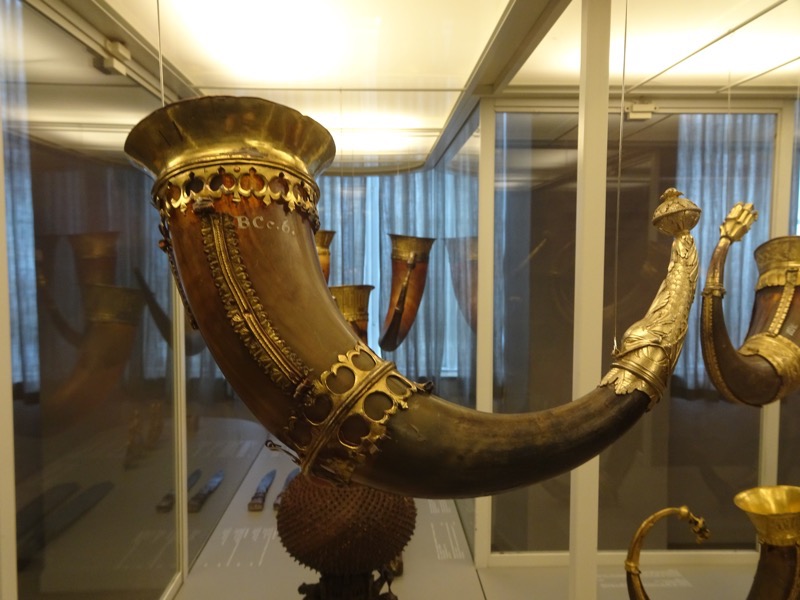
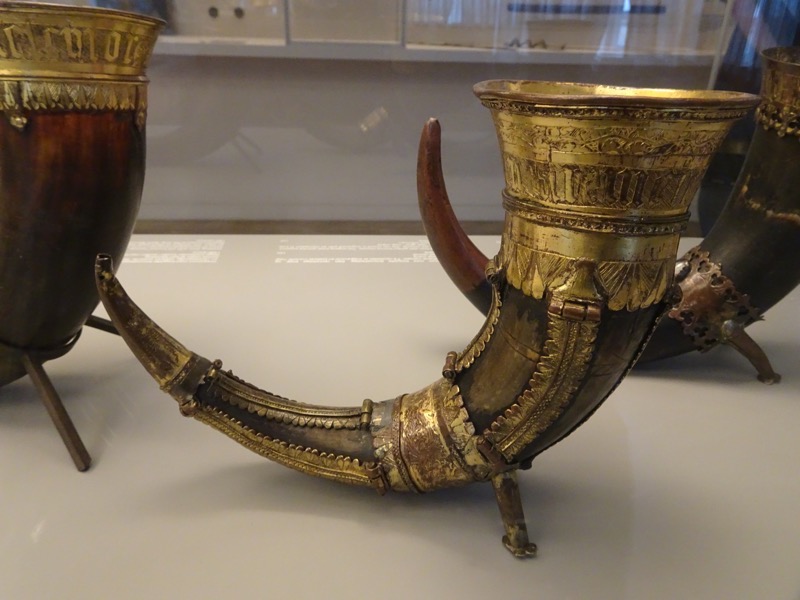
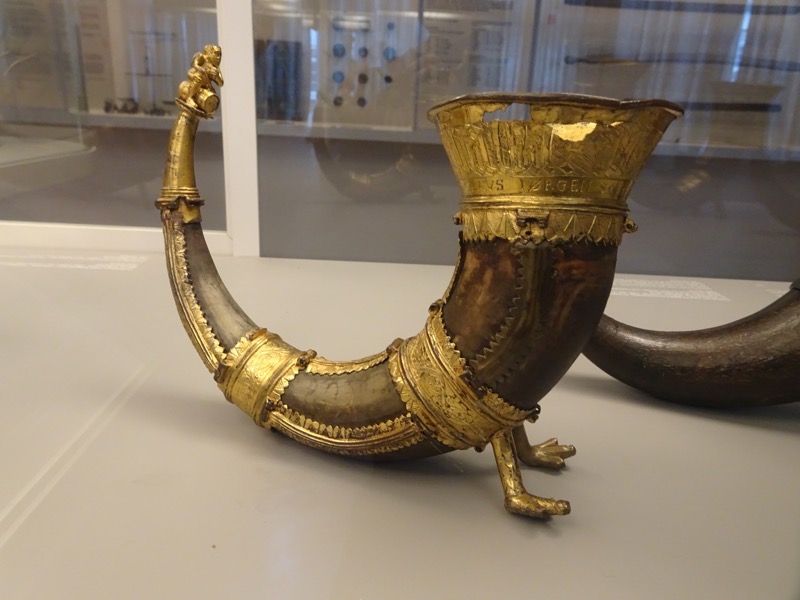 Carving knives:
Carving knives: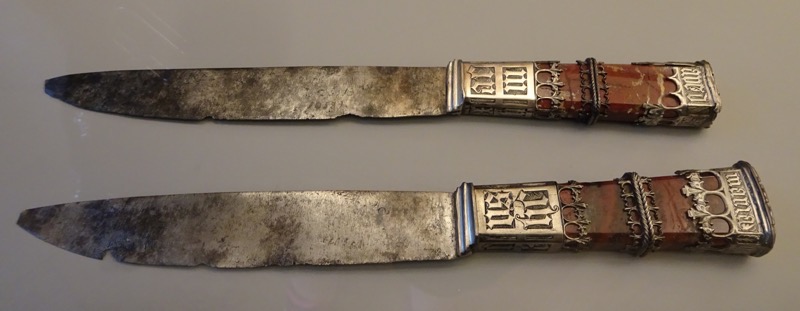 Silver spoons, Germany c.1500s.
Silver spoons, Germany c.1500s.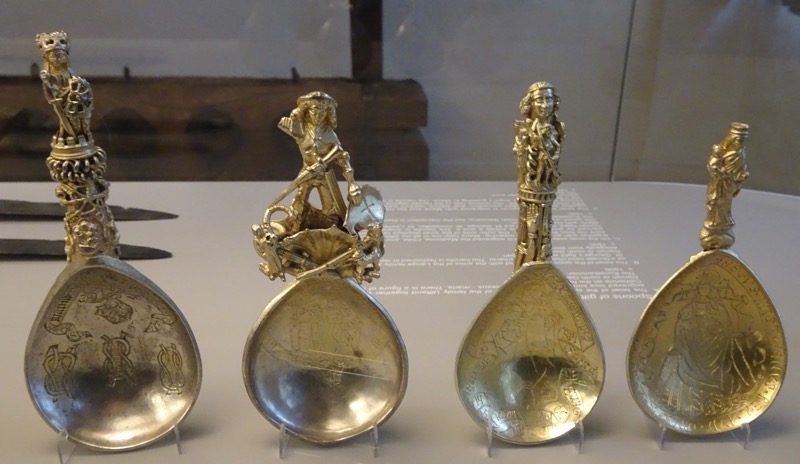 Wine ewer from Paris. Translucid enamels cover the delicately engraved reliefs. Motif depicts the story of the prodigal son. Fantastical beasts are also depicted as well as games such as Blind Mans Bluff. Brought back from the war against the Ditmarshes by Frederick II in 1550. c.1310-1320 AD.
Wine ewer from Paris. Translucid enamels cover the delicately engraved reliefs. Motif depicts the story of the prodigal son. Fantastical beasts are also depicted as well as games such as Blind Mans Bluff. Brought back from the war against the Ditmarshes by Frederick II in 1550. c.1310-1320 AD.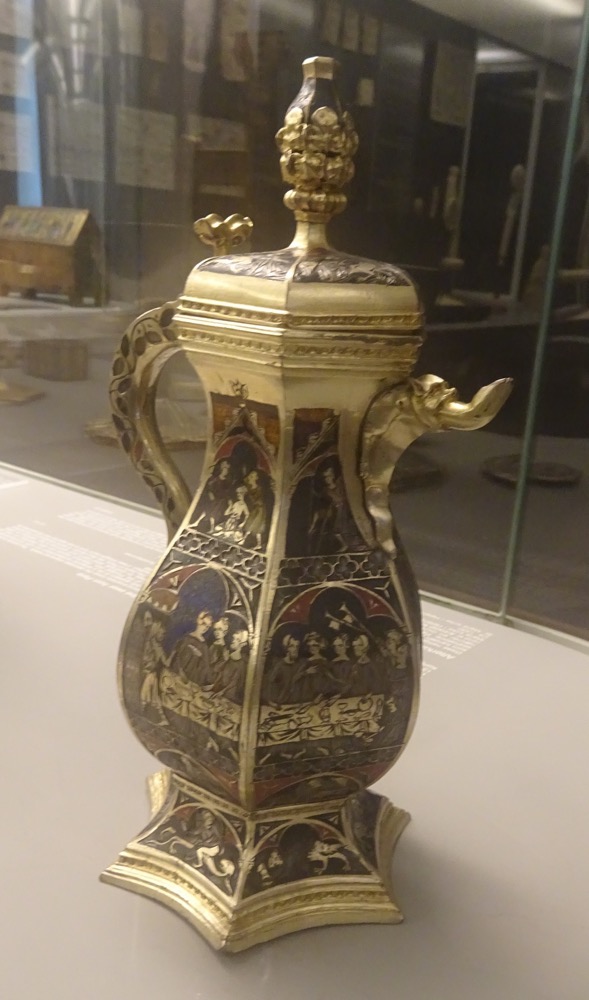
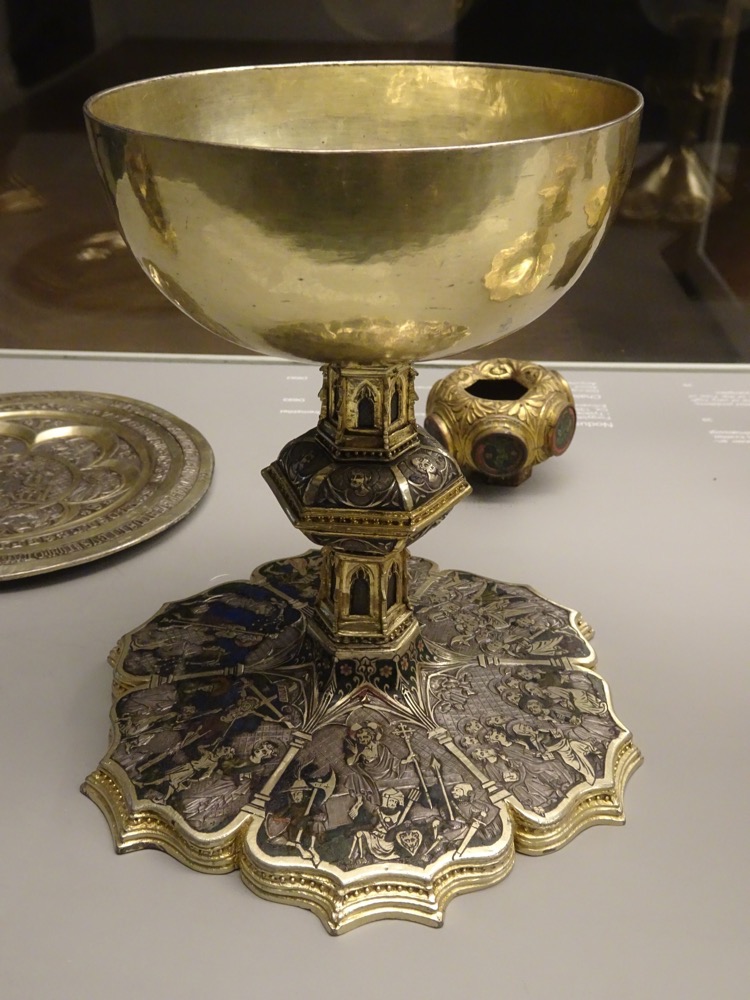 Above & Below: Chalices presumably executed in Paris. Dated on the edge as 1586 to the Church of St Marie in Elsinor.
Above & Below: Chalices presumably executed in Paris. Dated on the edge as 1586 to the Church of St Marie in Elsinor. Reliquary. Christ with the Evangelists. c.1200 AD.
Reliquary. Christ with the Evangelists. c.1200 AD.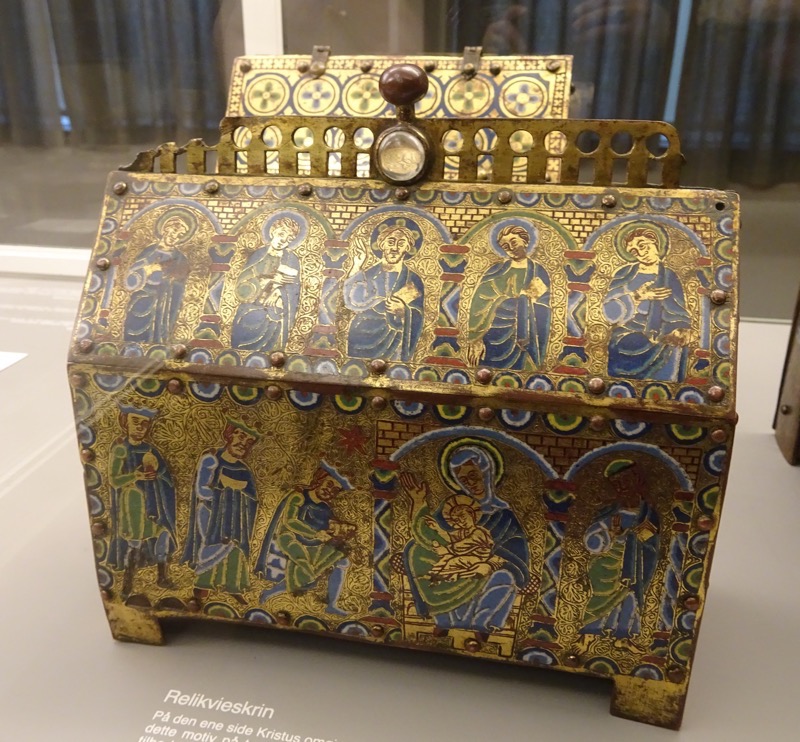 Largest reliquary in the collection. One one side, Three Magi above the Adoration of the Magi on their way to Herod. Other side, the Flight into Egypt. c.1200-1250. Believed to be from Soro Abbey.
Largest reliquary in the collection. One one side, Three Magi above the Adoration of the Magi on their way to Herod. Other side, the Flight into Egypt. c.1200-1250. Believed to be from Soro Abbey.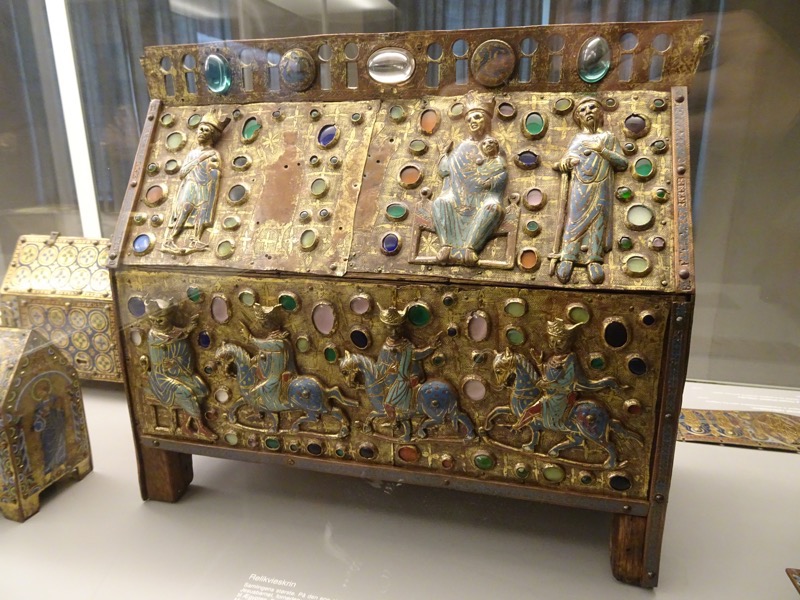
 Reliquary. On one side of the roof is a representation of the Adoration of hte Magi, the casket is the oldest example of Limoges enamel work in the collection and the artistic quality is exceptional. c.1175 AD. Provenance unknown.
Reliquary. On one side of the roof is a representation of the Adoration of hte Magi, the casket is the oldest example of Limoges enamel work in the collection and the artistic quality is exceptional. c.1175 AD. Provenance unknown.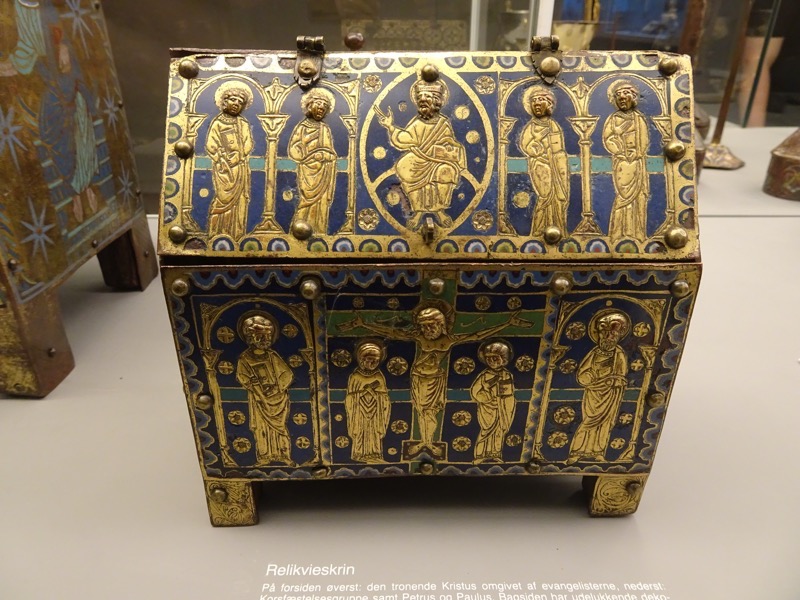 Ewers with spout. Northern German or Danish. 14th C Toline Church in north Jutland.
Ewers with spout. Northern German or Danish. 14th C Toline Church in north Jutland.
 Renaissance style jewellery – c.15thC to 16thC.
Renaissance style jewellery – c.15thC to 16thC.
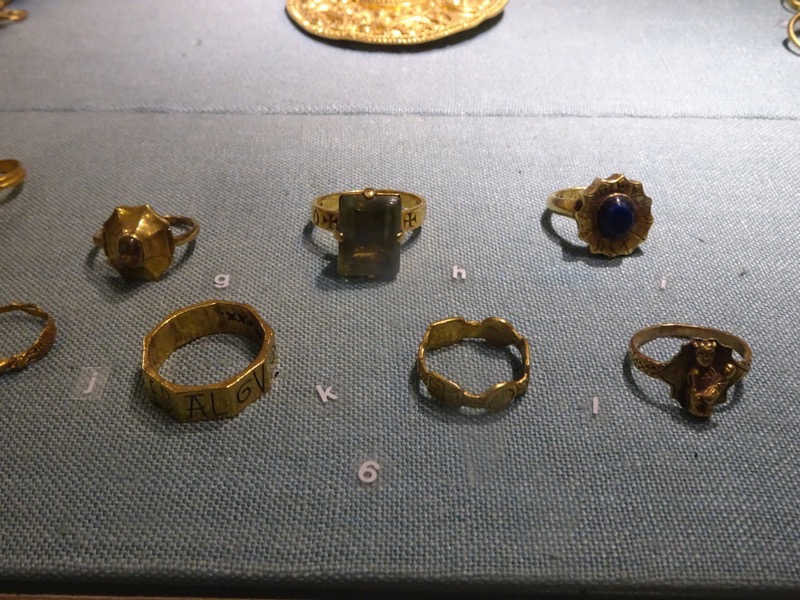 And last one – this one is for Leofric.
And last one – this one is for Leofric.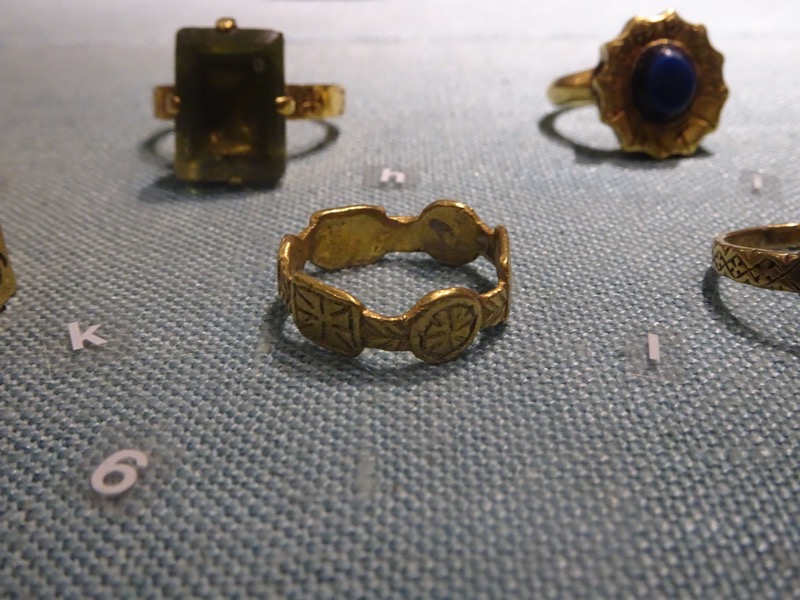
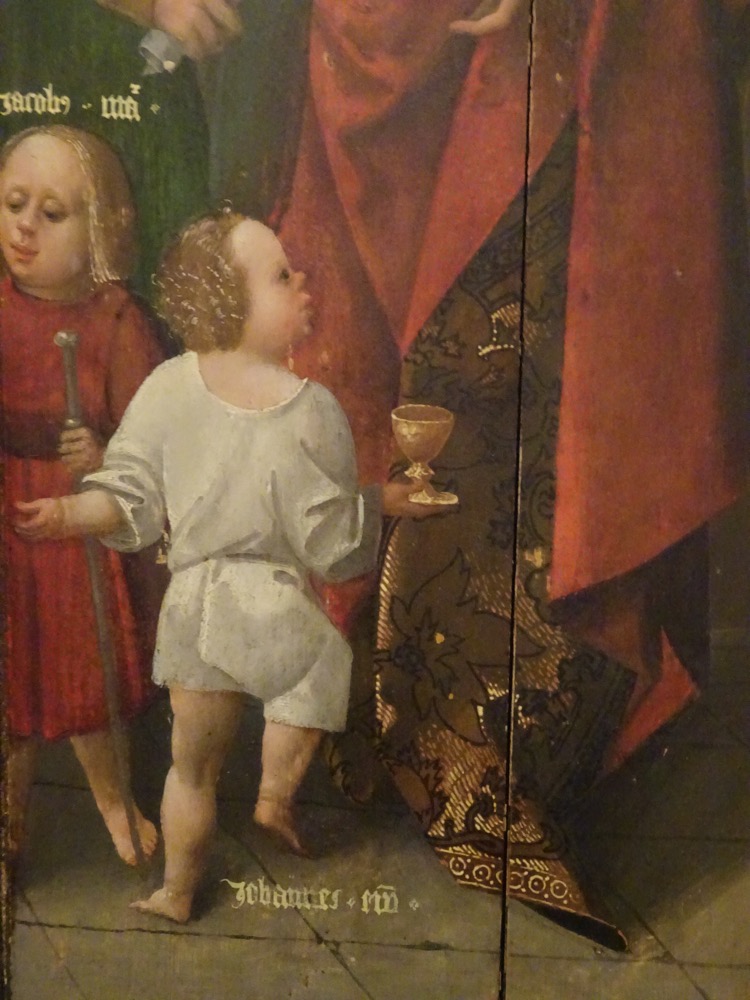
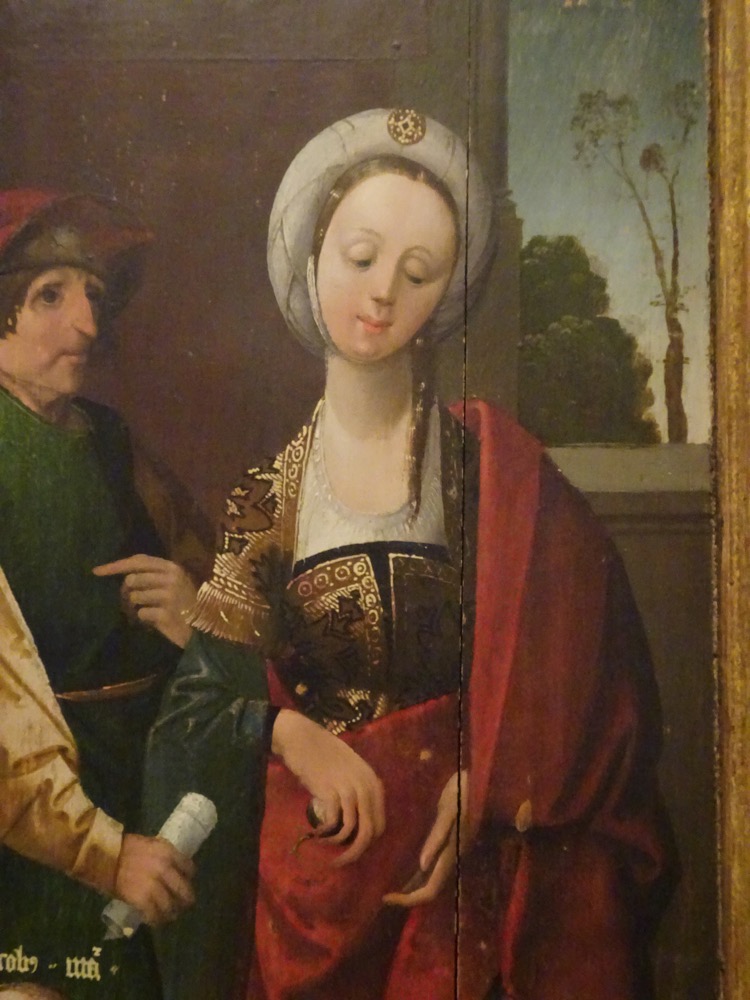 Full armour for horse and man. Innsbruck Austria, c.1545 AD.
Full armour for horse and man. Innsbruck Austria, c.1545 AD. Faience Portuguese jars, c.1641.
Faience Portuguese jars, c.1641.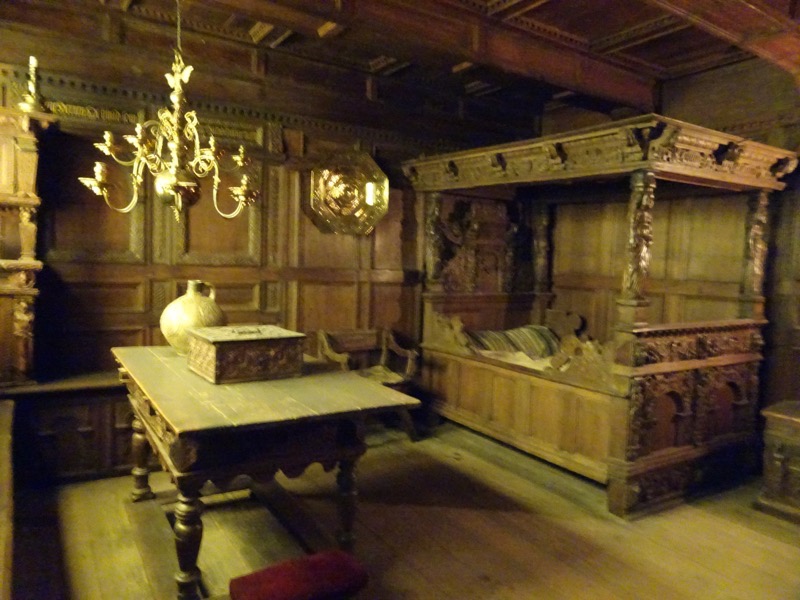 Cooking cauldrons. c.15-16th centuries.
Cooking cauldrons. c.15-16th centuries.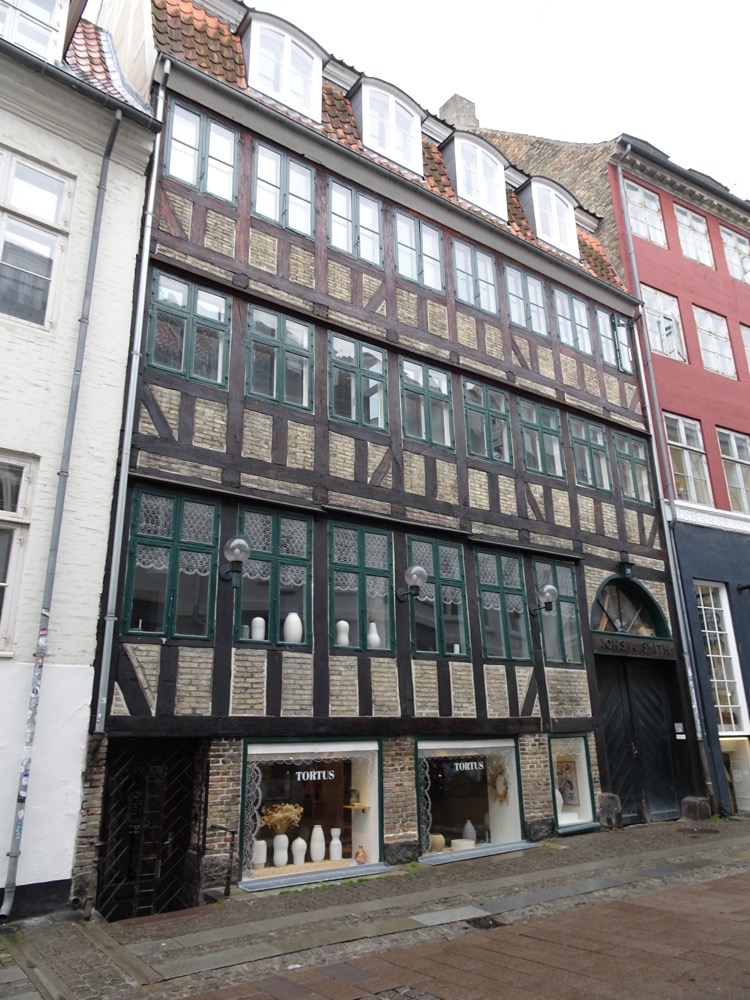
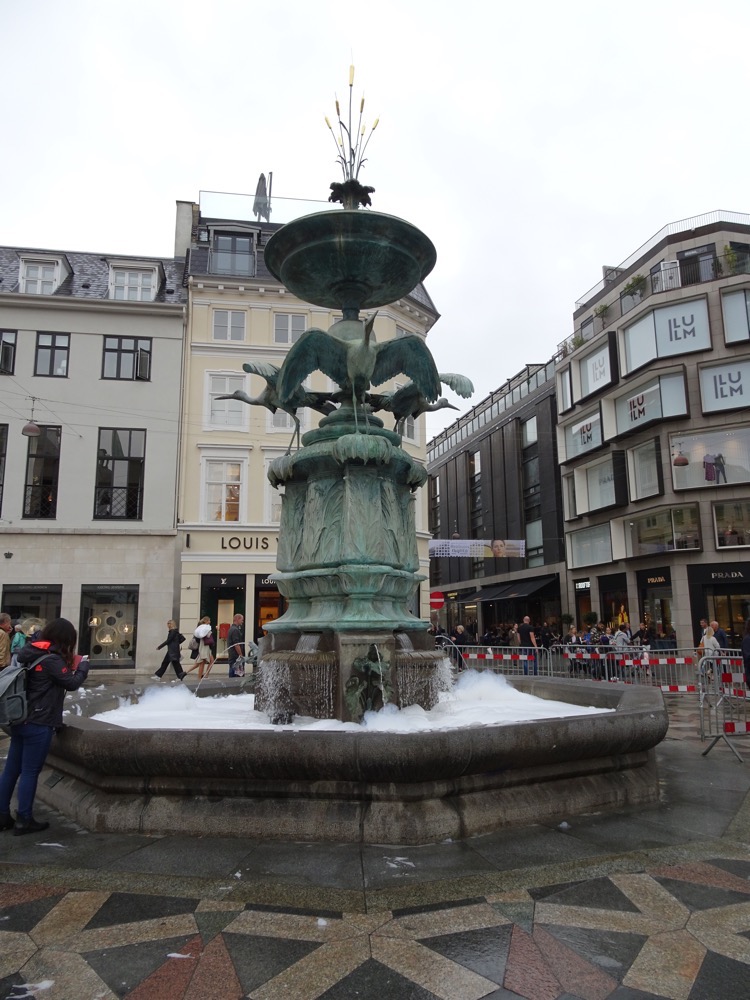
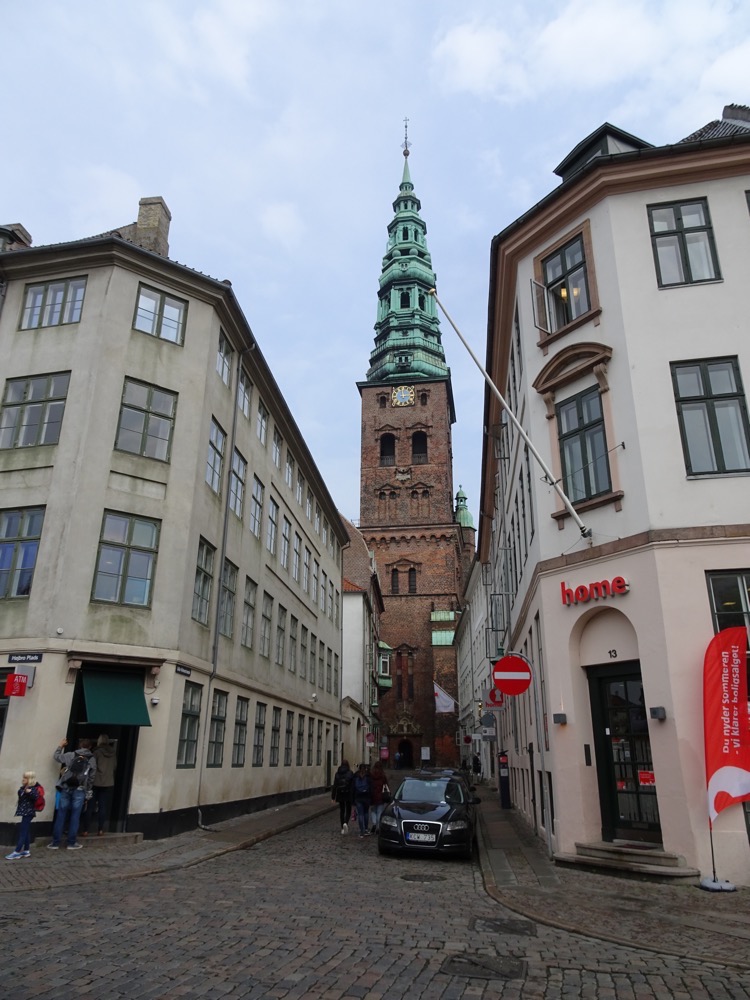 After spilling out of the amazing museum and spending no small amount of time in the gift shop, lamenting the lack of English catalogues, I might add (I could have cried!), we wandered the streets of Copenhagen for a while until we found another Irish pub for lunch – the Irish Rover, where we had a weird Danish smorgasbord lunch and massive pints of cider and beer, as you do!
After spilling out of the amazing museum and spending no small amount of time in the gift shop, lamenting the lack of English catalogues, I might add (I could have cried!), we wandered the streets of Copenhagen for a while until we found another Irish pub for lunch – the Irish Rover, where we had a weird Danish smorgasbord lunch and massive pints of cider and beer, as you do!
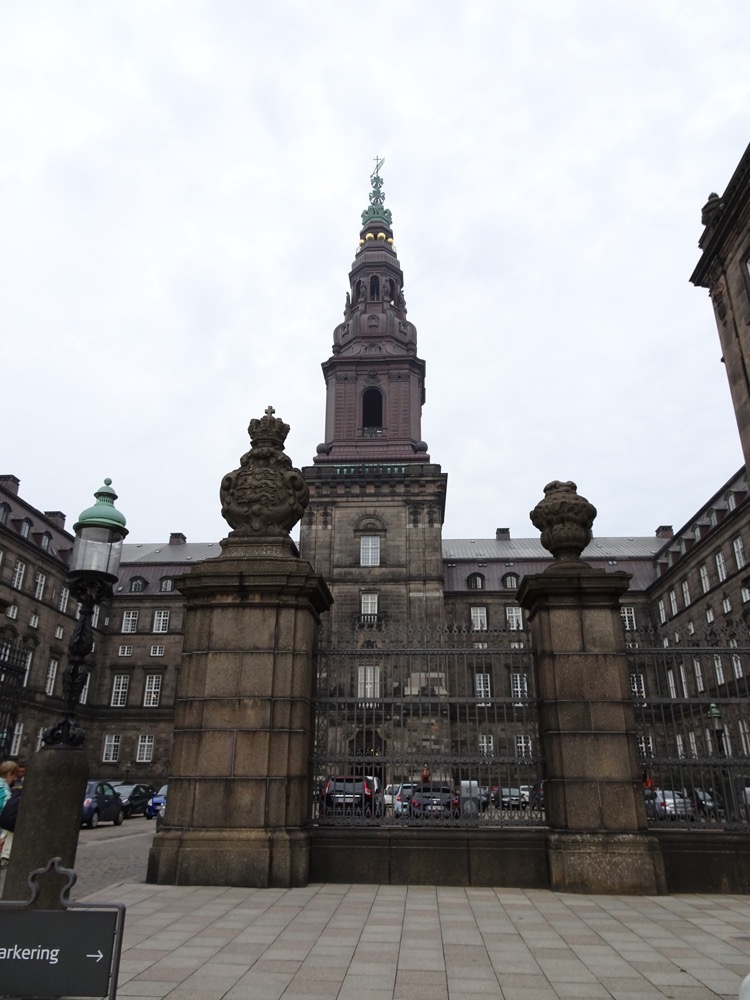 Christiansborg Slot (or Christiansborg Palace) is both palace and government building on the island of Sltosholmen in the middle of town. It is the seat of the Danish Parliament, contains the Prime Minister’s Offices, and also the Supreme Court of Denmark is here. Several parts of the palace are also still used by the Danish monarchy, including the Royal Reception Rooms and Royal Stables. Interesting tidbit for the day – this is the only place in the world where the executive, legislative and judicial branches government are contained all in one building/complex.
Christiansborg Slot (or Christiansborg Palace) is both palace and government building on the island of Sltosholmen in the middle of town. It is the seat of the Danish Parliament, contains the Prime Minister’s Offices, and also the Supreme Court of Denmark is here. Several parts of the palace are also still used by the Danish monarchy, including the Royal Reception Rooms and Royal Stables. Interesting tidbit for the day – this is the only place in the world where the executive, legislative and judicial branches government are contained all in one building/complex.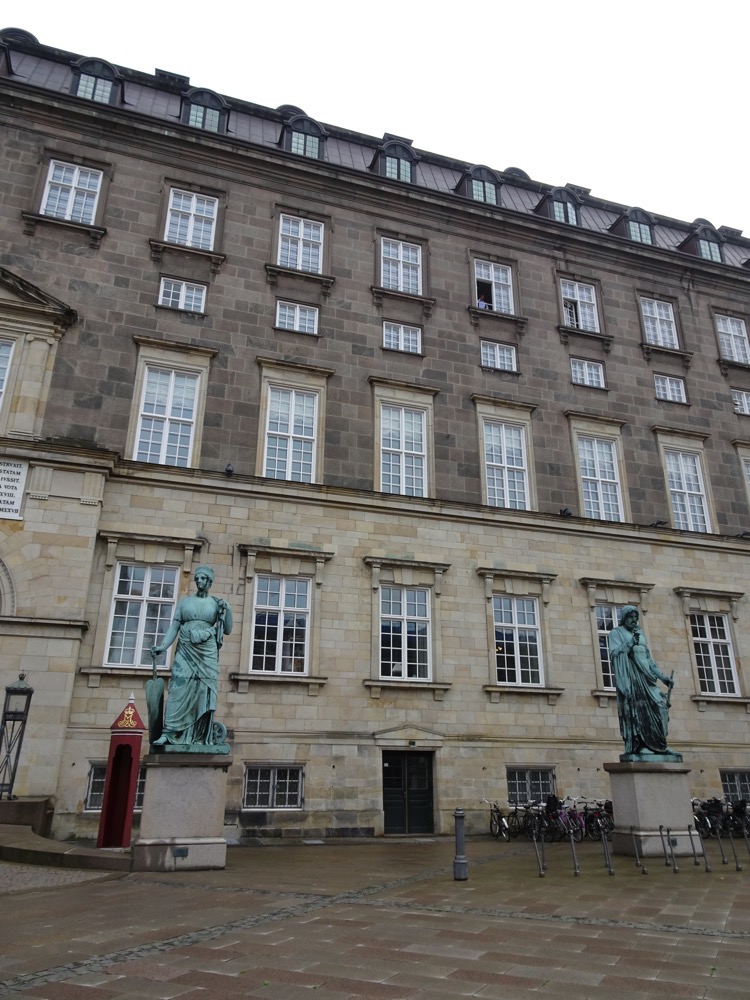 Grand Hallway leading to the Royal Reception Rooms, also known as the Queen’s Staircase (though I know not why).
Grand Hallway leading to the Royal Reception Rooms, also known as the Queen’s Staircase (though I know not why).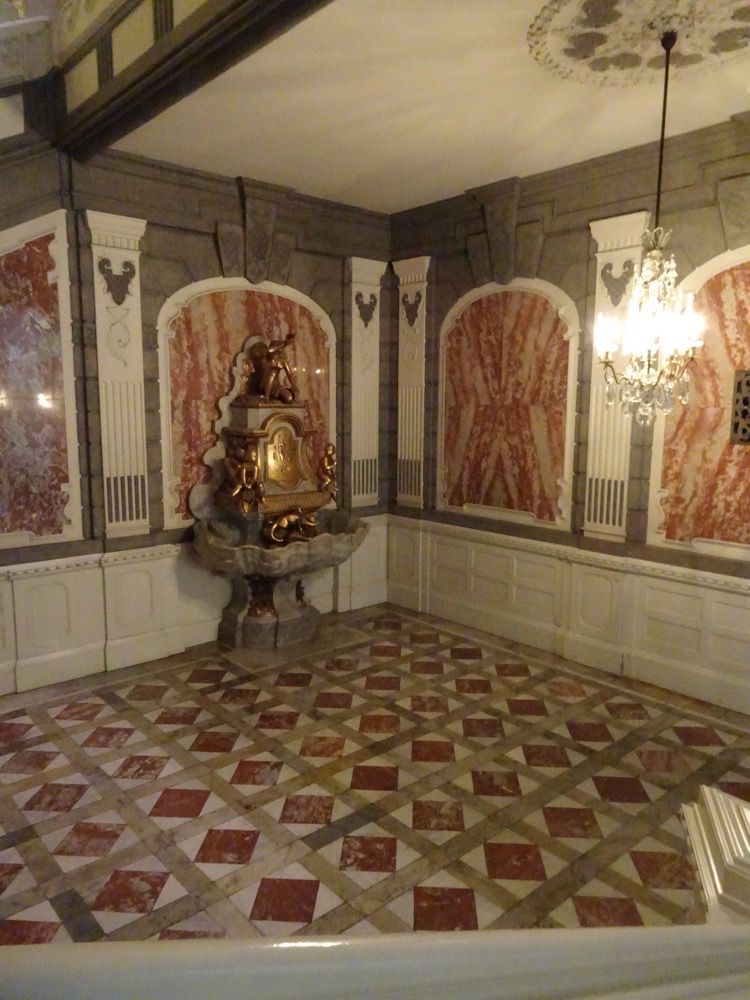 The Alexander Hall.
The Alexander Hall.
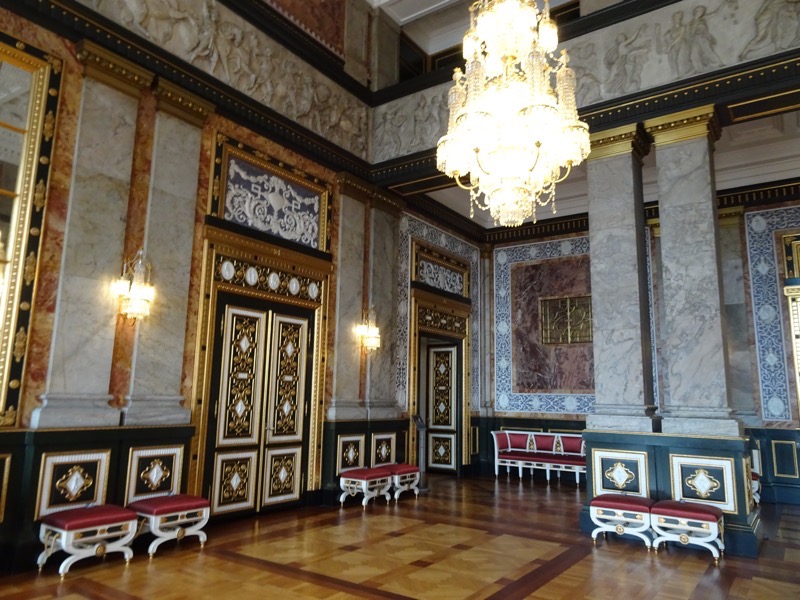
 The Flora Danica Cabinet containing all the royal flatware.
The Flora Danica Cabinet containing all the royal flatware.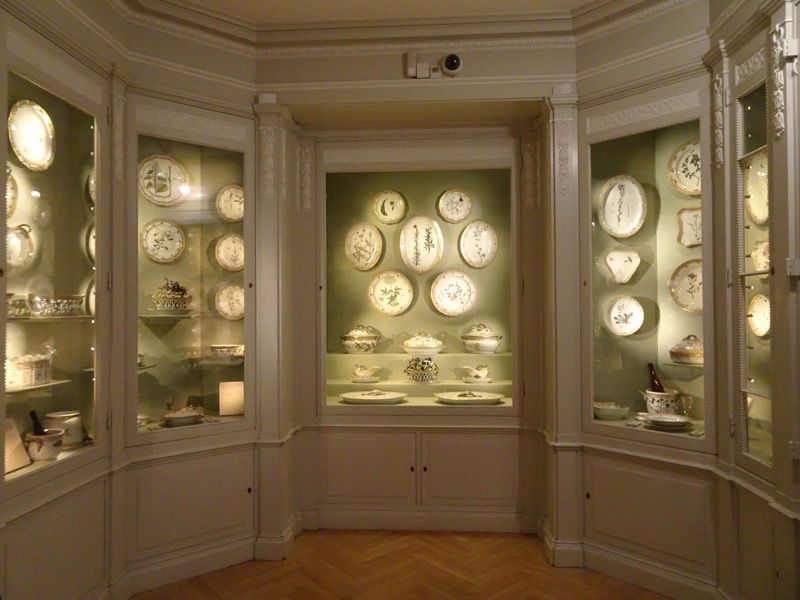
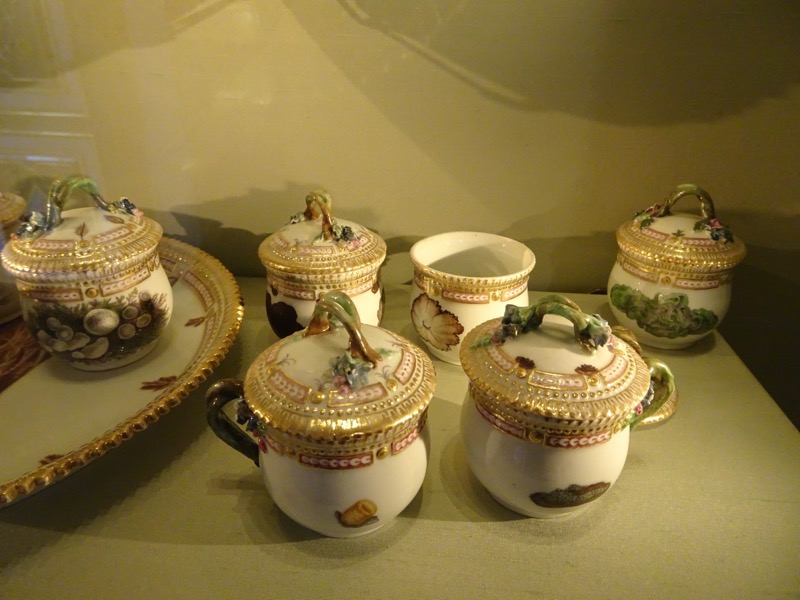 The Princess Chamber.
The Princess Chamber.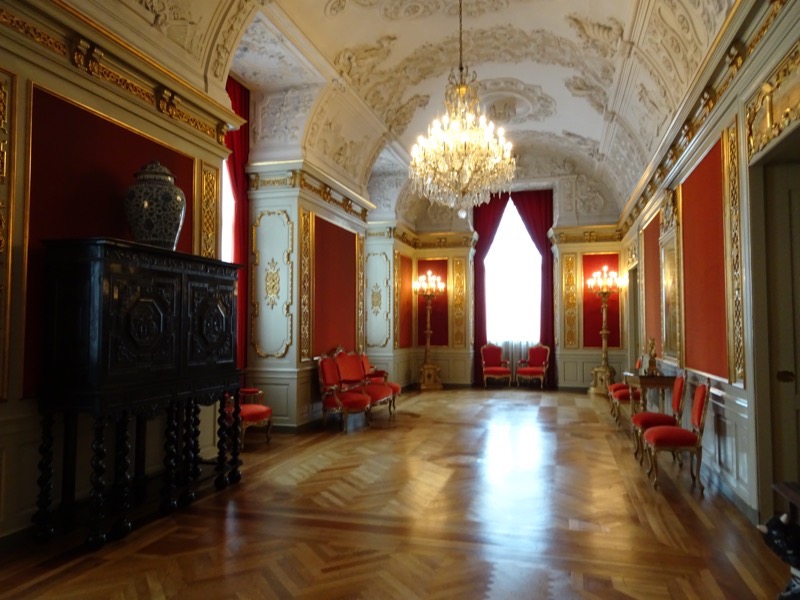
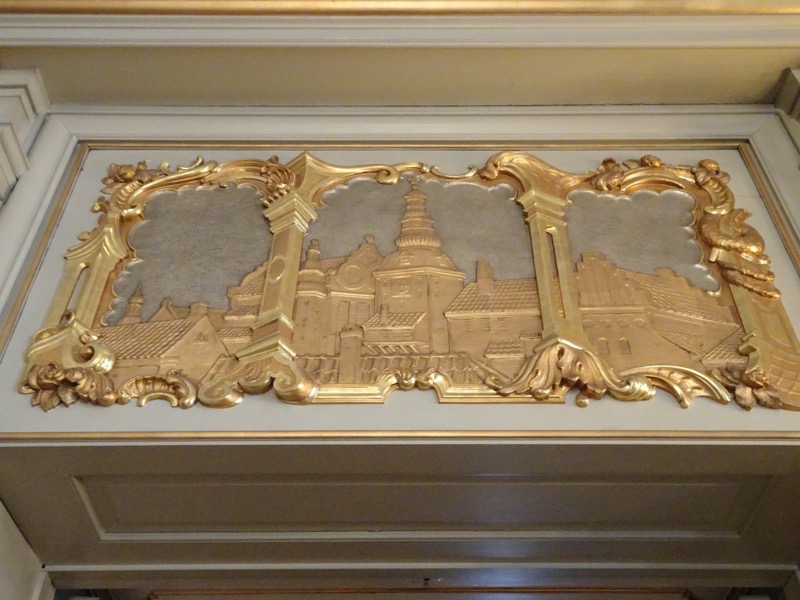 The Queen’s Library – never been jealous of a Queen before, but I would LOVE a library like this!
The Queen’s Library – never been jealous of a Queen before, but I would LOVE a library like this! 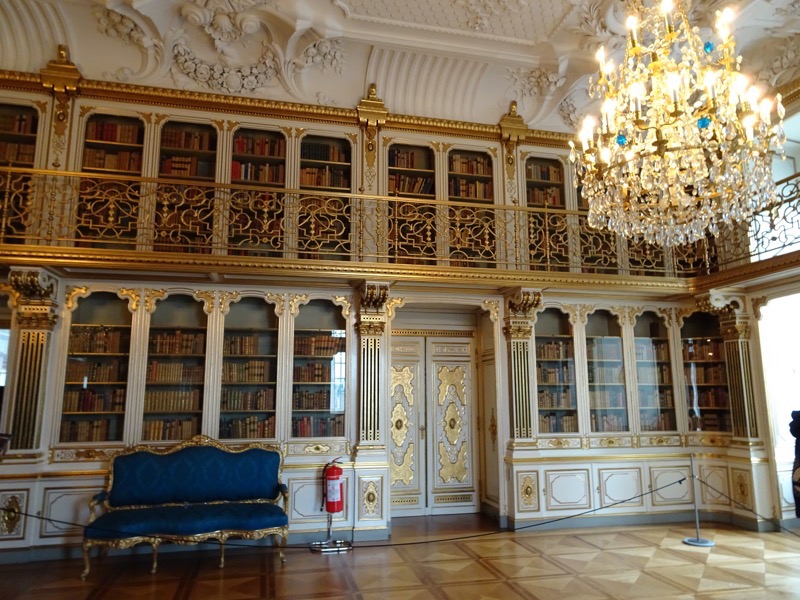 Gorgeous, and so much space for books!
Gorgeous, and so much space for books!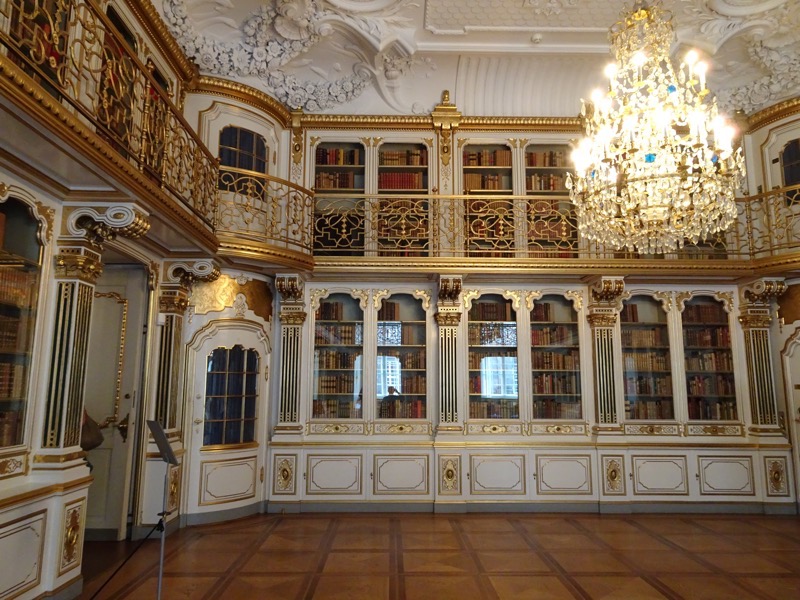 The Abilgaard Room.
The Abilgaard Room. The Dining Hall, which has a beautfiul table that can comfortably accommodate fifty guests.
The Dining Hall, which has a beautfiul table that can comfortably accommodate fifty guests.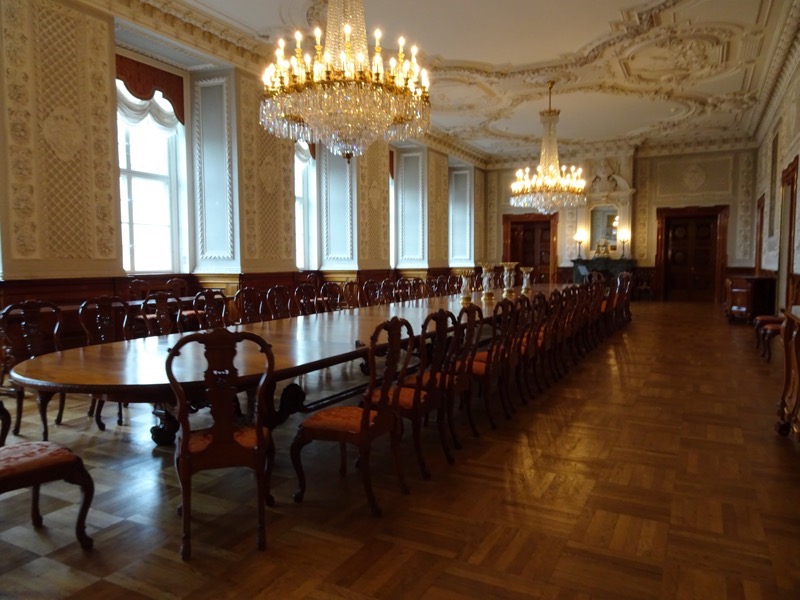
 The Green Room (I do not know why so many of these palaces all have a ‘Green Room’ a ‘Red Room’ a ‘Blue Room’ etc, but it seems to be de rigeur for European castles.
The Green Room (I do not know why so many of these palaces all have a ‘Green Room’ a ‘Red Room’ a ‘Blue Room’ etc, but it seems to be de rigeur for European castles. 
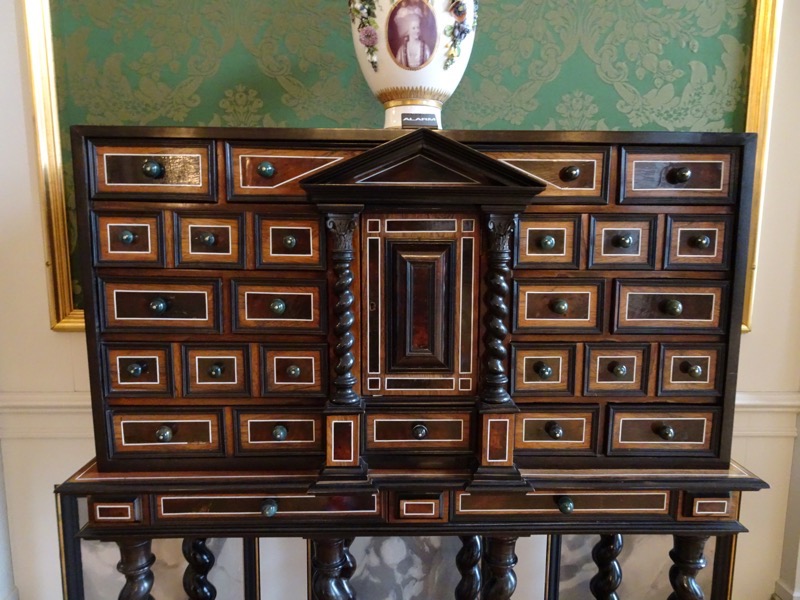 The Swedish Gallery.
The Swedish Gallery. The Great Gallery – whereupon we were greeted by a Great Surprise.
The Great Gallery – whereupon we were greeted by a Great Surprise.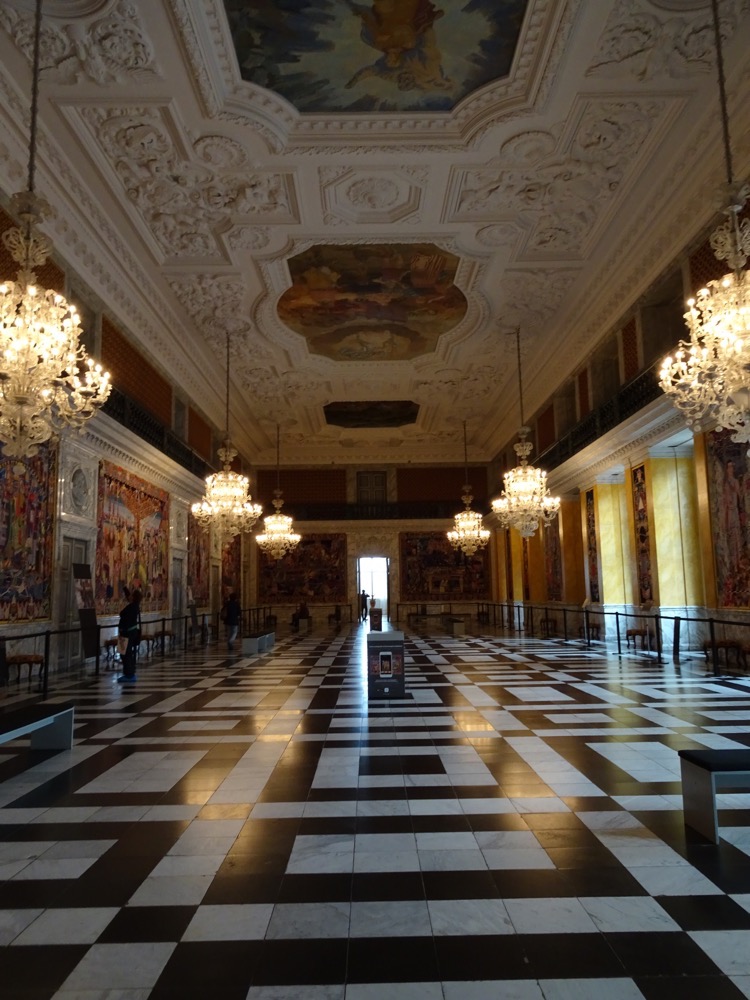 Tapestries. Oh dear God, SEVENTEEN of them. The Great Hall is decorated with ’17 richly coloured, modern tapestries’. The tapestries were a gift from Danish companies, organisations and foundations to mark Queen Margarethe II’s 50th birthday on 16th of April, 2000.
Tapestries. Oh dear God, SEVENTEEN of them. The Great Hall is decorated with ’17 richly coloured, modern tapestries’. The tapestries were a gift from Danish companies, organisations and foundations to mark Queen Margarethe II’s 50th birthday on 16th of April, 2000.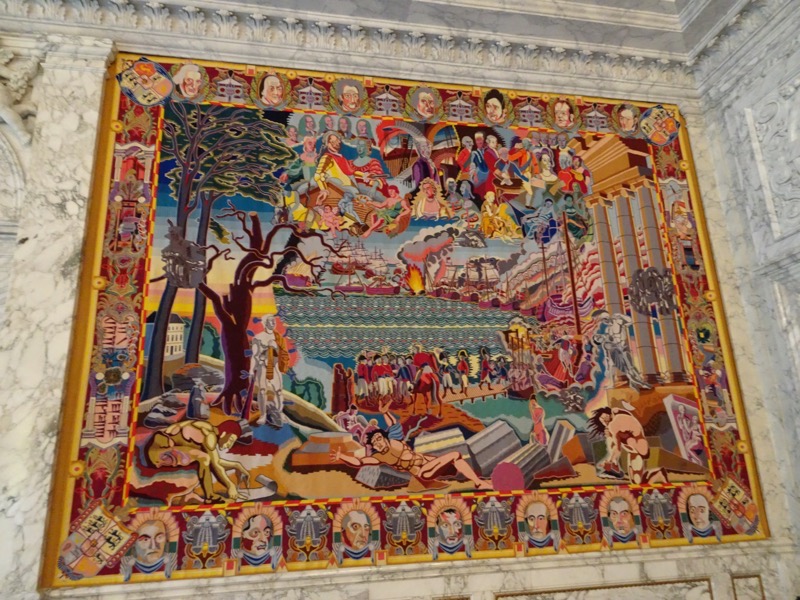
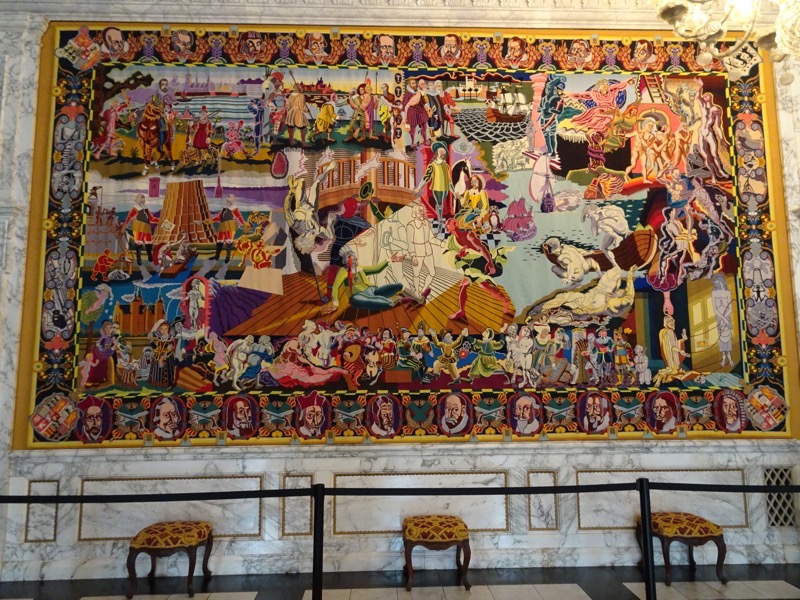

 It was at this point that I stopped being jealous of Queen Margrethe’s fabulous library… if the cost of owning that fabulous library is also having to receive things, like these tapestries, with some form of grace and decorum, well, there goes my pretensions towards Queenliness! I think if someone presented me with something that had obviously taken so much work but was so positively hideous, I could not possibly have received it with any other expression, other than incredulity.
It was at this point that I stopped being jealous of Queen Margrethe’s fabulous library… if the cost of owning that fabulous library is also having to receive things, like these tapestries, with some form of grace and decorum, well, there goes my pretensions towards Queenliness! I think if someone presented me with something that had obviously taken so much work but was so positively hideous, I could not possibly have received it with any other expression, other than incredulity.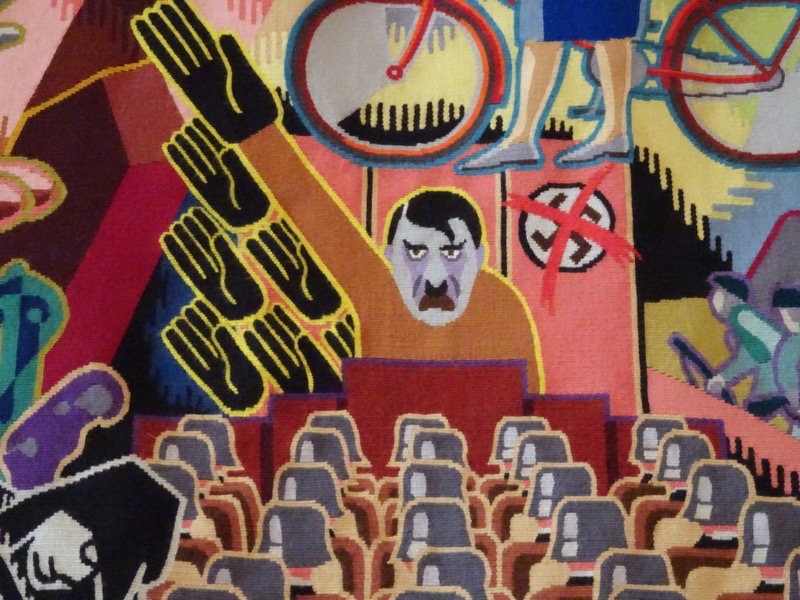 BUTT FUCKING UGLY! It makes me sad to think so much time, energy and work went into making something like this. 🙁
BUTT FUCKING UGLY! It makes me sad to think so much time, energy and work went into making something like this. 🙁 

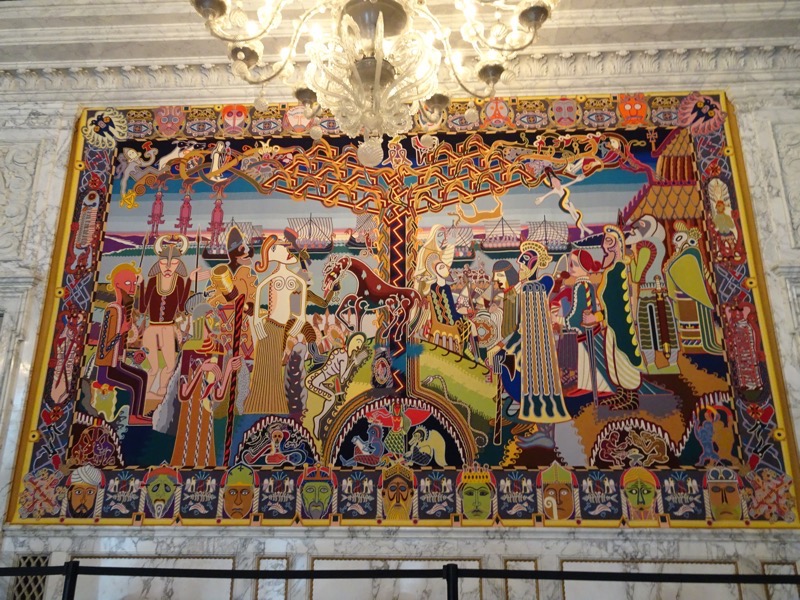

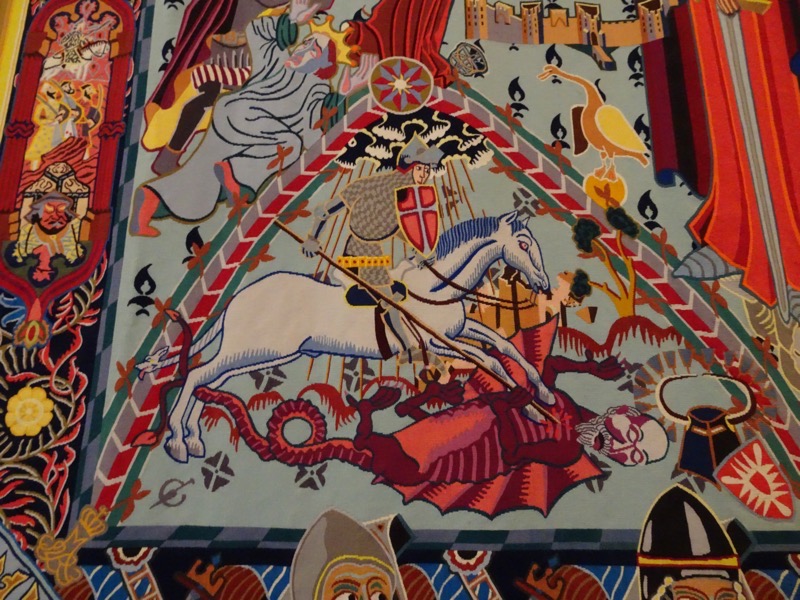 Seriously. I’m sure someone likes them, but me and my fine arts degree, and my love of historical textiles are just rocking and crying quietly in a corner somewhere.
Seriously. I’m sure someone likes them, but me and my fine arts degree, and my love of historical textiles are just rocking and crying quietly in a corner somewhere.

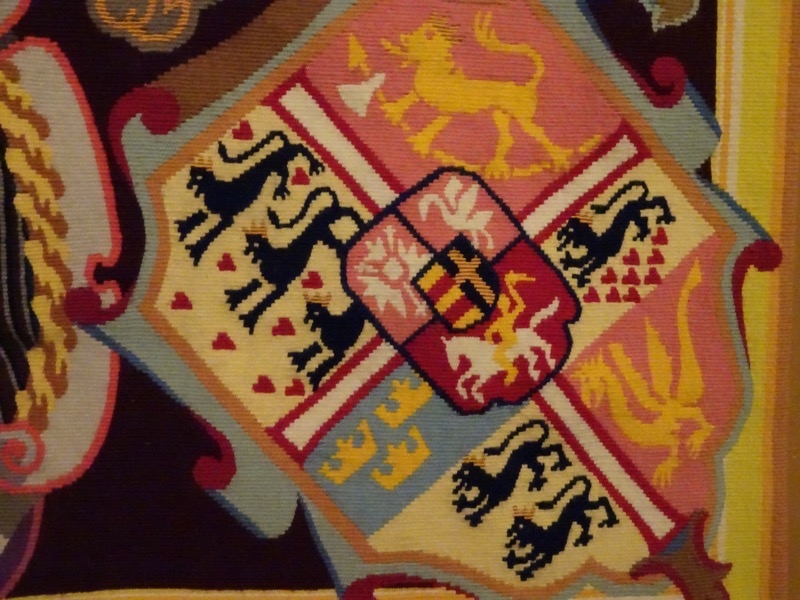 FFS… who ever thought it would be ‘nice’ to represent 1100 years of Danish history in cartoonish tapestry to the Queen of Denmark on the occasion of her 50th birthday, needs their bloody head read.
FFS… who ever thought it would be ‘nice’ to represent 1100 years of Danish history in cartoonish tapestry to the Queen of Denmark on the occasion of her 50th birthday, needs their bloody head read. 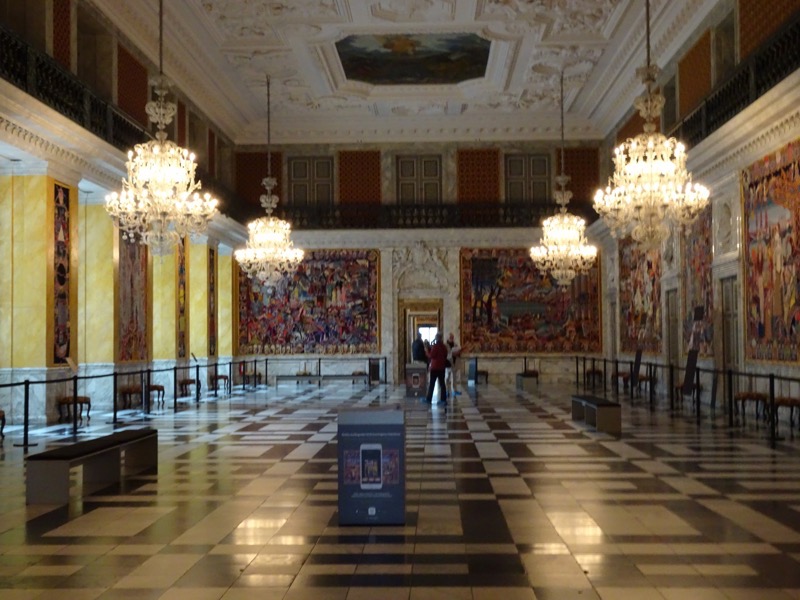 Alright, snobbery begone! Moving right along we found ourselves in the Velvet Room which has covered in lovely cut out brocade velvet wallpaper.
Alright, snobbery begone! Moving right along we found ourselves in the Velvet Room which has covered in lovely cut out brocade velvet wallpaper. 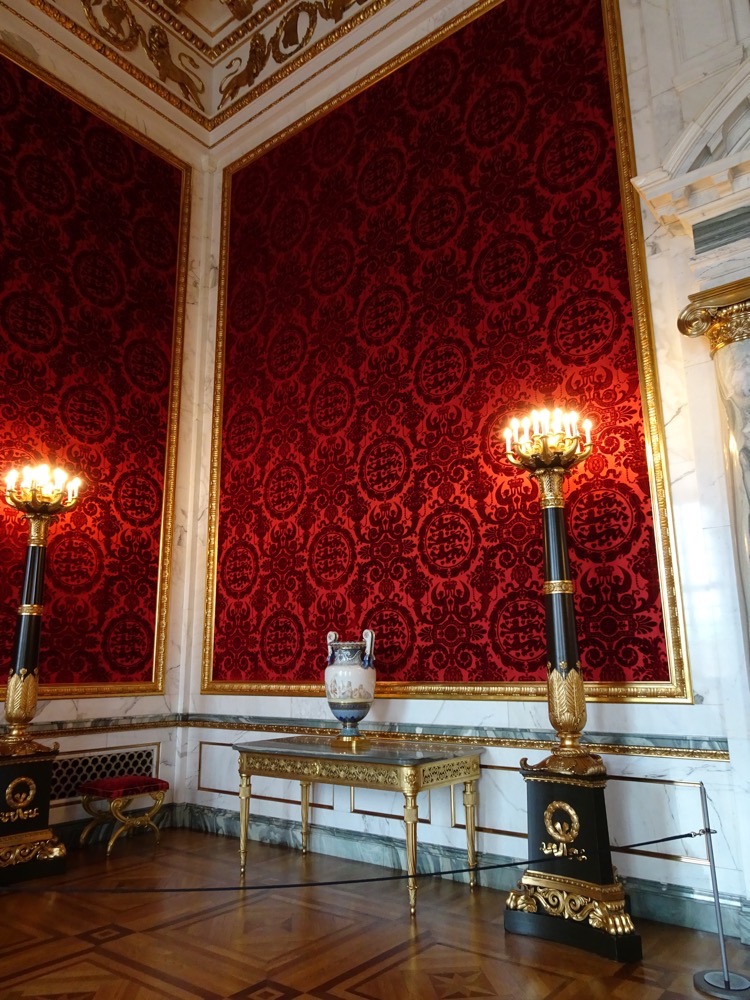
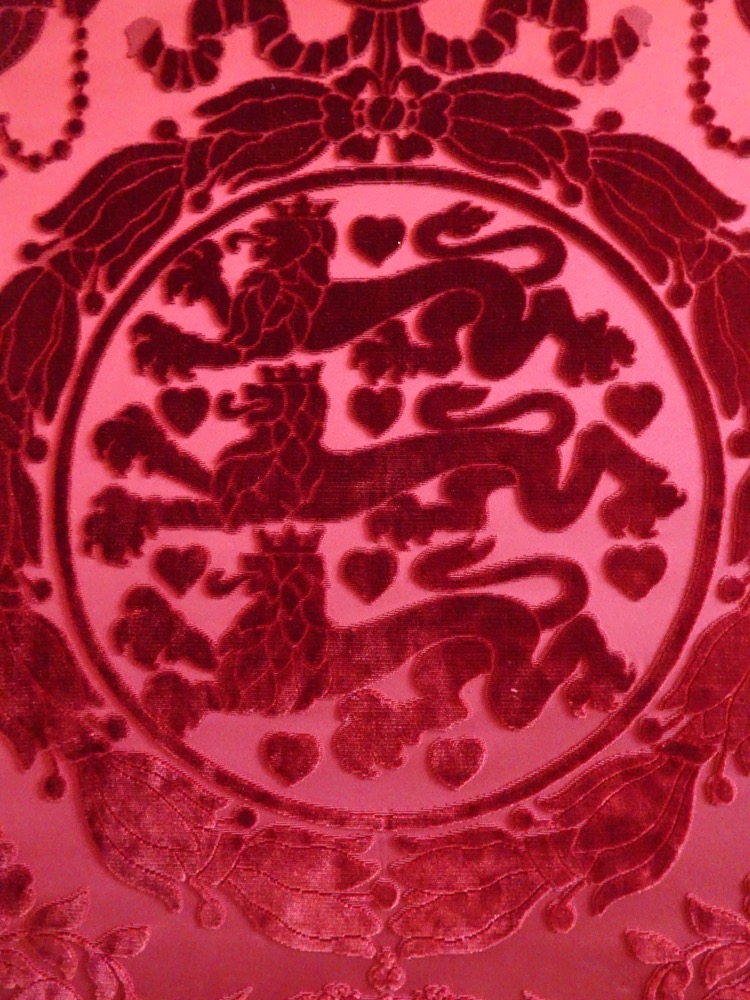
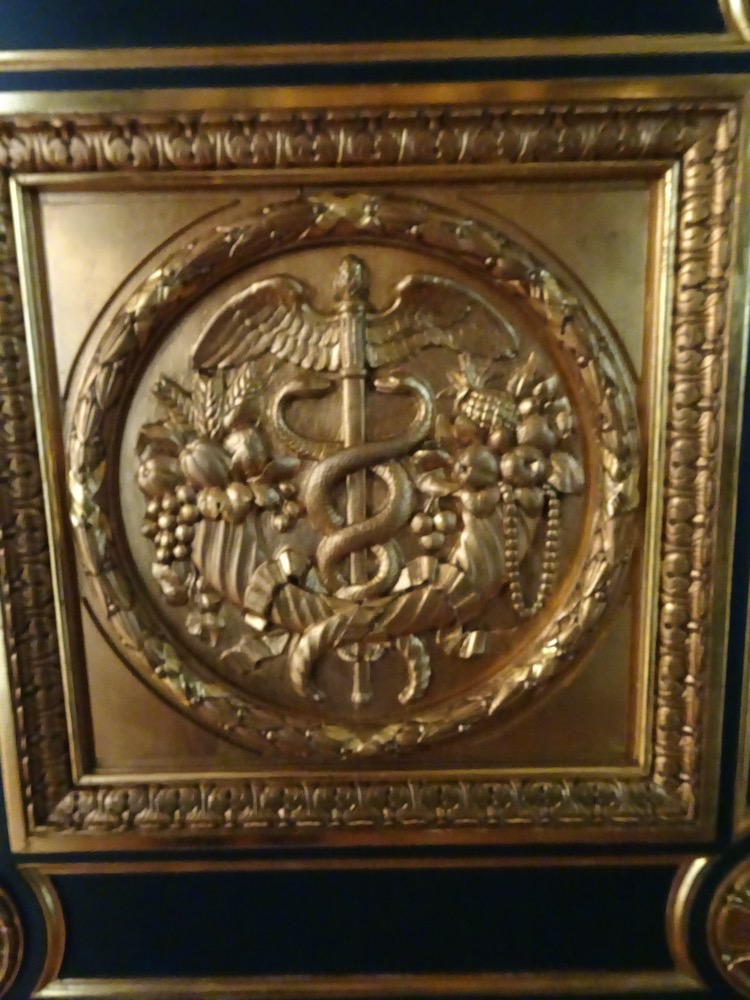 Which leads into King Fredrik VI’s Room that contained some family tree information for the Danish Royal family, and where Mr K learned that all the European monarchy have heavily intermarried through the efforts of the Empress Maria Theresa and the Emperor Franz Joseph in a time honoured tradition that was then carried on by Queen Victoria of England, who also married all her offspring to other European aristocracies.
Which leads into King Fredrik VI’s Room that contained some family tree information for the Danish Royal family, and where Mr K learned that all the European monarchy have heavily intermarried through the efforts of the Empress Maria Theresa and the Emperor Franz Joseph in a time honoured tradition that was then carried on by Queen Victoria of England, who also married all her offspring to other European aristocracies. 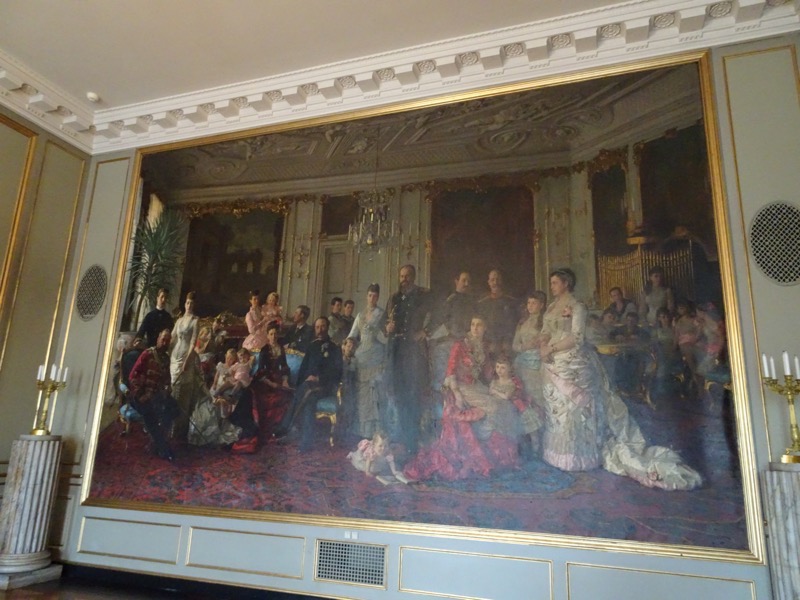 Next, King Christian IX’s Room – gorgeous and resplendent in blue, and with very modern carpets.
Next, King Christian IX’s Room – gorgeous and resplendent in blue, and with very modern carpets.
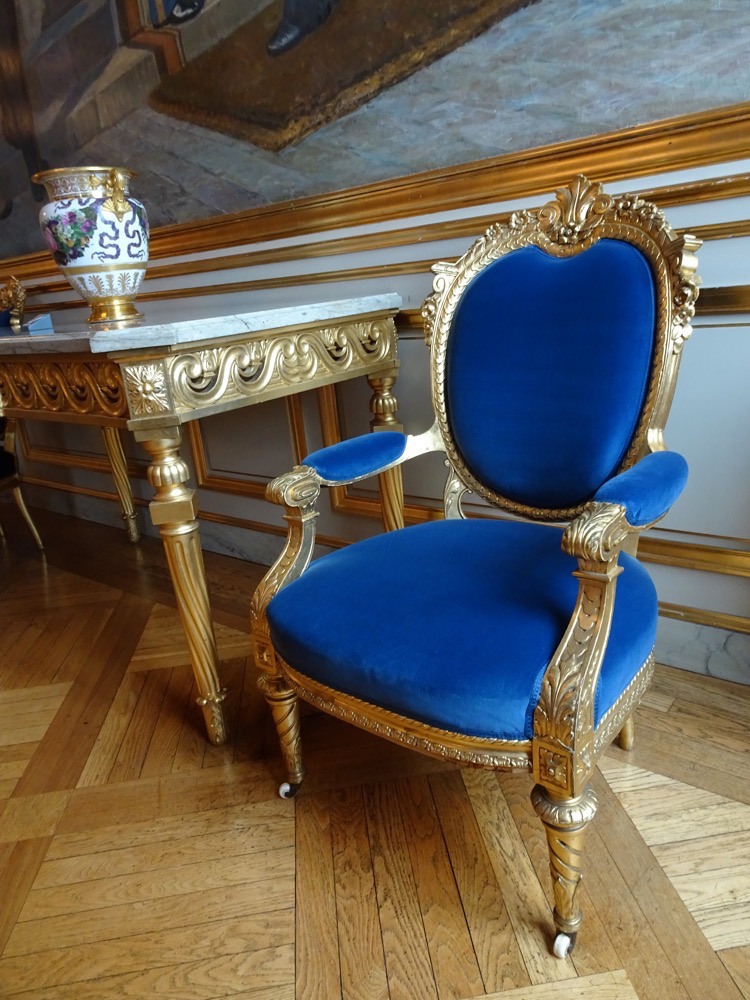
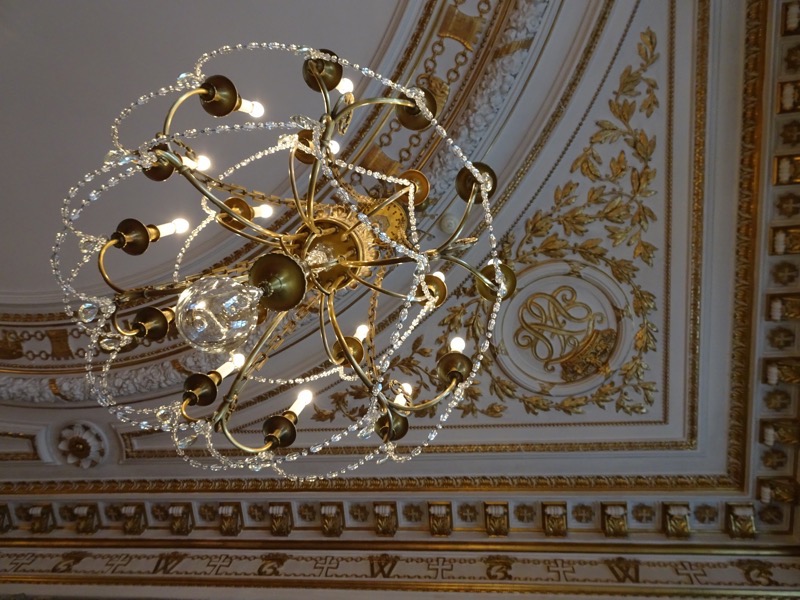
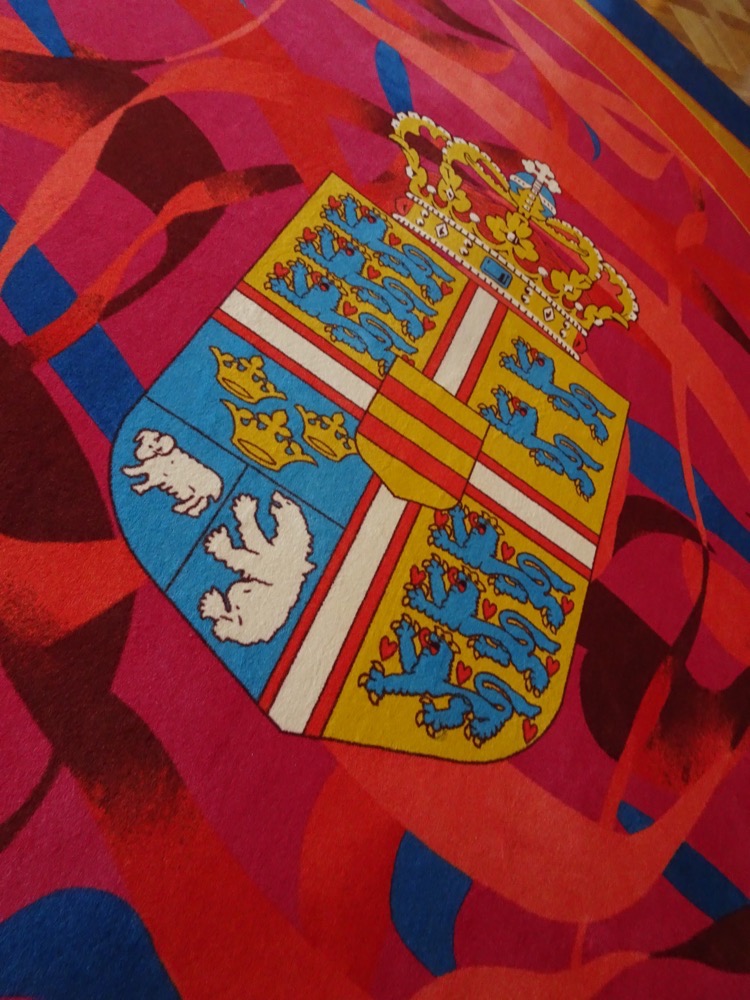 Through which, you gain entrance to the Throne Room, which is very fancy indeed (and no ugly tapestries in sight!).
Through which, you gain entrance to the Throne Room, which is very fancy indeed (and no ugly tapestries in sight!).
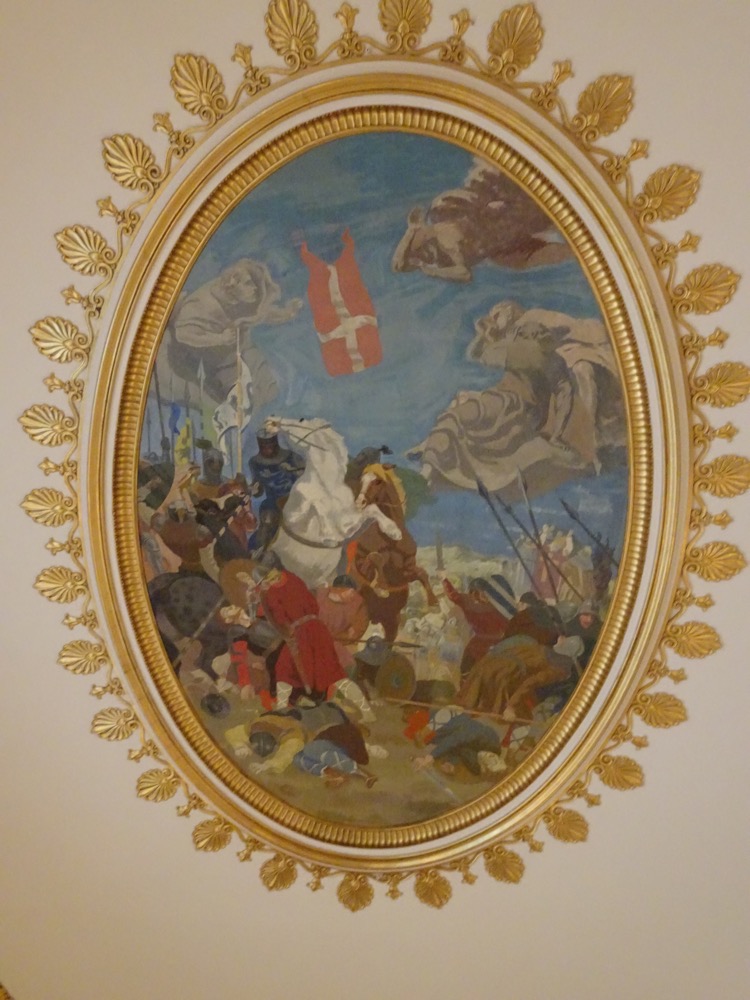
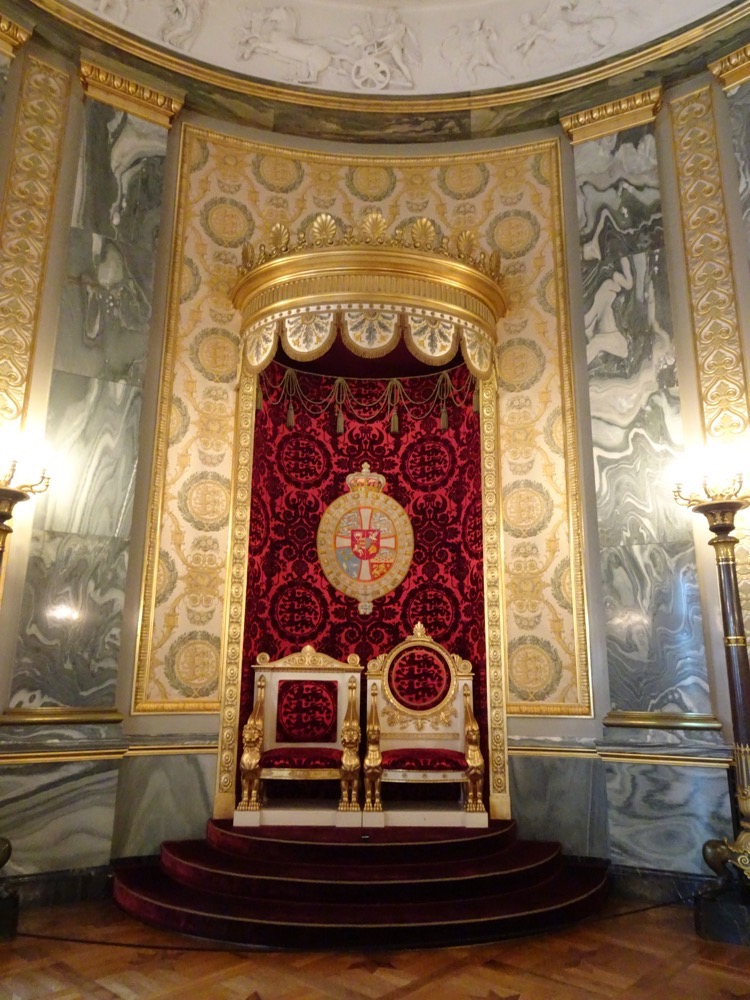
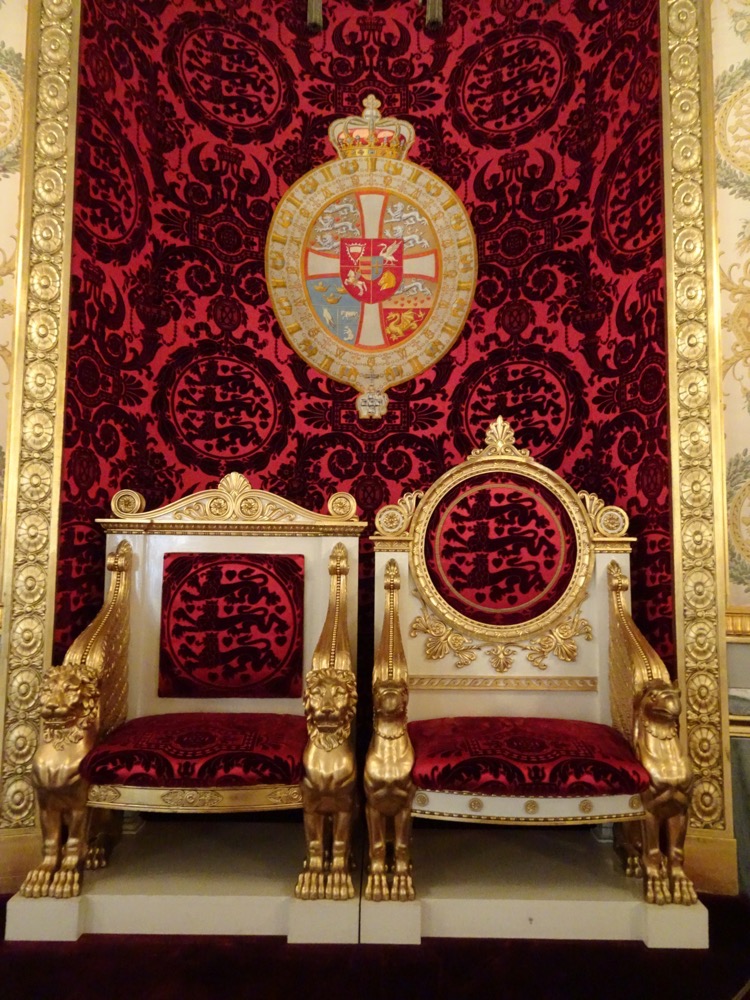
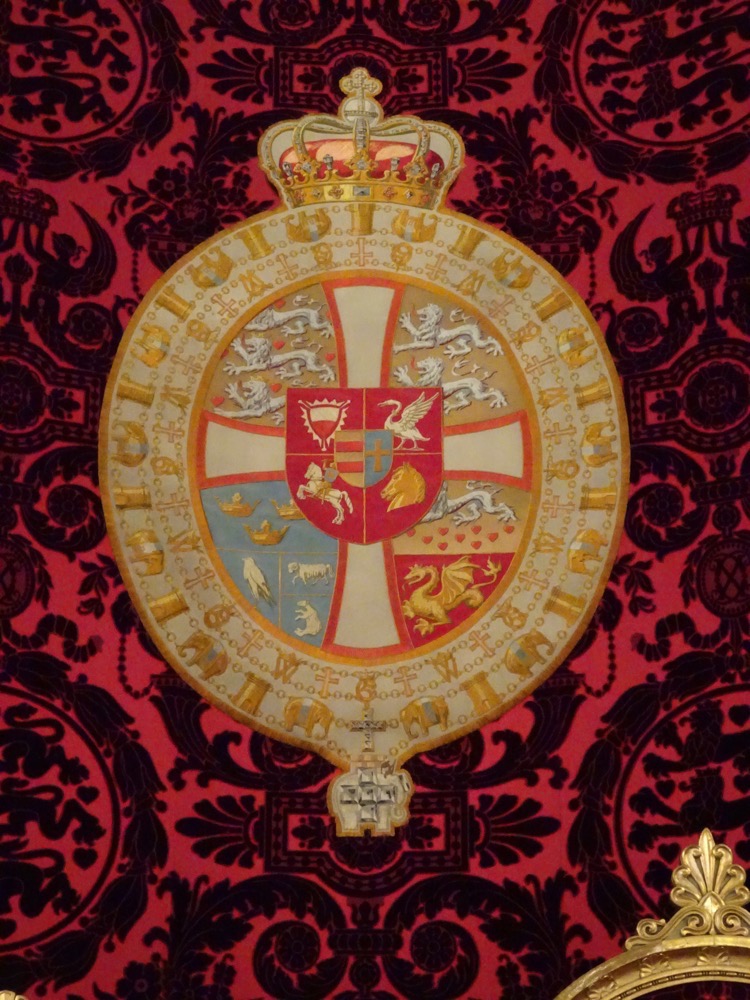 Around the corner from the Throne Room is The Tower Room. I walked in here and was met with a beautiful room containing another series of tapestries that were this time created in the 1920s. Again, a swing and a miss here – they look like they are trying to be 15th-16th century tapestries of the Gobelins or Flemish workshops or something, but they look just… nope.
Around the corner from the Throne Room is The Tower Room. I walked in here and was met with a beautiful room containing another series of tapestries that were this time created in the 1920s. Again, a swing and a miss here – they look like they are trying to be 15th-16th century tapestries of the Gobelins or Flemish workshops or something, but they look just… nope.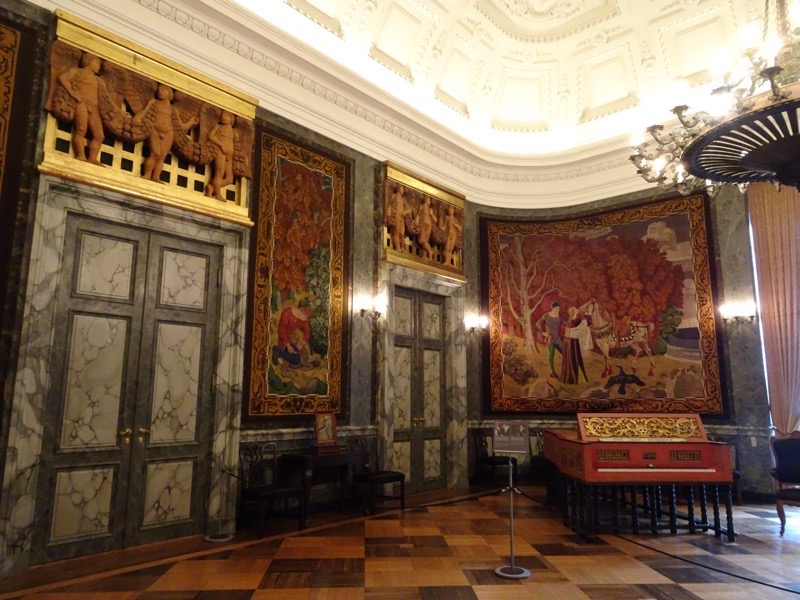

 So much work!
So much work!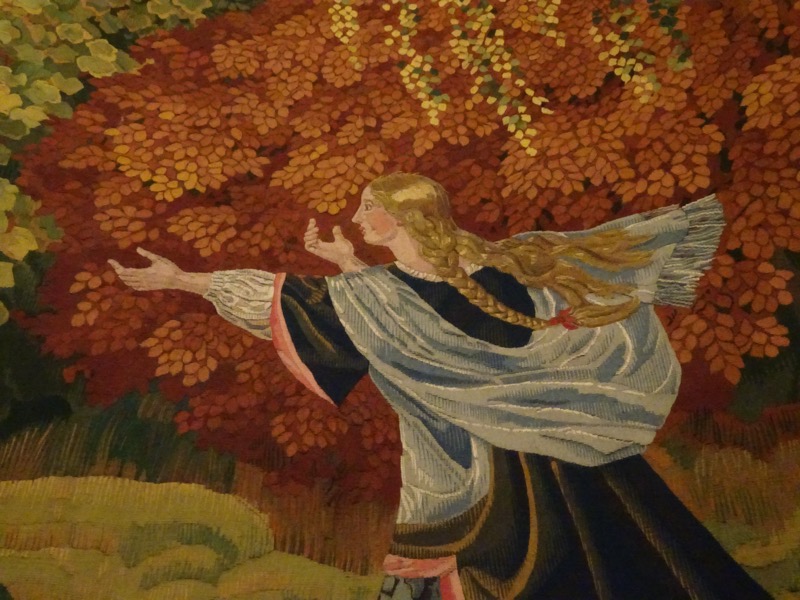
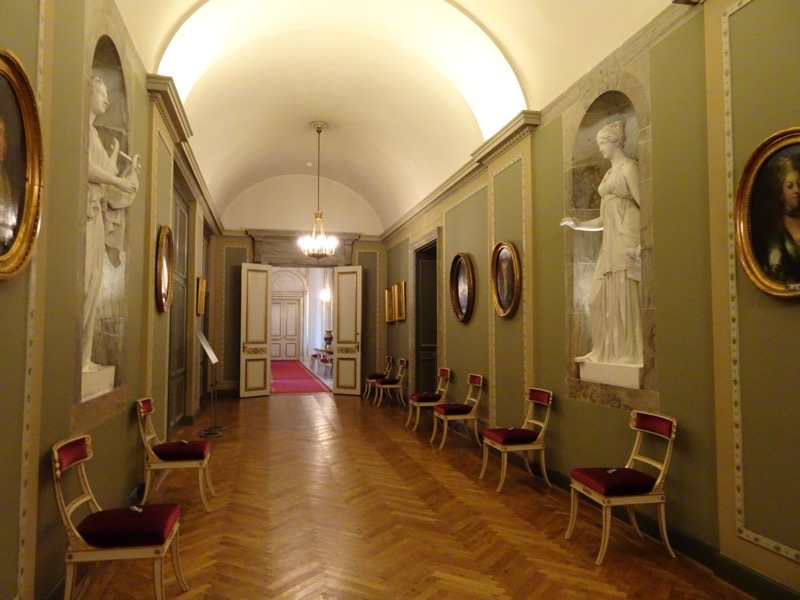 The King’s Staircase at the opposite end of the wing…
The King’s Staircase at the opposite end of the wing…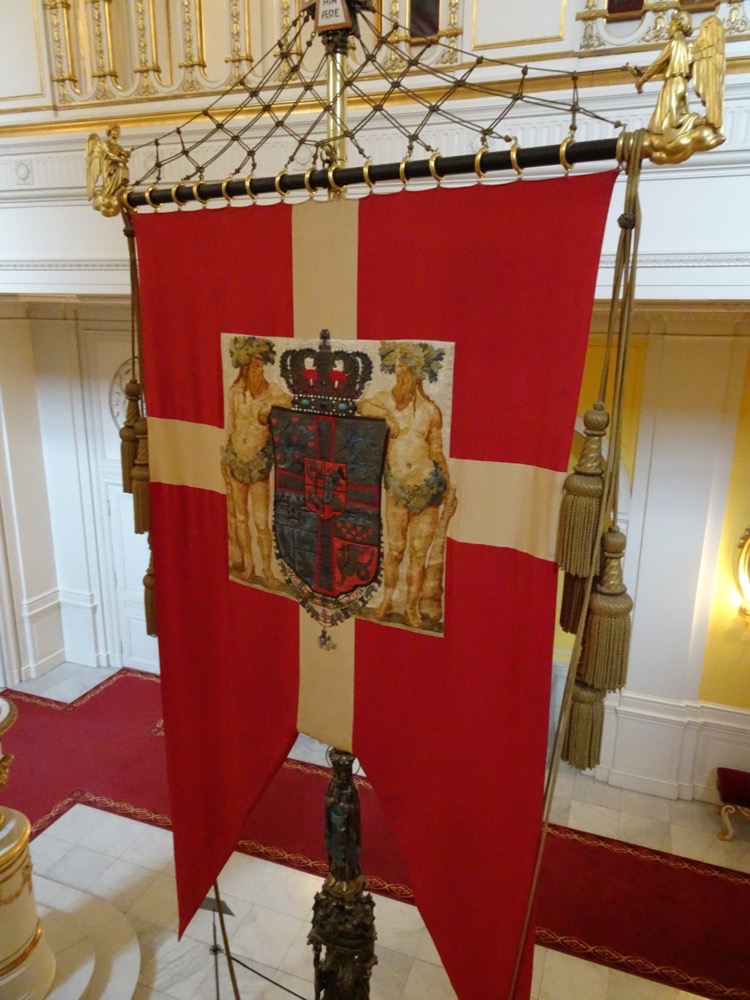
 The next area we decided to explore was the Royal Stables. On the way there, Mr K says to me, “I can’t wait to see the horses.” My jaded I’ve-seen-so-many-castles-reply was, “There will be carriages and horse stuff, but no actual horses… If there are horses in here, I’ll eat my hat!”
The next area we decided to explore was the Royal Stables. On the way there, Mr K says to me, “I can’t wait to see the horses.” My jaded I’ve-seen-so-many-castles-reply was, “There will be carriages and horse stuff, but no actual horses… If there are horses in here, I’ll eat my hat!”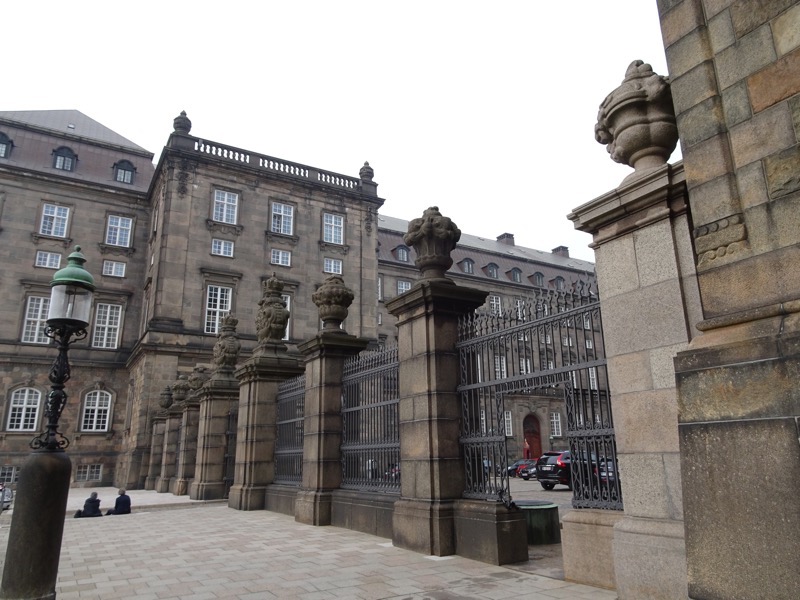 We walked a little further, and I started to think, “Uh oh, I can smell horse shit, there might actually be horses in the Royal Stables! That’ll be a first.” Right at that moment, Mr K asks me what sort of sauce goes nicely with ‘hat’. Cheeky bugger.
We walked a little further, and I started to think, “Uh oh, I can smell horse shit, there might actually be horses in the Royal Stables! That’ll be a first.” Right at that moment, Mr K asks me what sort of sauce goes nicely with ‘hat’. Cheeky bugger. As I expected, lots of horsey stuff, tack, saddles, and royal regalia…
As I expected, lots of horsey stuff, tack, saddles, and royal regalia…
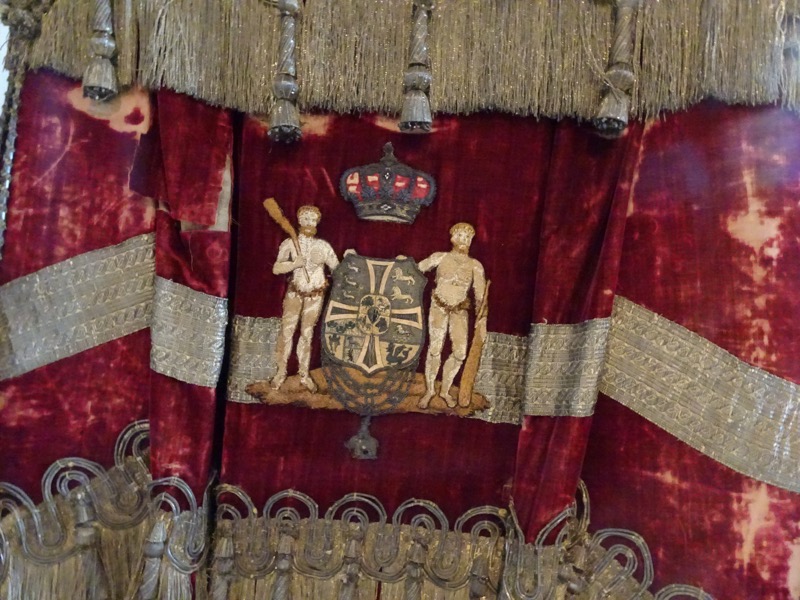
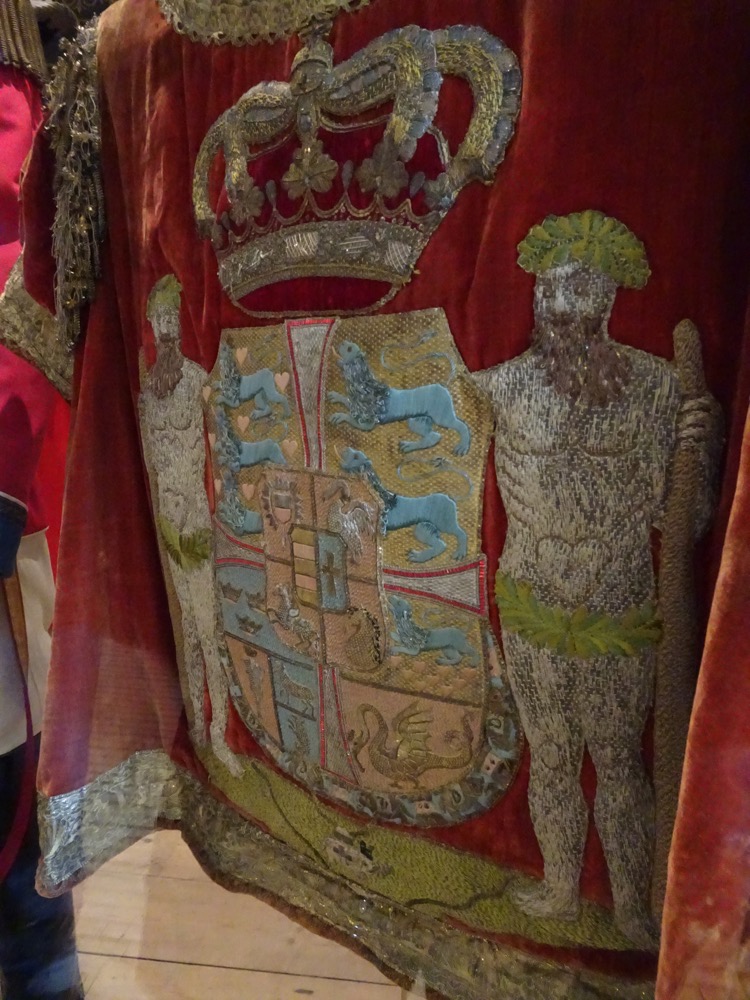
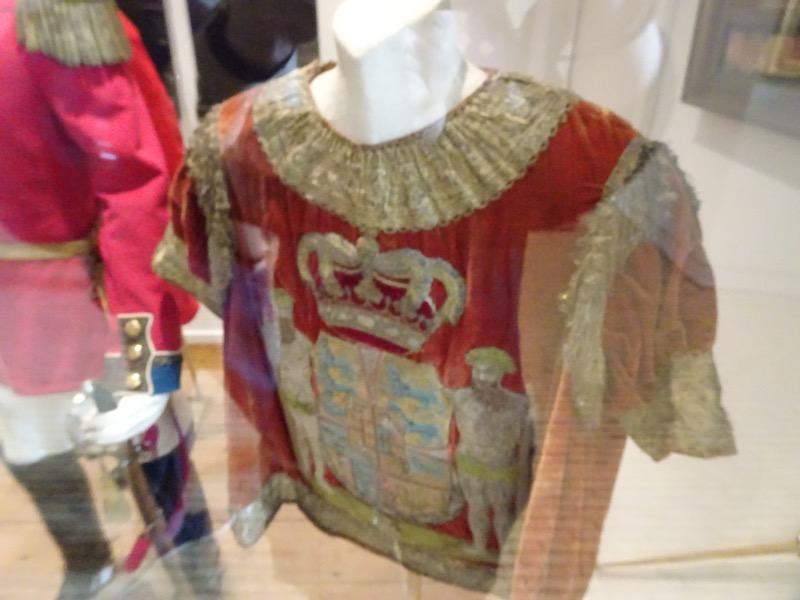
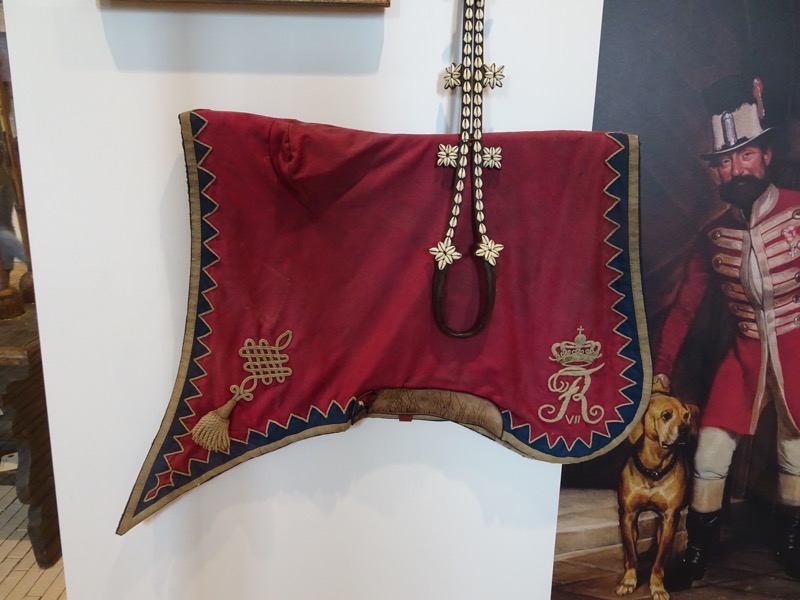 And through to the actual stables, where the smells were coming from. These are obviously working stables, but there were no horses here at present.
And through to the actual stables, where the smells were coming from. These are obviously working stables, but there were no horses here at present.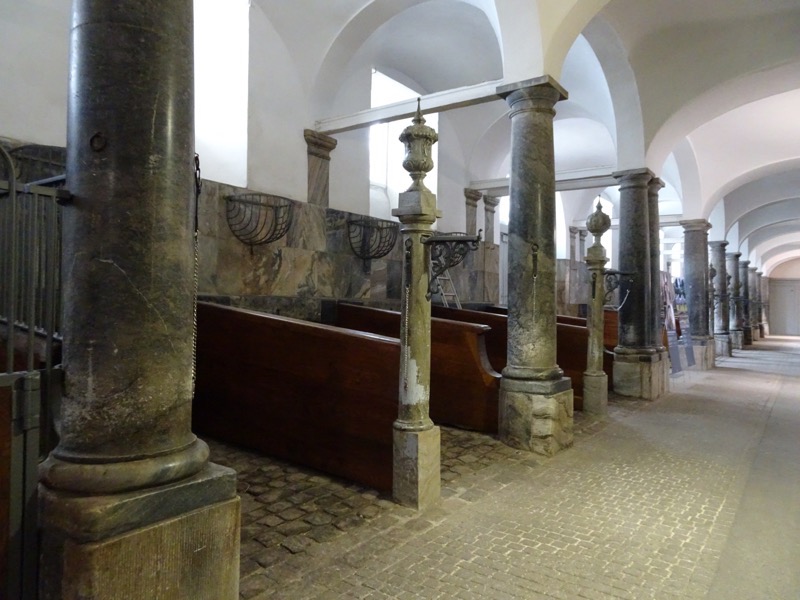 Lots of different Royal Carriages though that have seen all sorts of special royal occasions – coronations, weddings, baptisms and the like.
Lots of different Royal Carriages though that have seen all sorts of special royal occasions – coronations, weddings, baptisms and the like.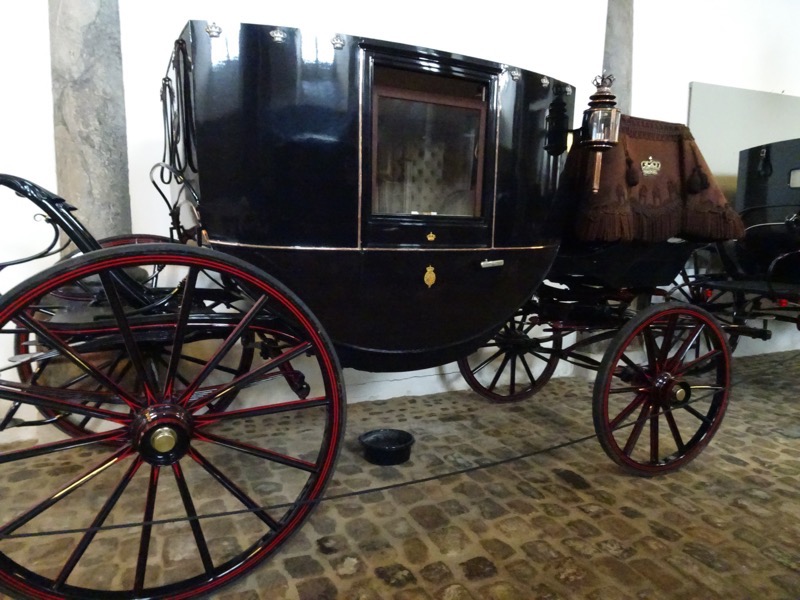
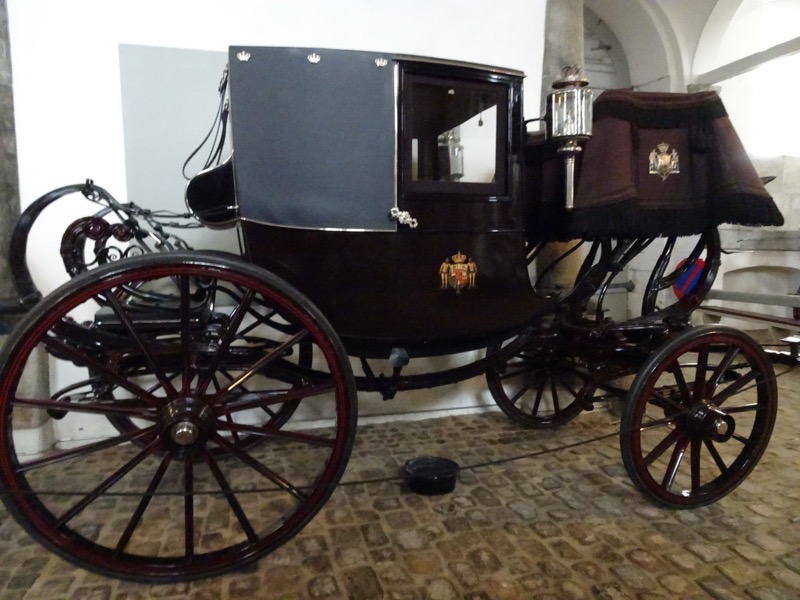


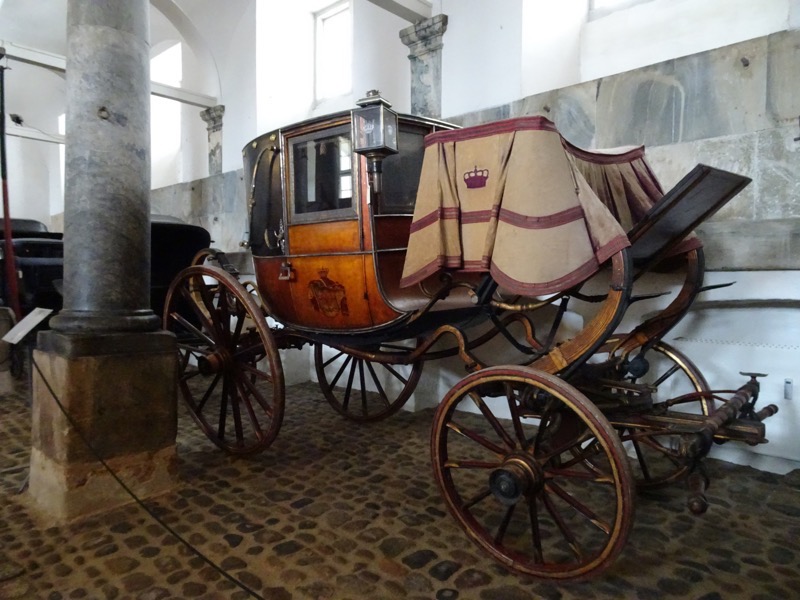
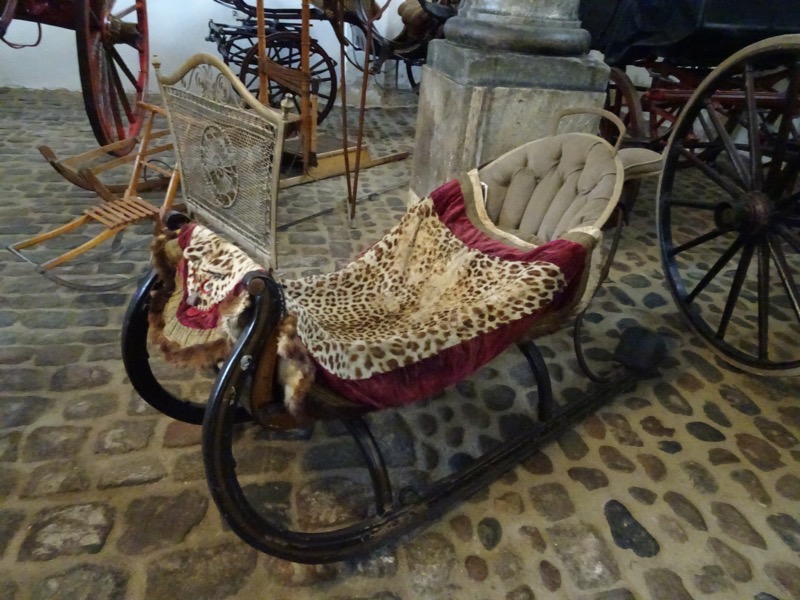
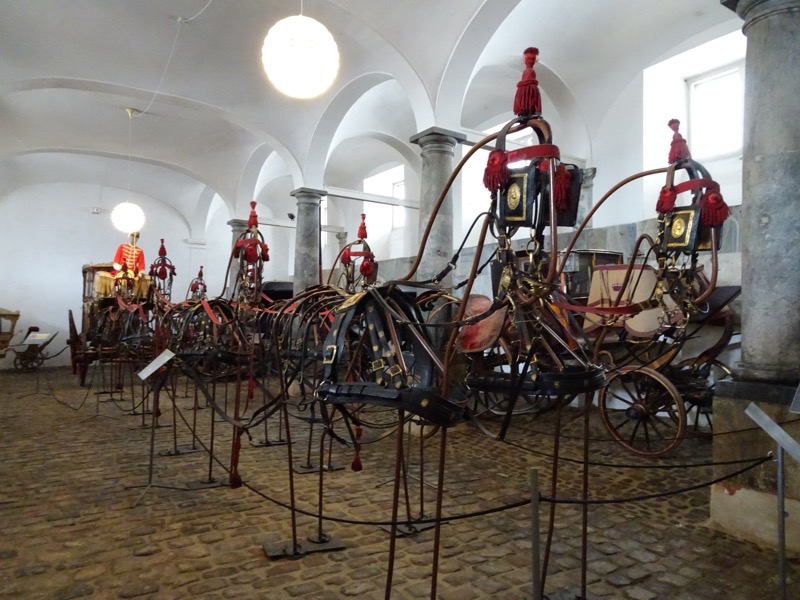
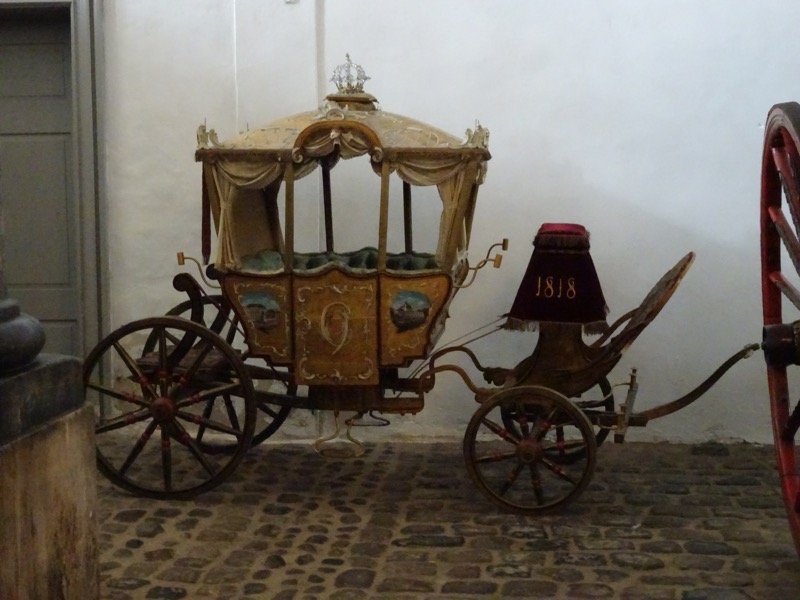 Another part of the palace that is open to the public is the 12th ruins of the original castle that was built on the site called Absalon’s Castle. According to the Bishop Absalon of Roskilde, a Danish chronicler, a castle was built here in 1167, and it comprised of a stone wall, that encircled an enclosed courtyard and several buildings, including the bishop’s palace, a chapel, and several minor buildings.
Another part of the palace that is open to the public is the 12th ruins of the original castle that was built on the site called Absalon’s Castle. According to the Bishop Absalon of Roskilde, a Danish chronicler, a castle was built here in 1167, and it comprised of a stone wall, that encircled an enclosed courtyard and several buildings, including the bishop’s palace, a chapel, and several minor buildings.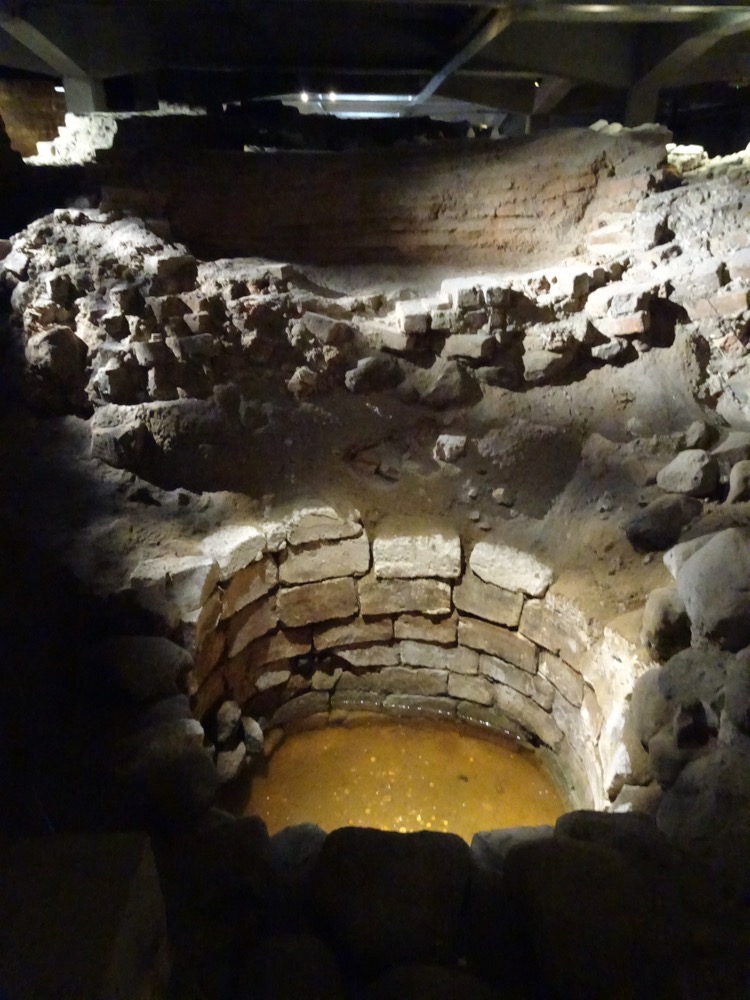

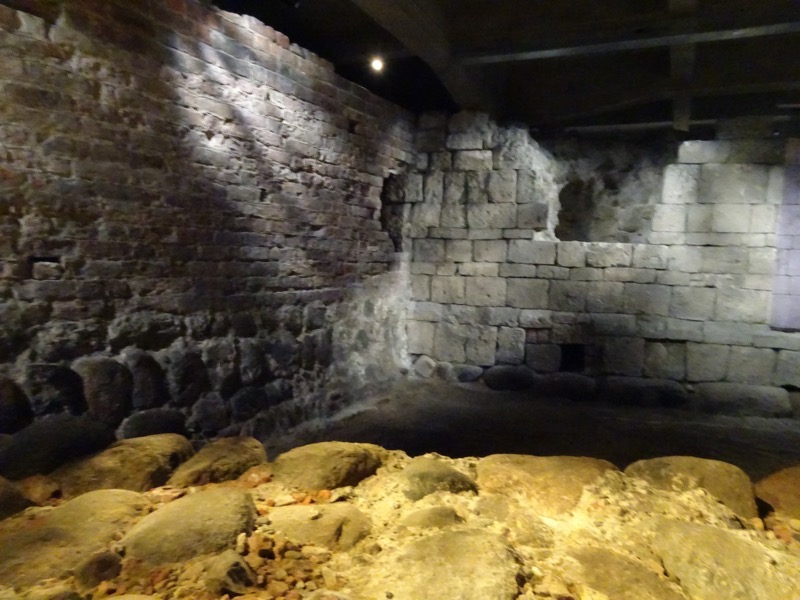
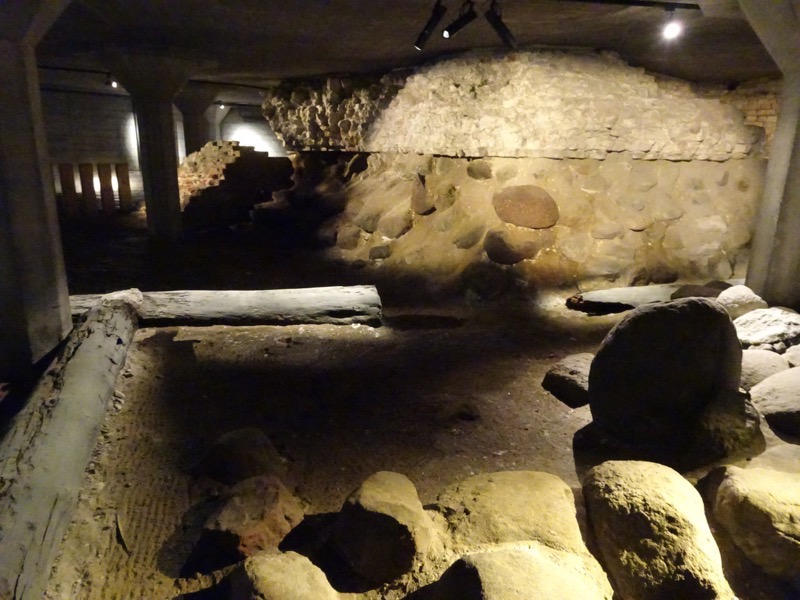 Another area of the Palace that is open for public entrance are the Royal Kitchens… not sure what to say about the kitchens really, they are there. They look like period kitchens. They can serve 400 odd people in the Great Hall and that’s about it really.
Another area of the Palace that is open for public entrance are the Royal Kitchens… not sure what to say about the kitchens really, they are there. They look like period kitchens. They can serve 400 odd people in the Great Hall and that’s about it really. 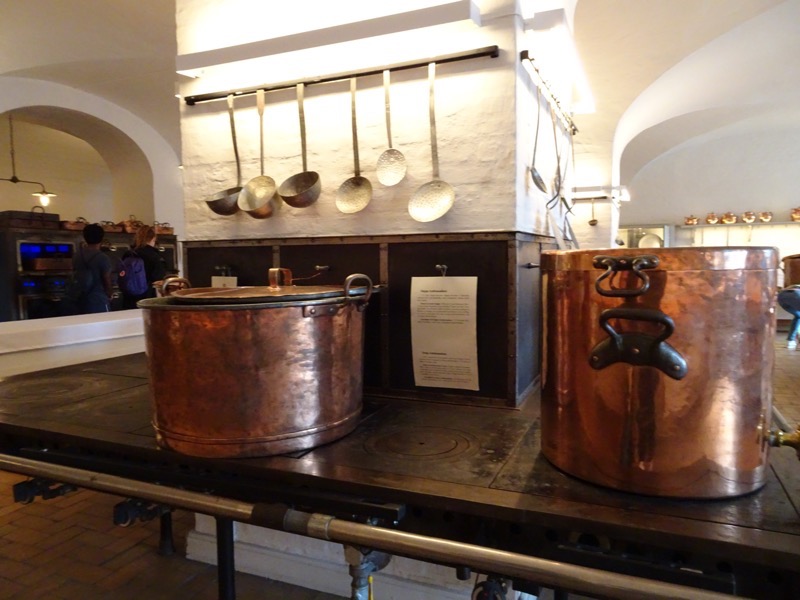
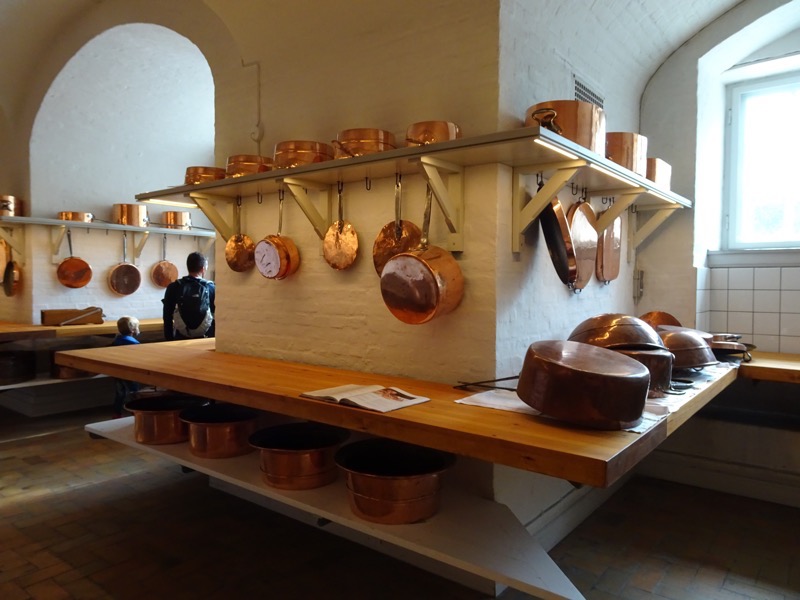 Lots of shiny copper pots.
Lots of shiny copper pots.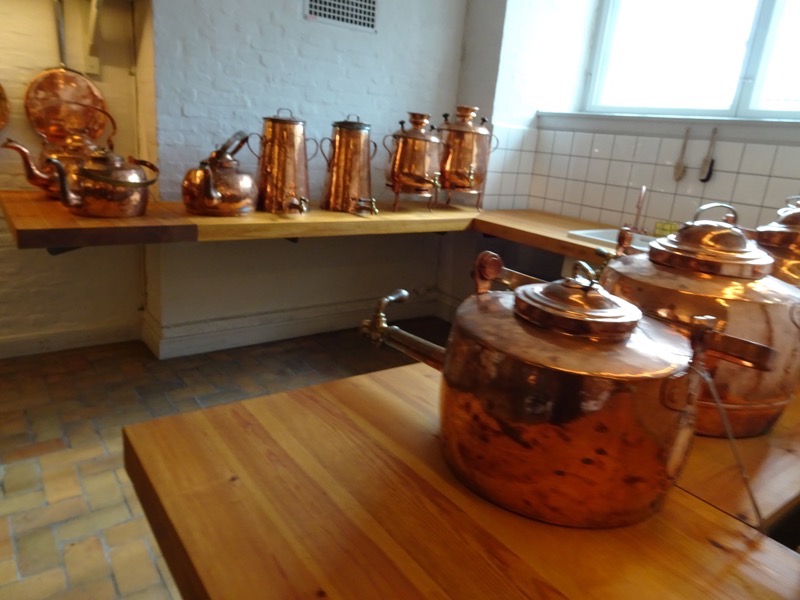

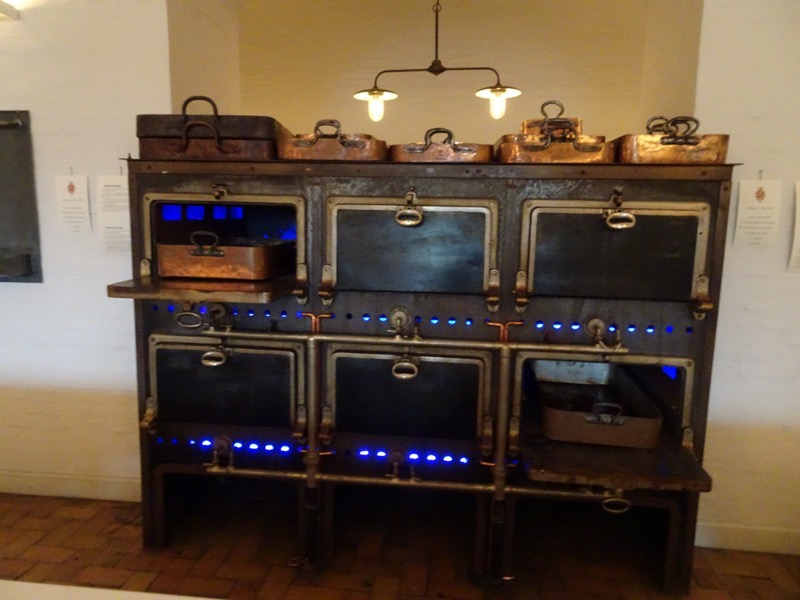
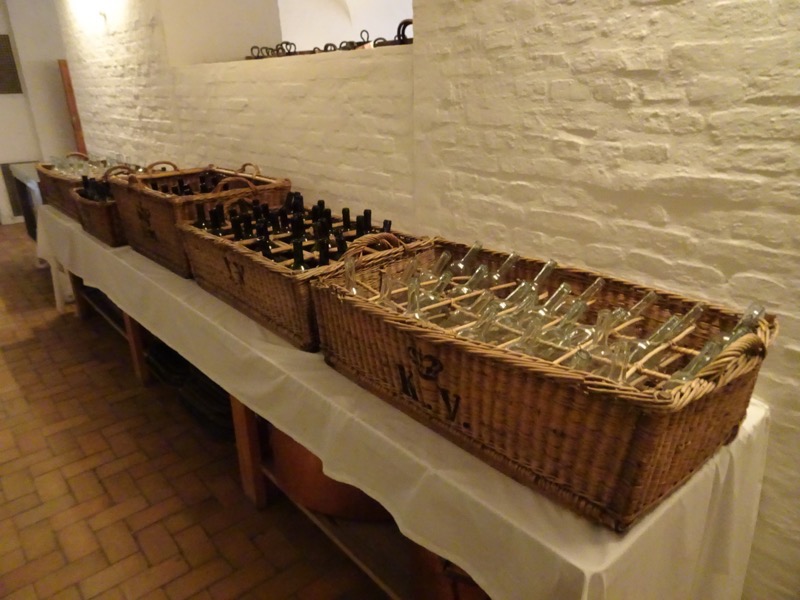
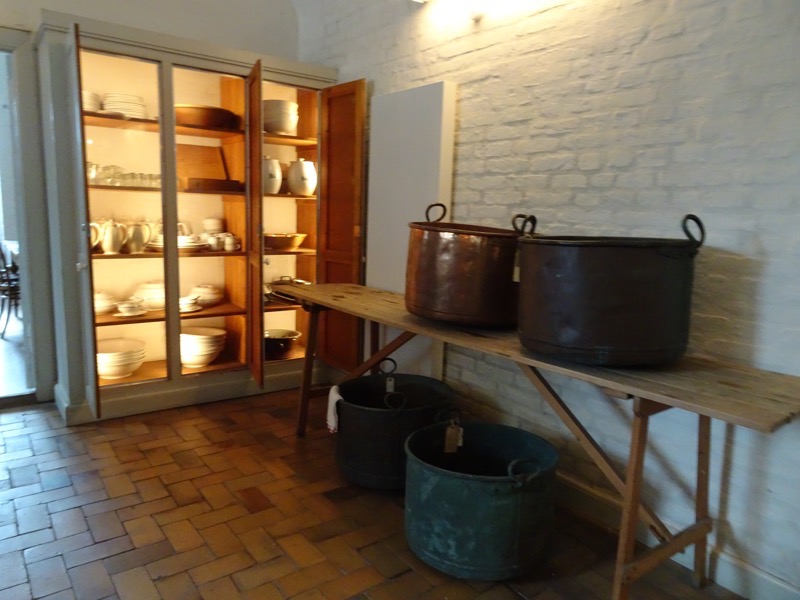
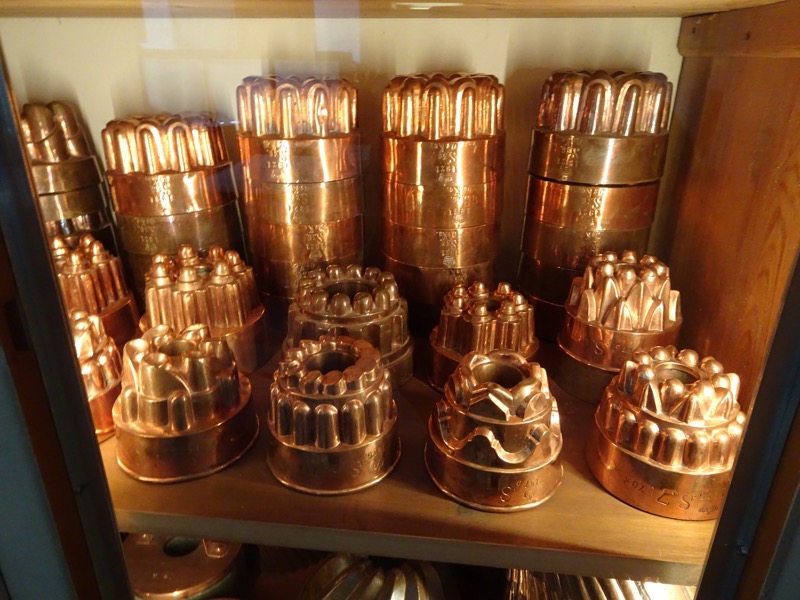
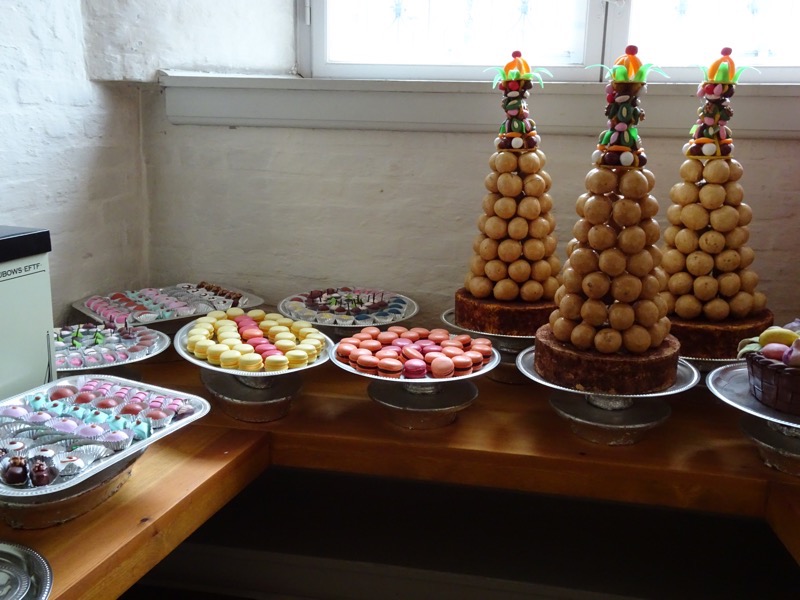
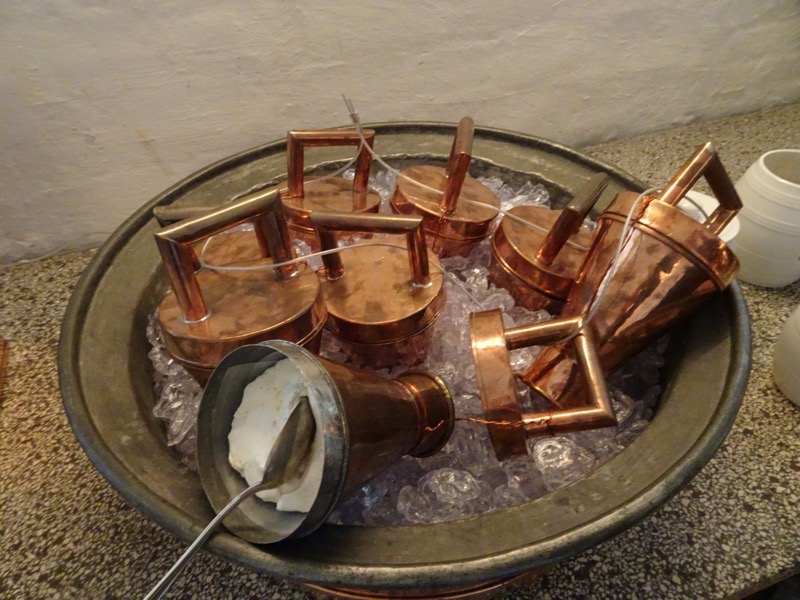
 We walked back to the hotel via the canals that we toured yesterday, and noted that in the overcast and occasionally damp weather, there was a shocking lack of tourists in canal boats compared to yesterday! Seems the bad weather is keeping all the tourists indoors today.
We walked back to the hotel via the canals that we toured yesterday, and noted that in the overcast and occasionally damp weather, there was a shocking lack of tourists in canal boats compared to yesterday! Seems the bad weather is keeping all the tourists indoors today.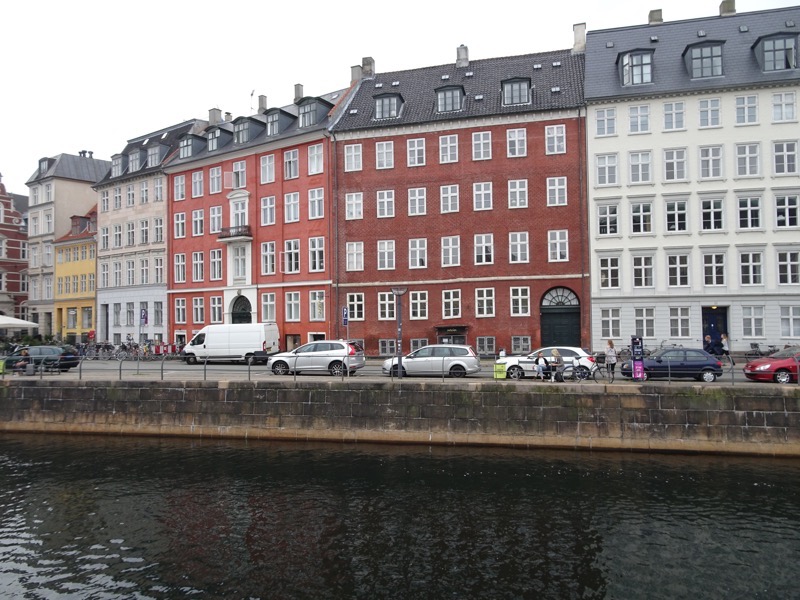
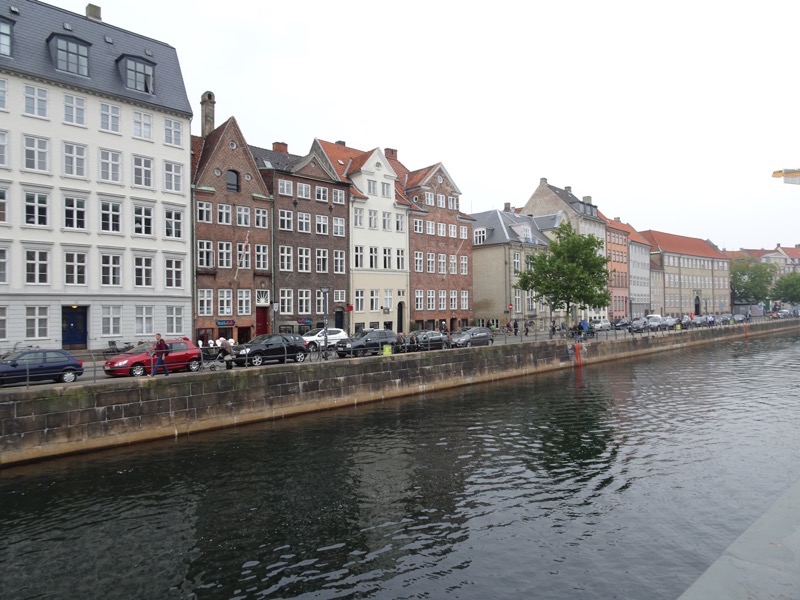
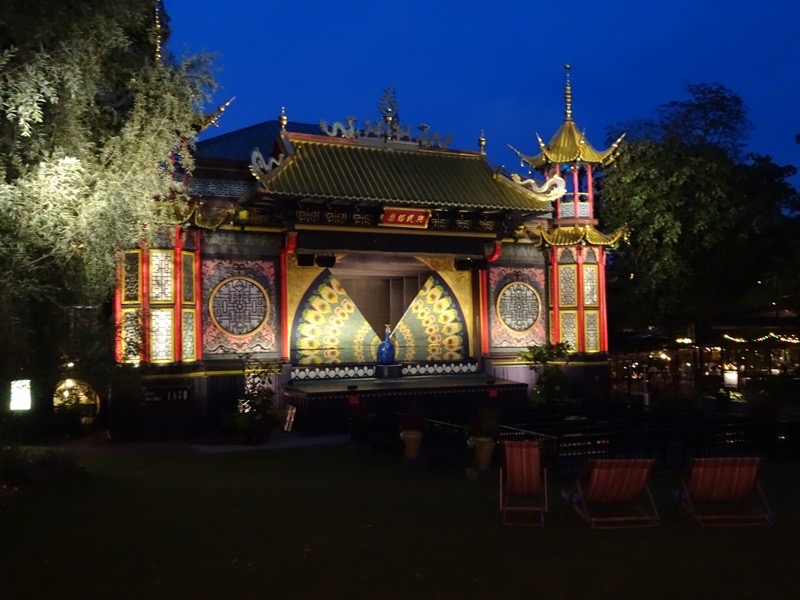 Tivoli’s Moorish Palace.
Tivoli’s Moorish Palace.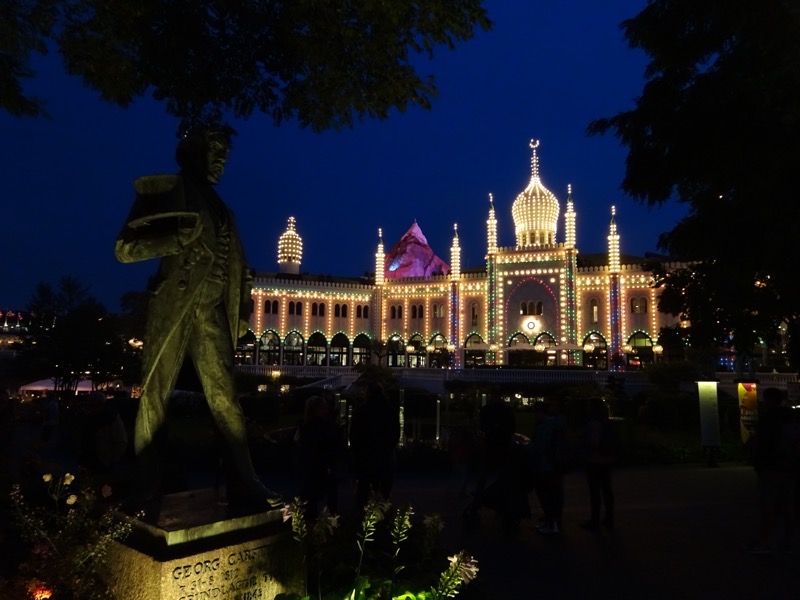
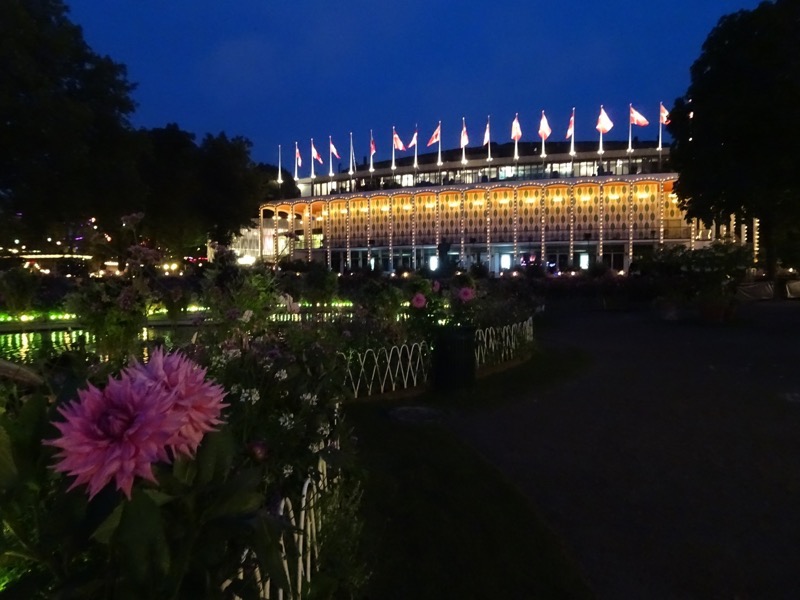 Sideshow alley…
Sideshow alley…
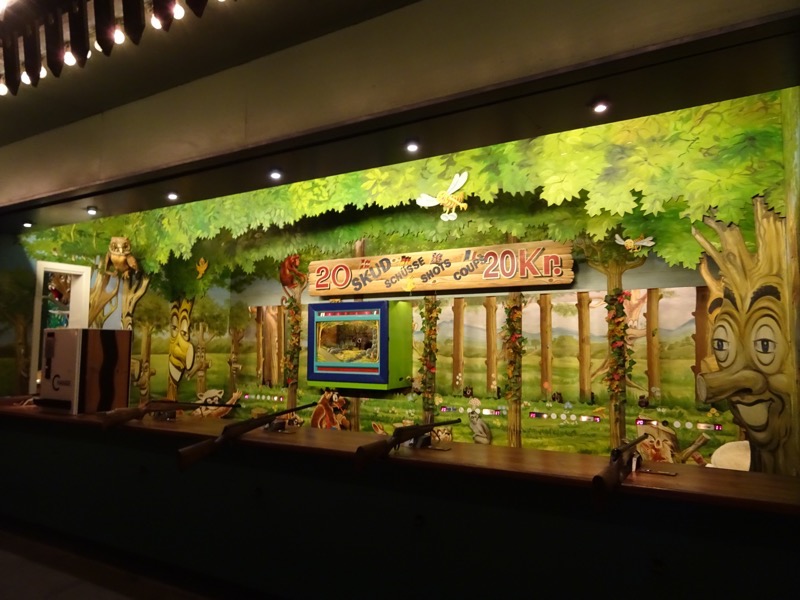
 A statuette with Swarovski accents that I nearly brought home for my sister… it’s fancier than a black velvet Elvis painting!
A statuette with Swarovski accents that I nearly brought home for my sister… it’s fancier than a black velvet Elvis painting!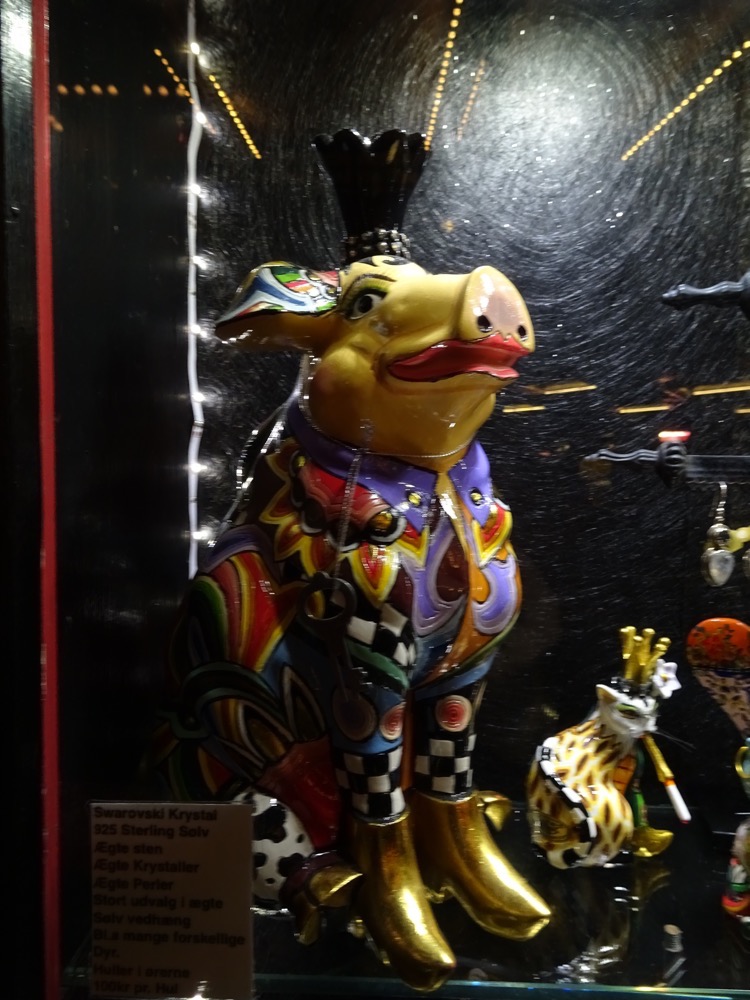
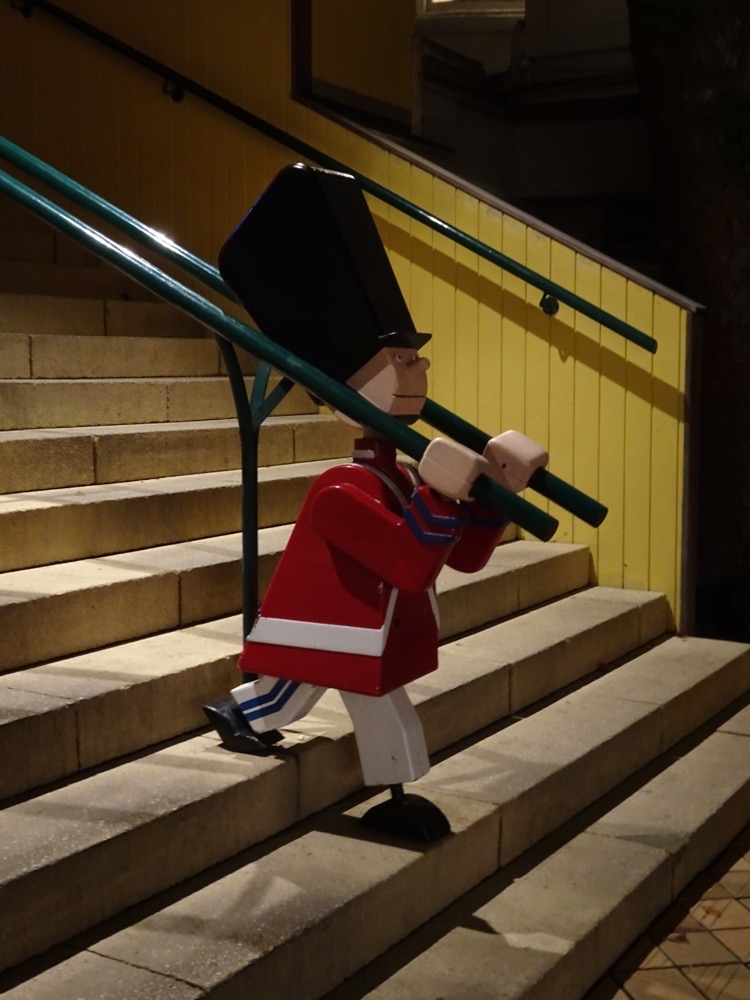 The park is famous for its old wooden roller coster, the Rutschenbanen, or the Bjergbanen (the Mountain Coaster). It was built in 1914 and is one of the world’s oldest operating wooden roller coasters. Mr K wanted to take a ride on it so we bought tickets. I did suggest we go separately so that our son wouldn’t end up completely orphaned if something happened to the rickety old thing!
The park is famous for its old wooden roller coster, the Rutschenbanen, or the Bjergbanen (the Mountain Coaster). It was built in 1914 and is one of the world’s oldest operating wooden roller coasters. Mr K wanted to take a ride on it so we bought tickets. I did suggest we go separately so that our son wouldn’t end up completely orphaned if something happened to the rickety old thing! 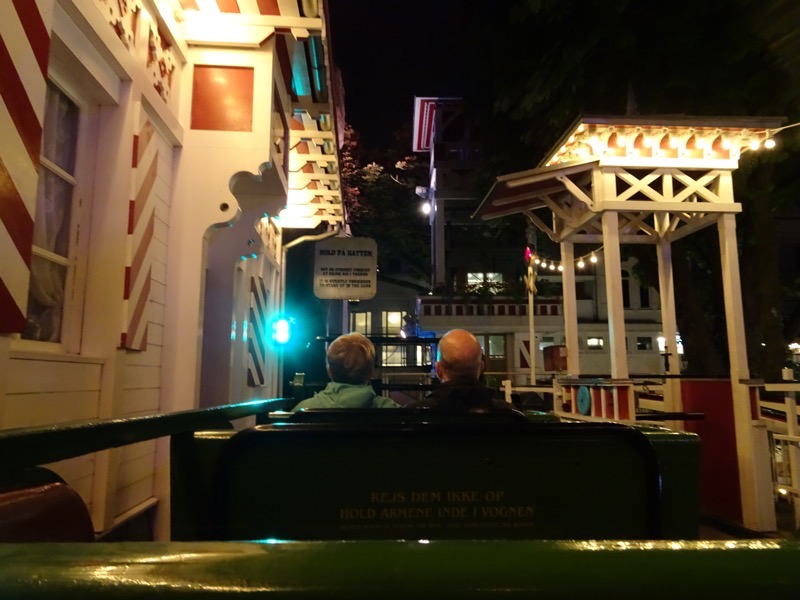
 It reaches a speed of 50km/h on a 720m track and goes to a height of 13 whole meters! The ride runs around inside a small man made mountain and is almost completely in the dark, which was interesting… bit jerky as you would expect, and the seats could use a little padding for when you hit the bottom of those dips, but there was a little guy sitting behind us who was operating a brake to make sure it doesn’t go too far down hill. . Themed around a mountain, train 2×12.An operator controls the ride by braking down the hills so it won’t gain too much speed.
It reaches a speed of 50km/h on a 720m track and goes to a height of 13 whole meters! The ride runs around inside a small man made mountain and is almost completely in the dark, which was interesting… bit jerky as you would expect, and the seats could use a little padding for when you hit the bottom of those dips, but there was a little guy sitting behind us who was operating a brake to make sure it doesn’t go too far down hill. . Themed around a mountain, train 2×12.An operator controls the ride by braking down the hills so it won’t gain too much speed.